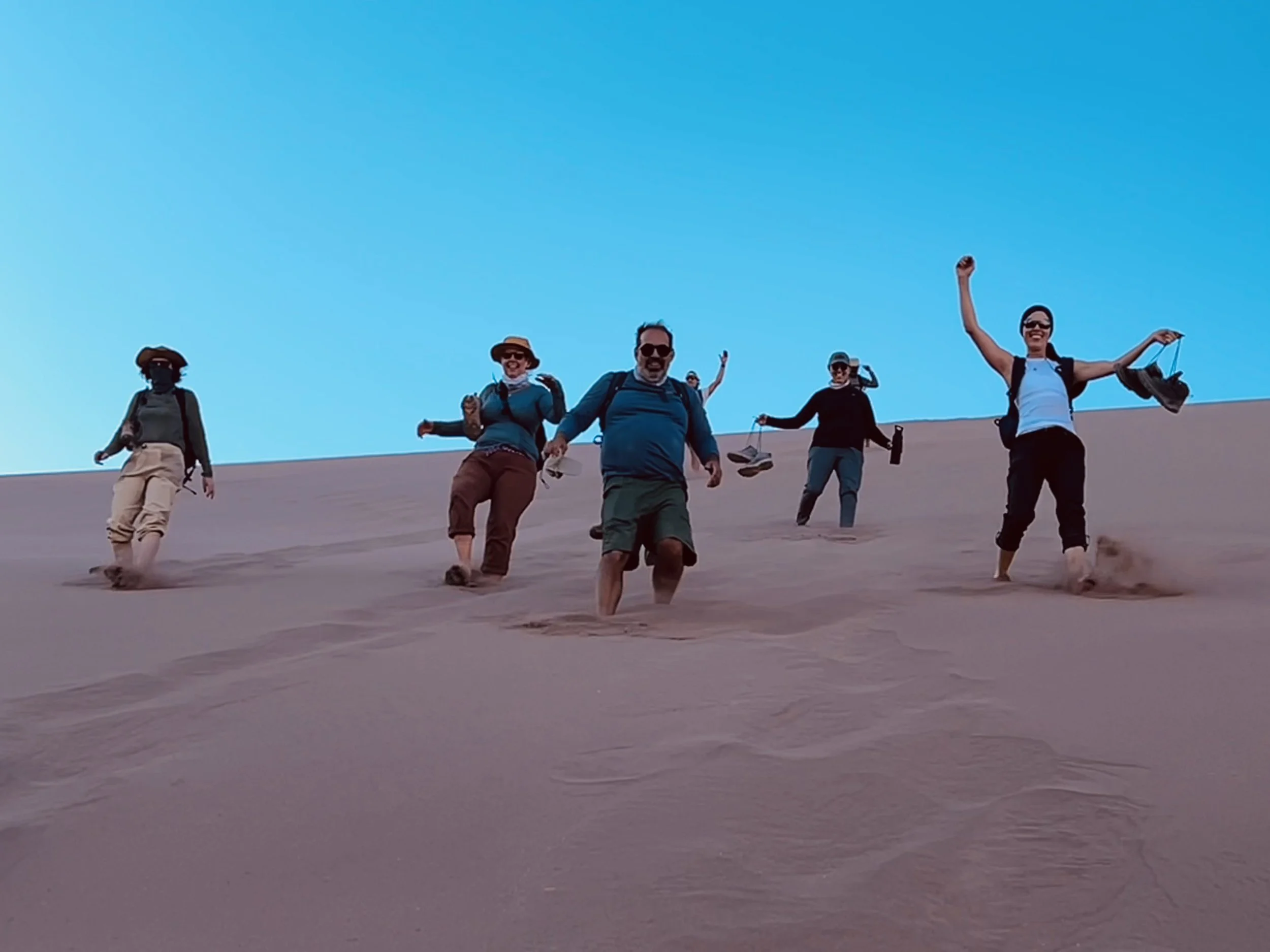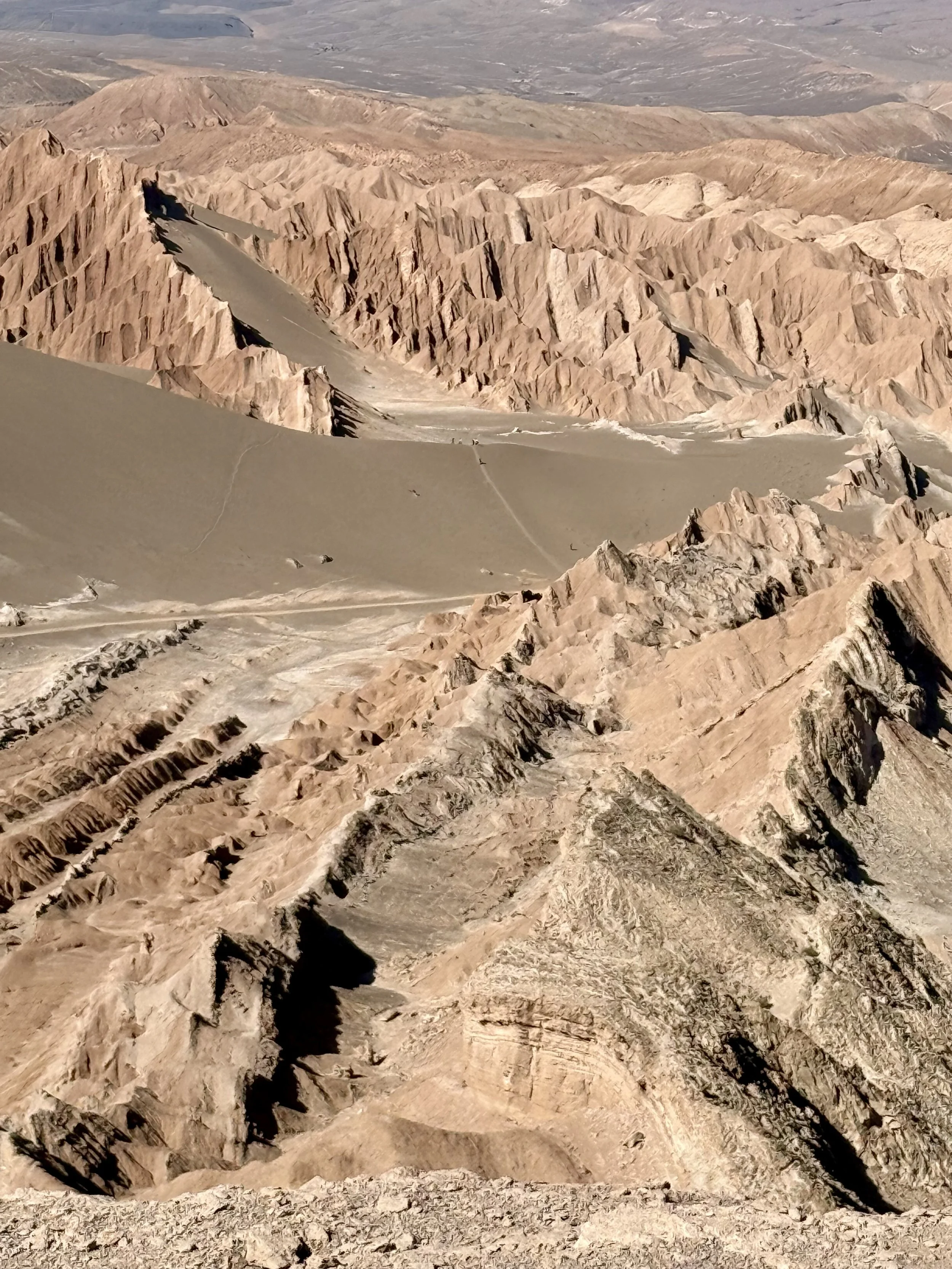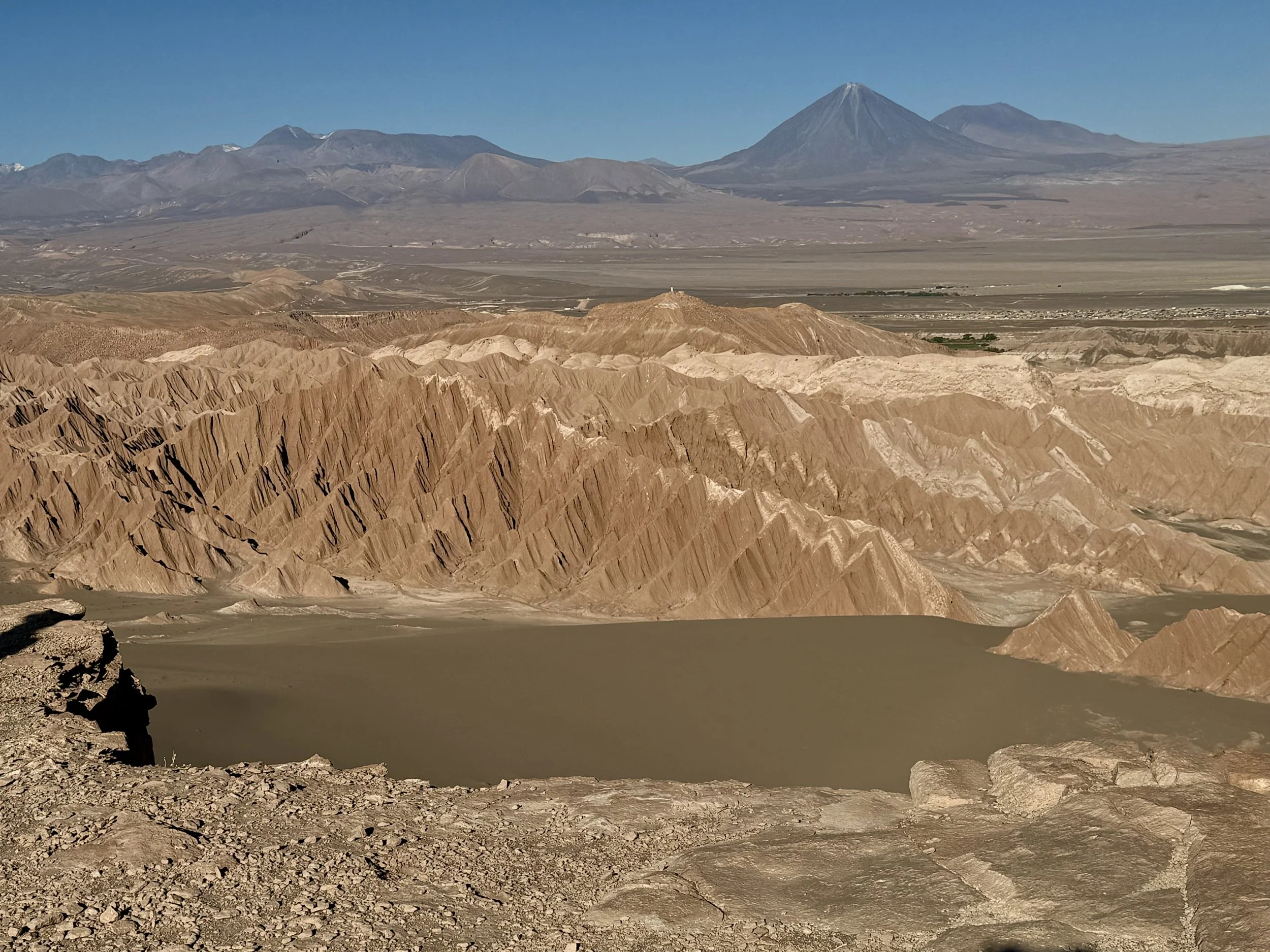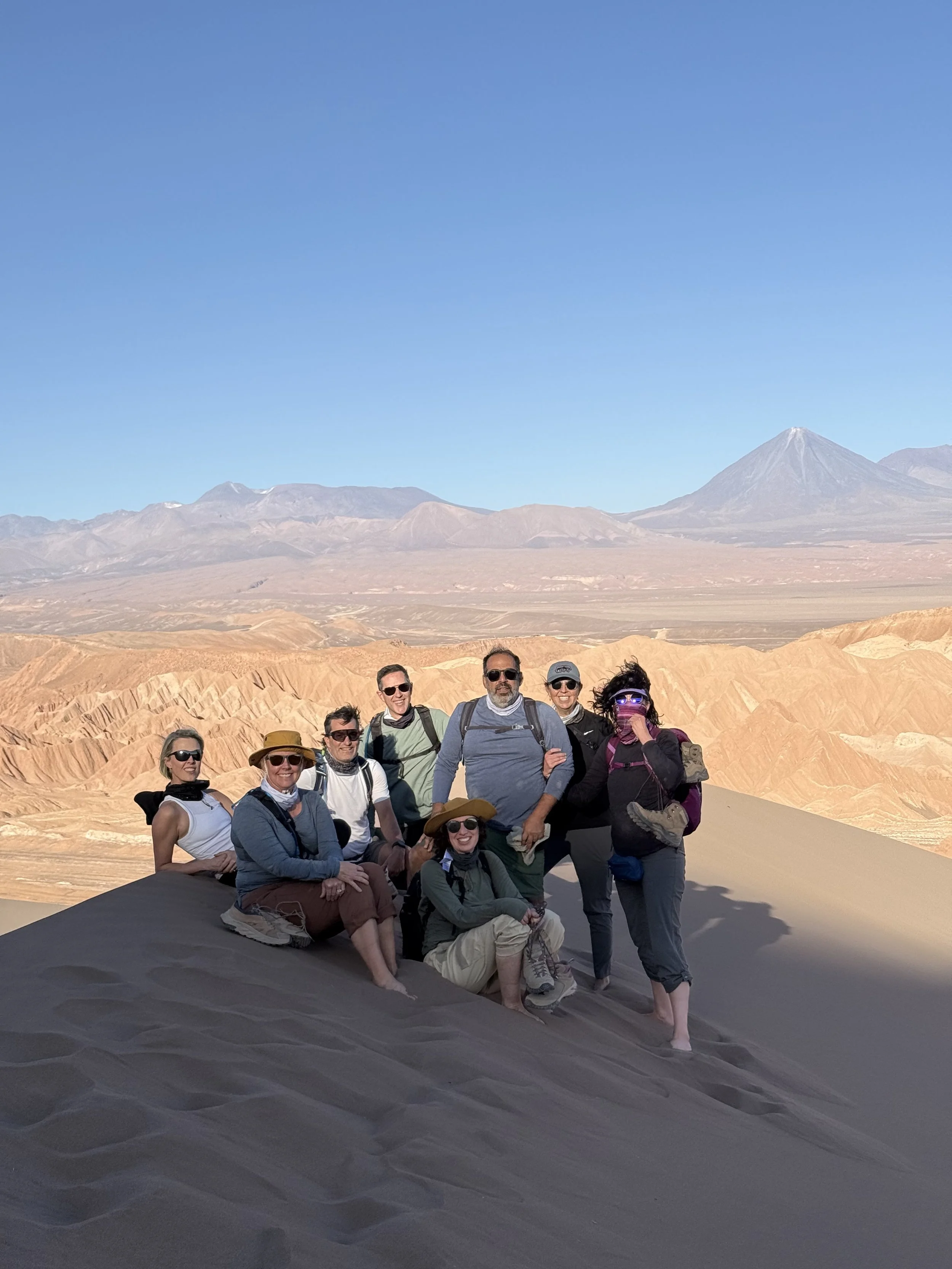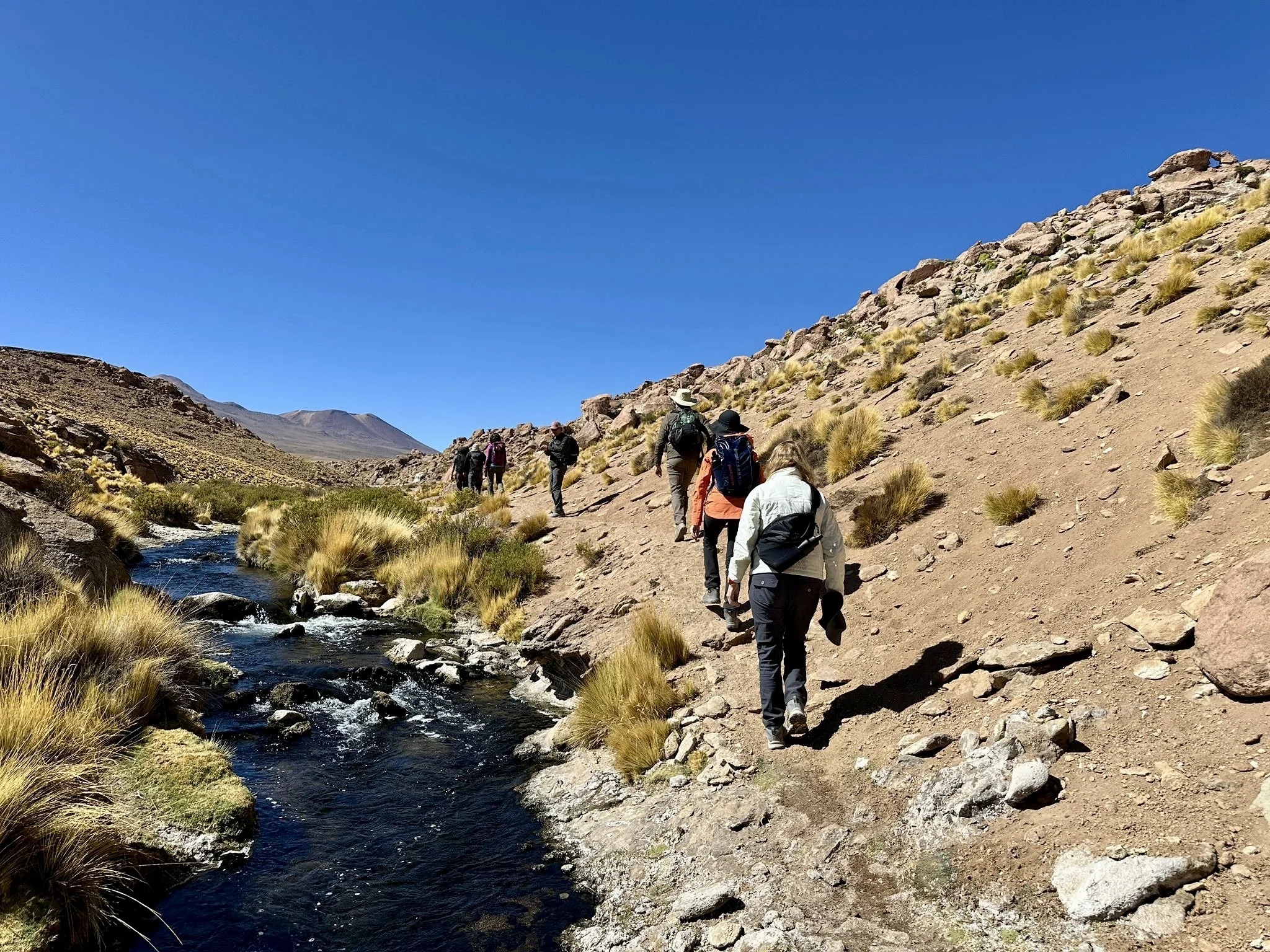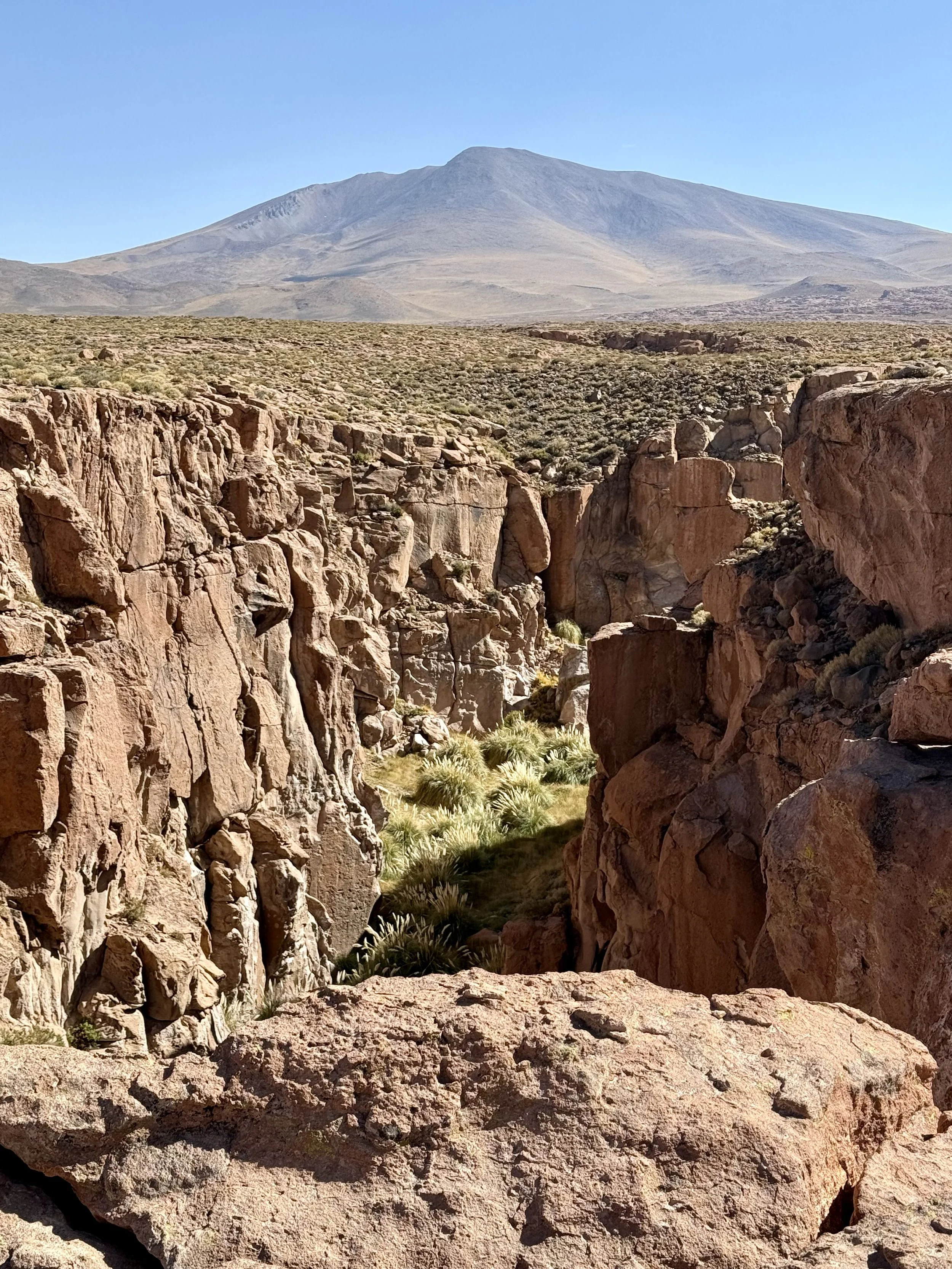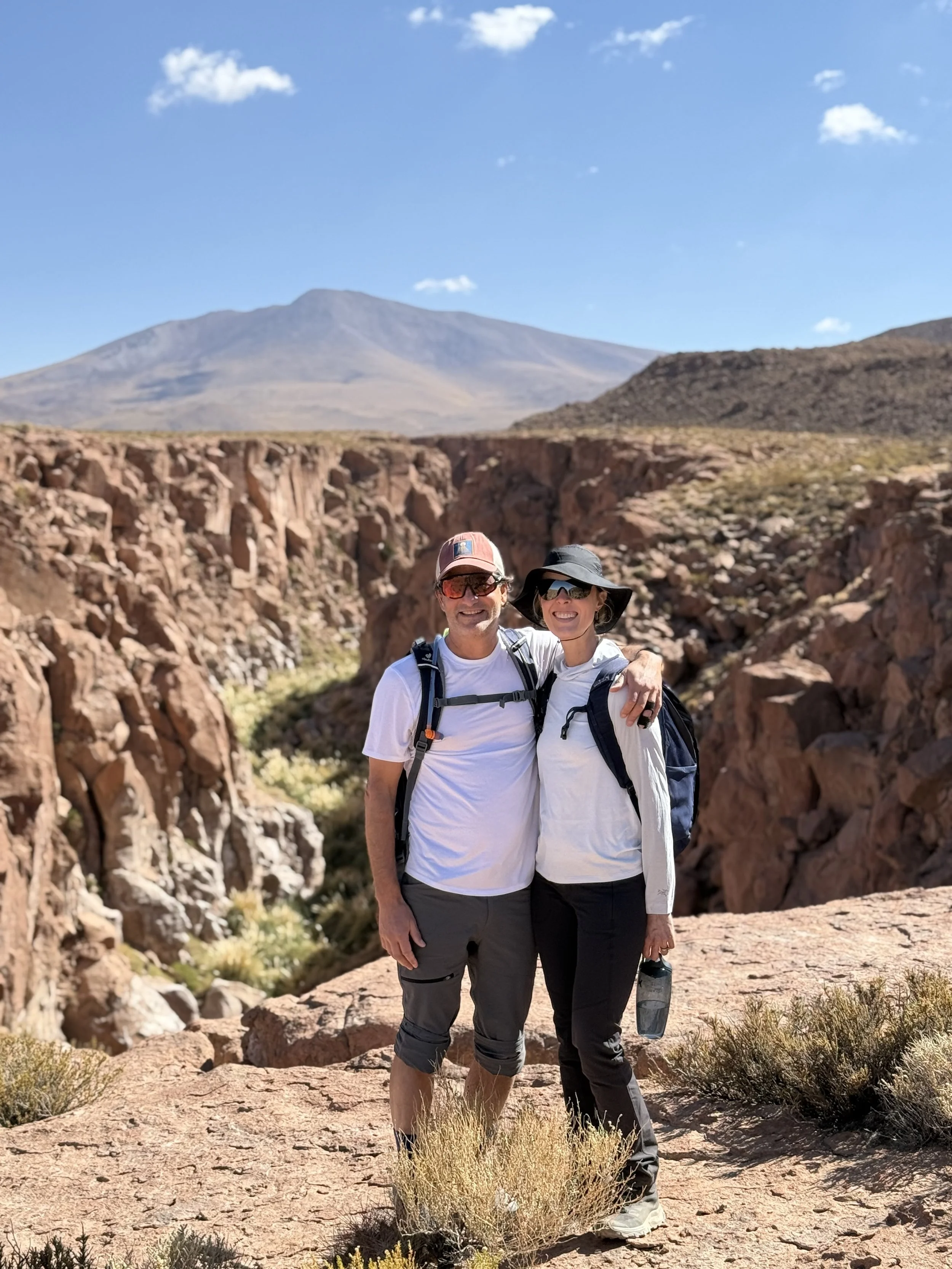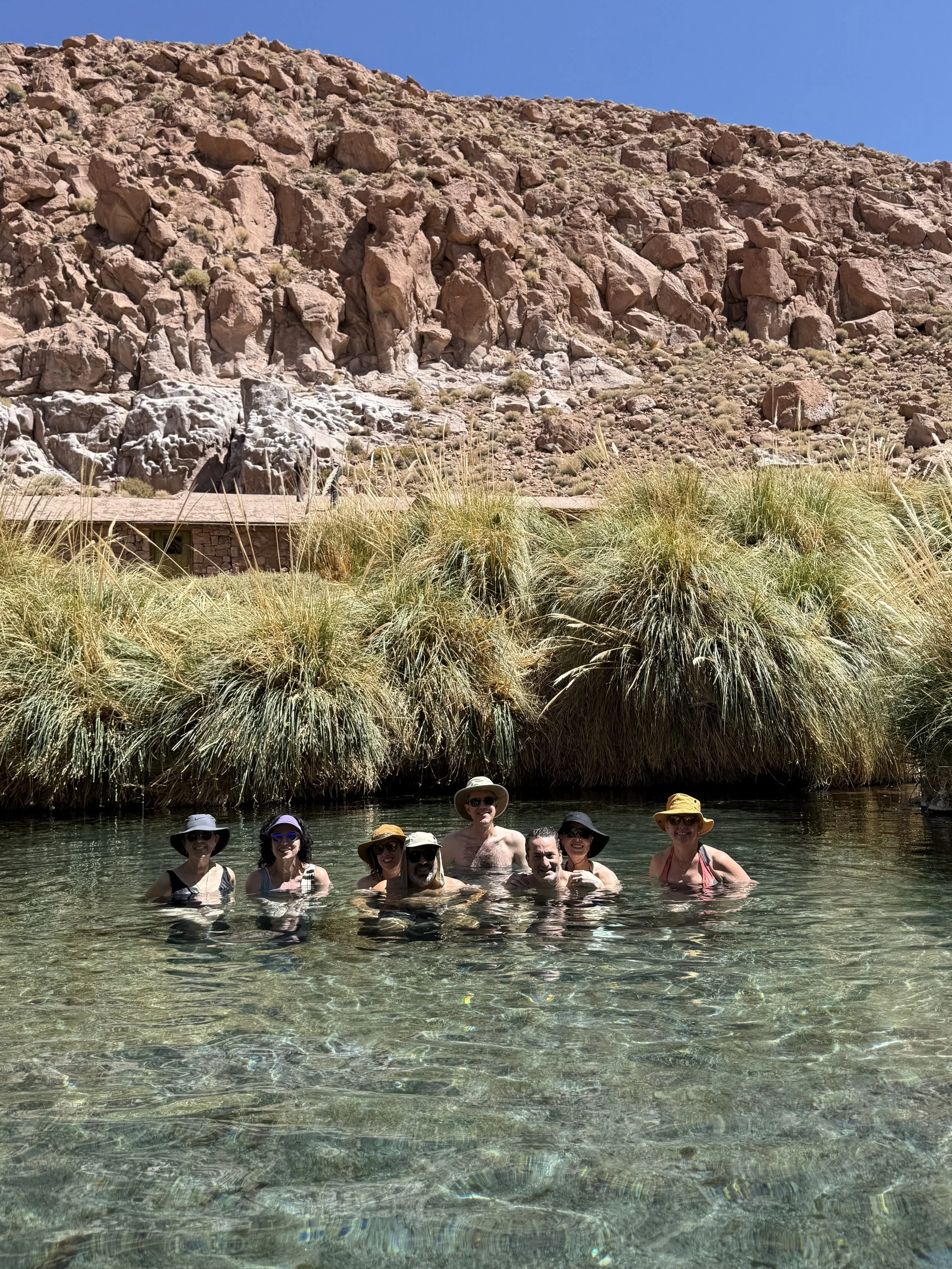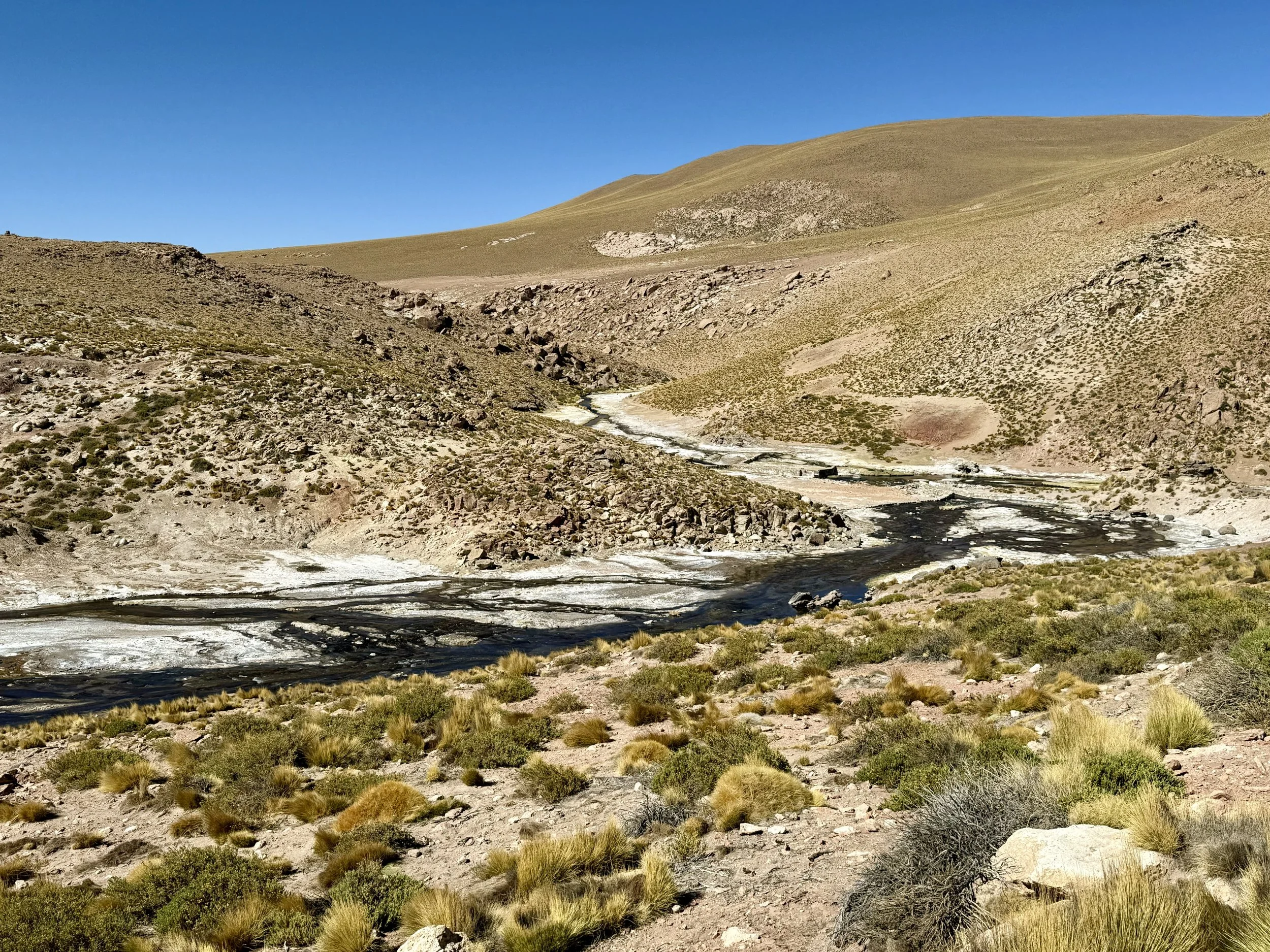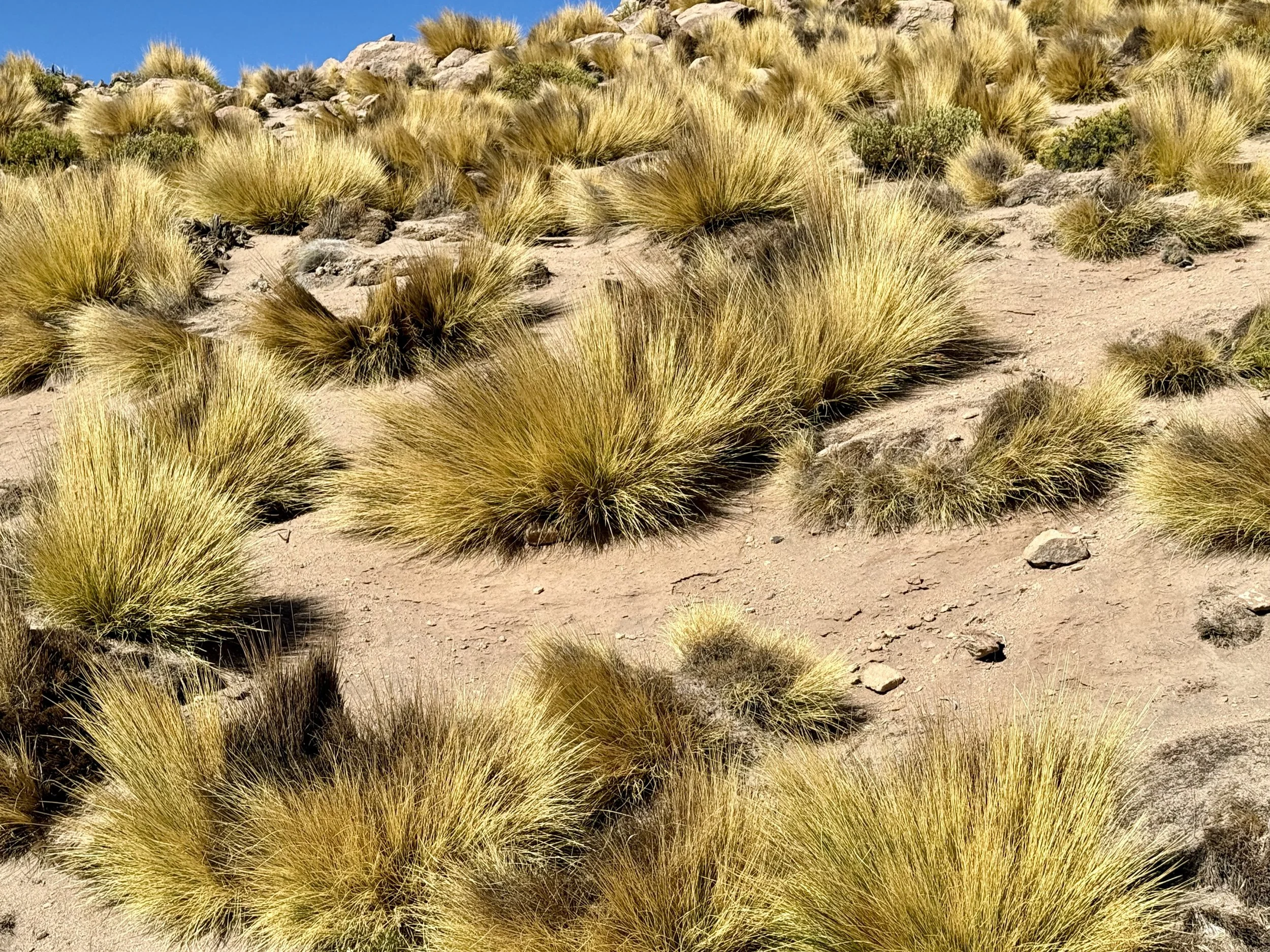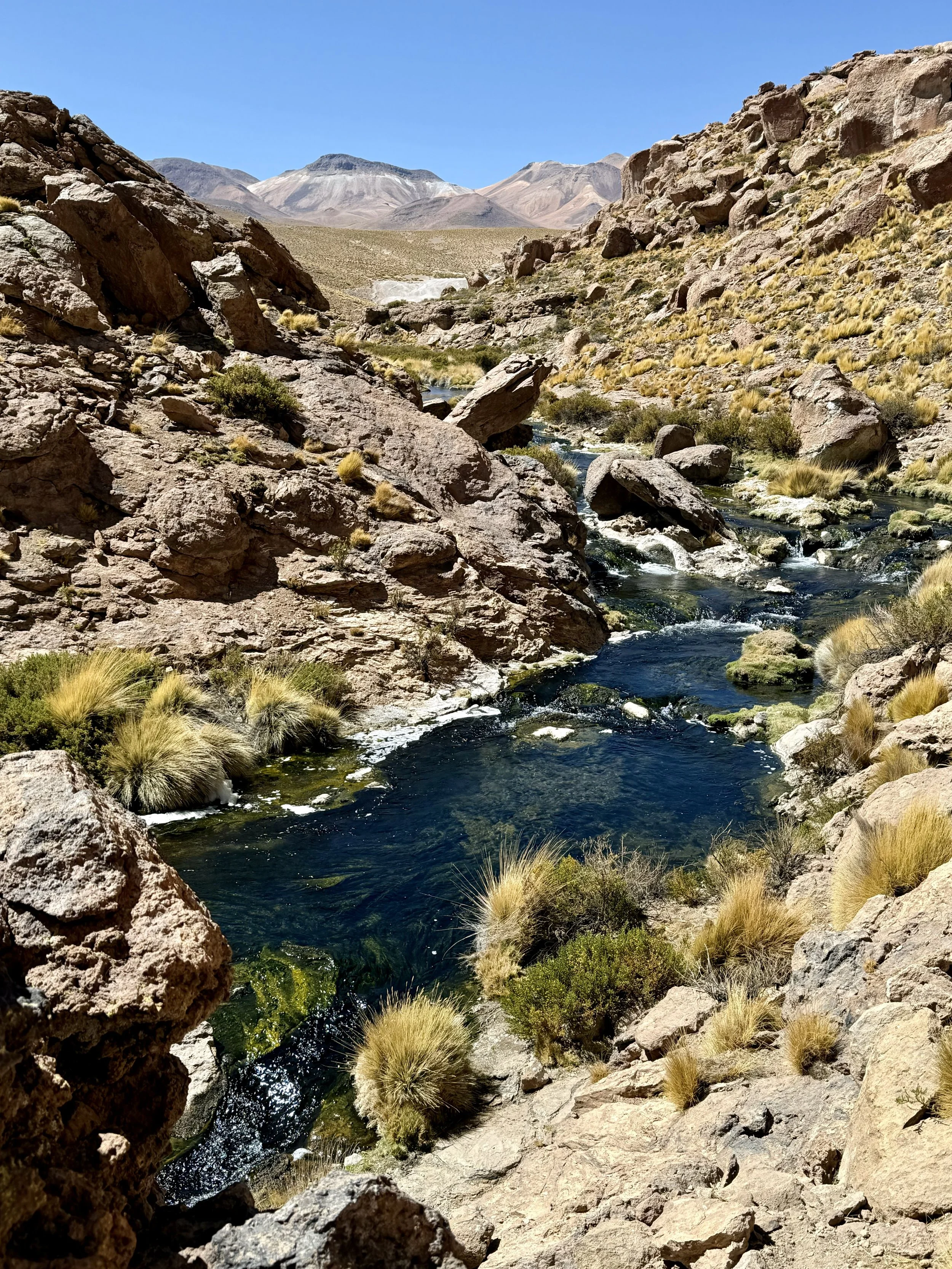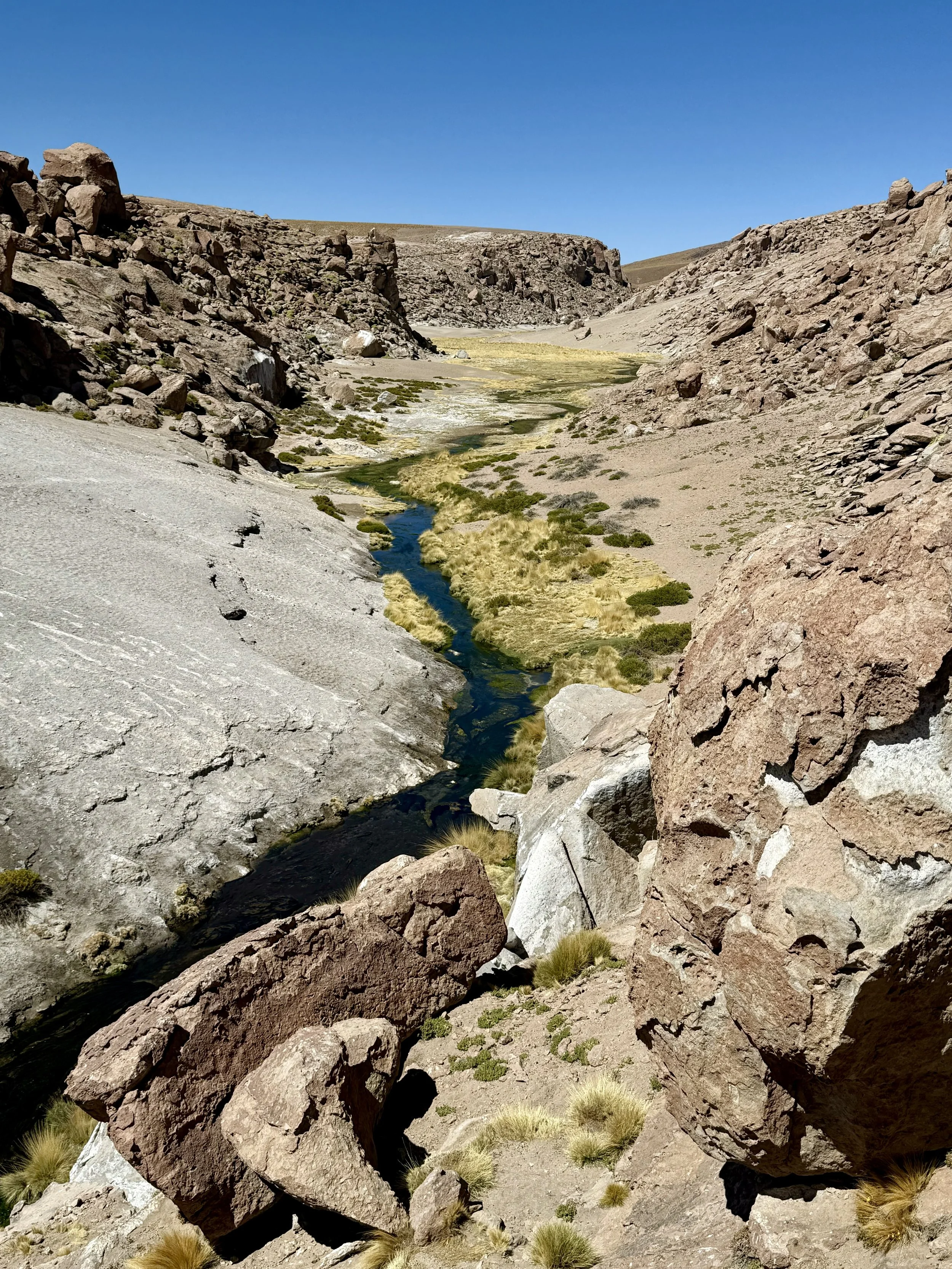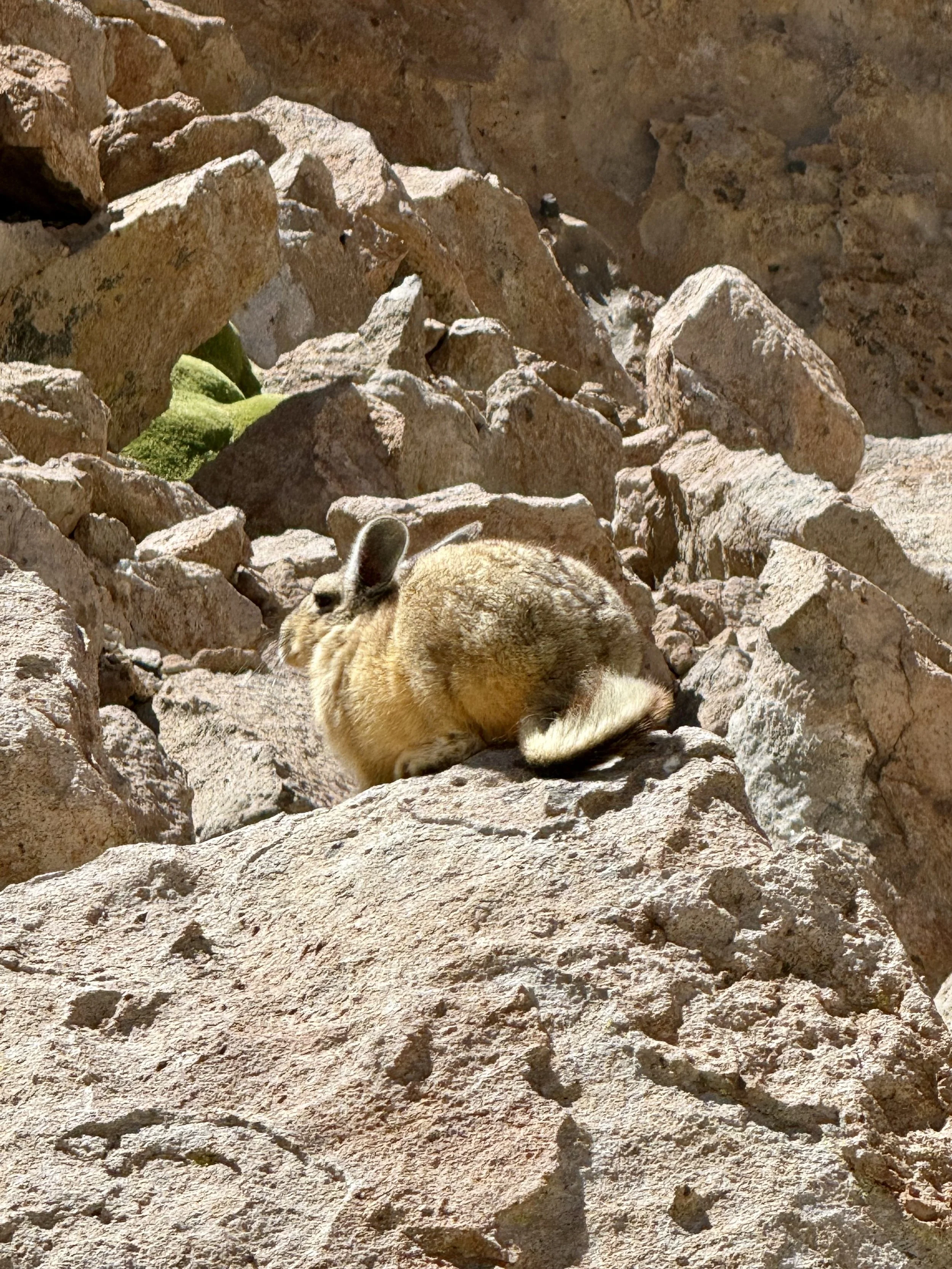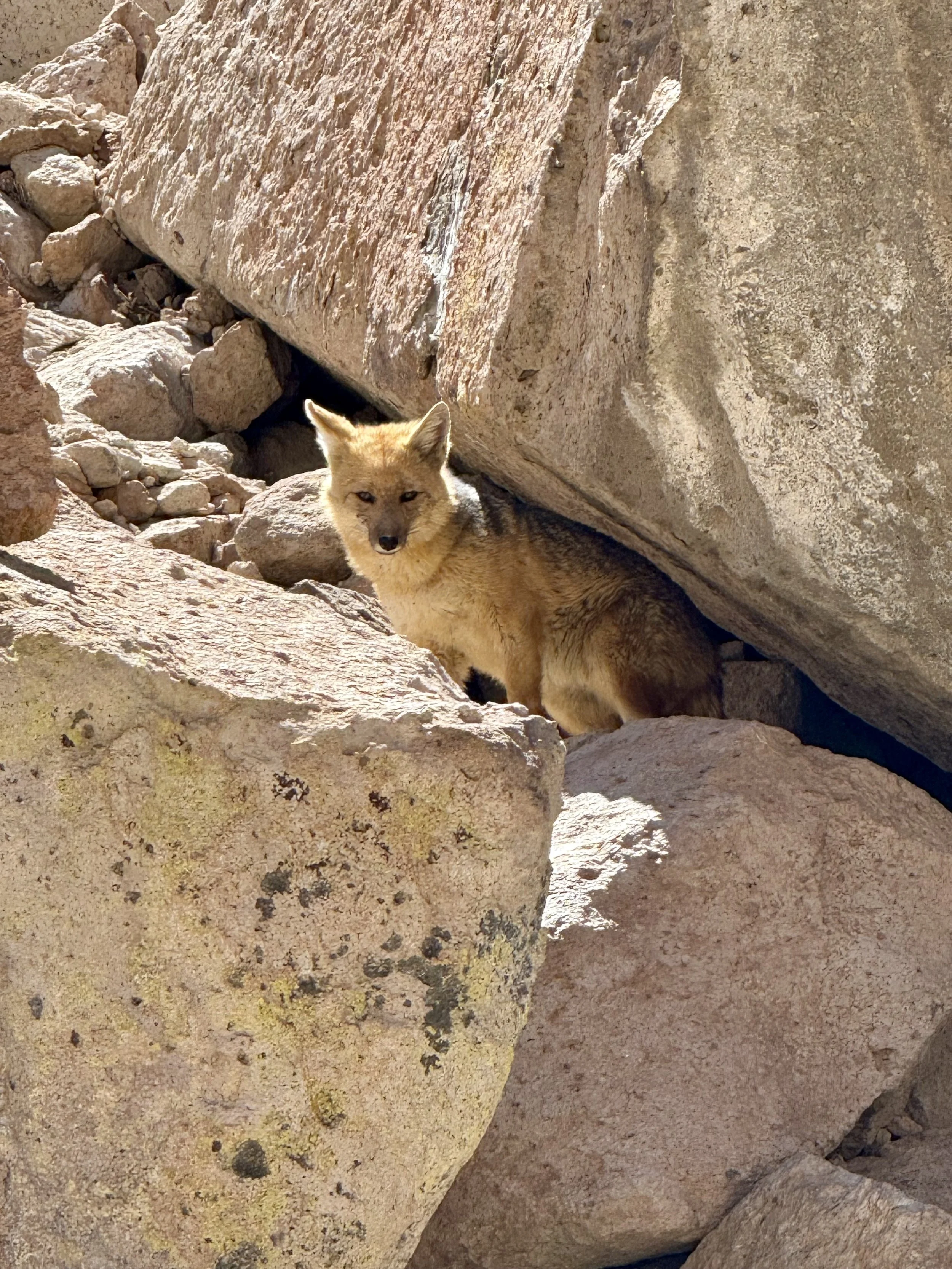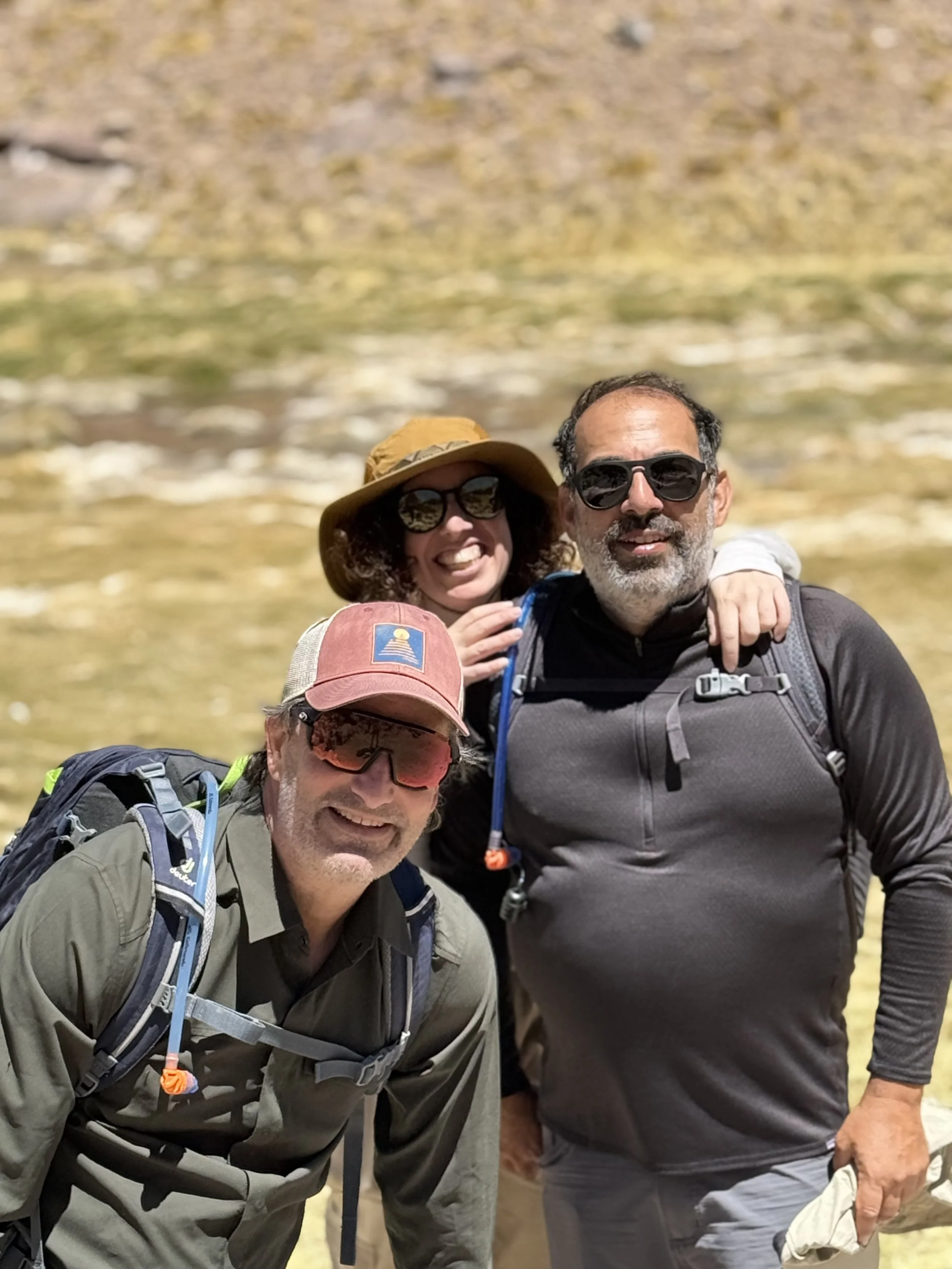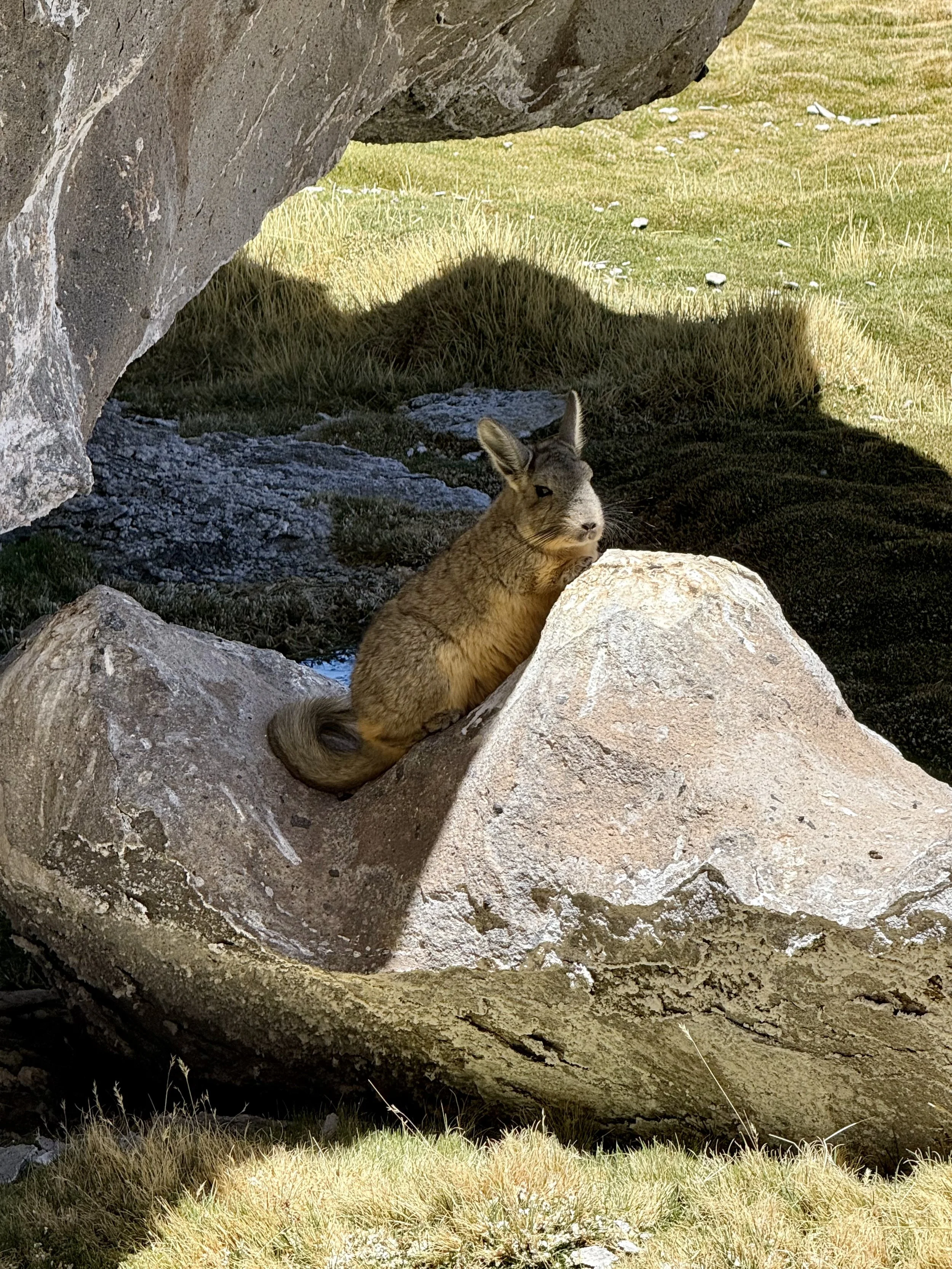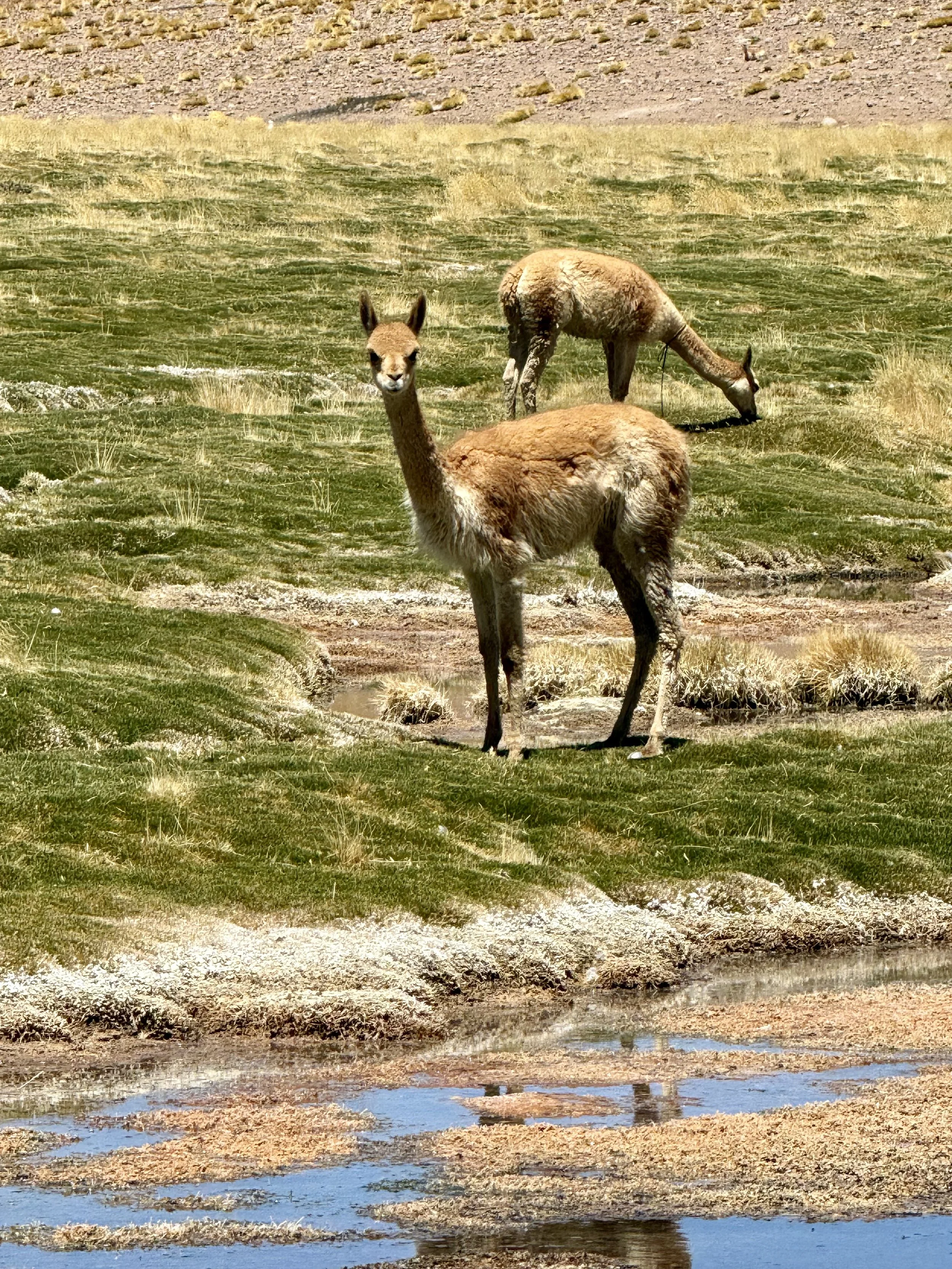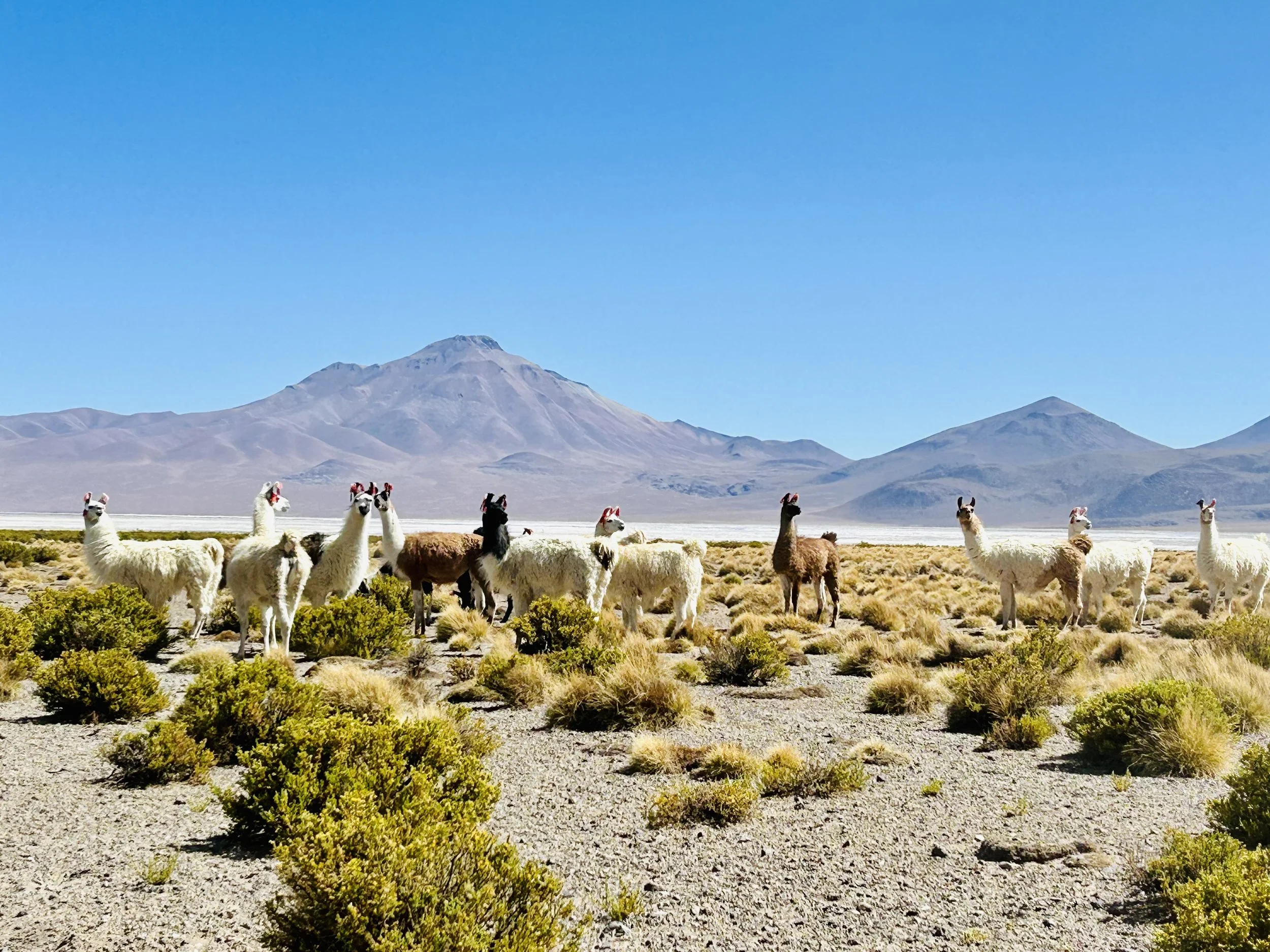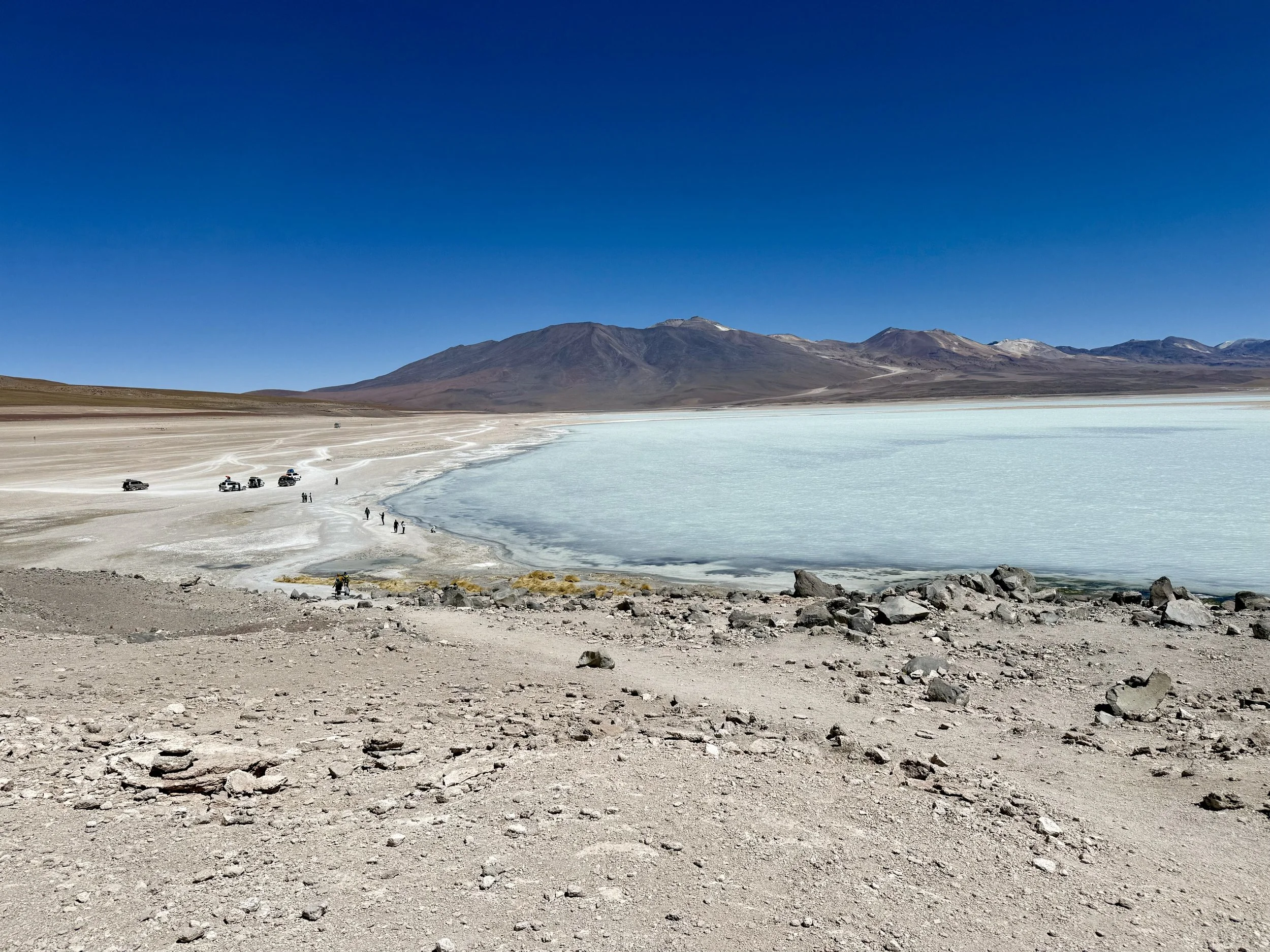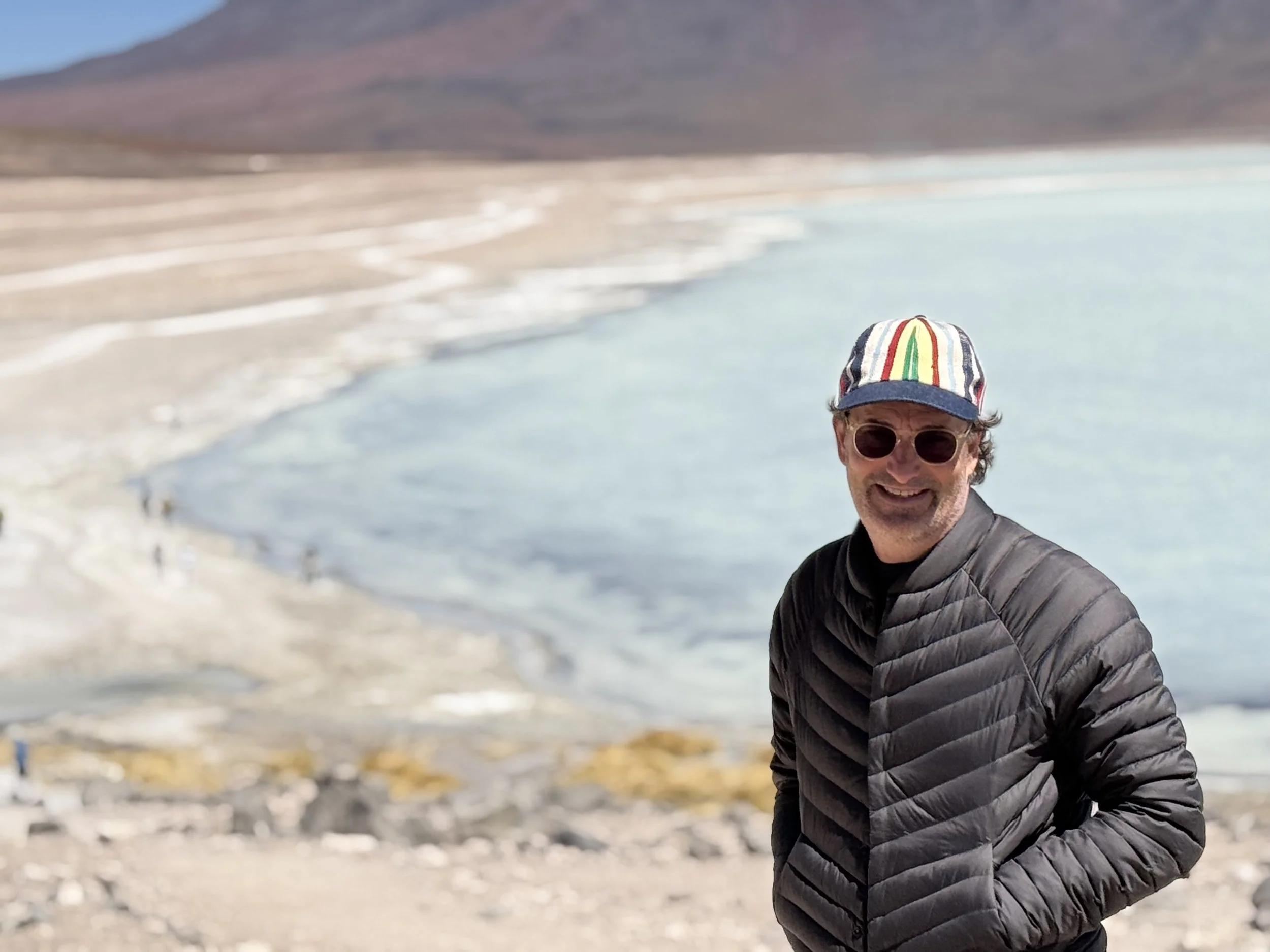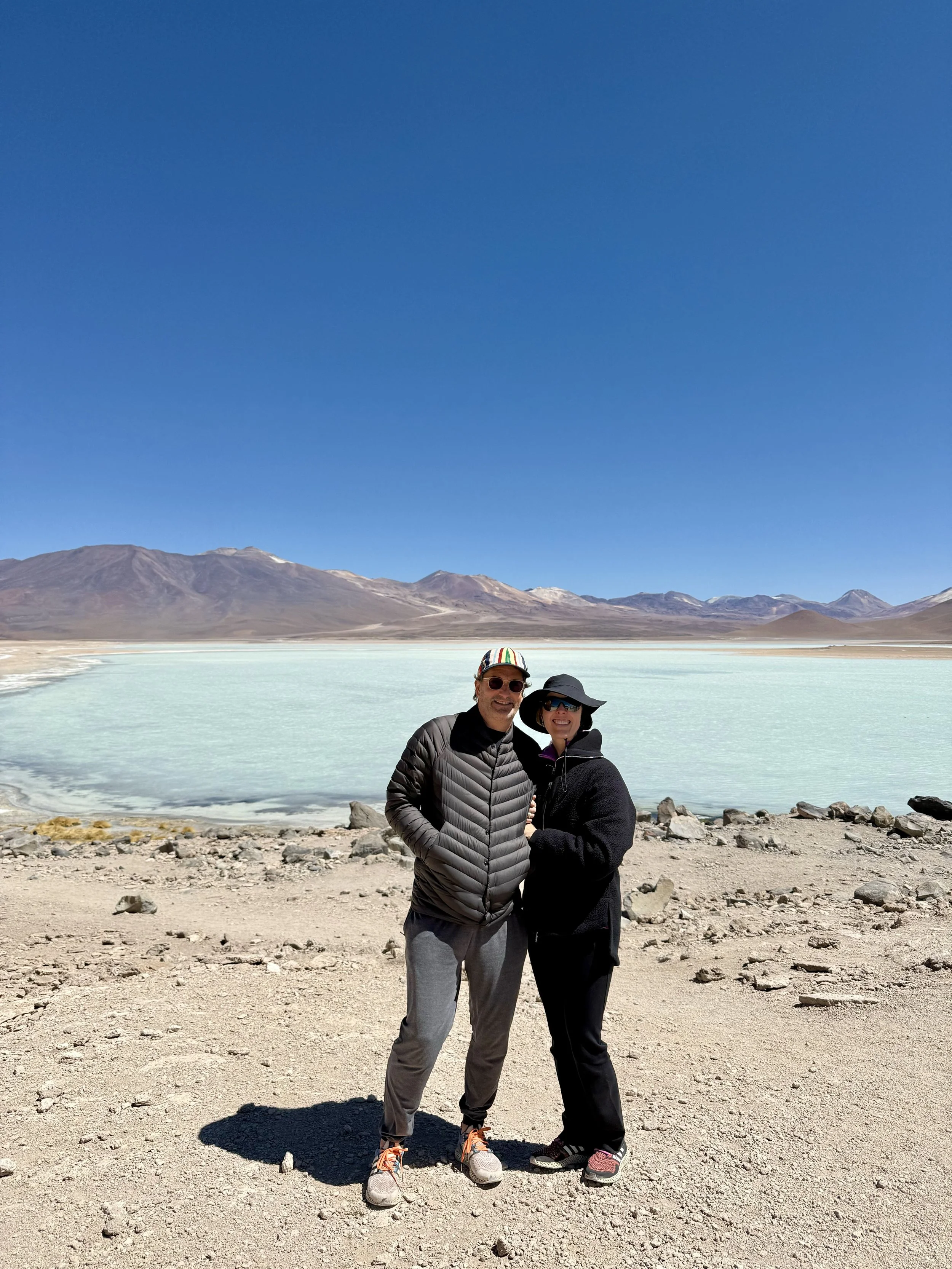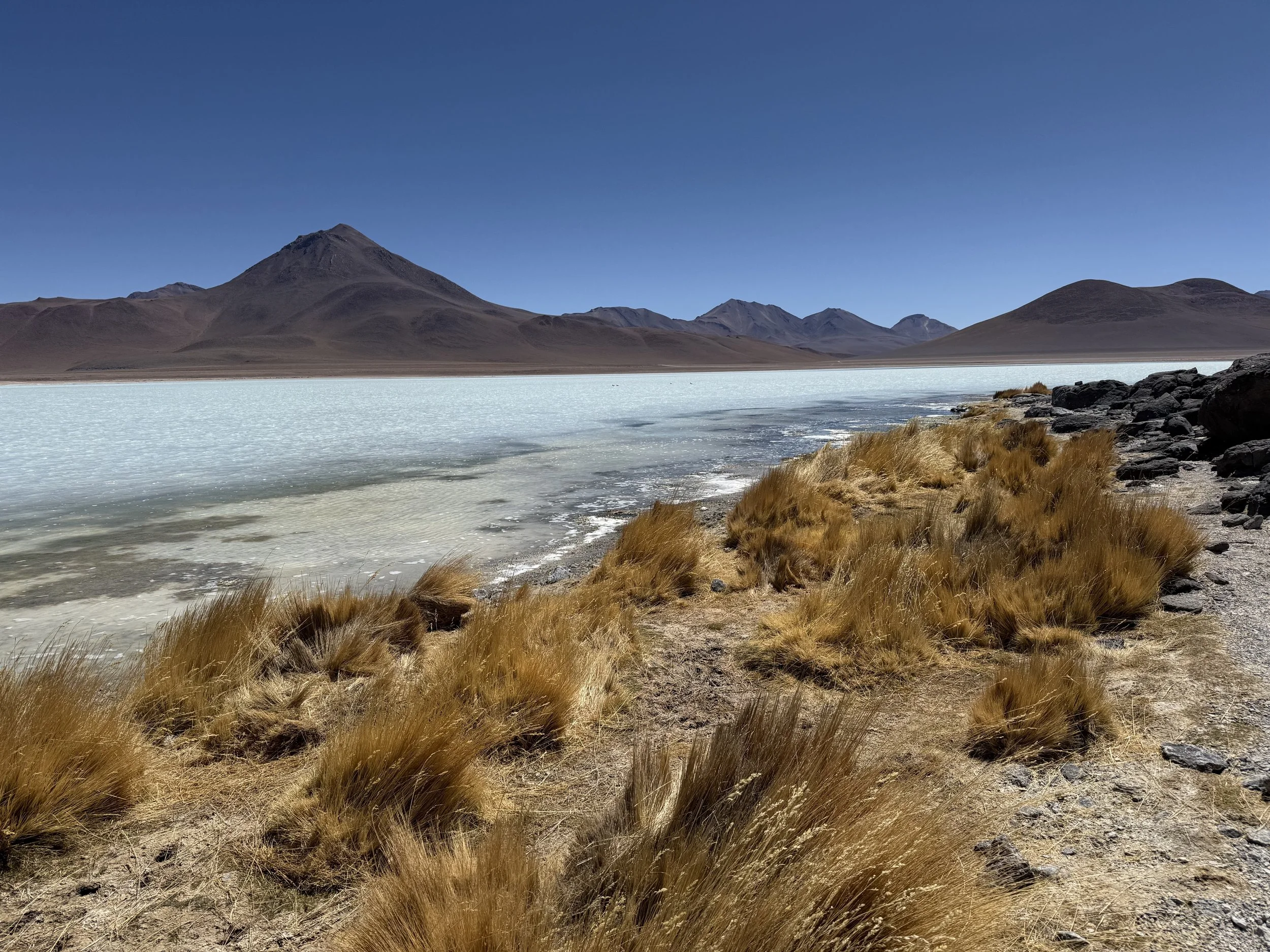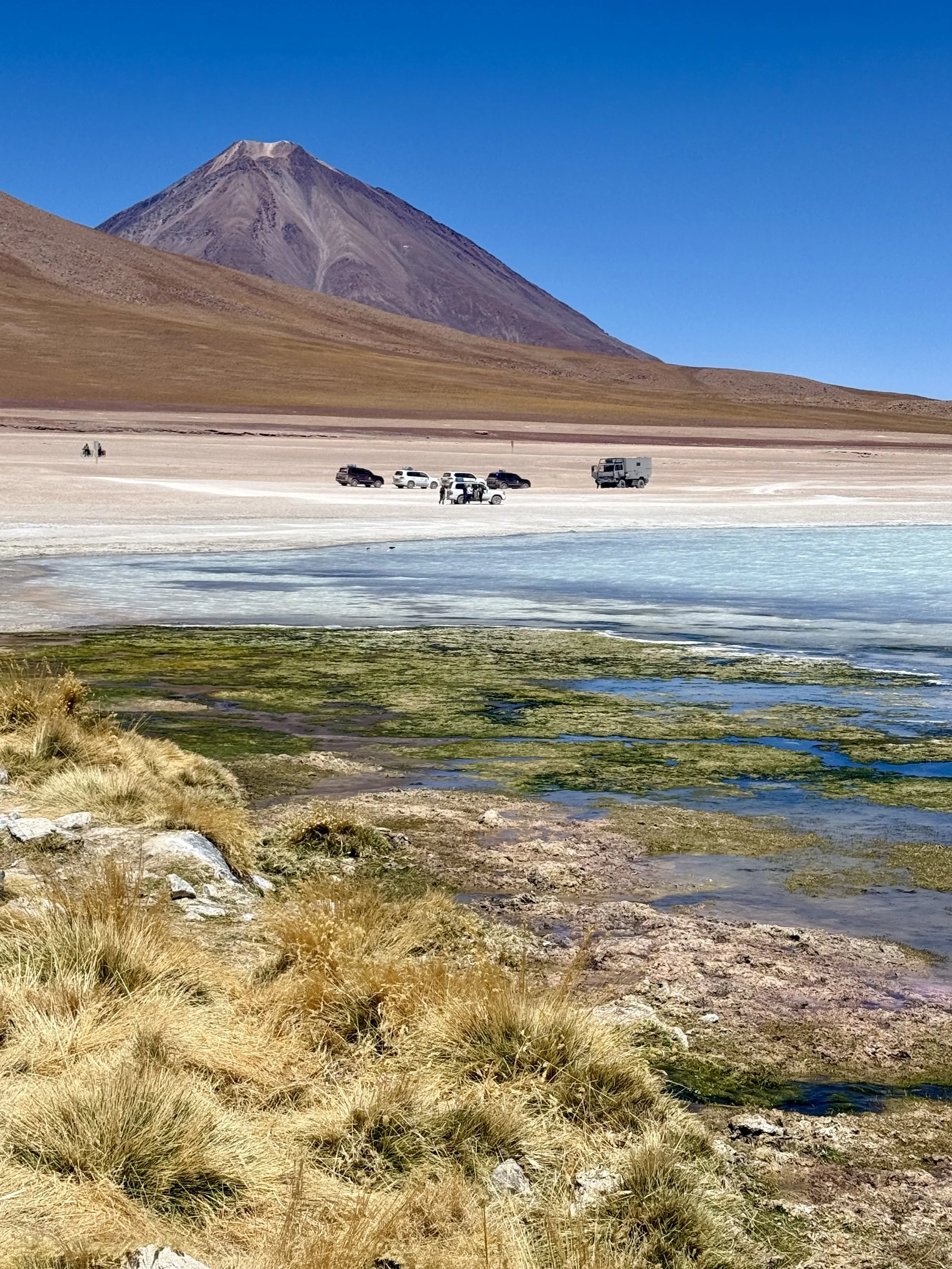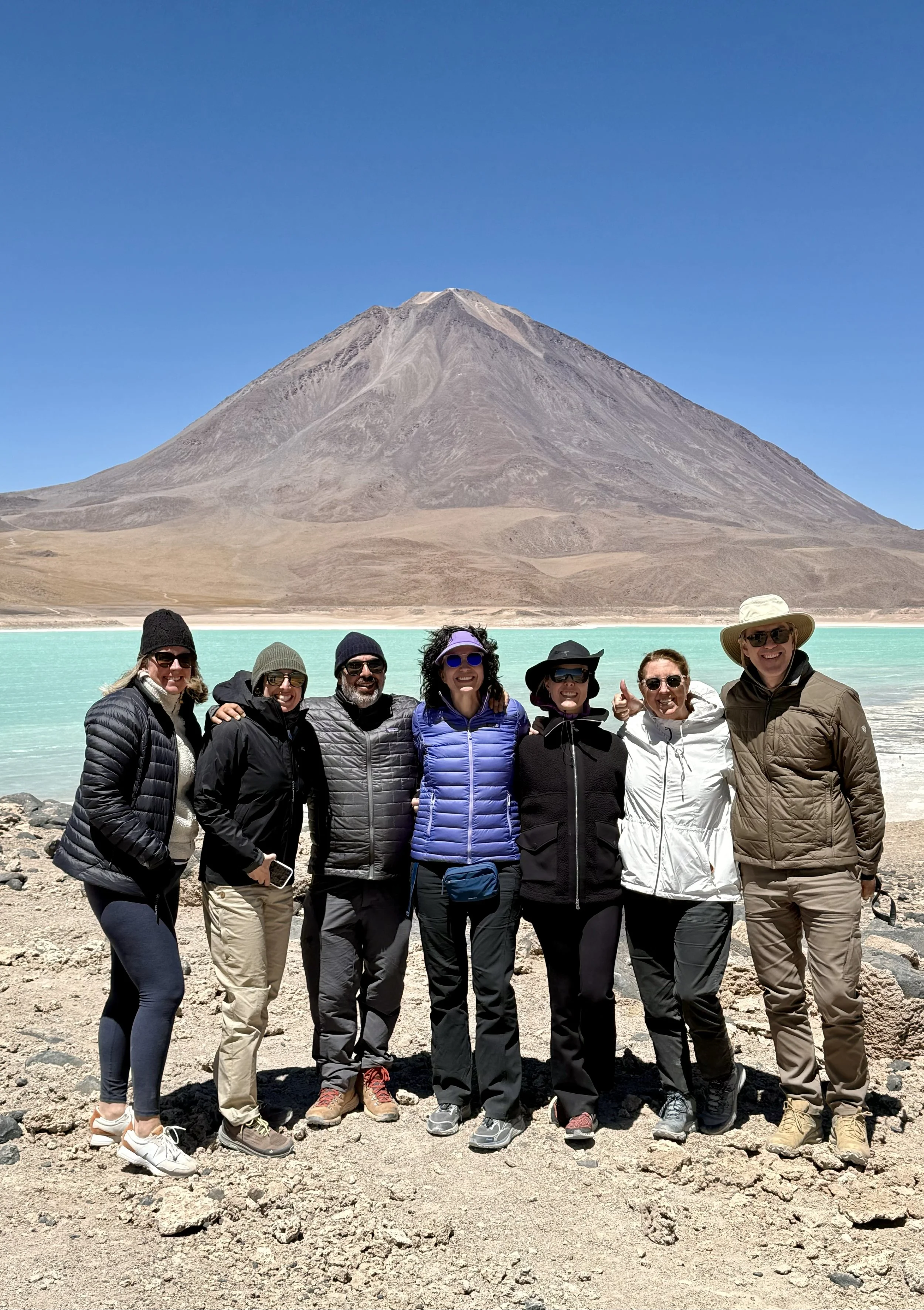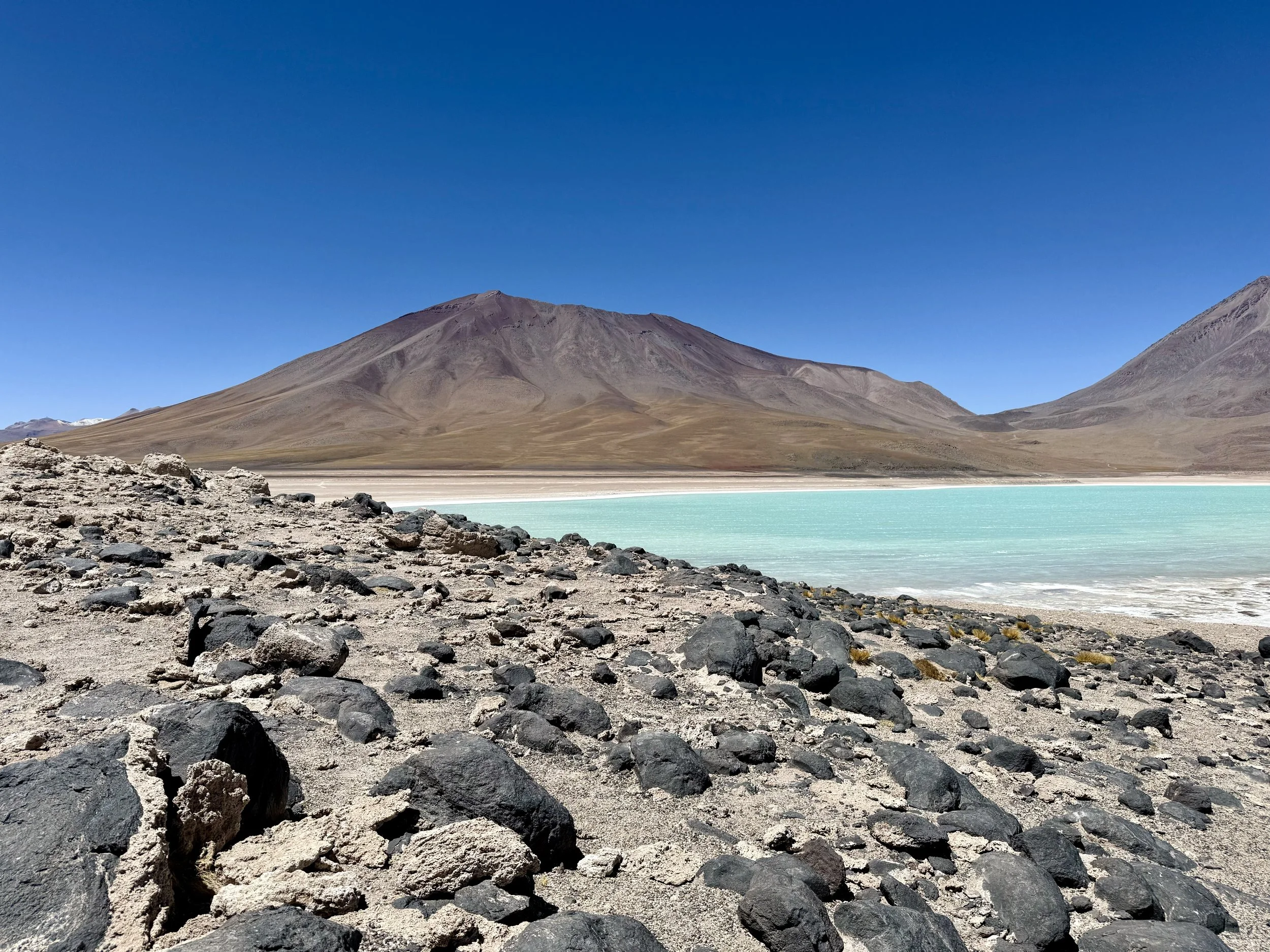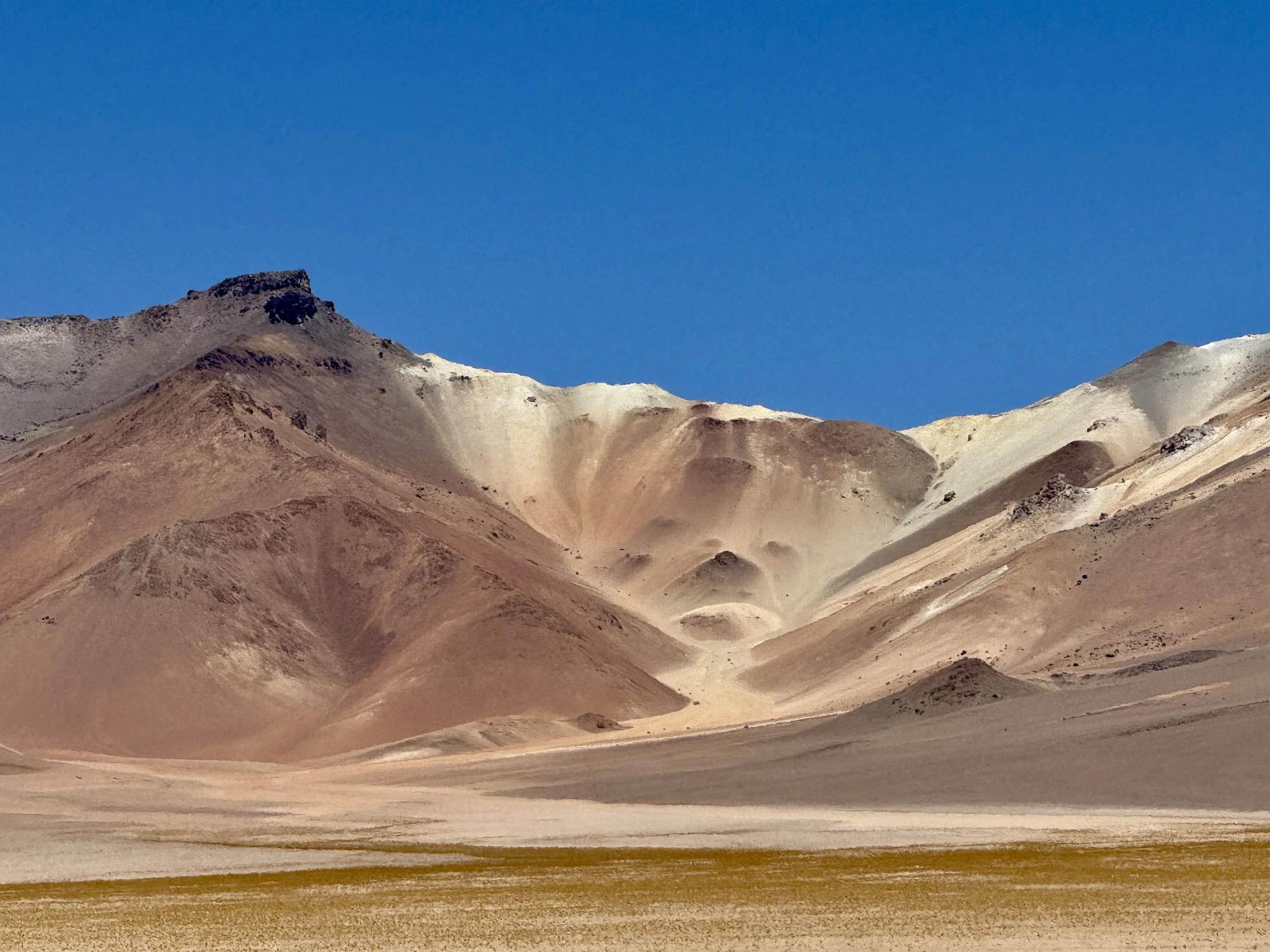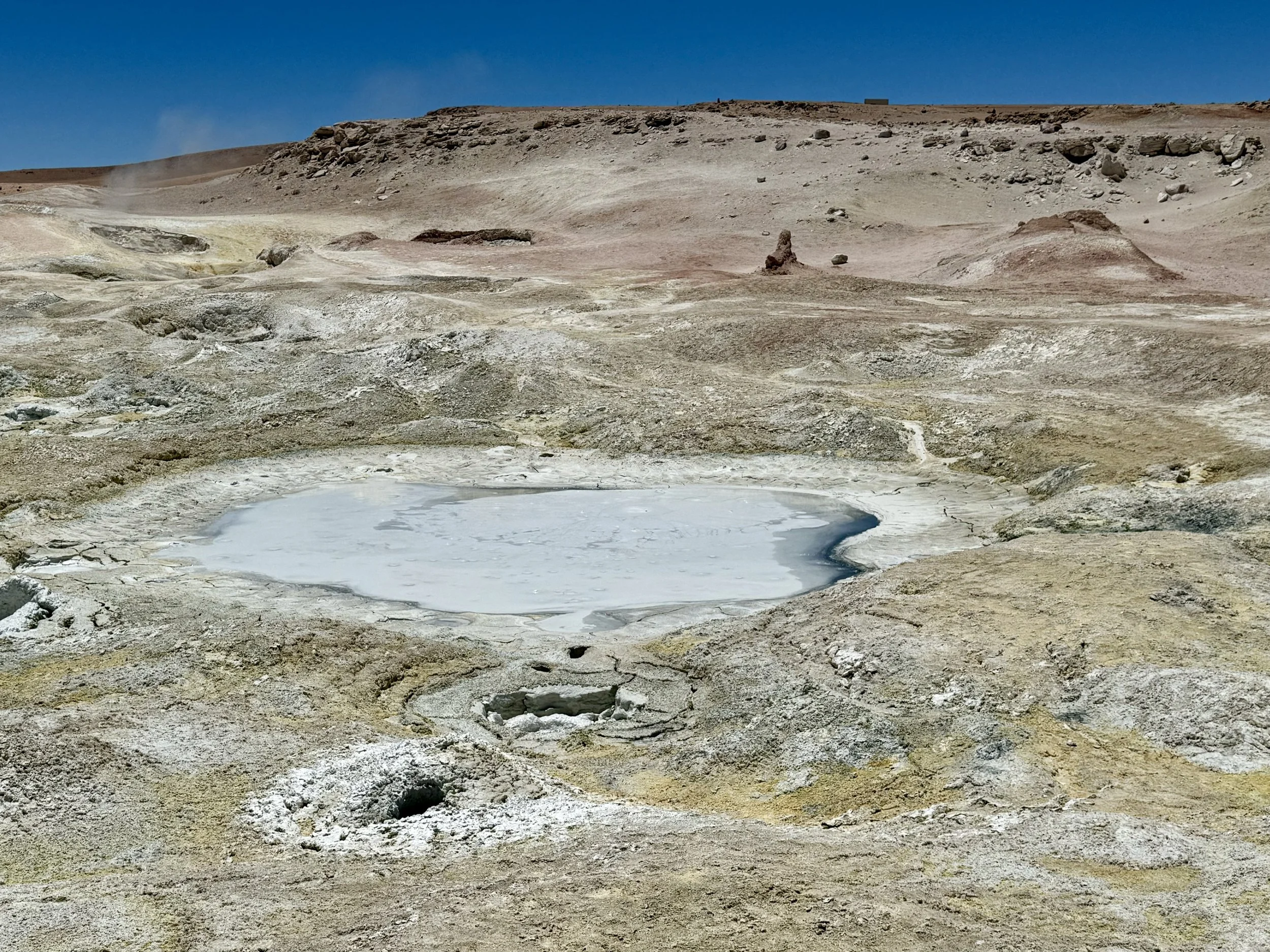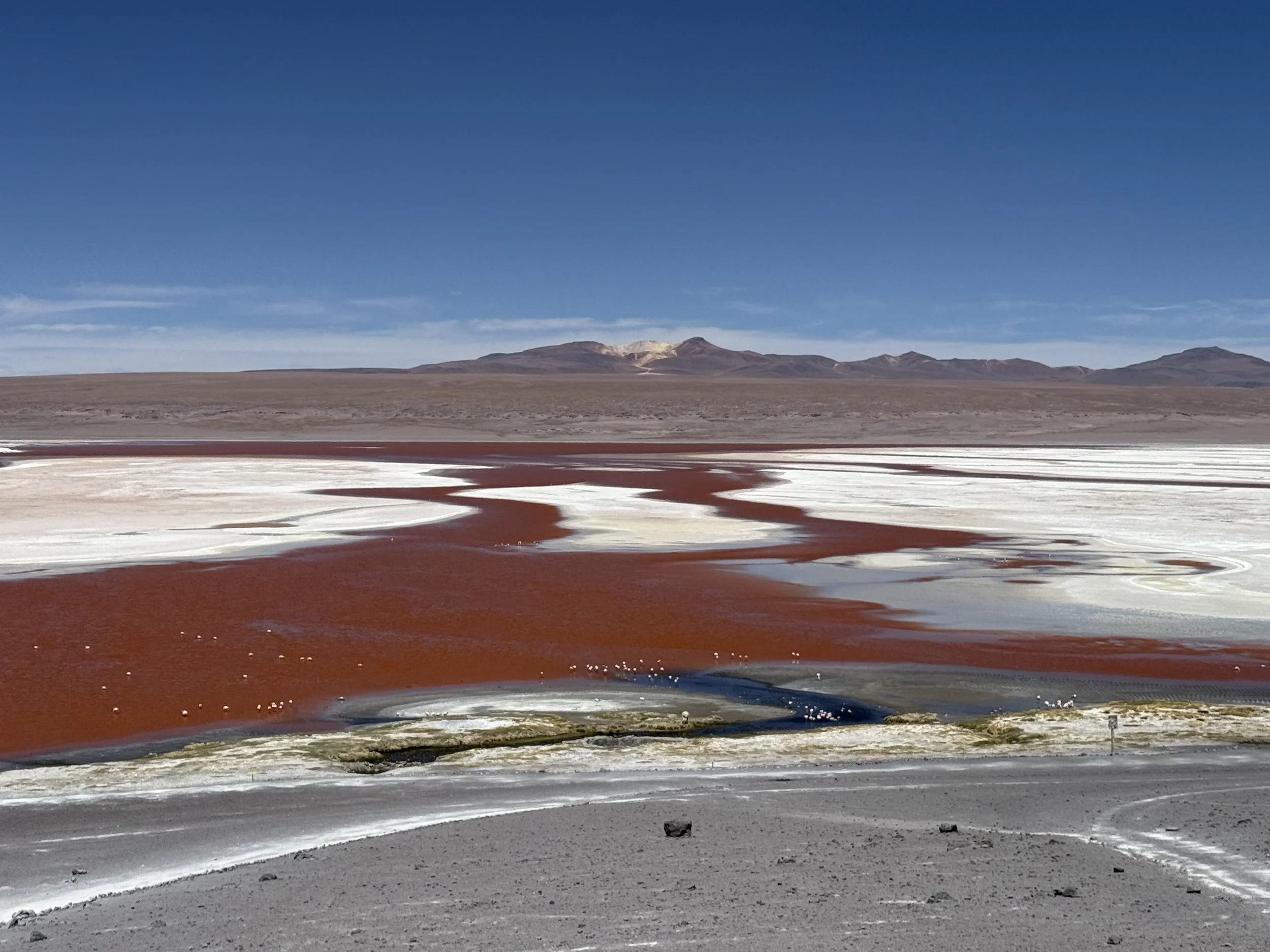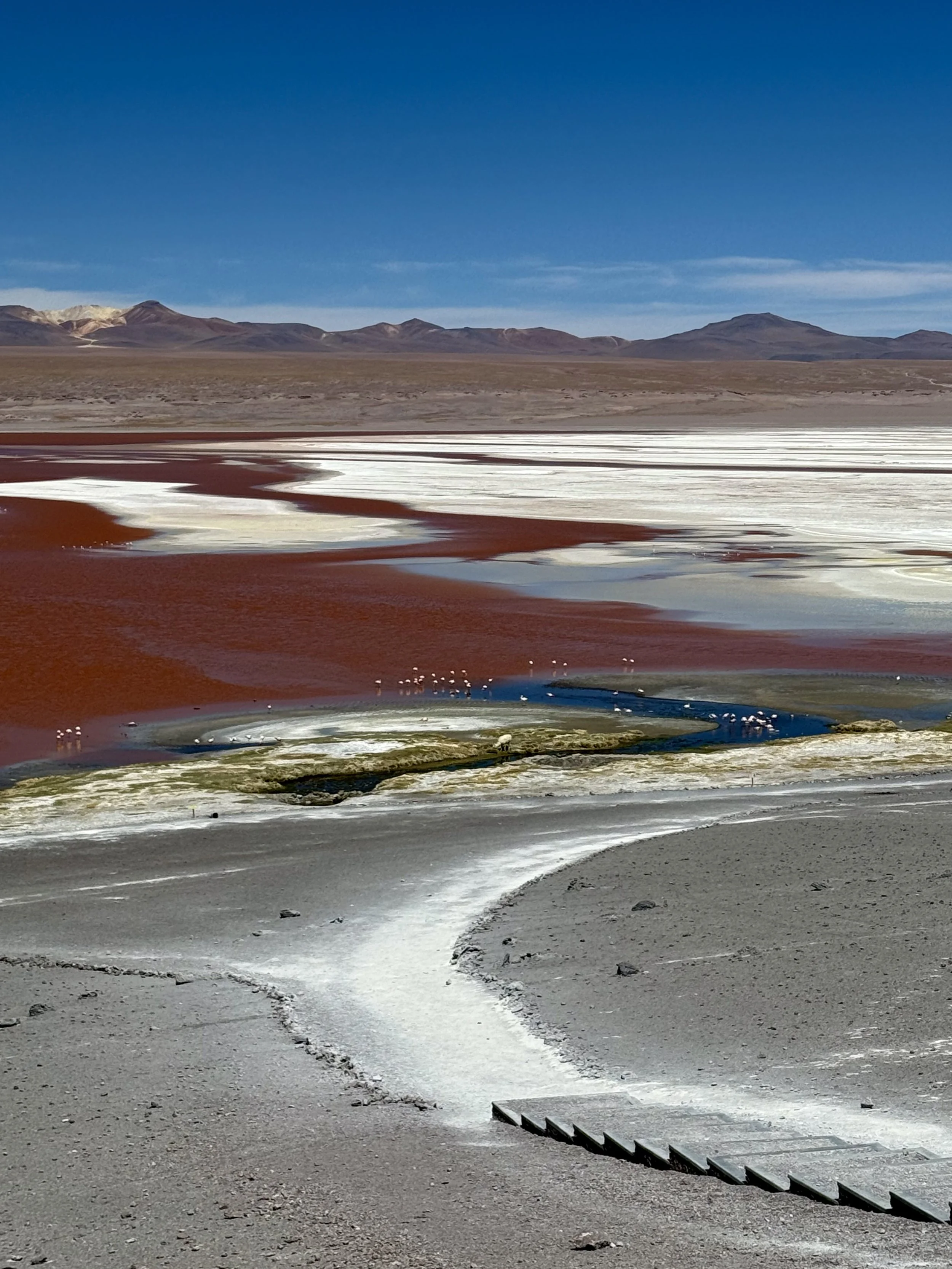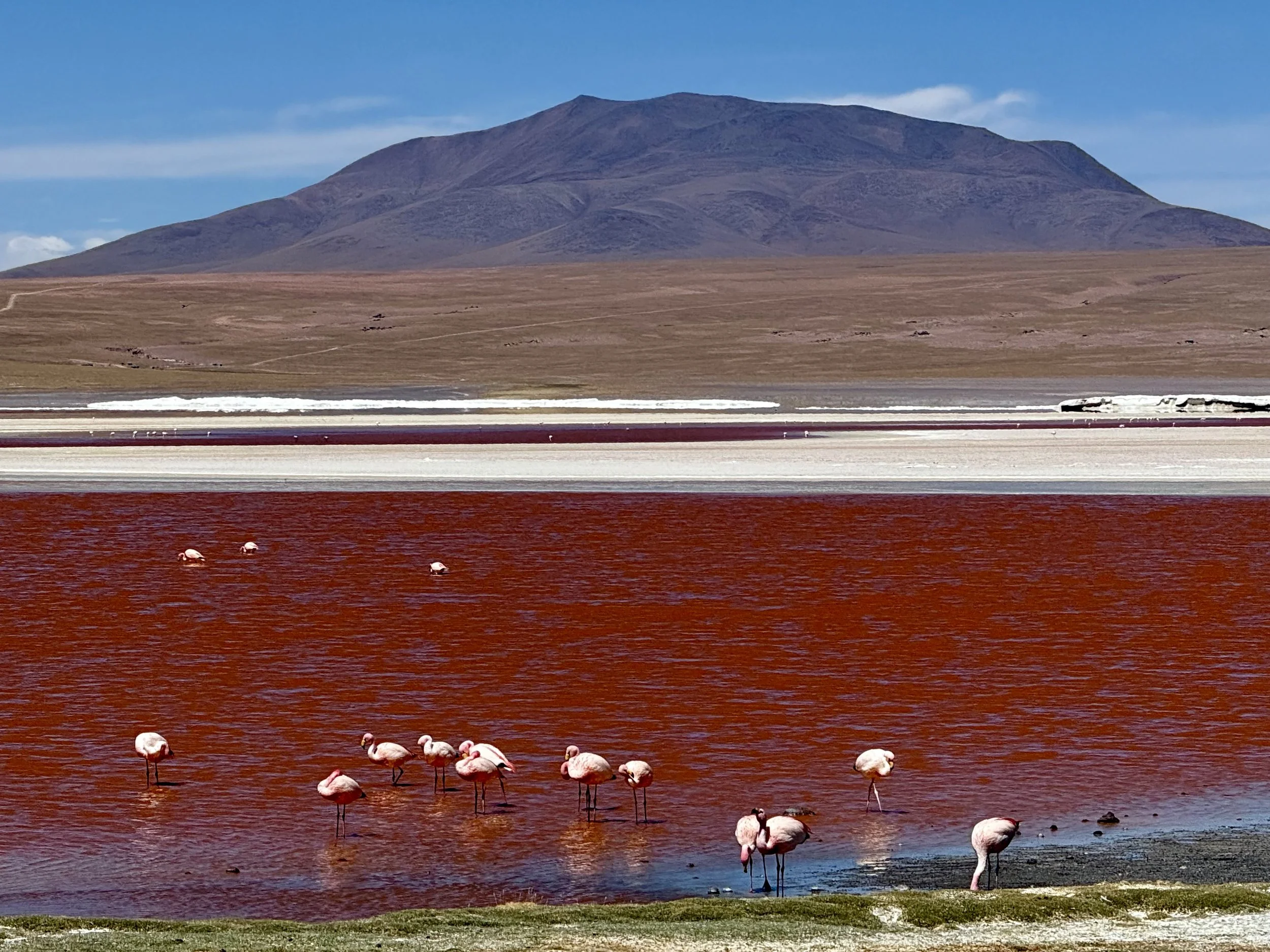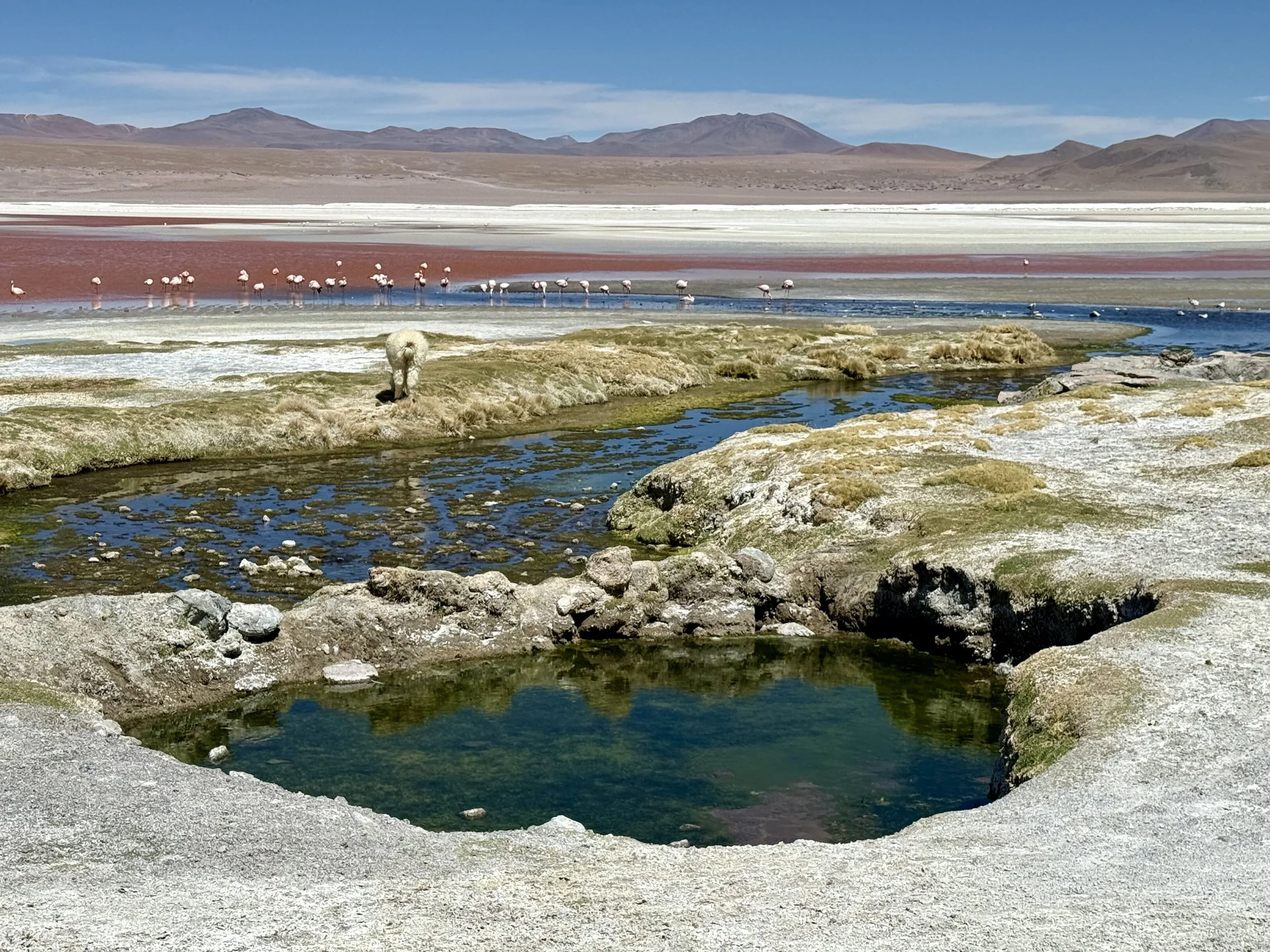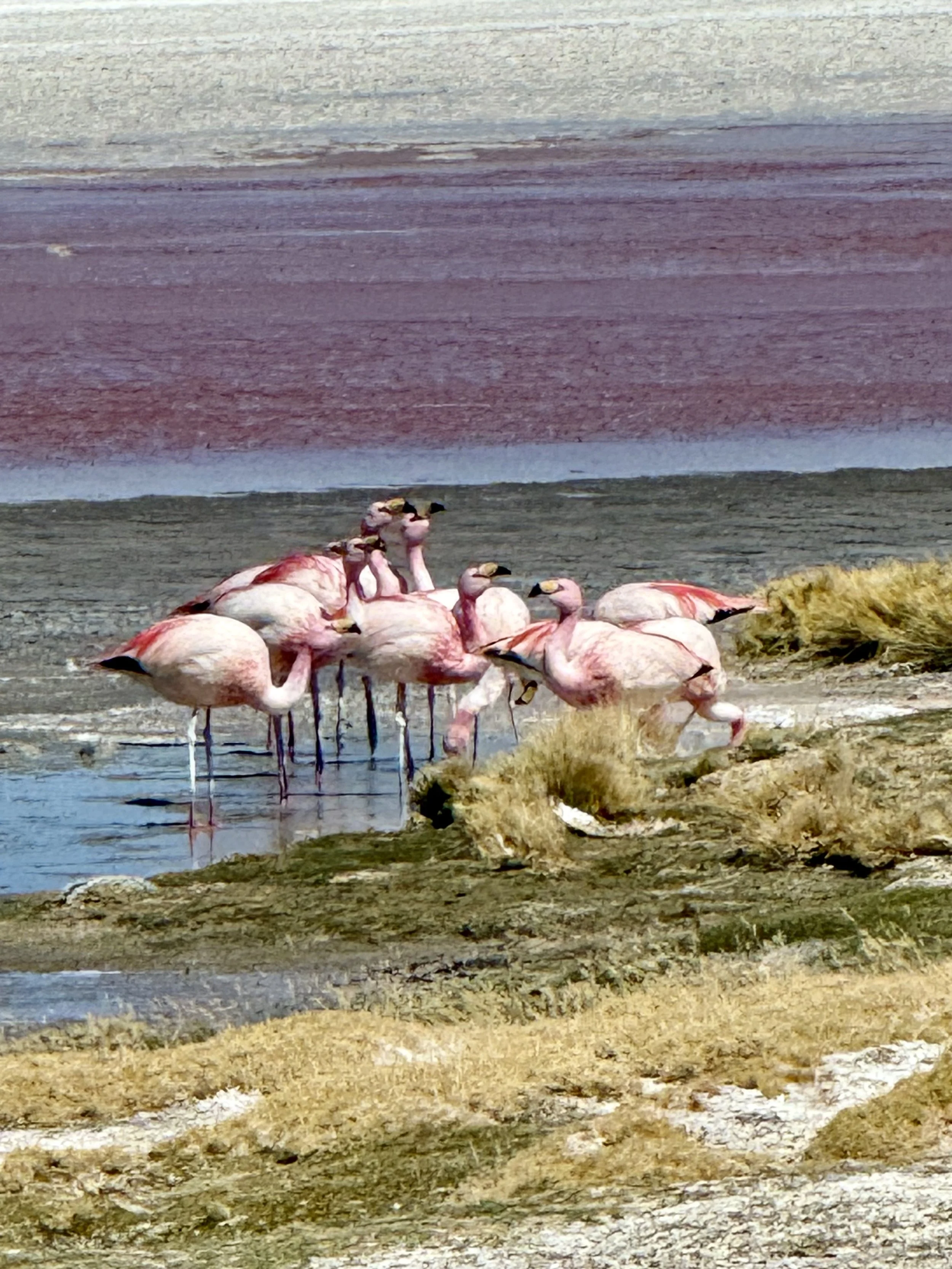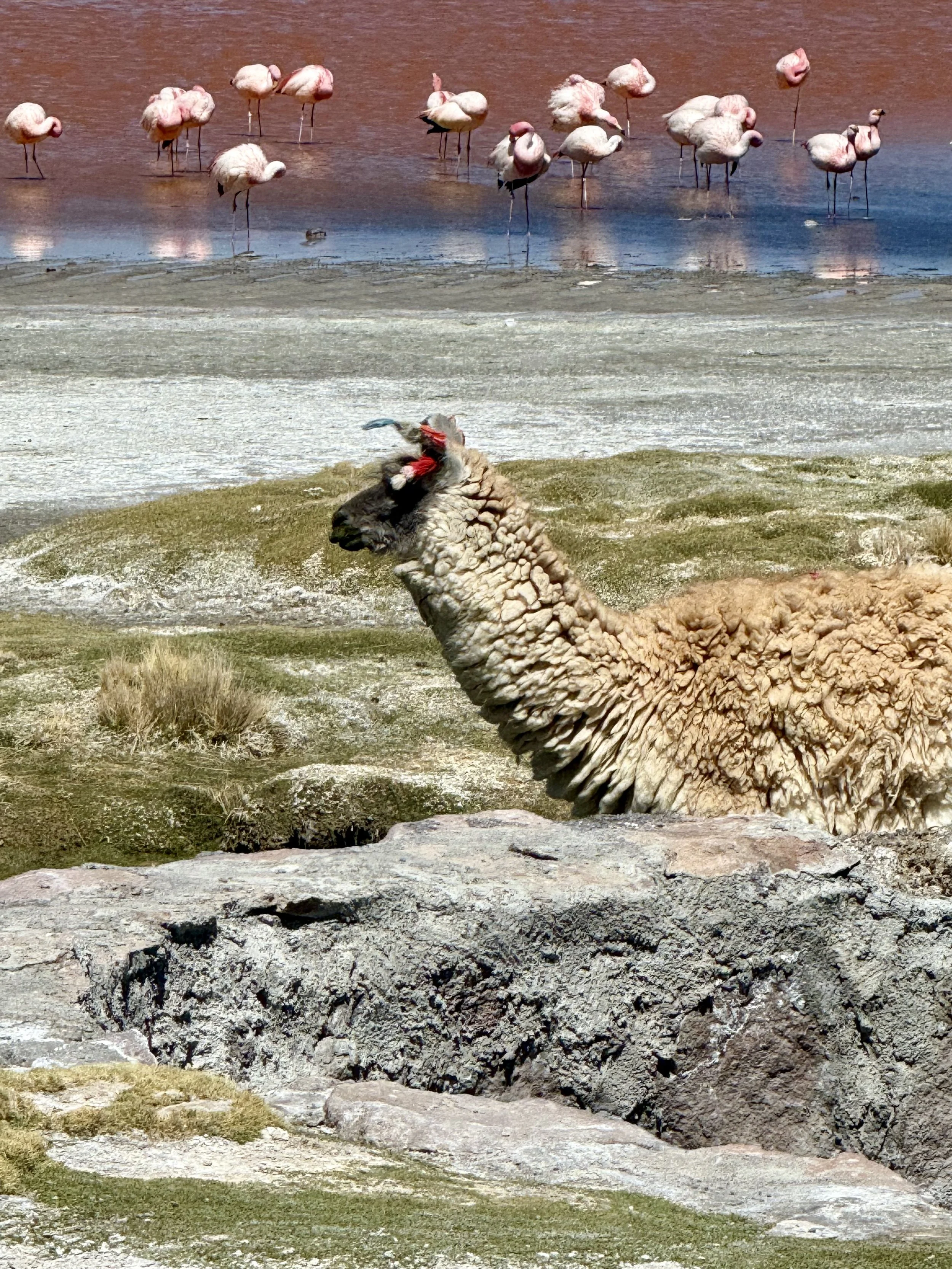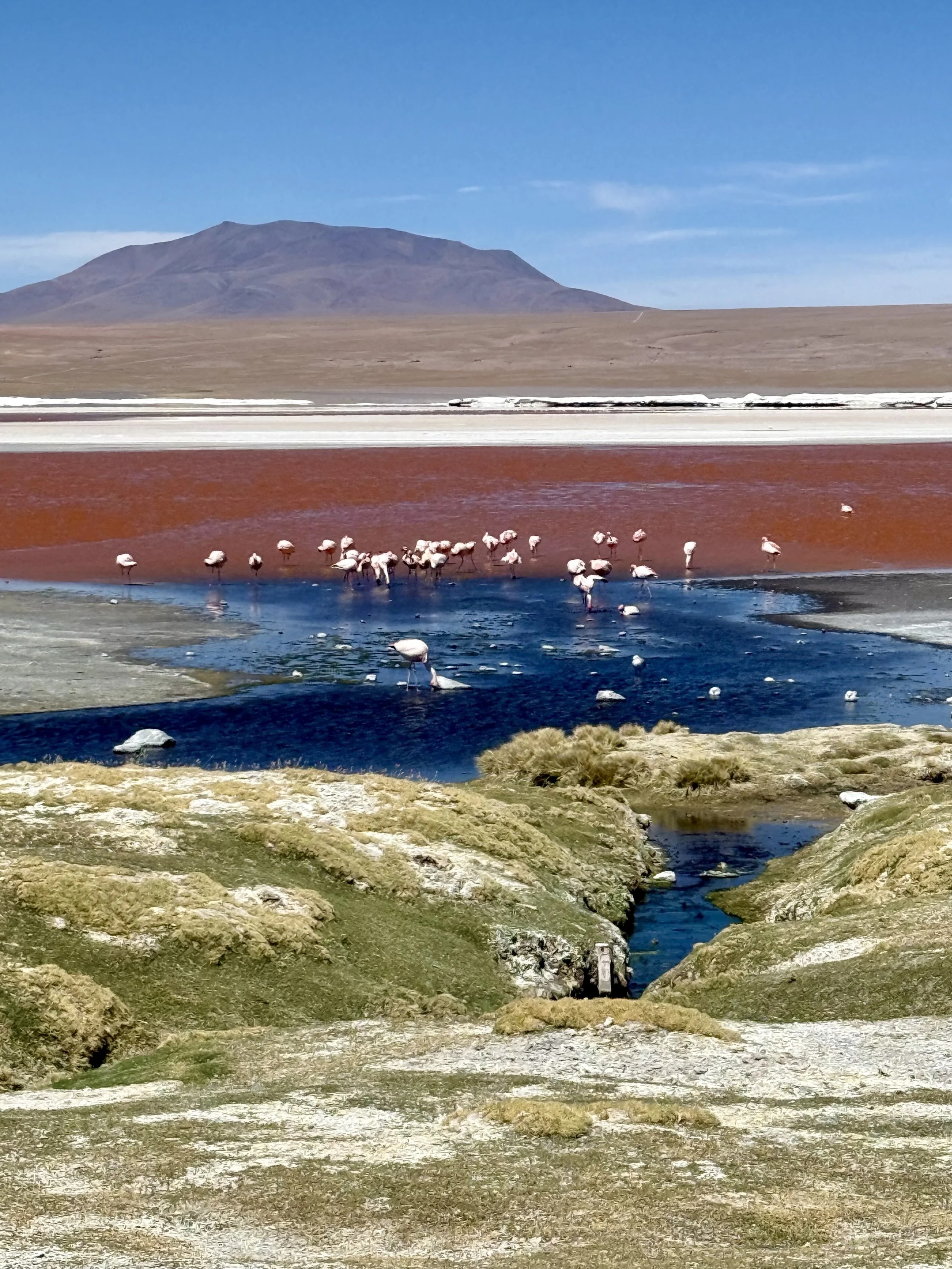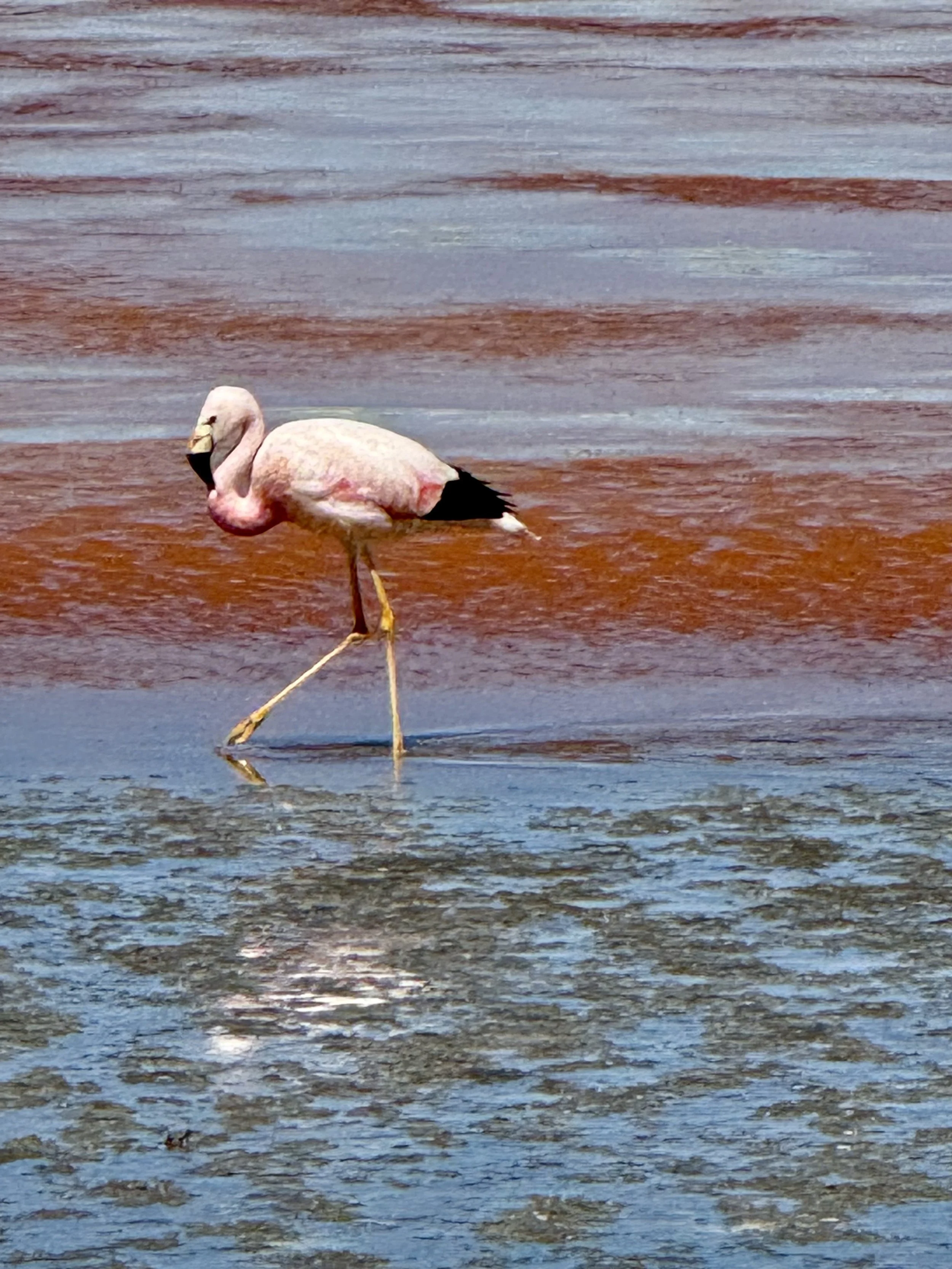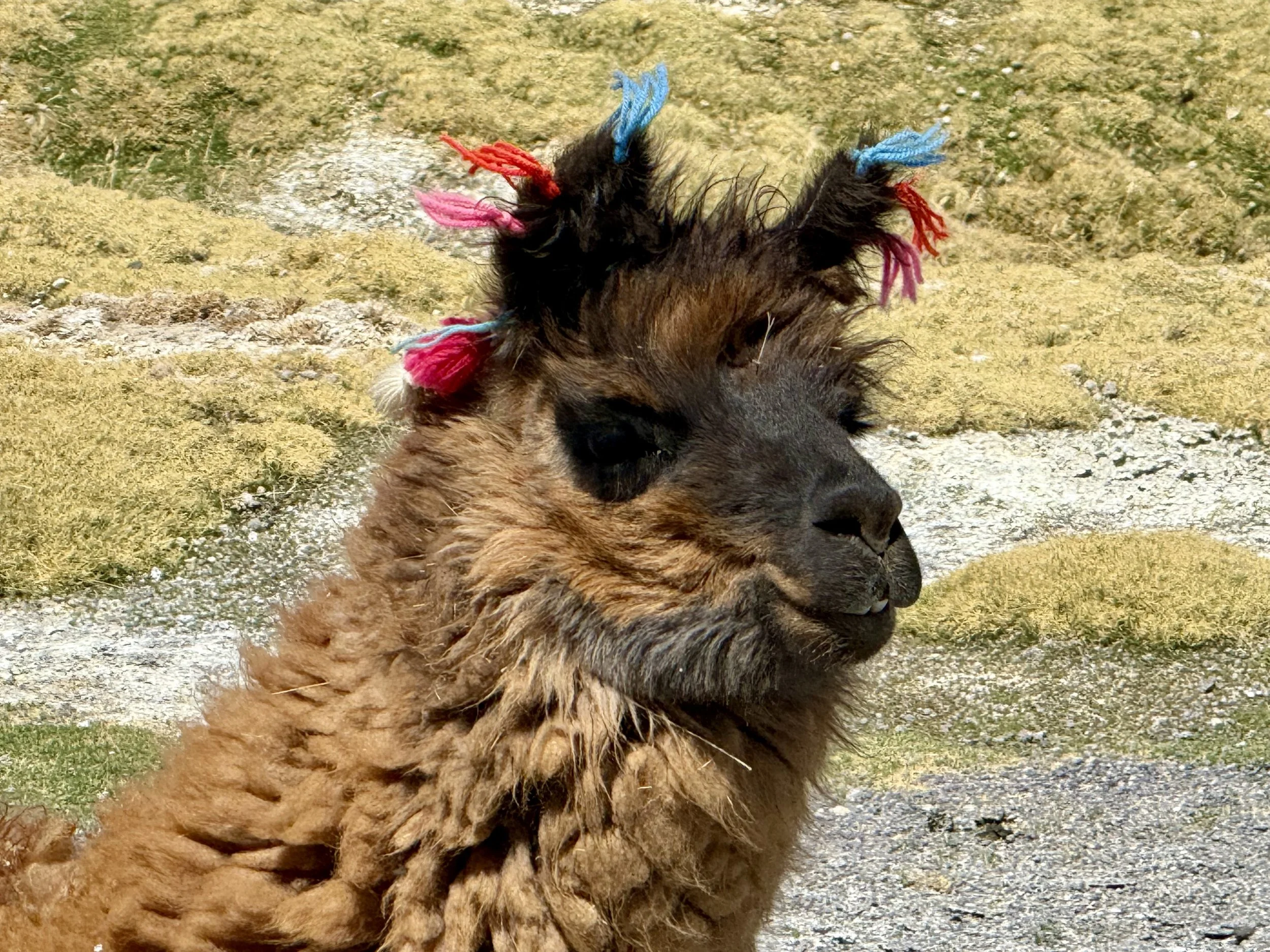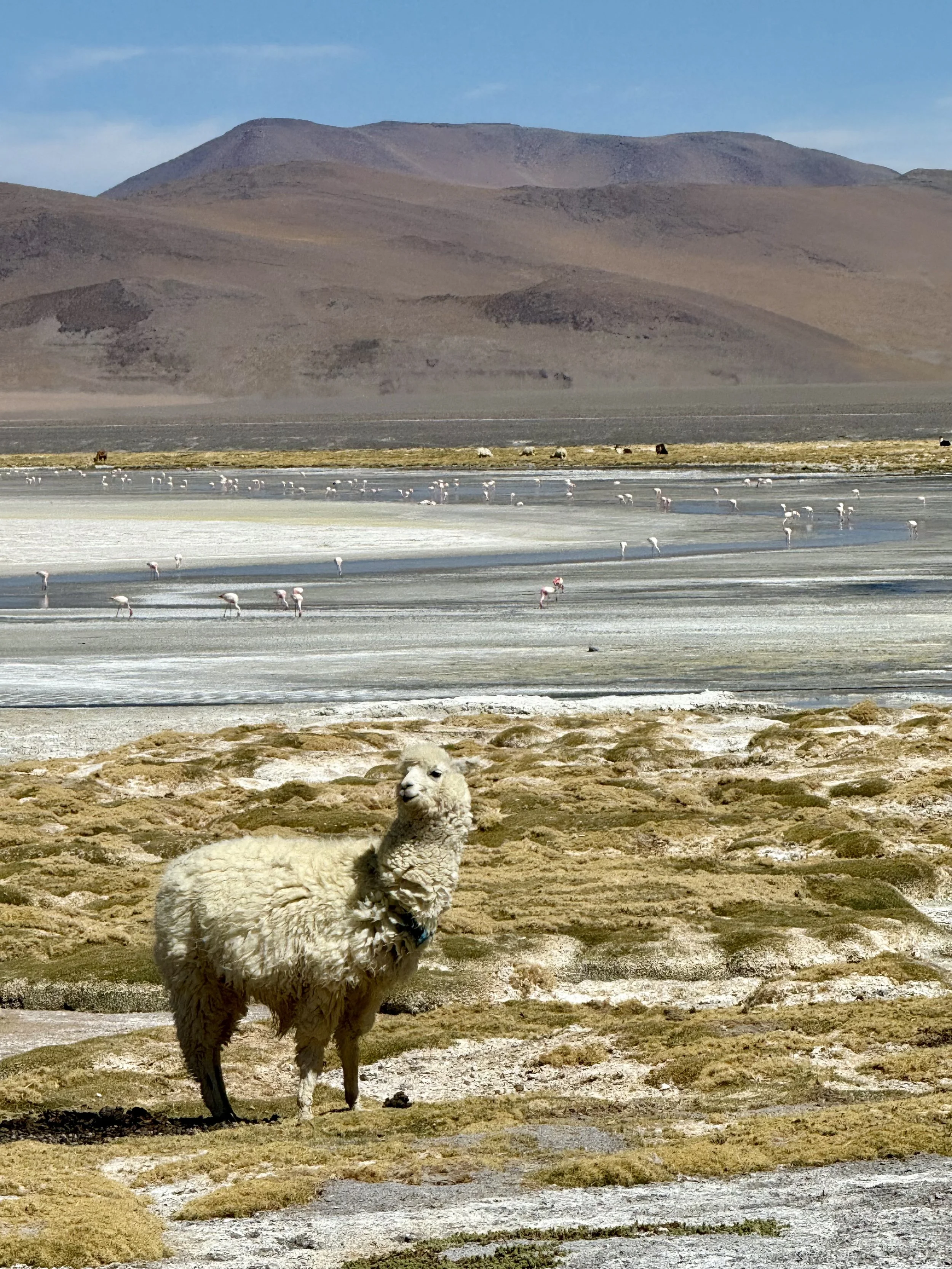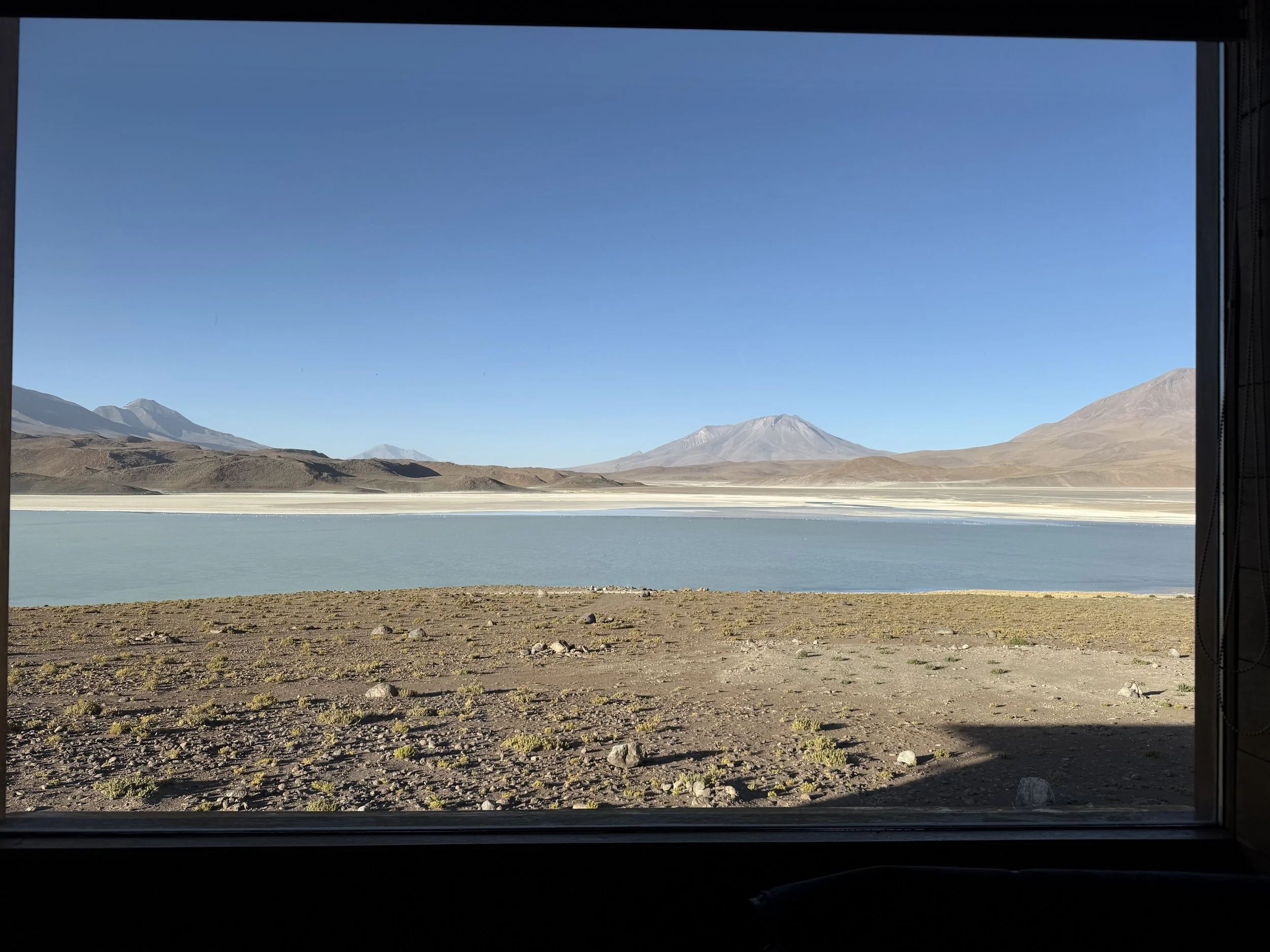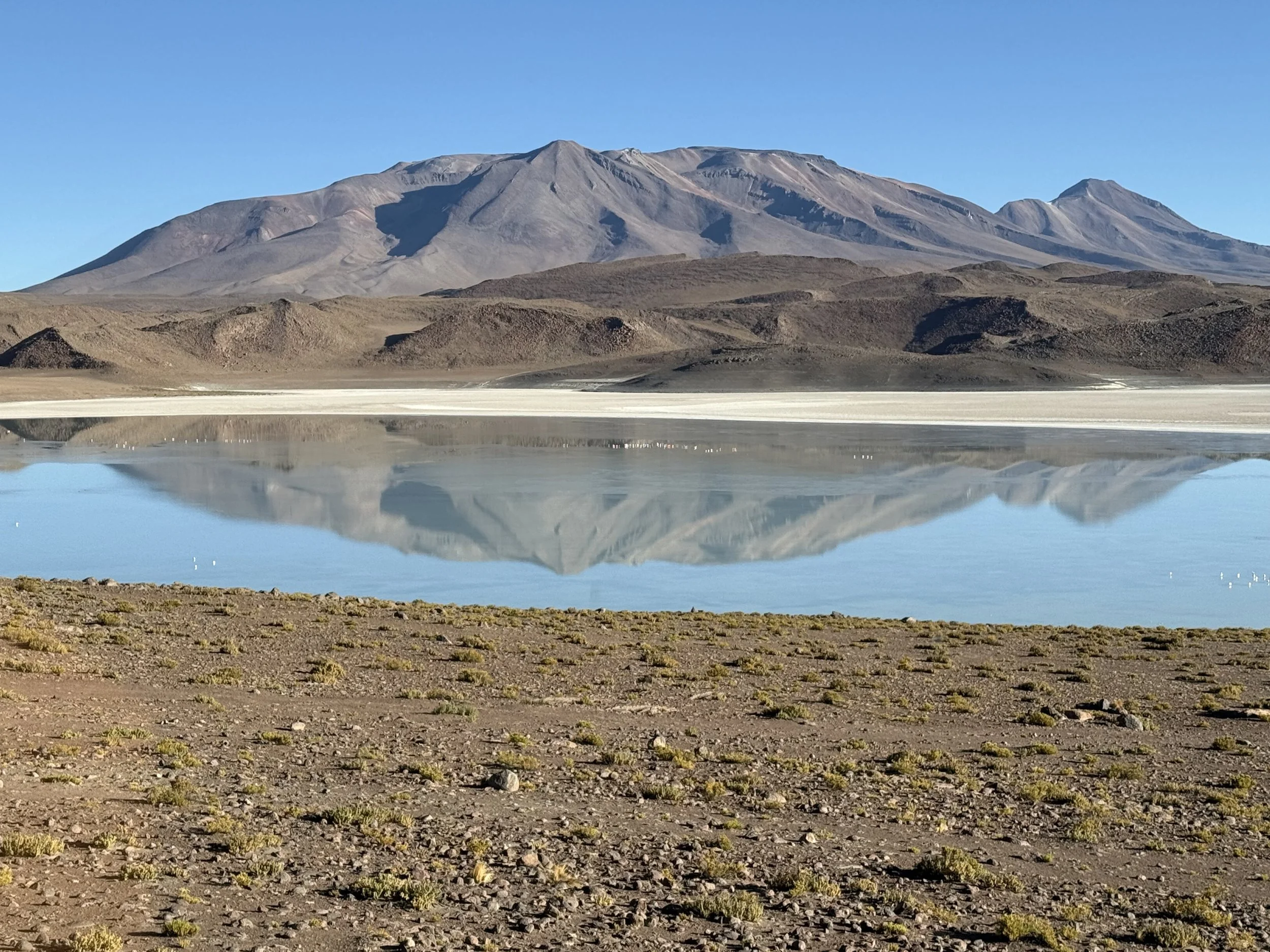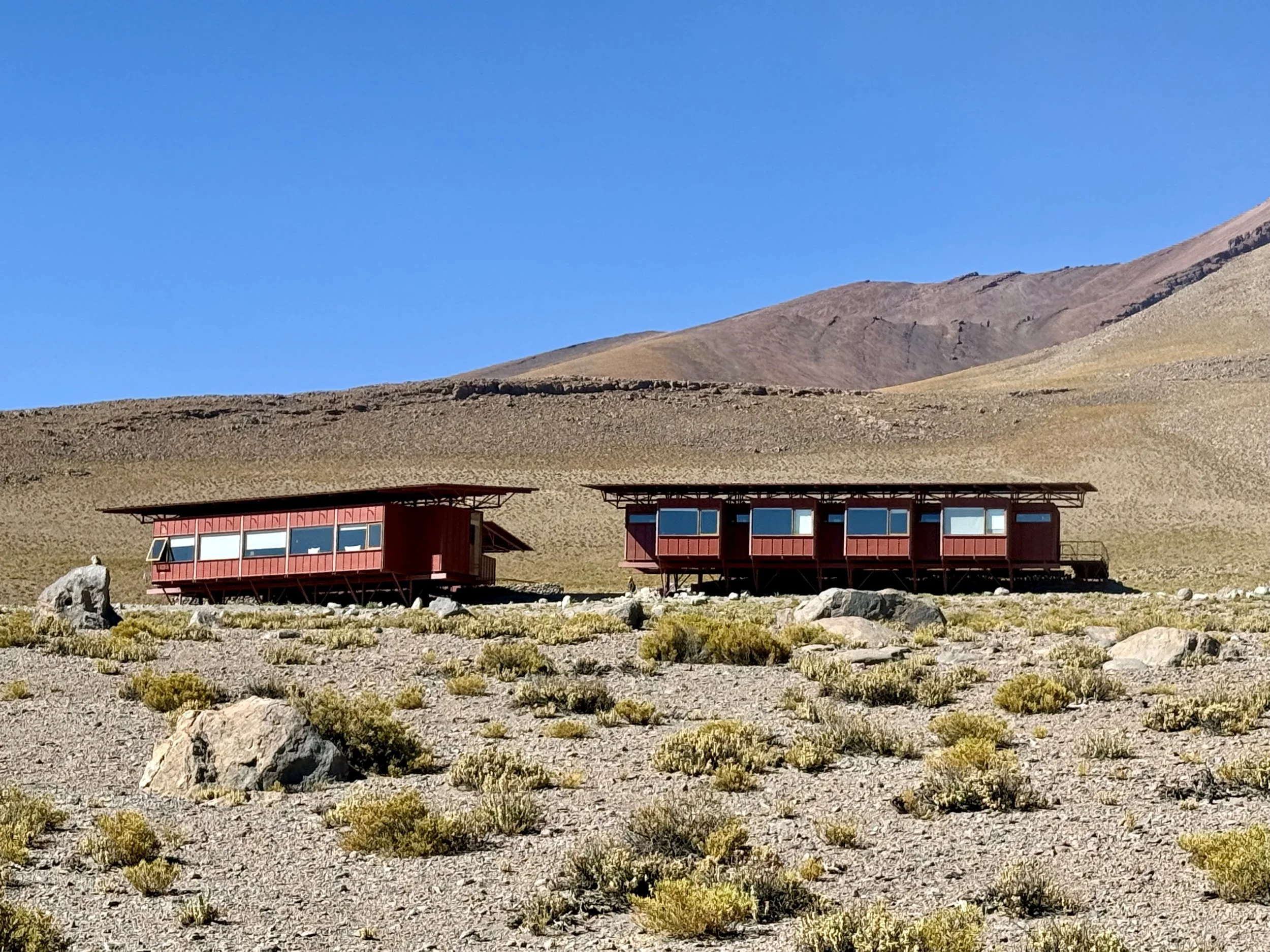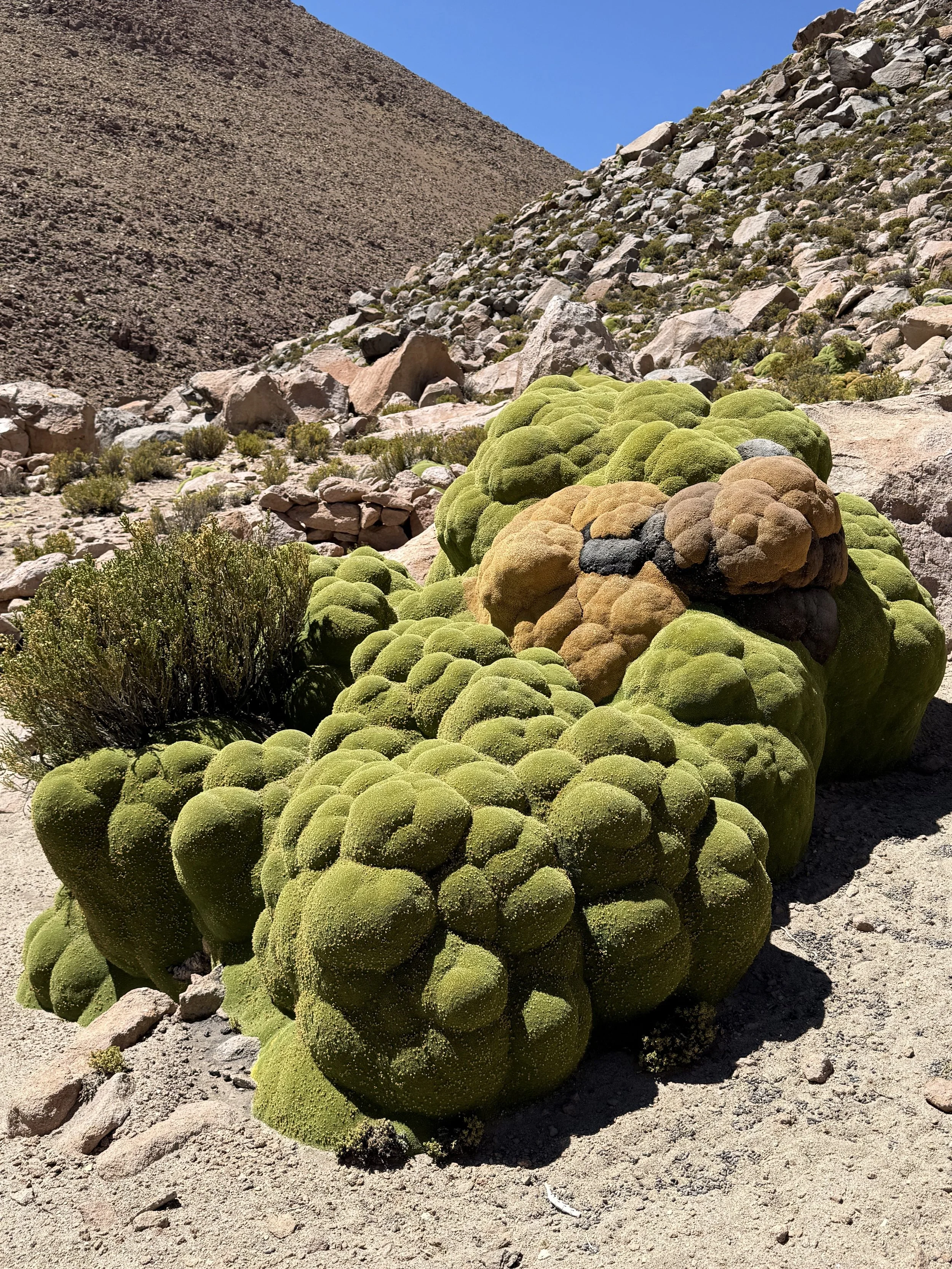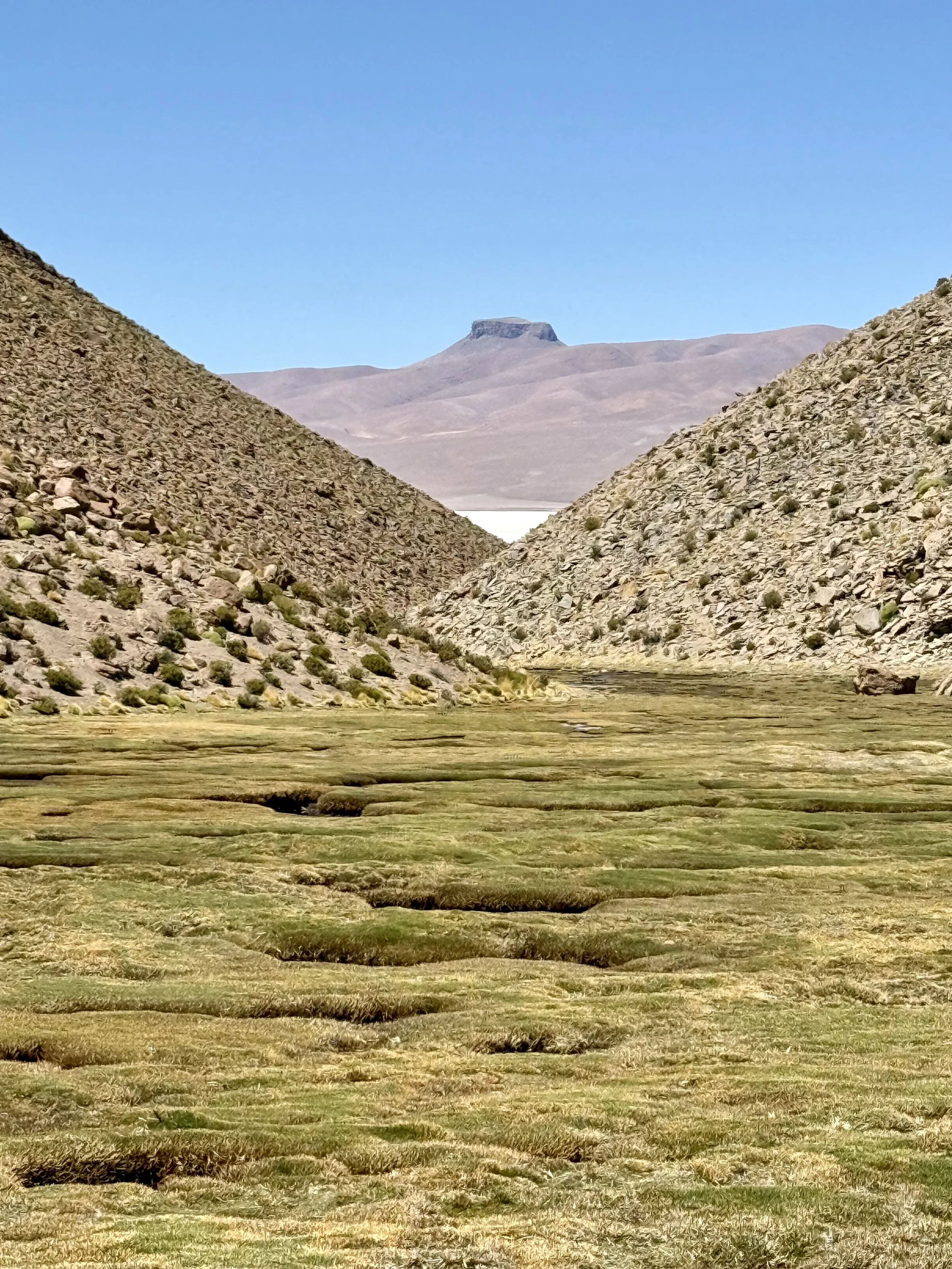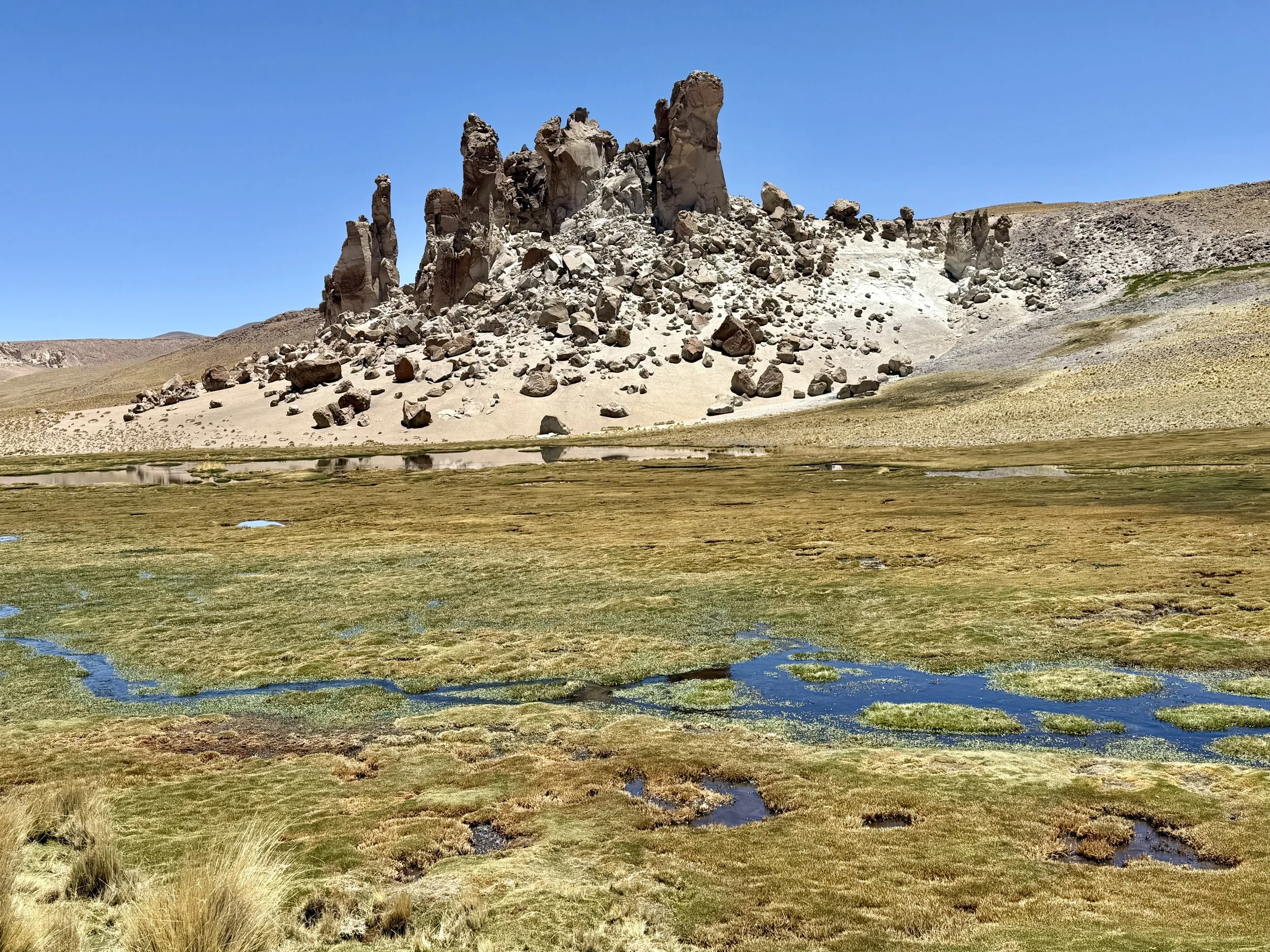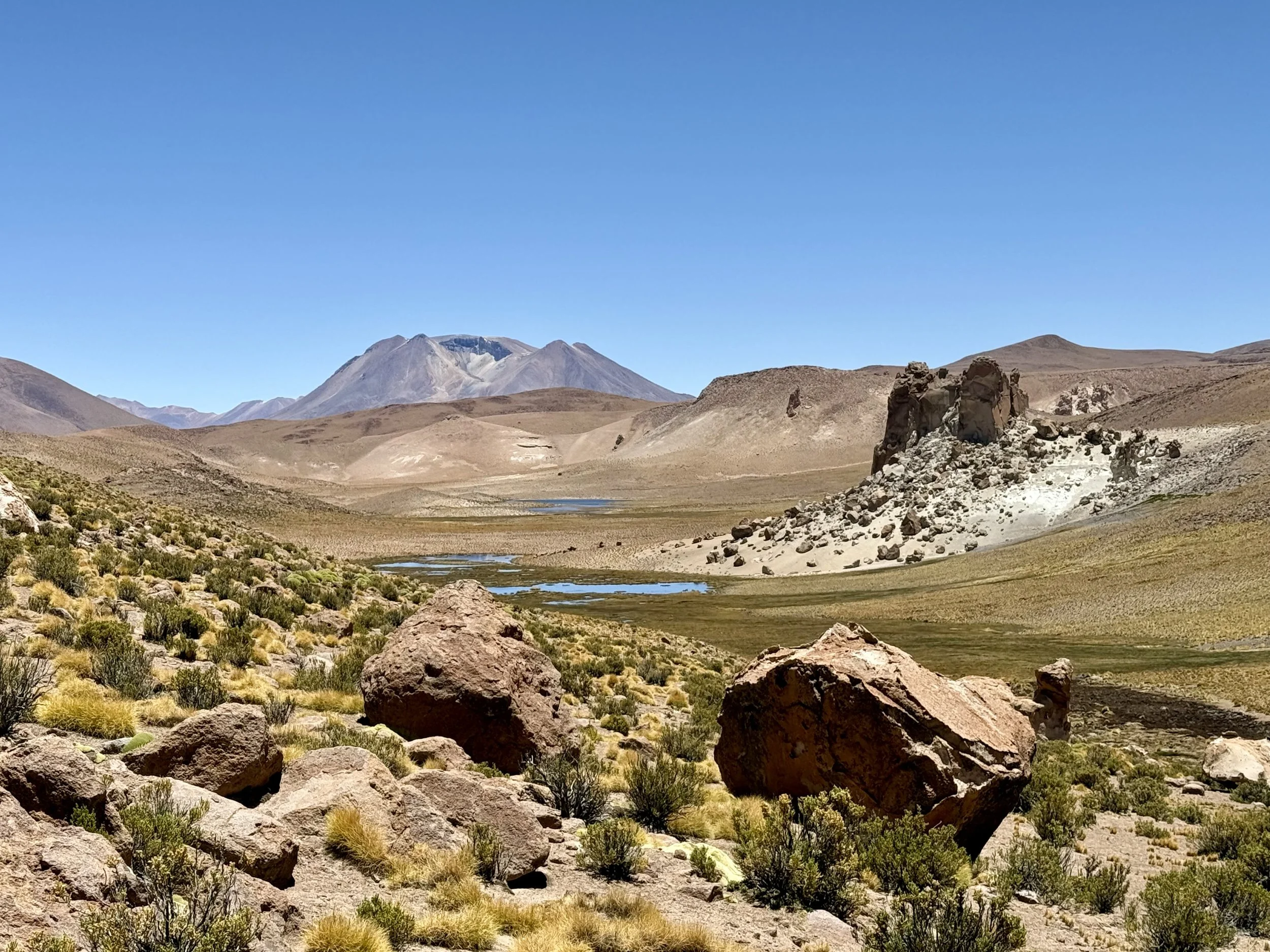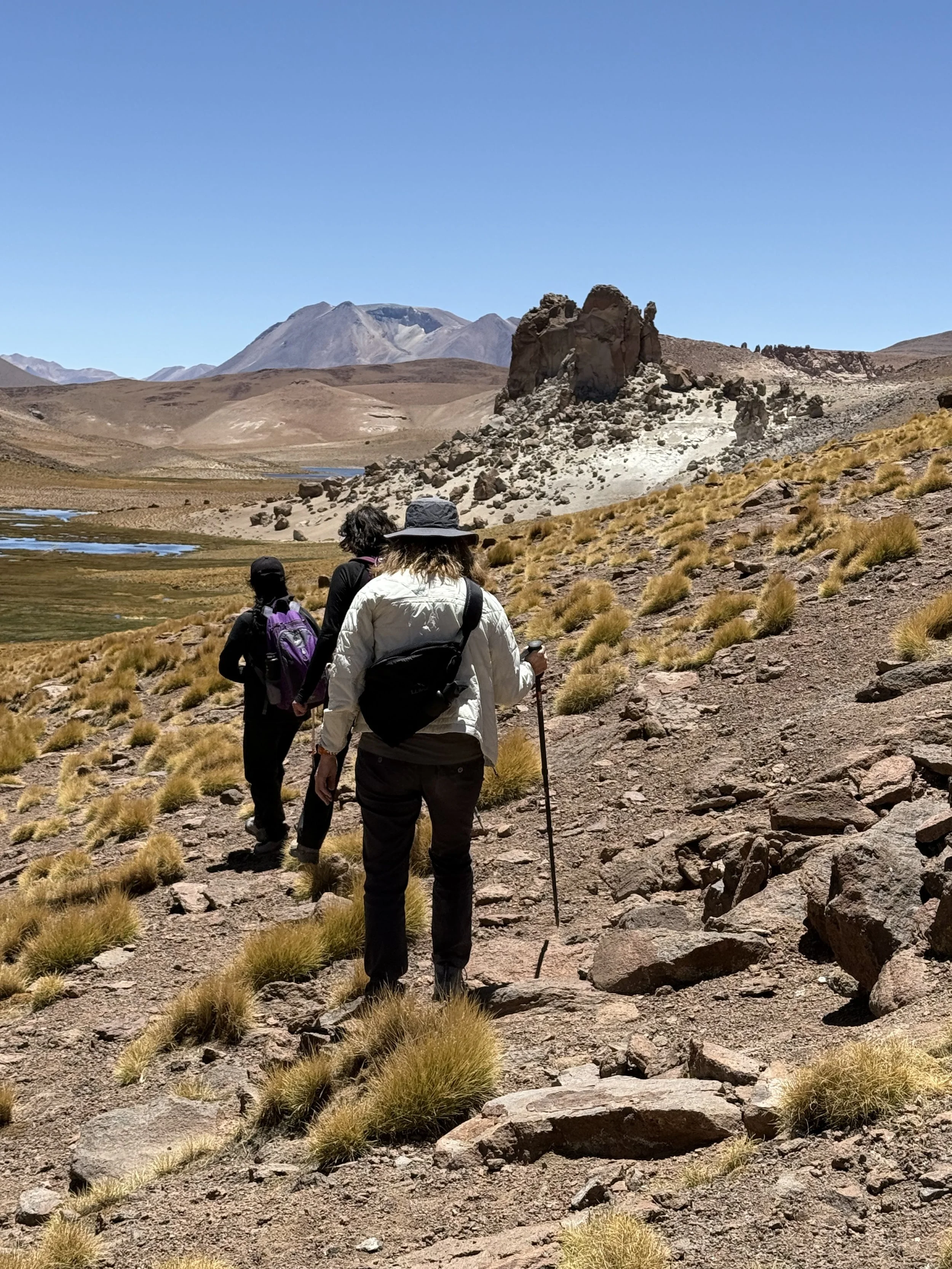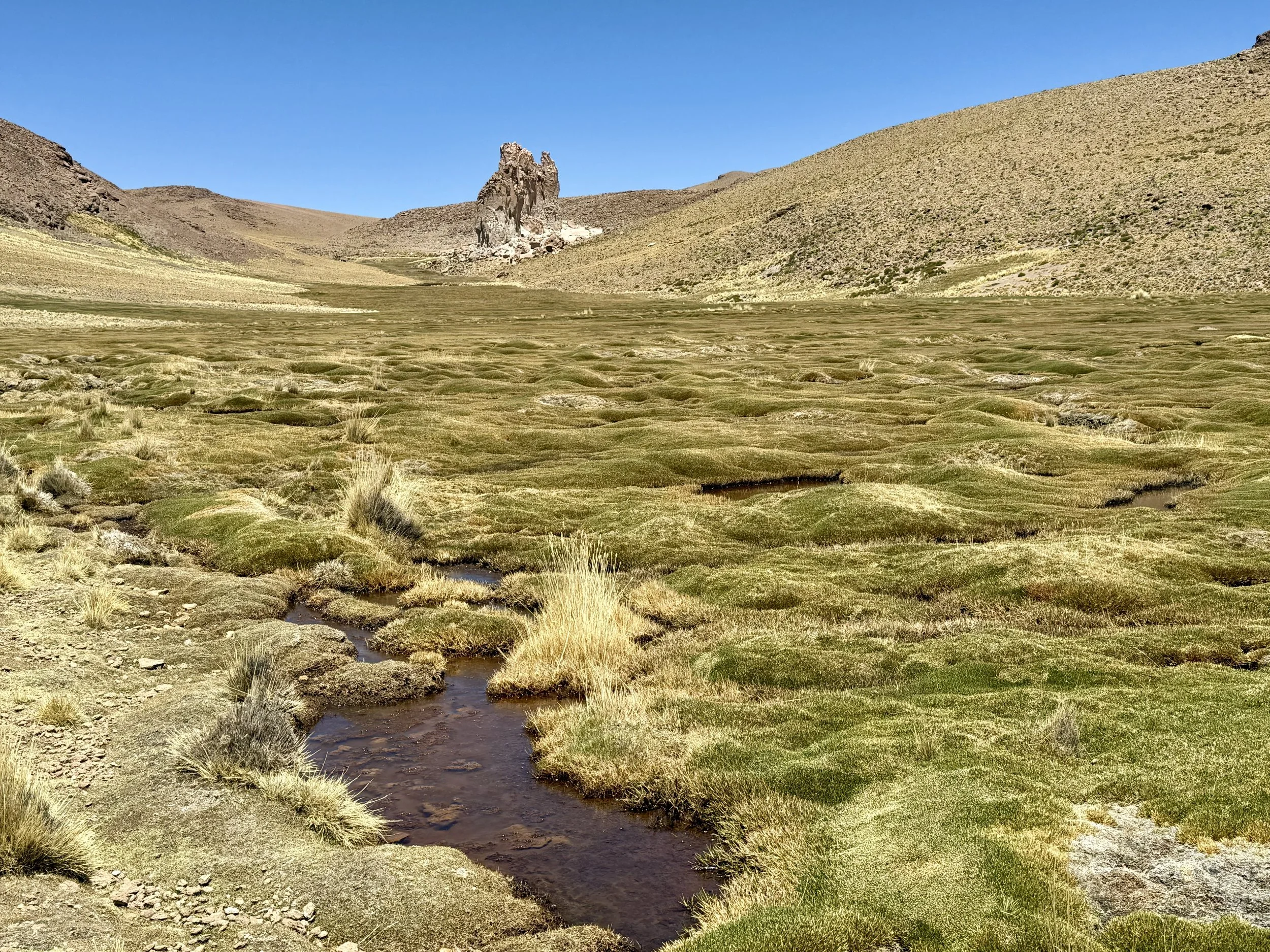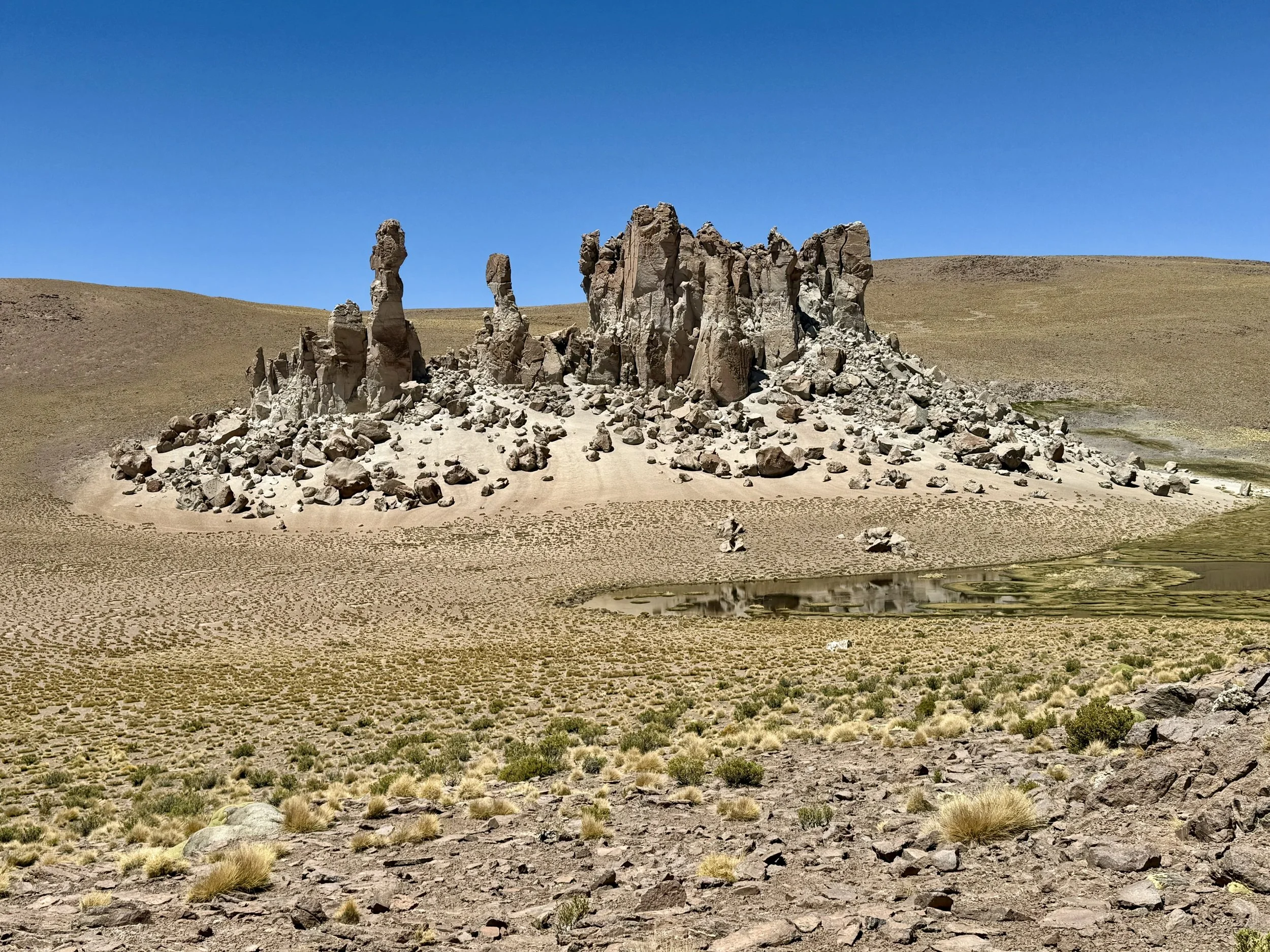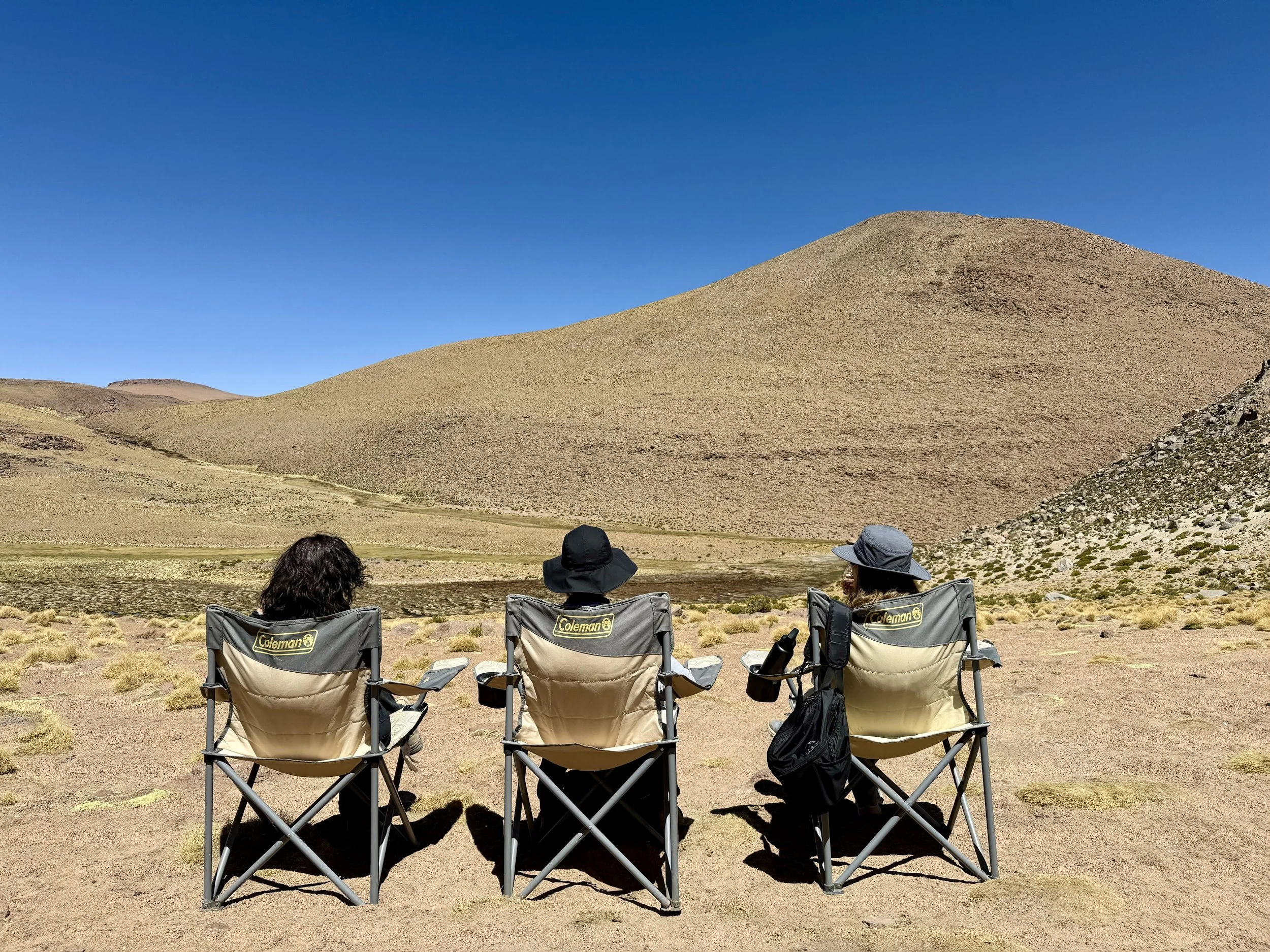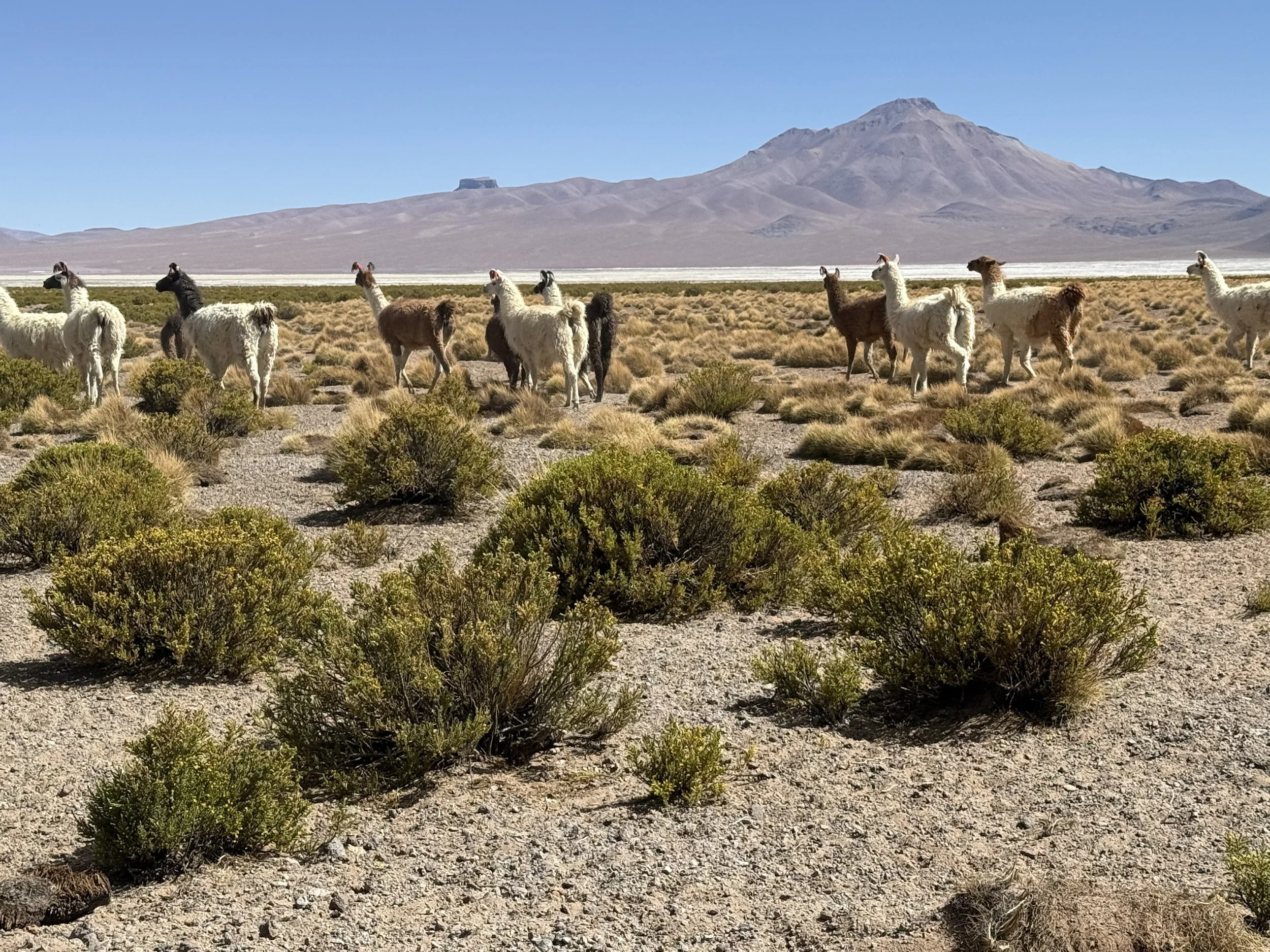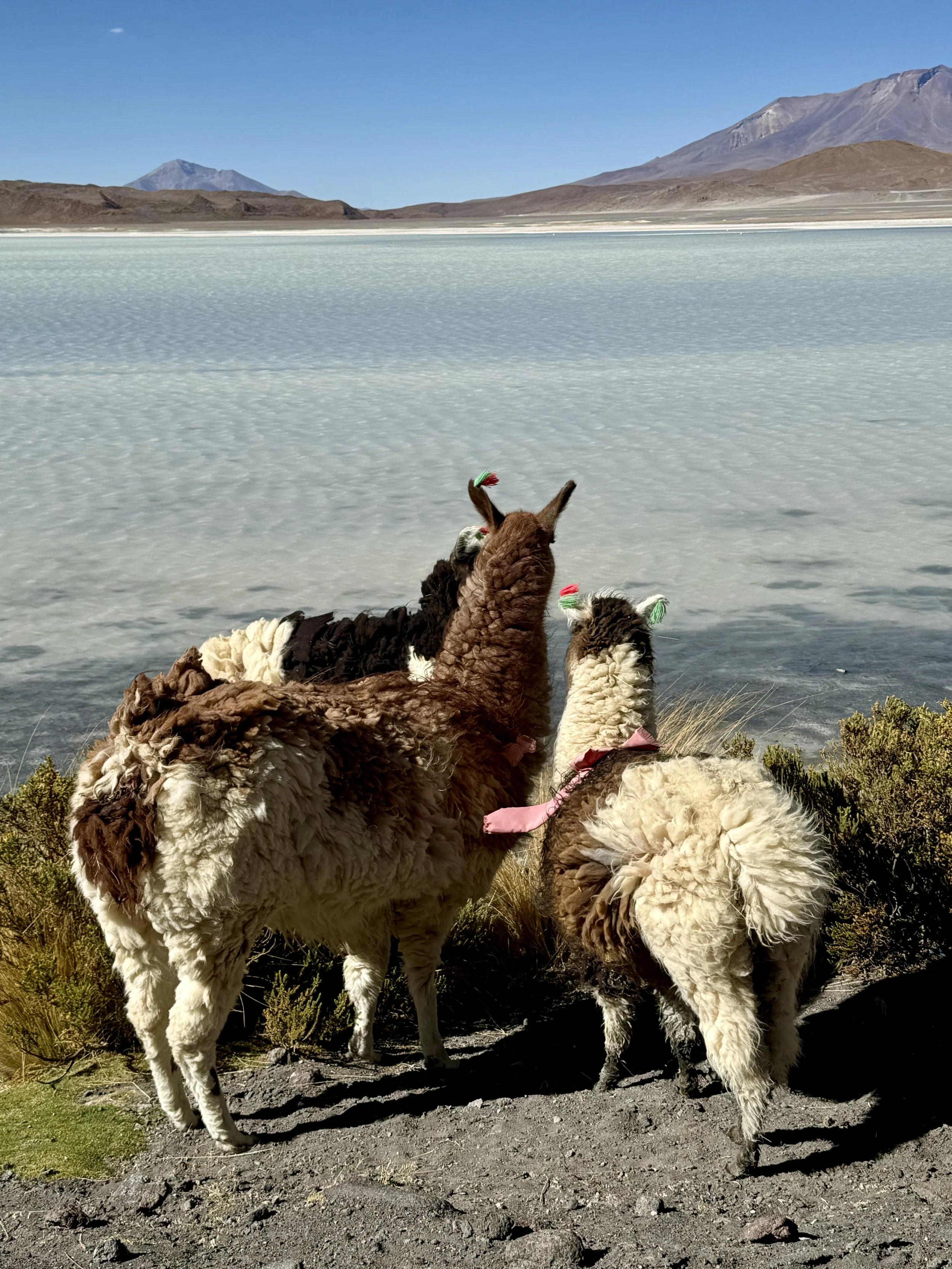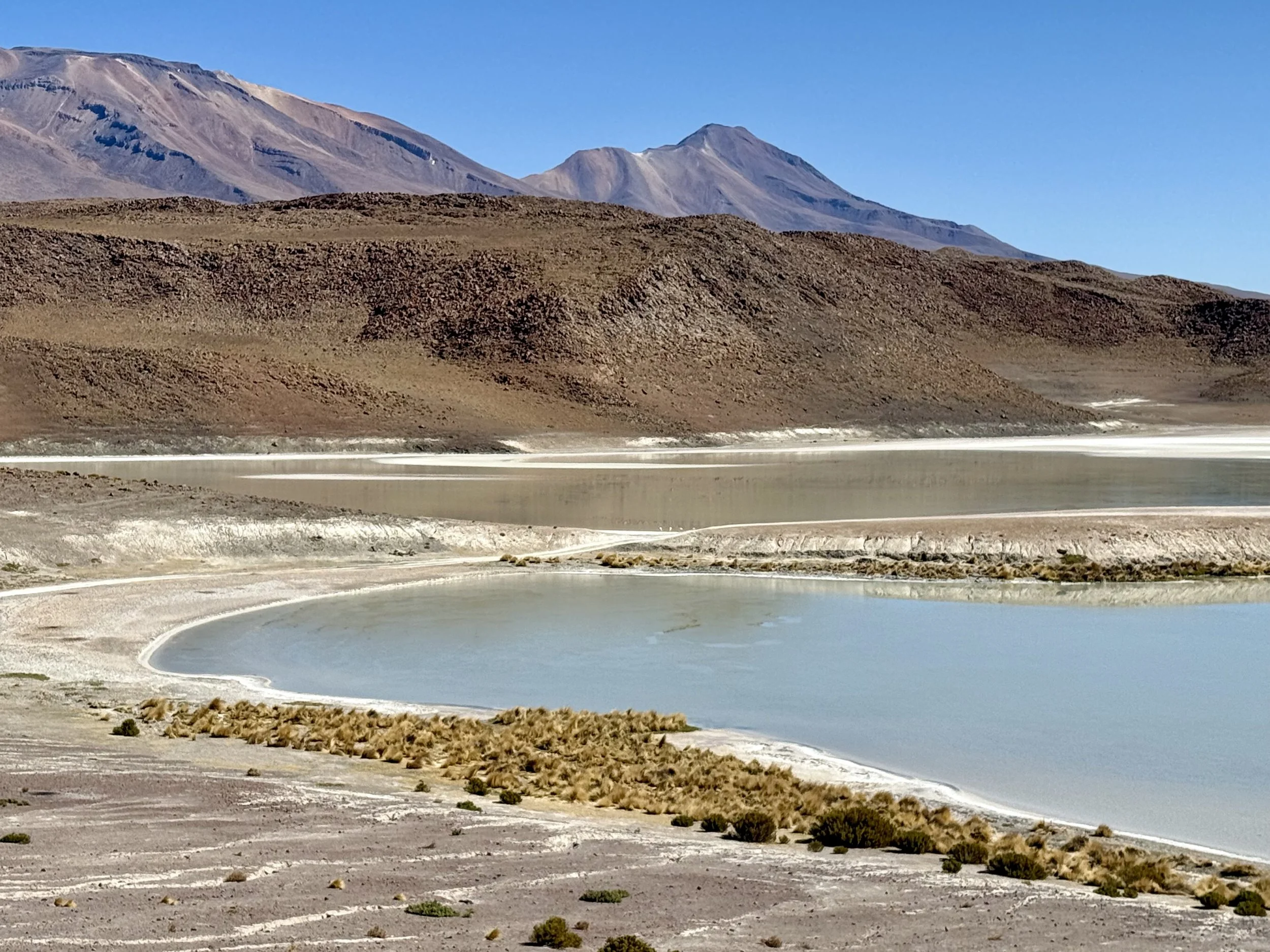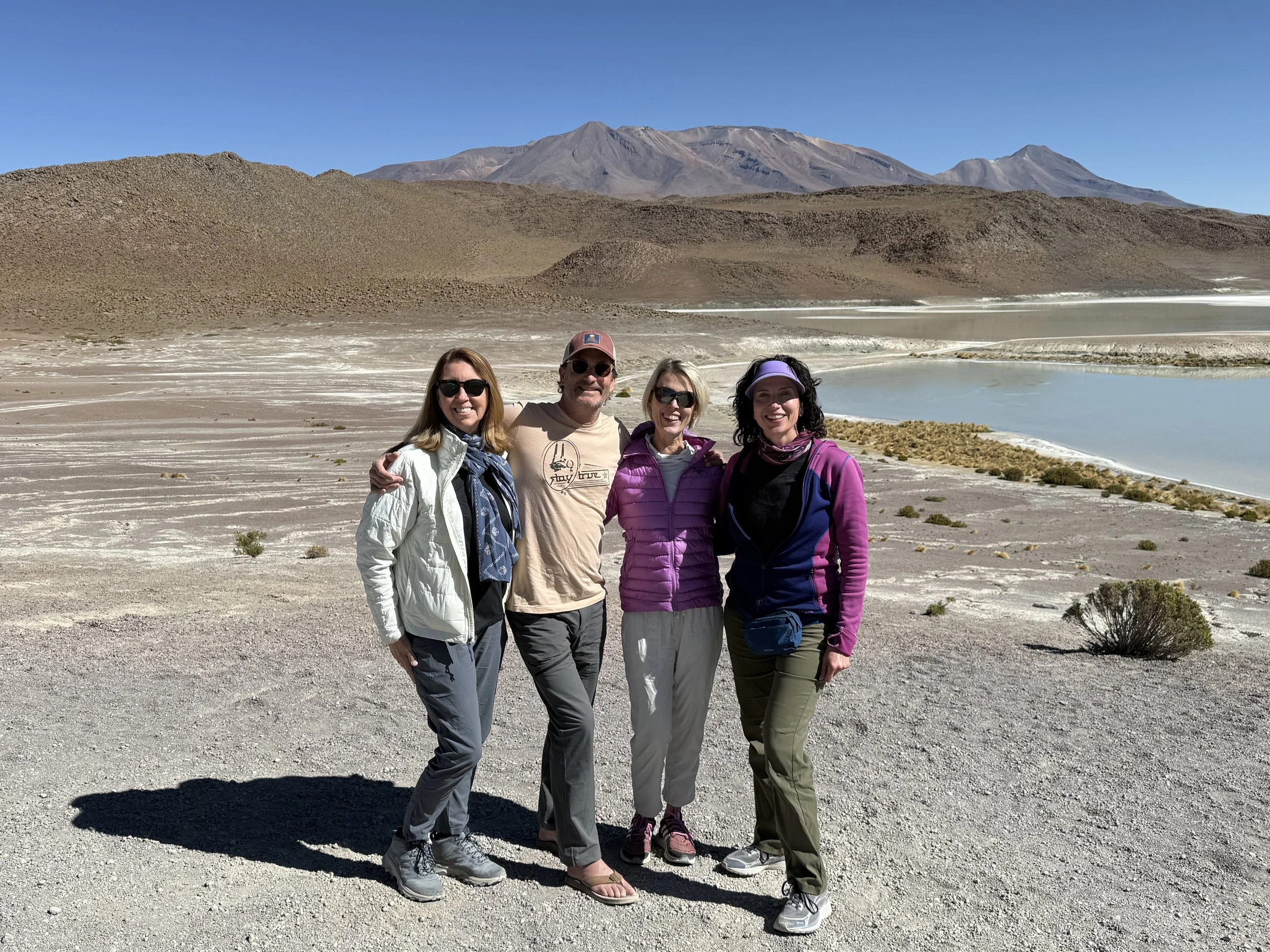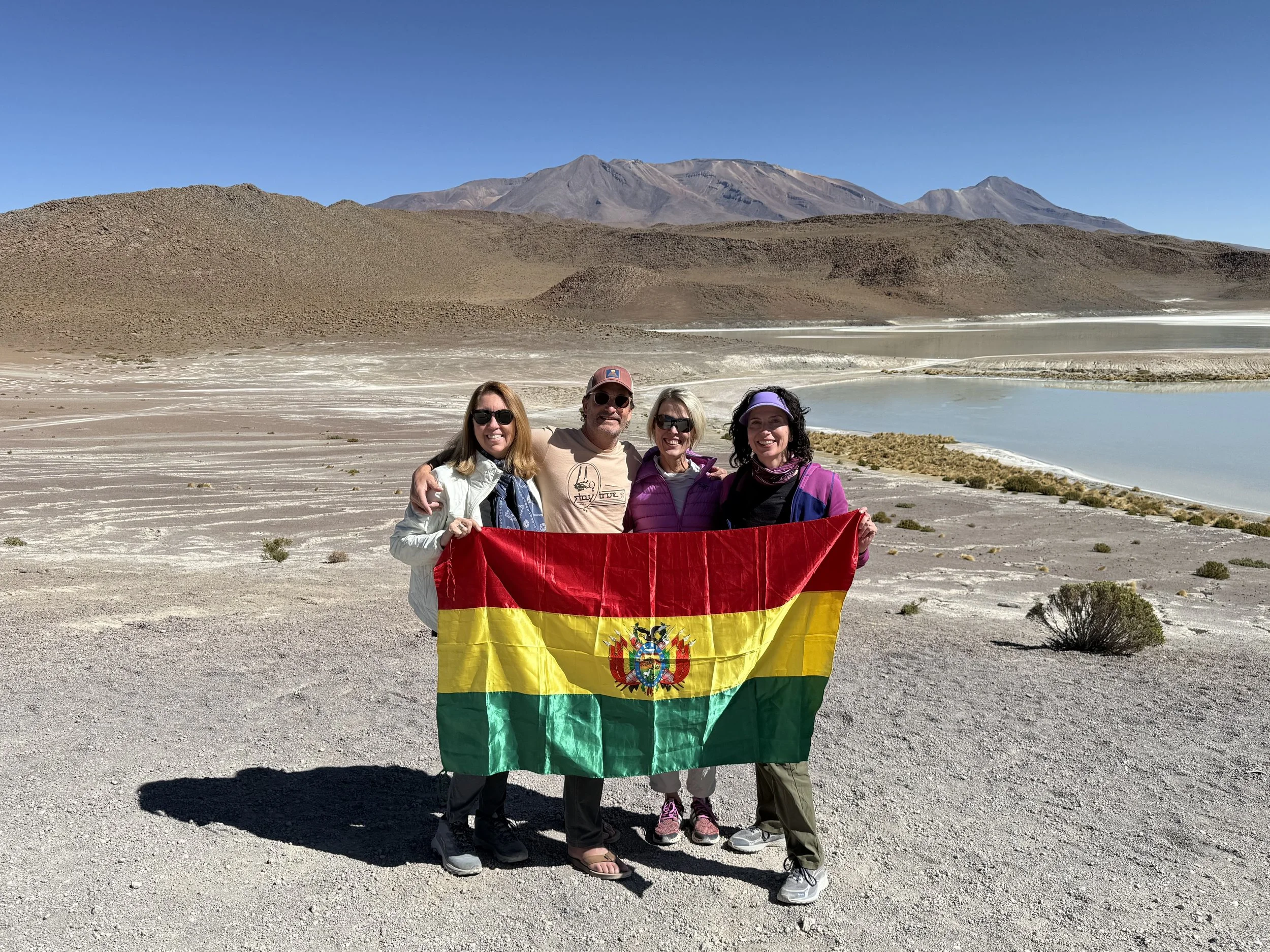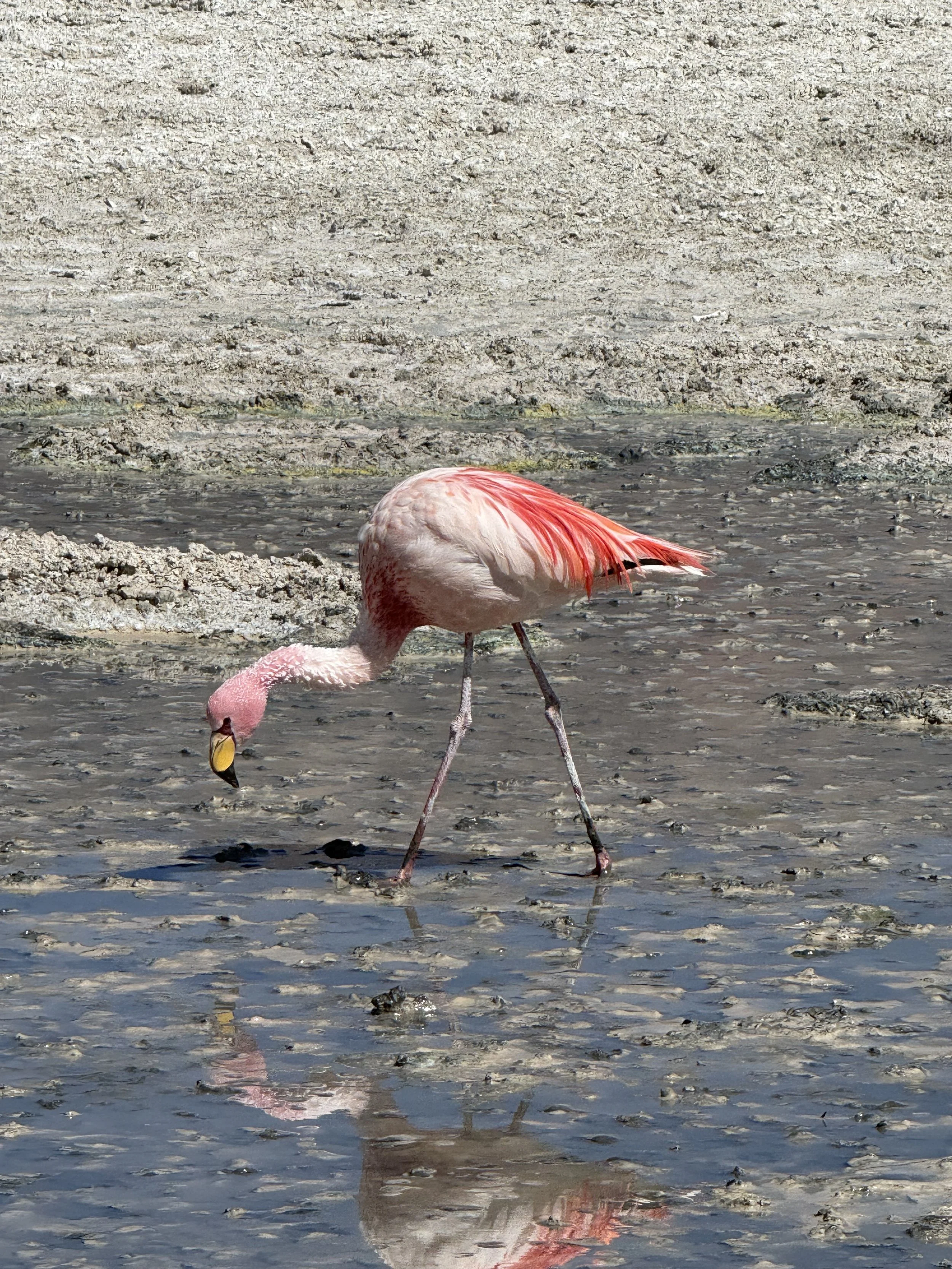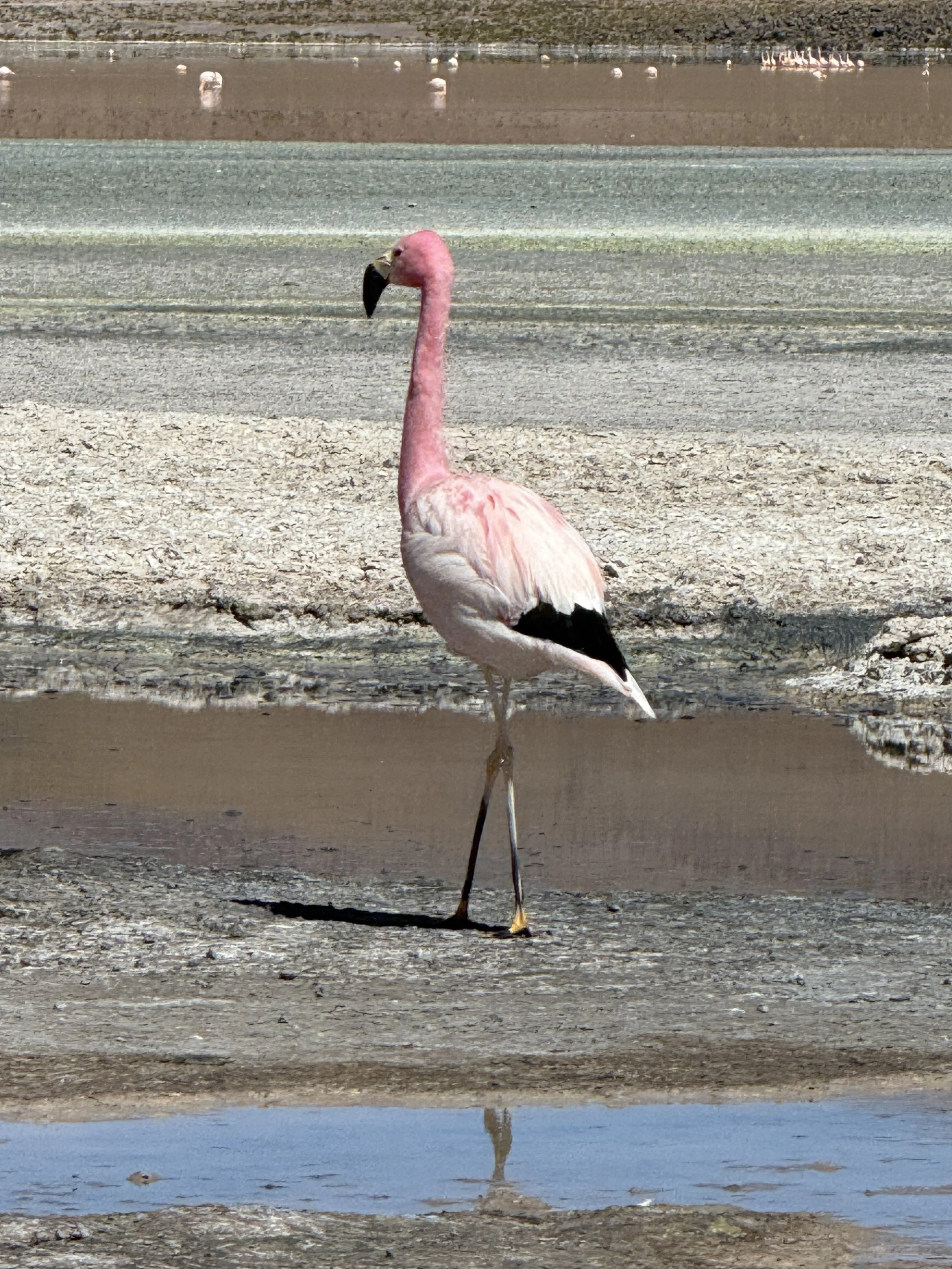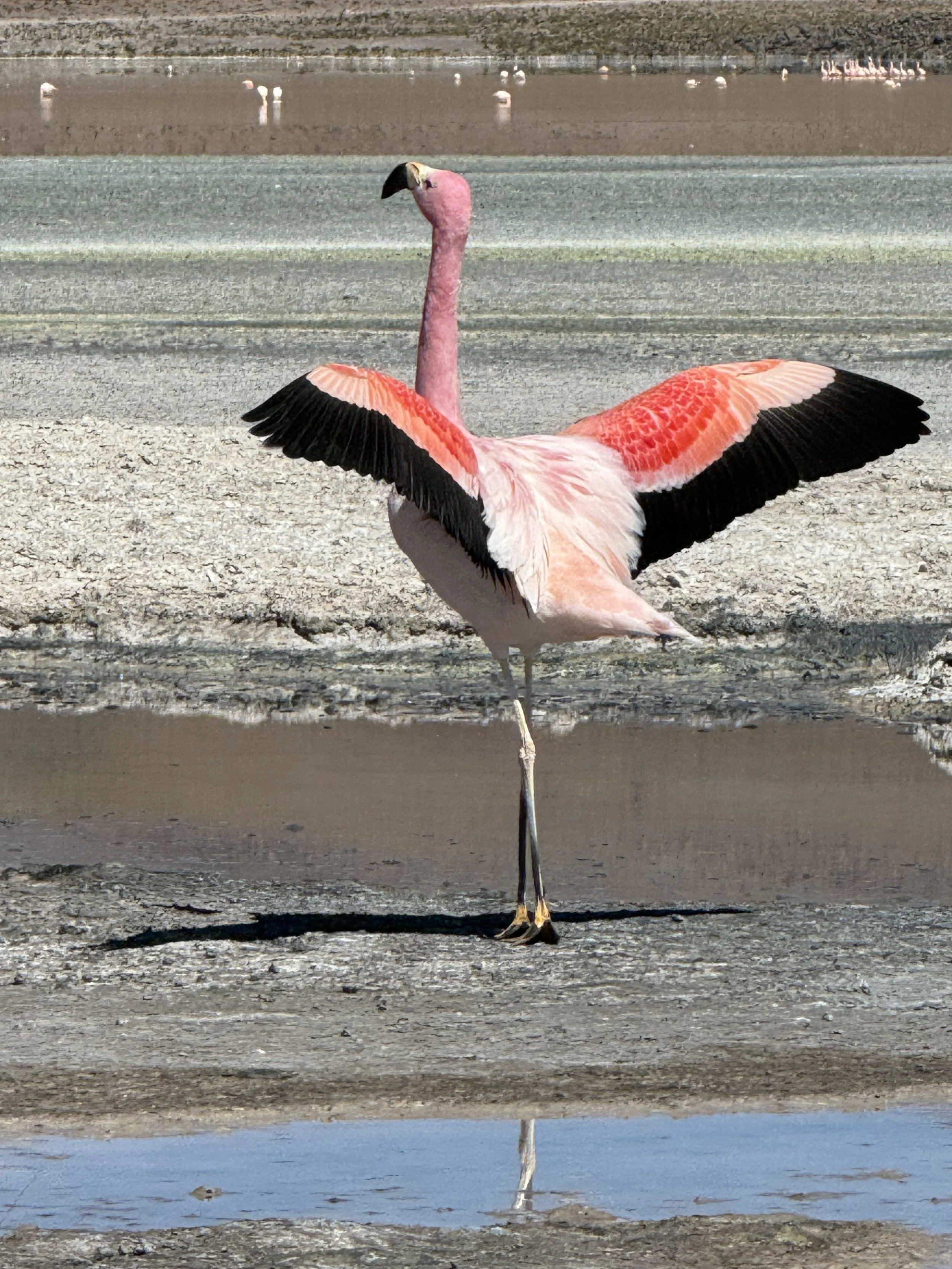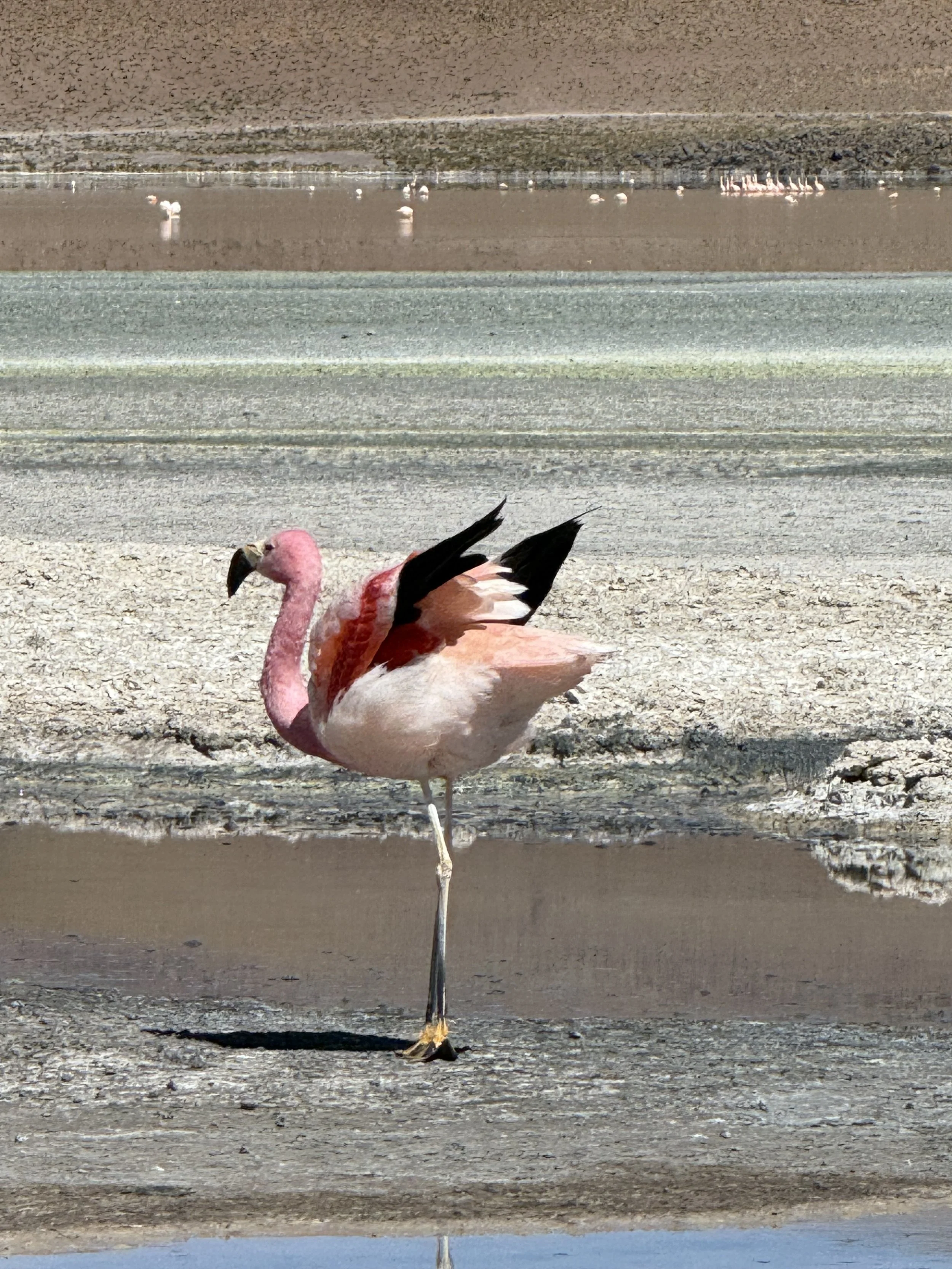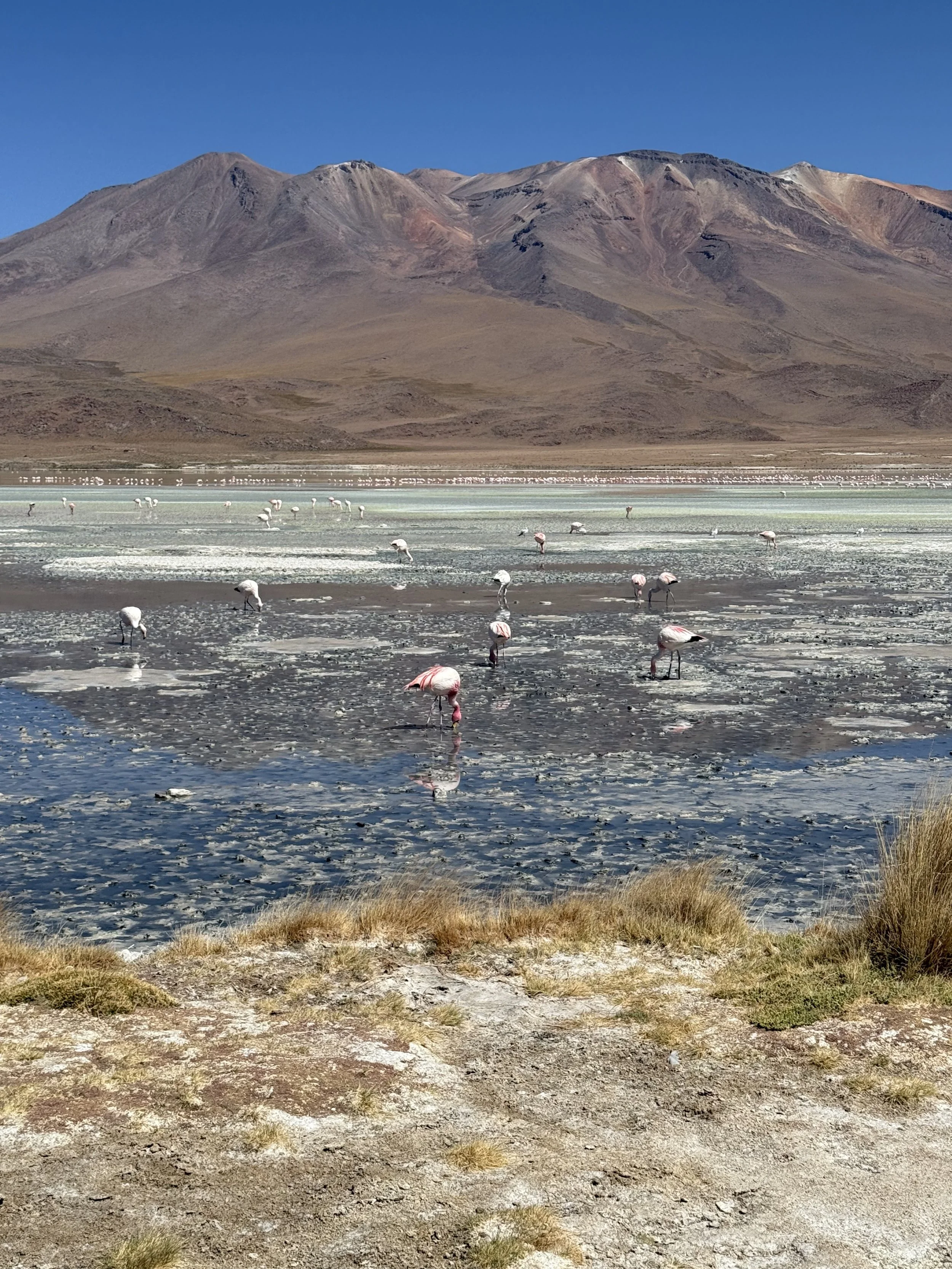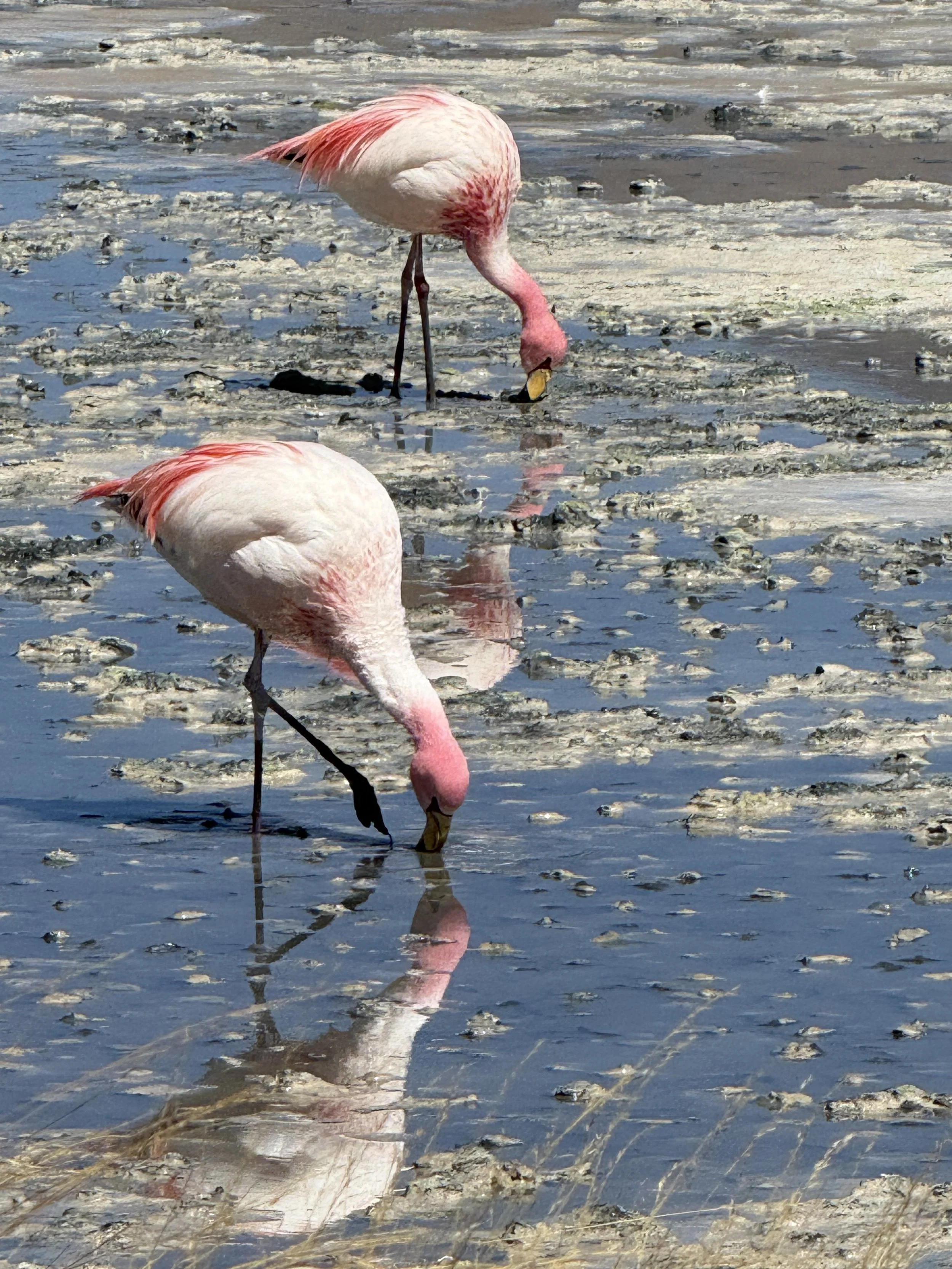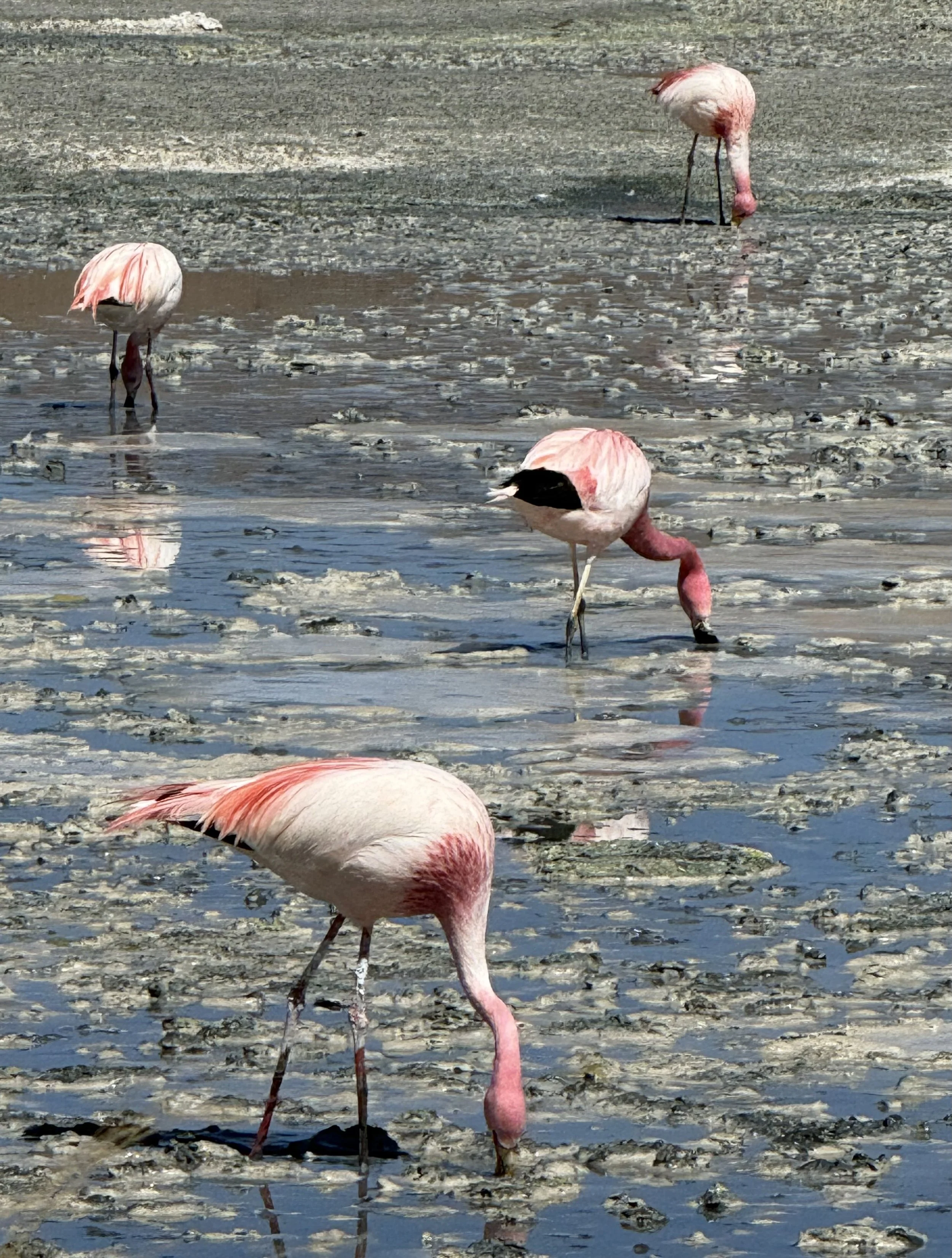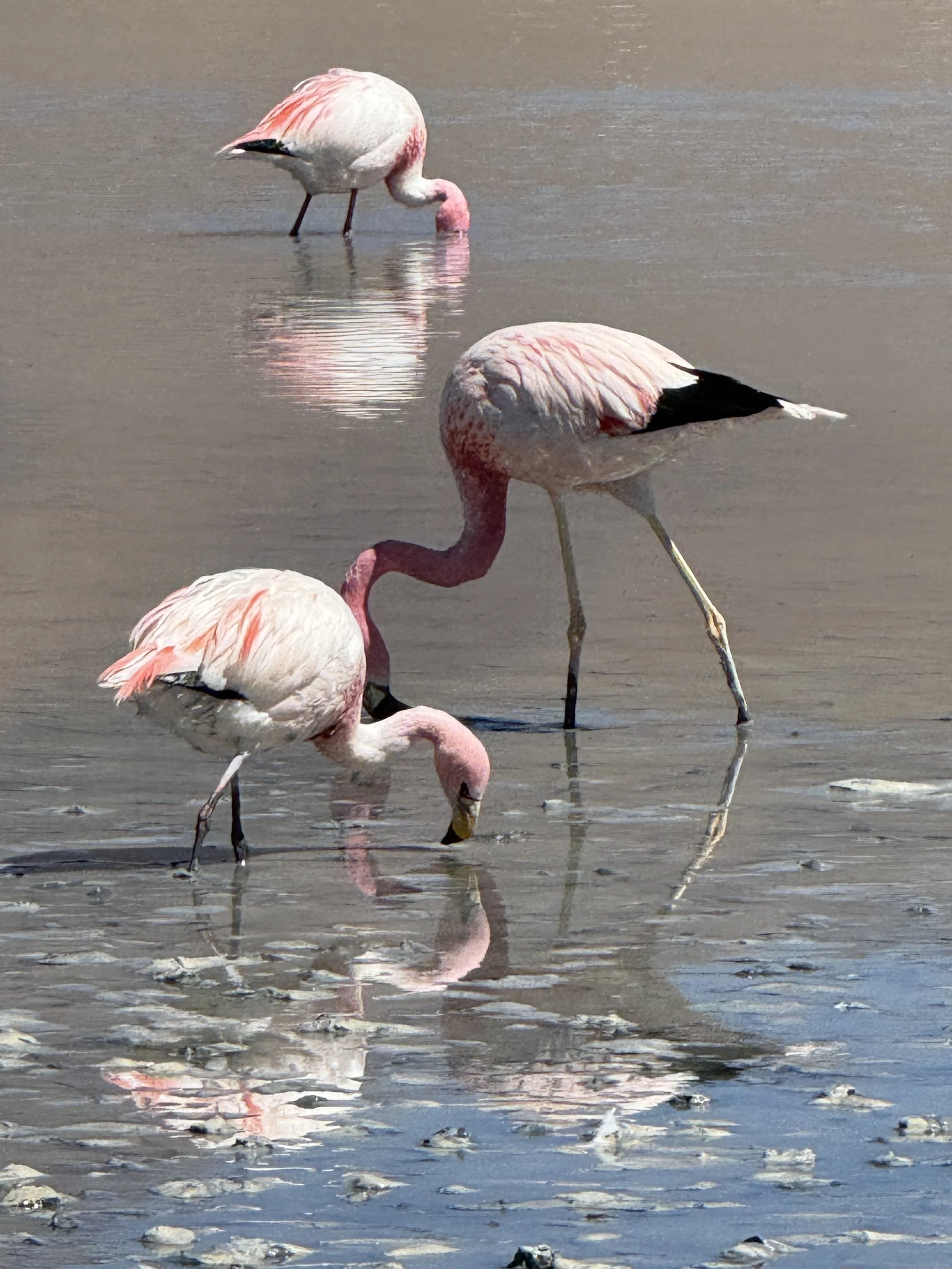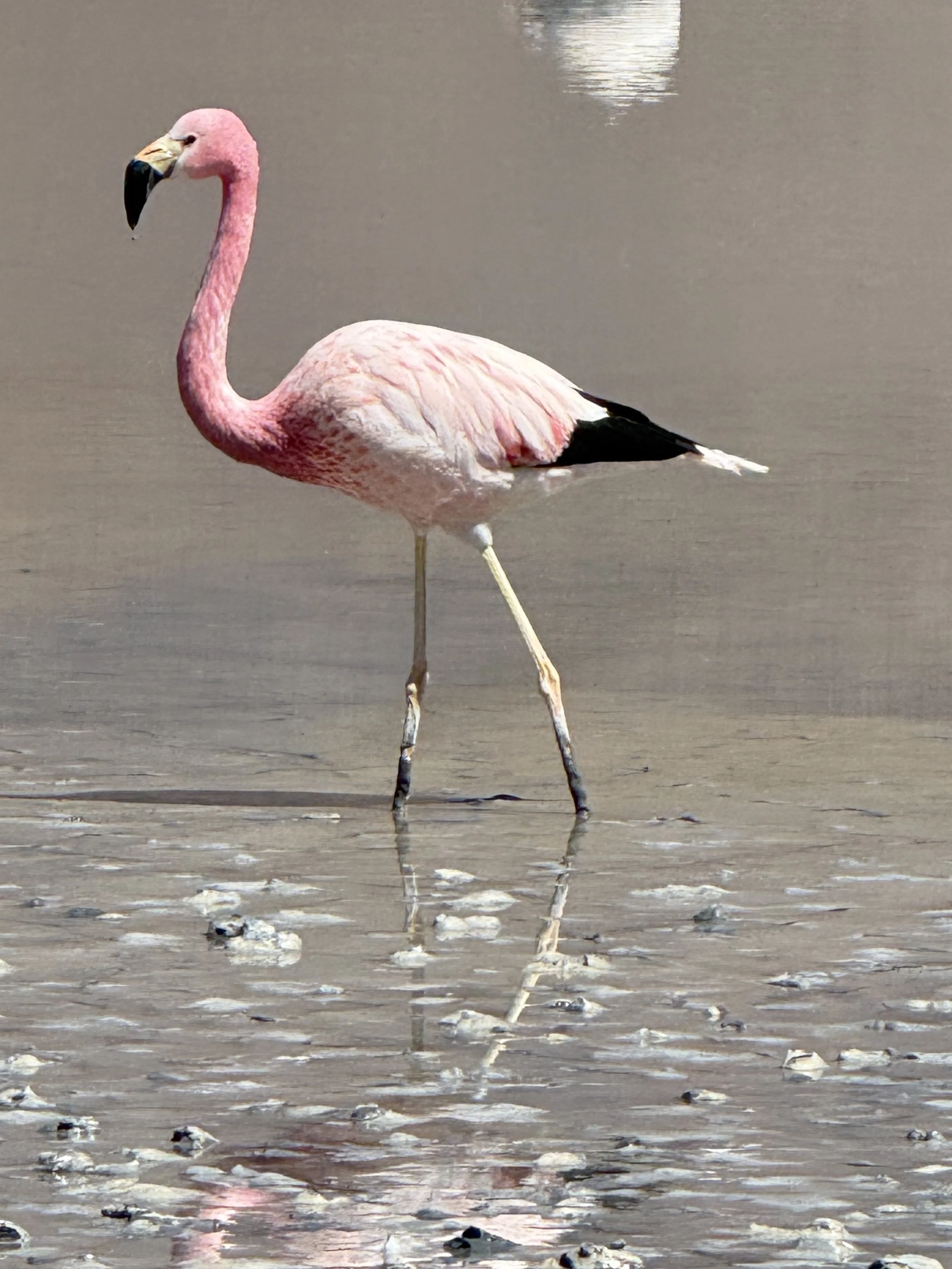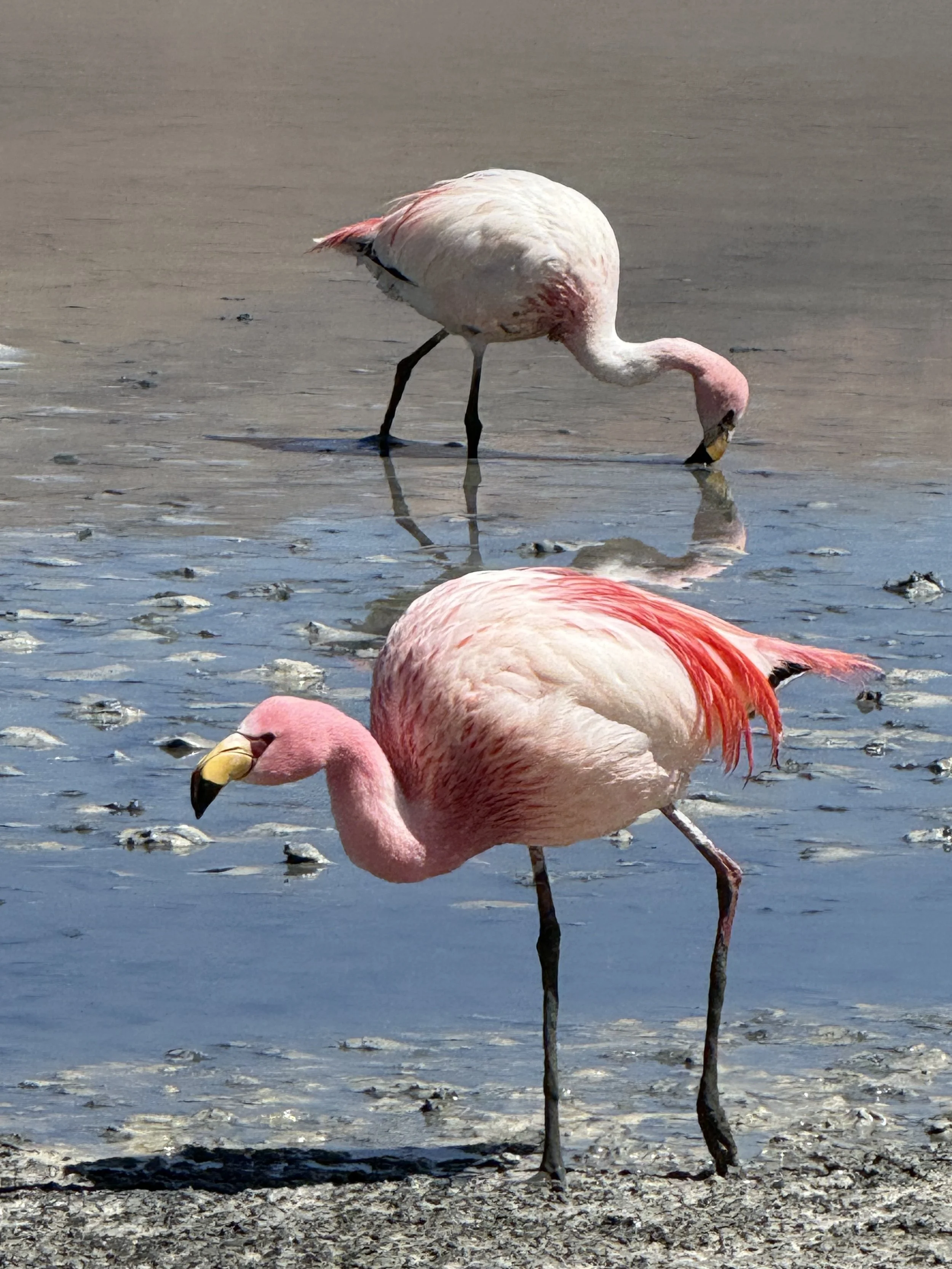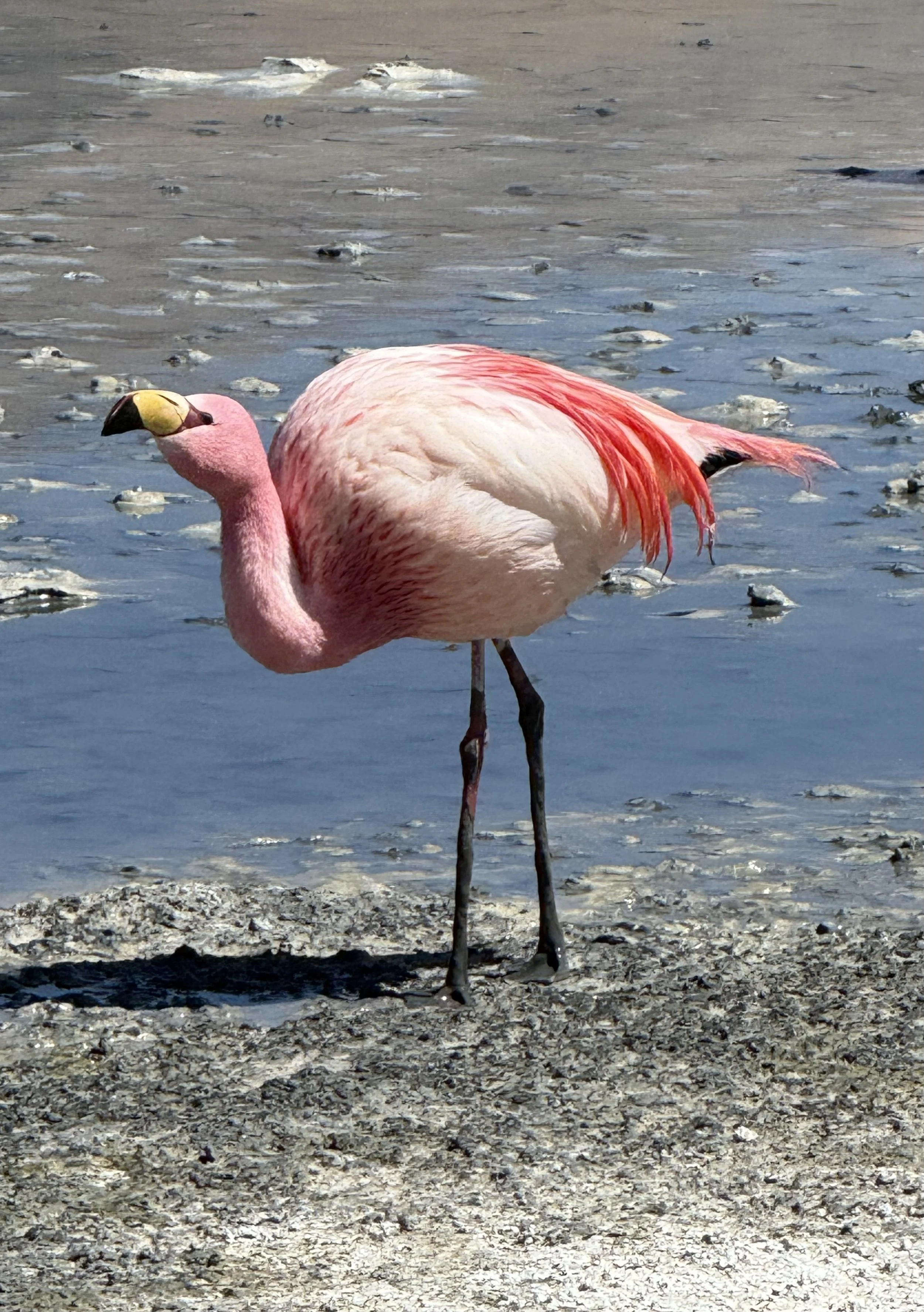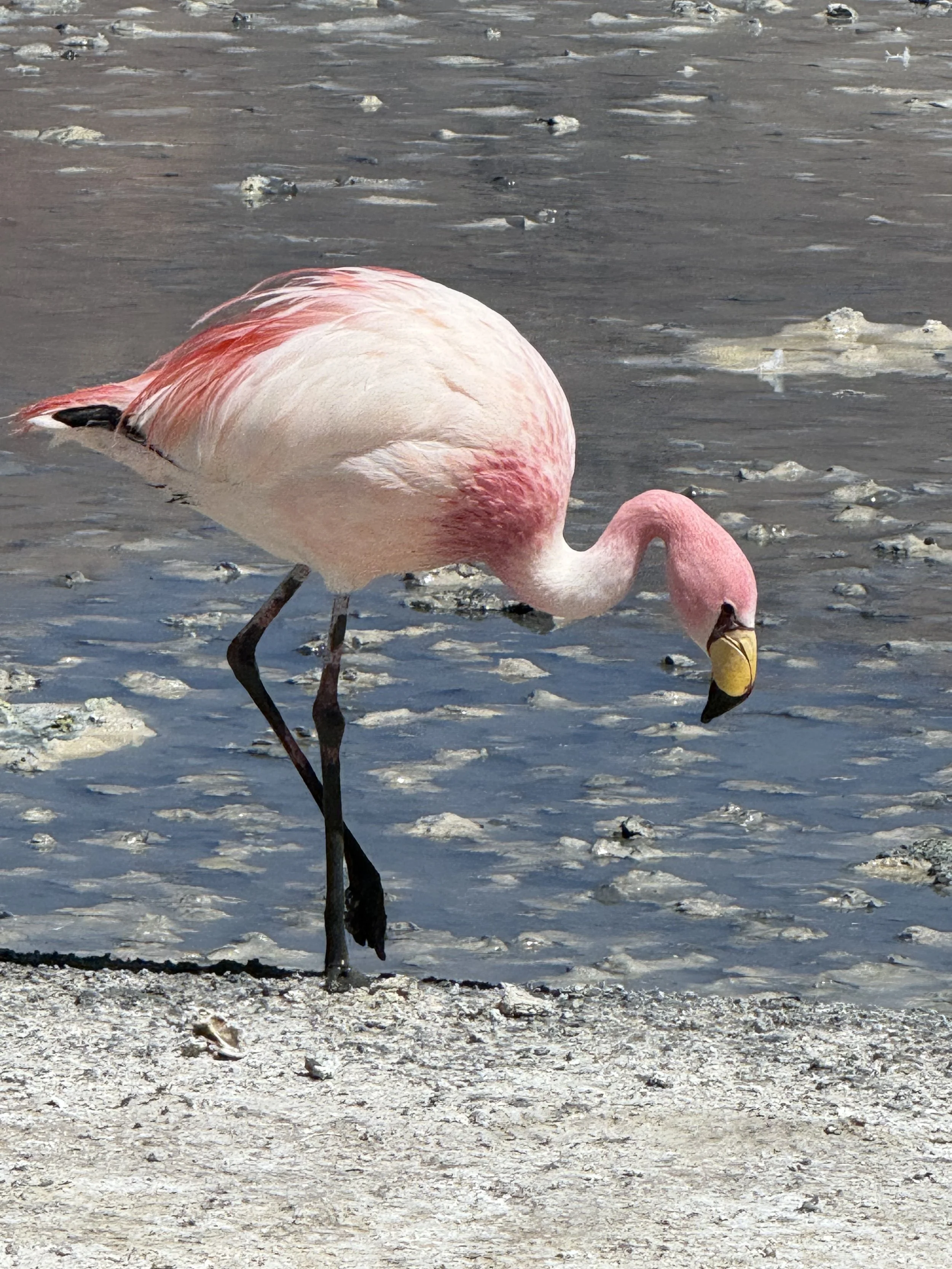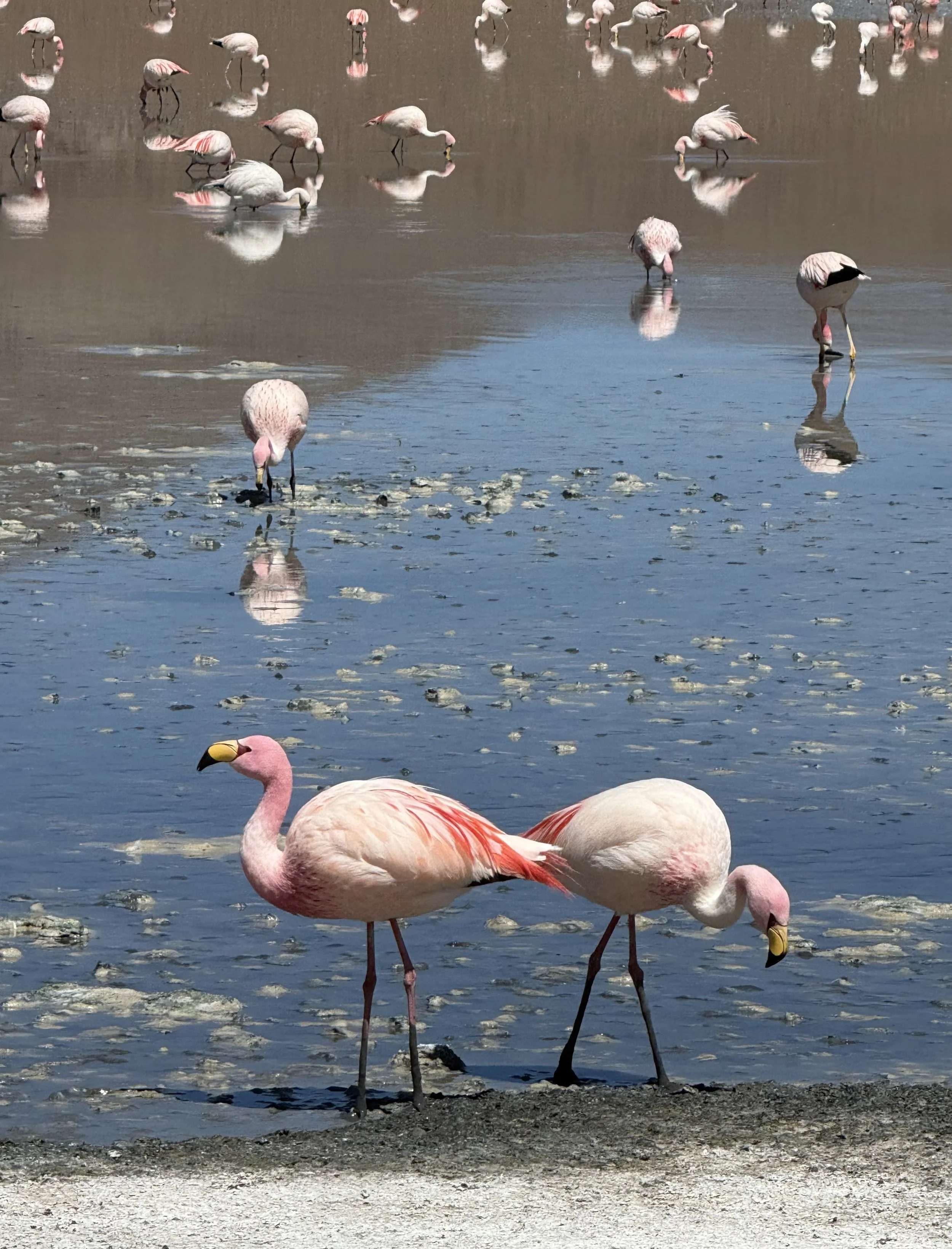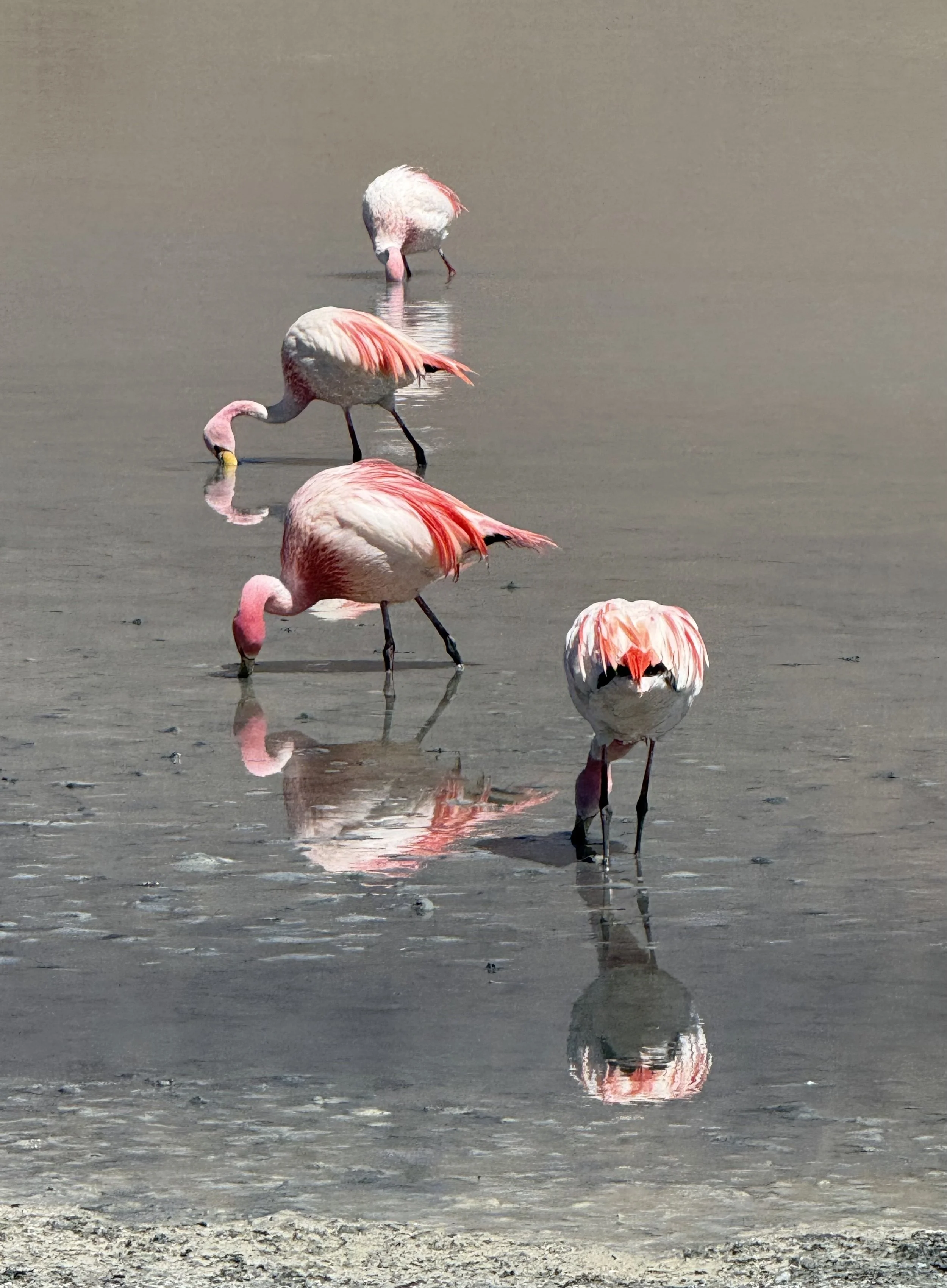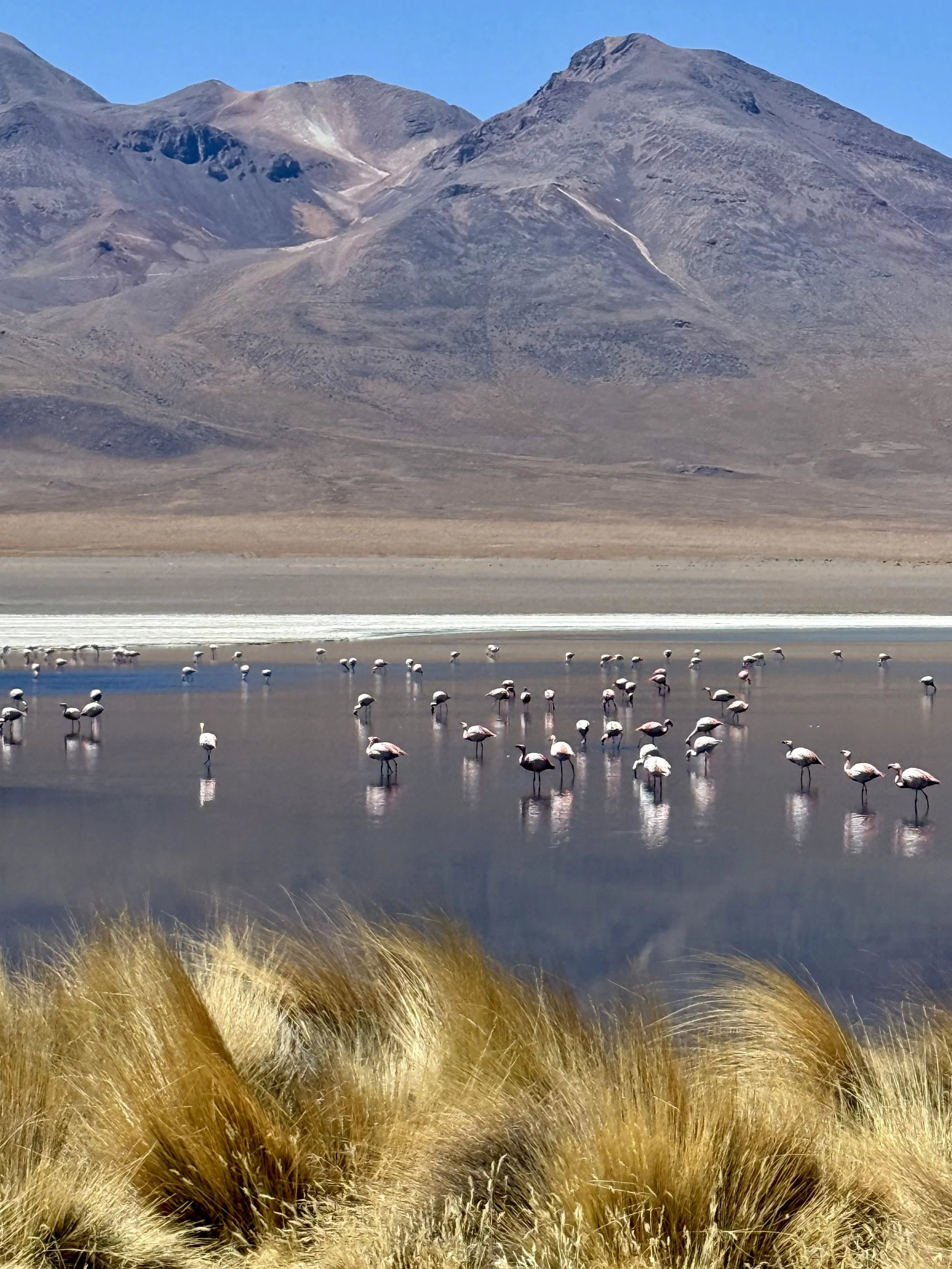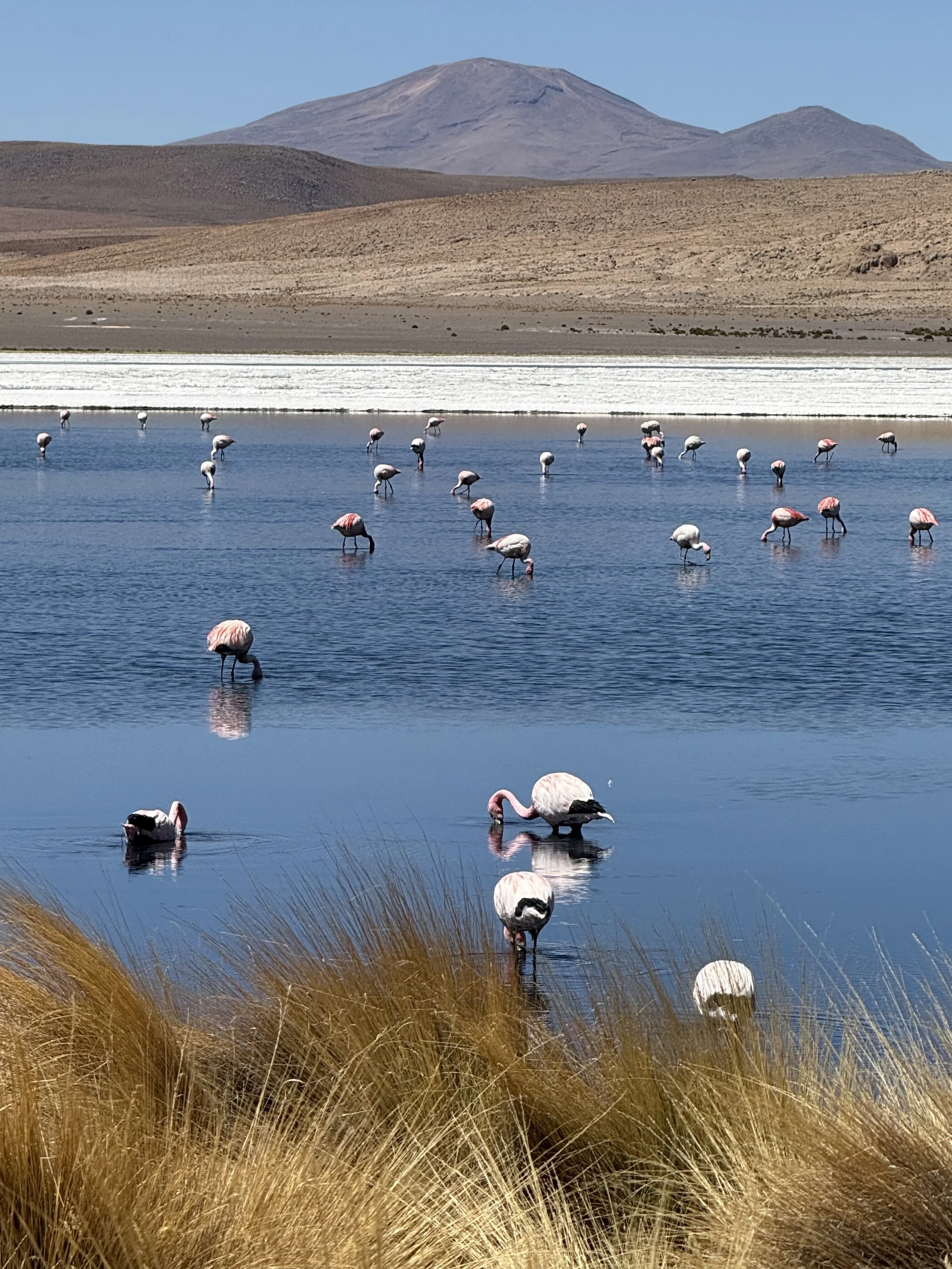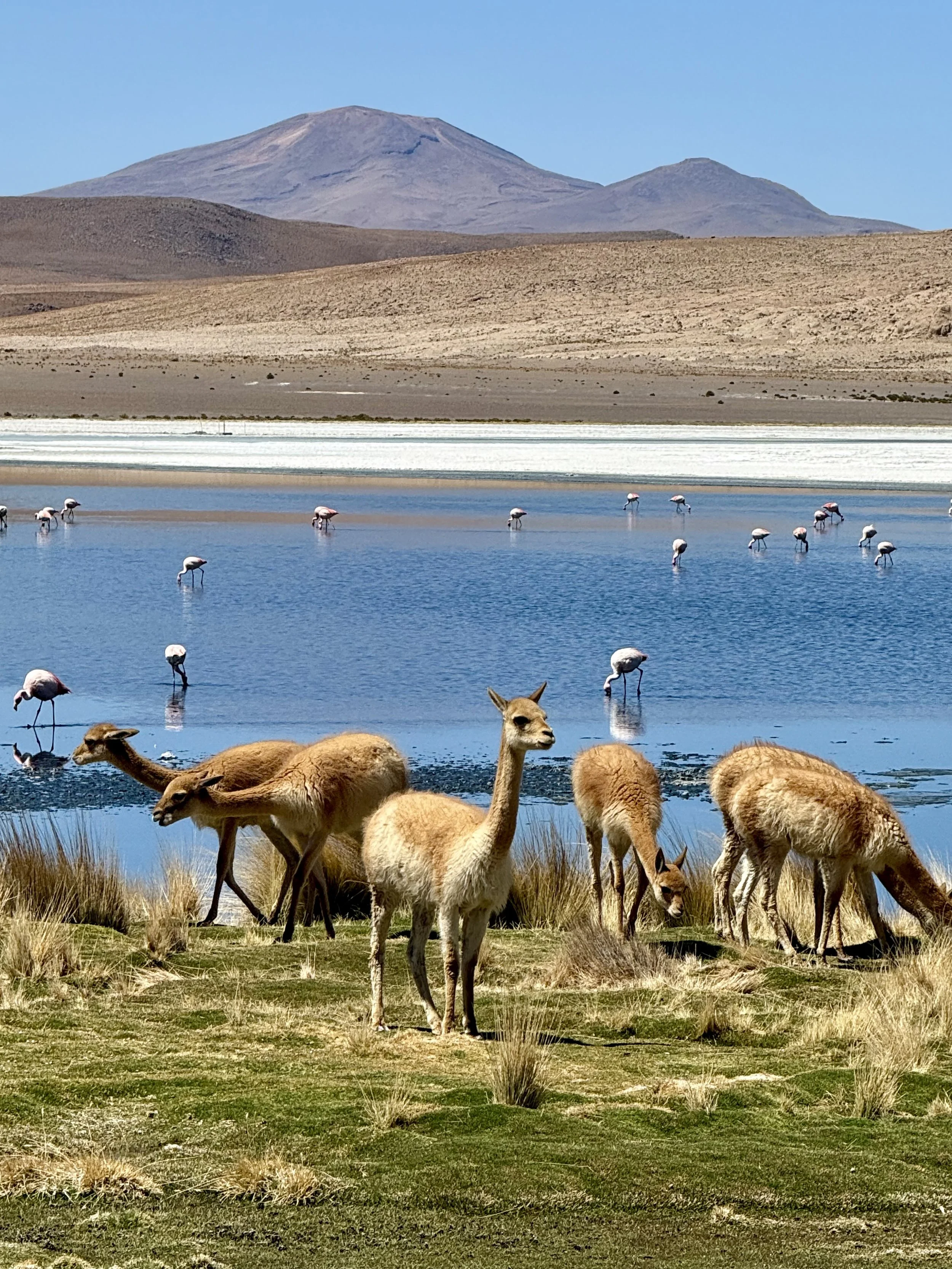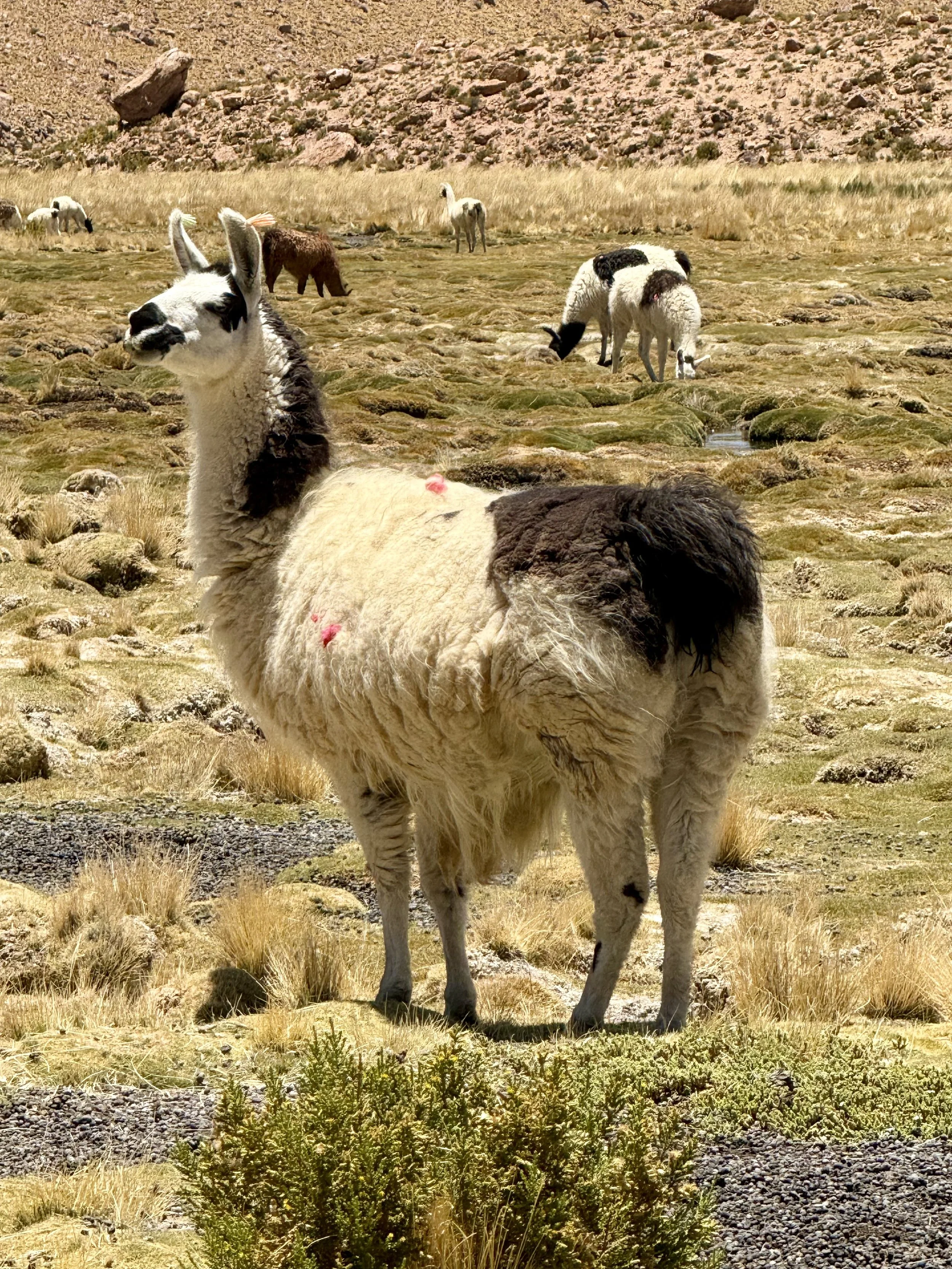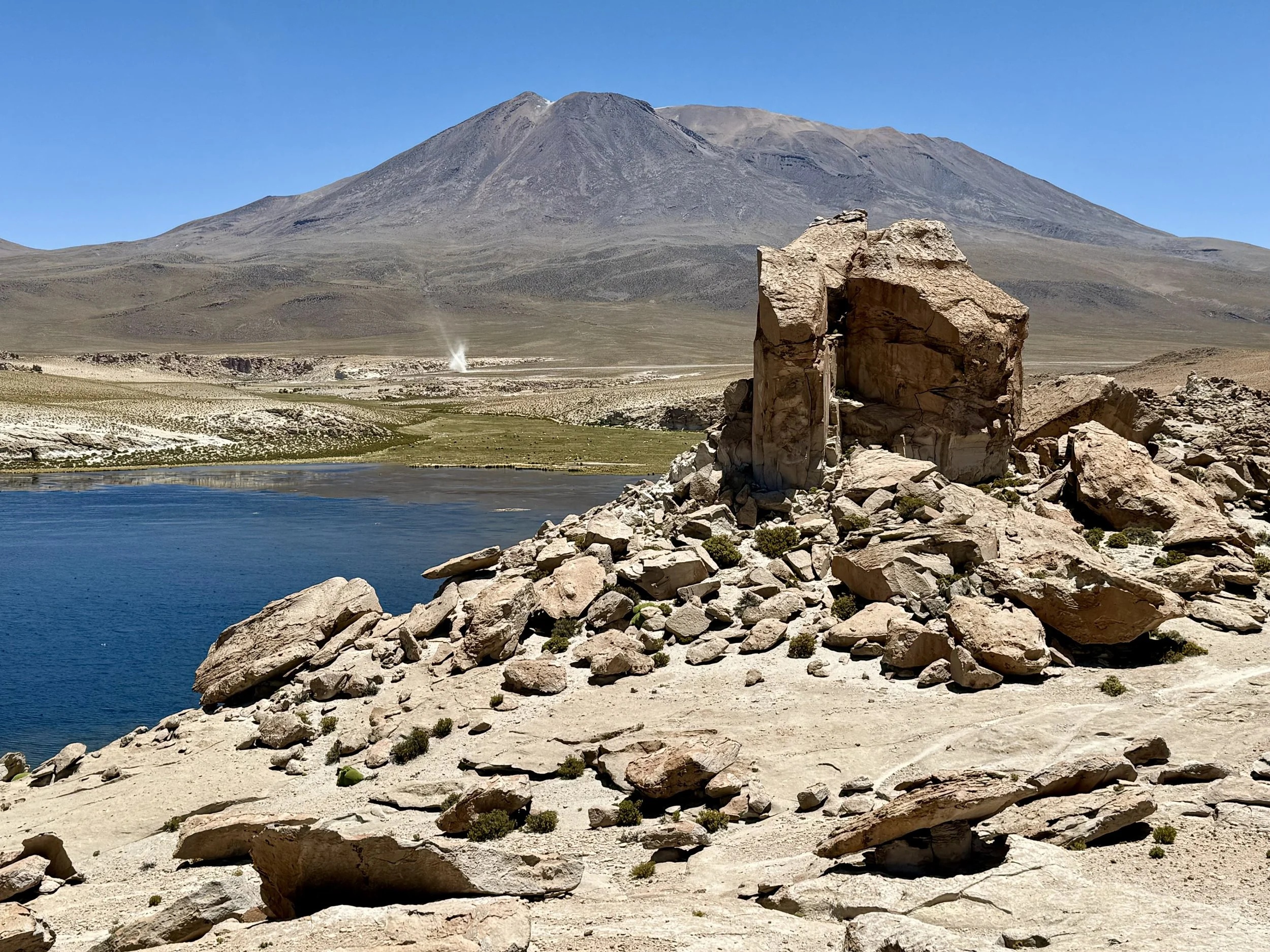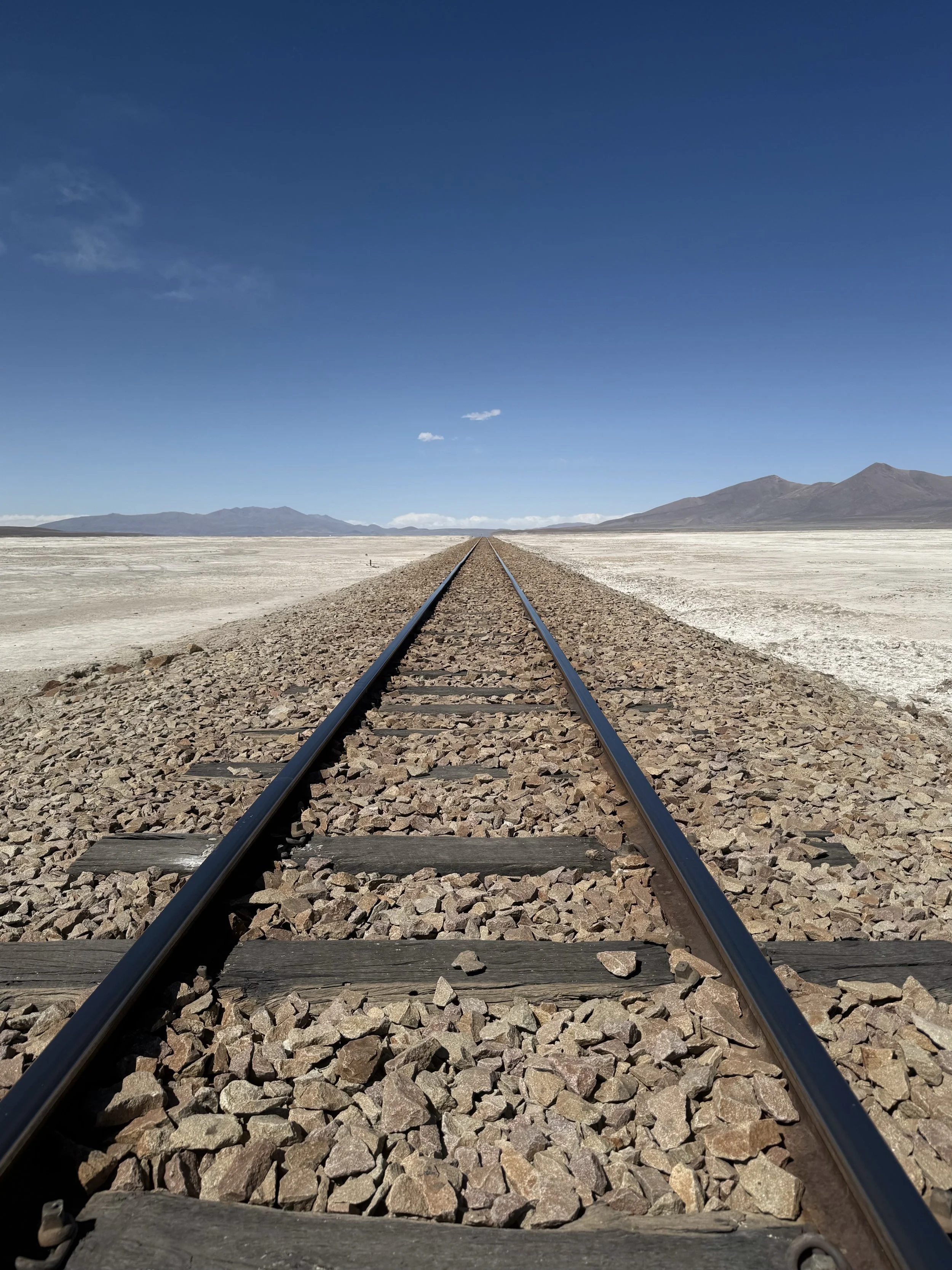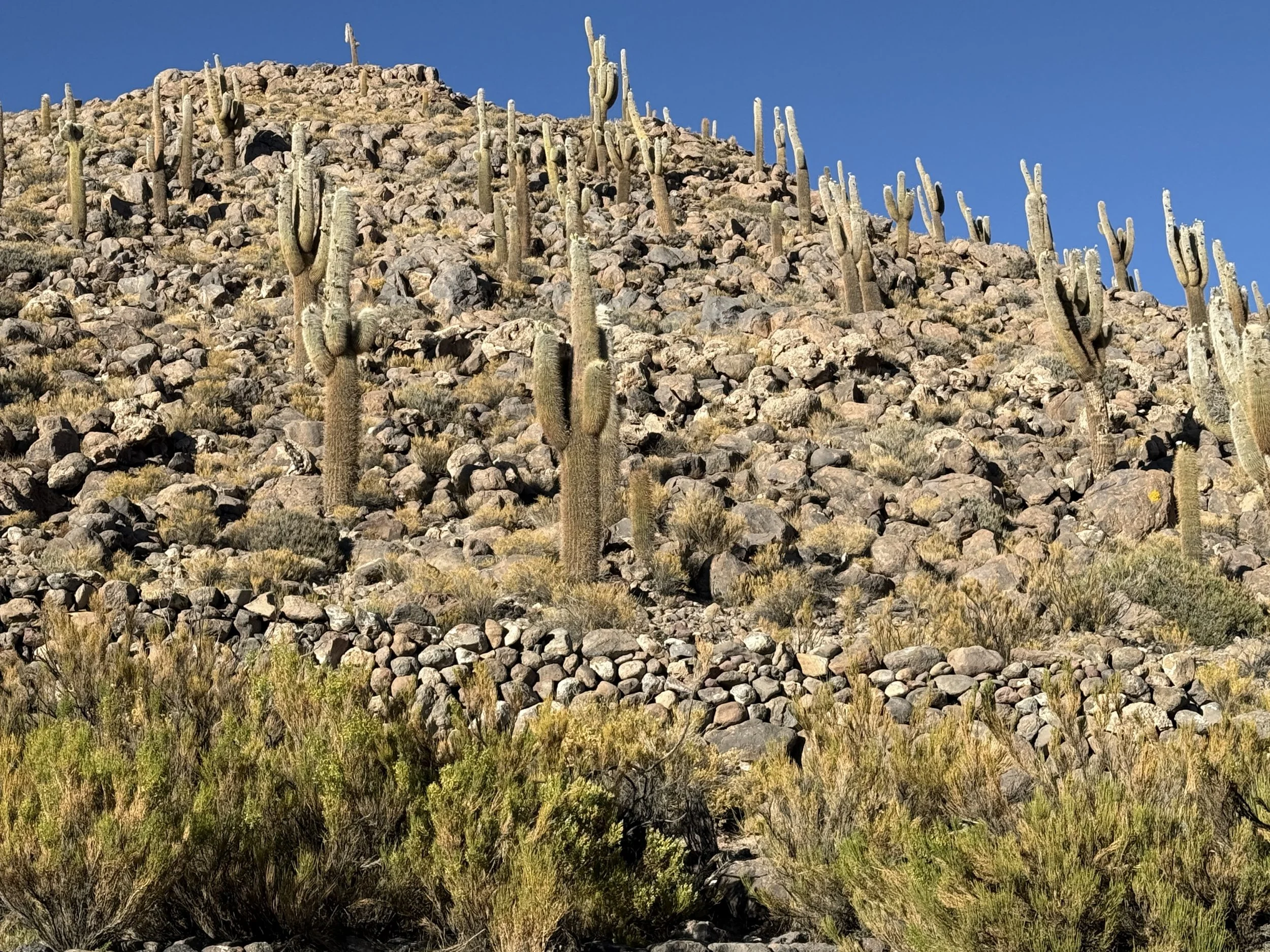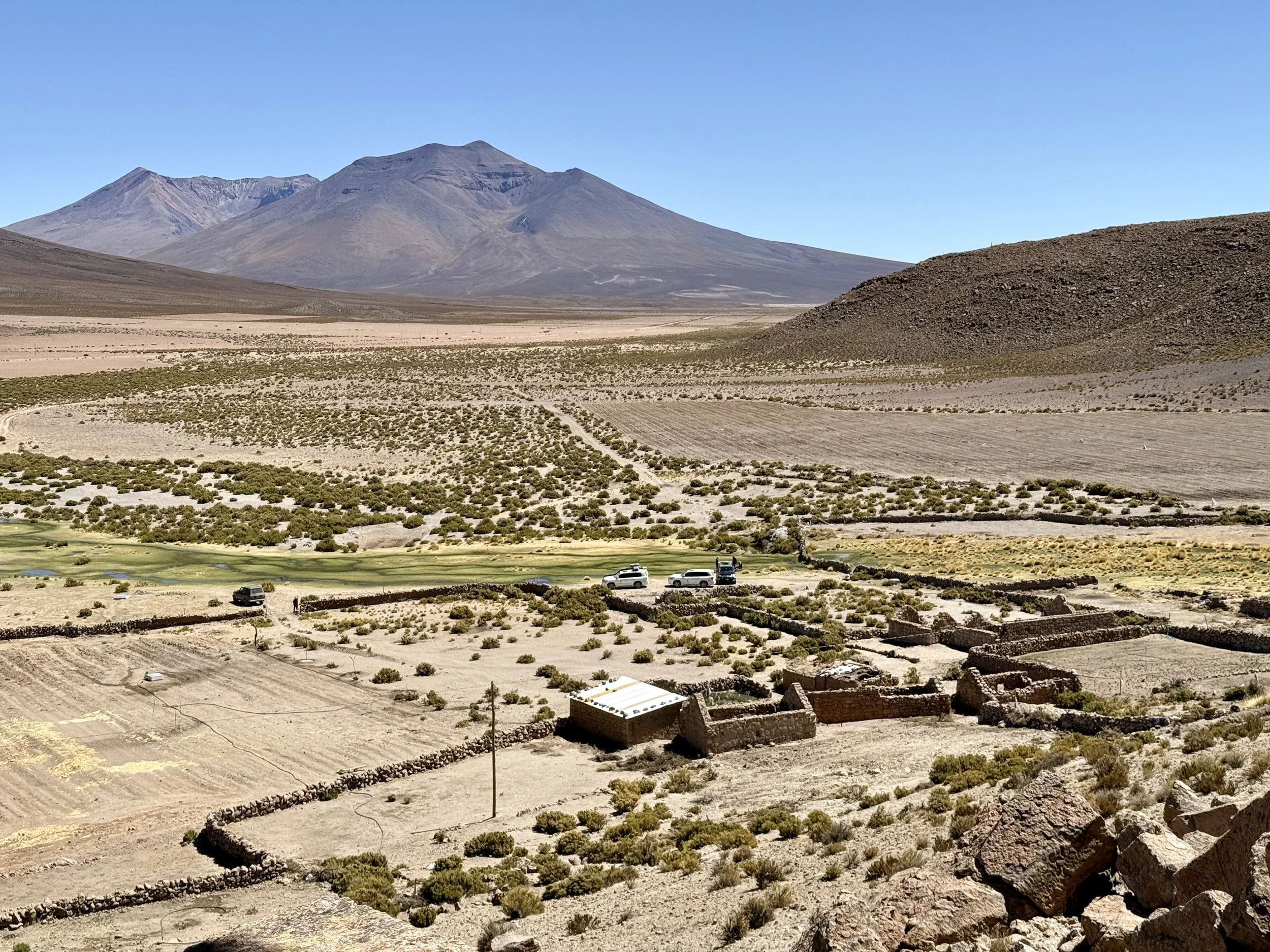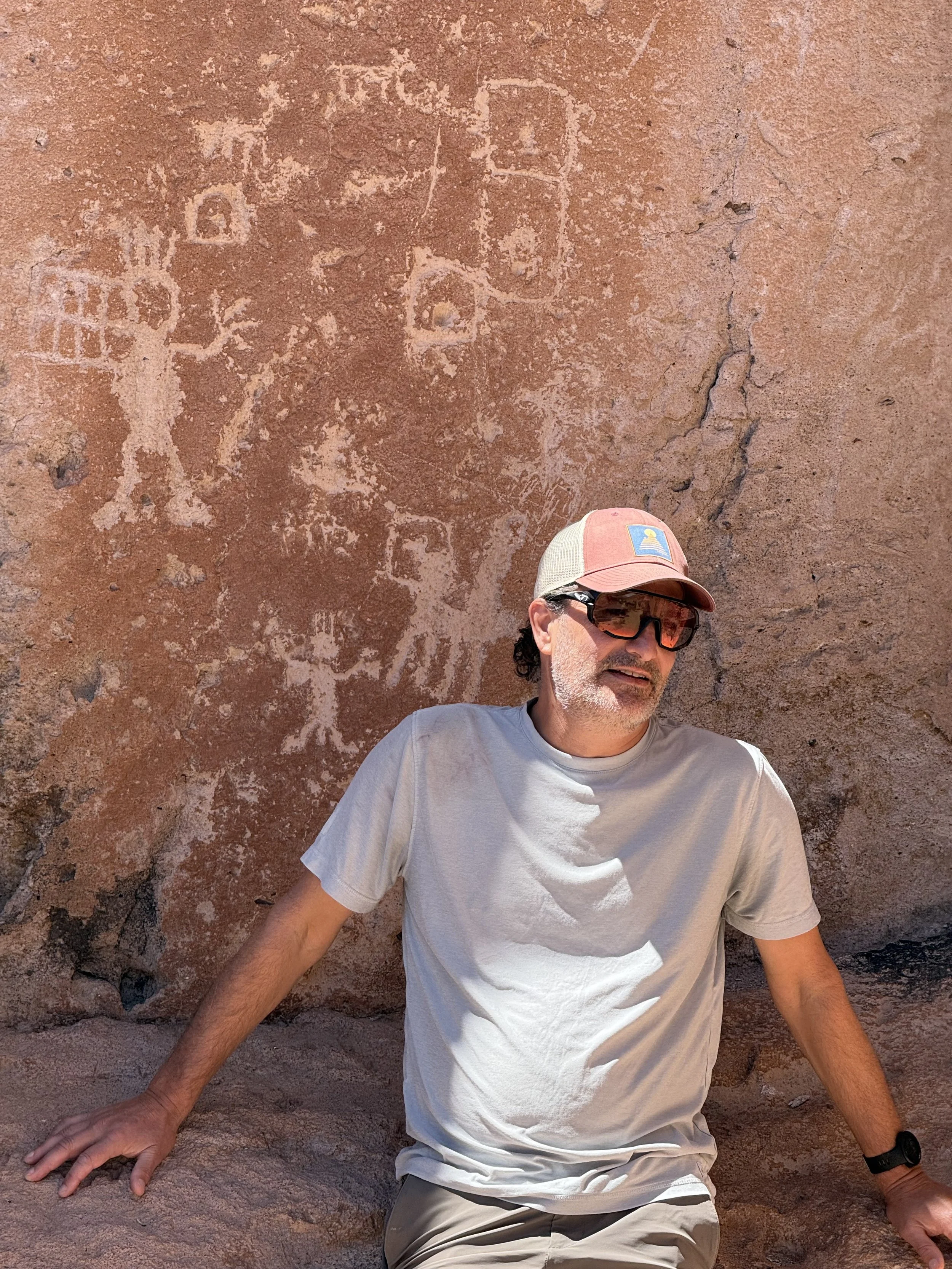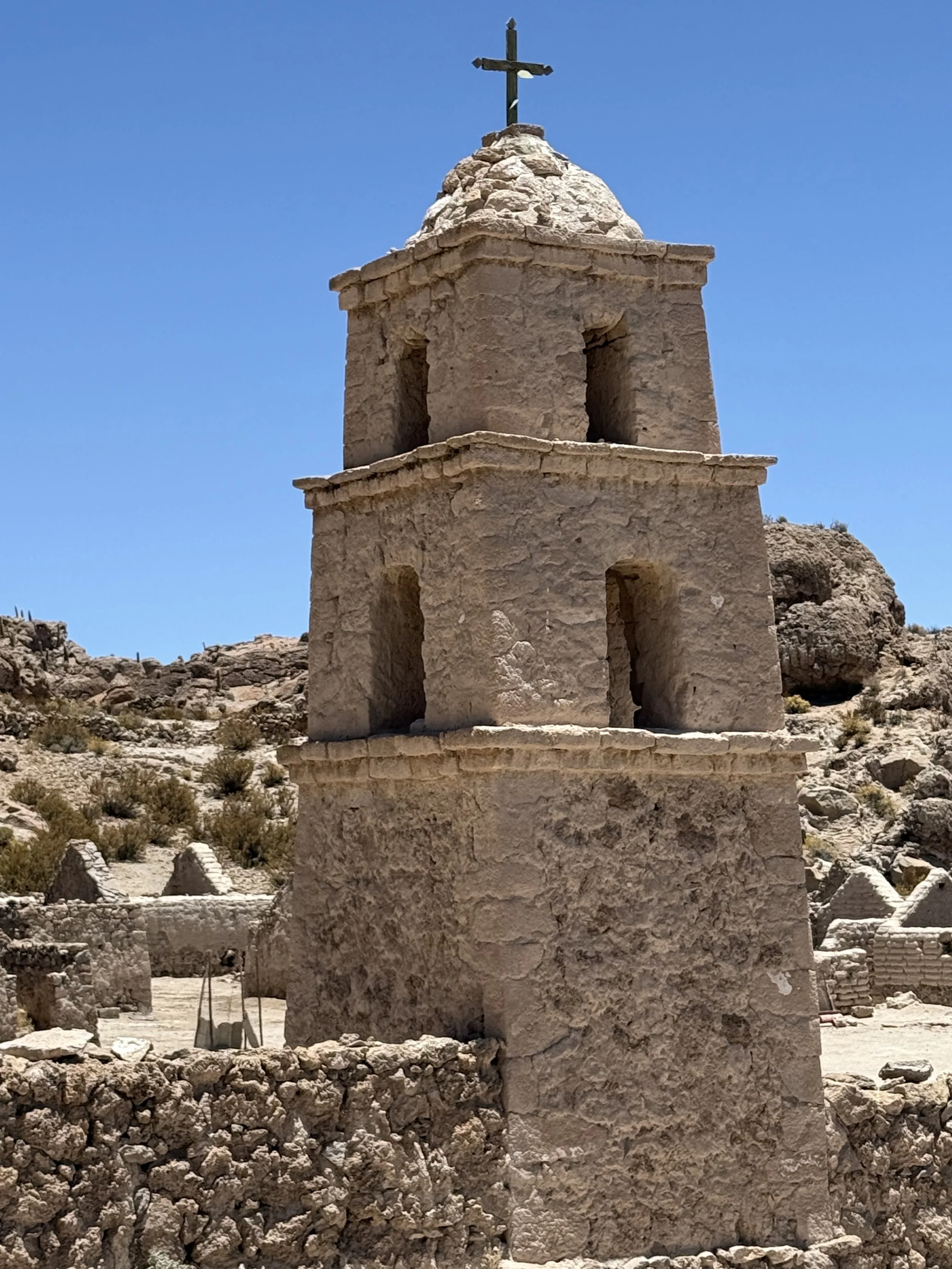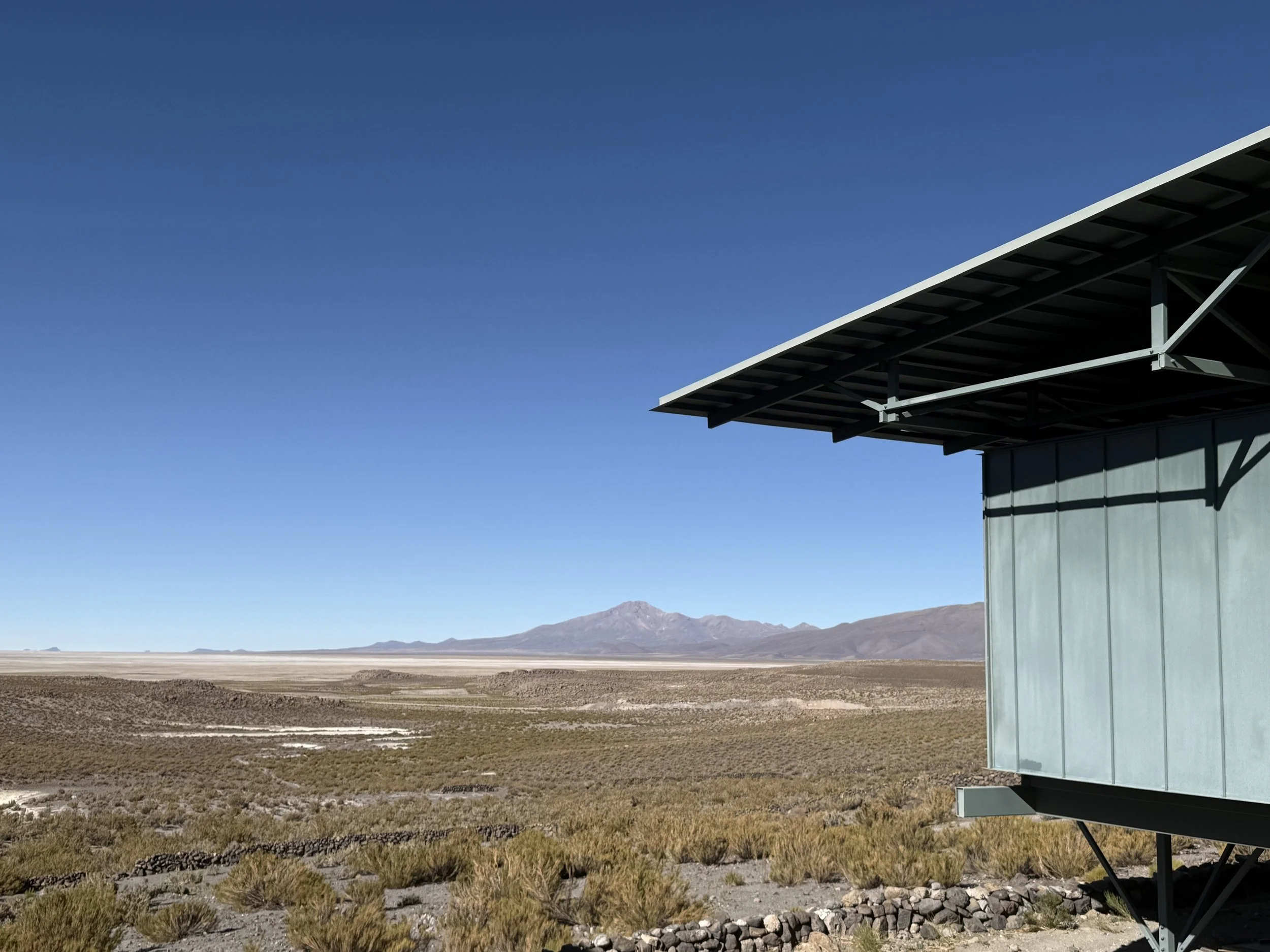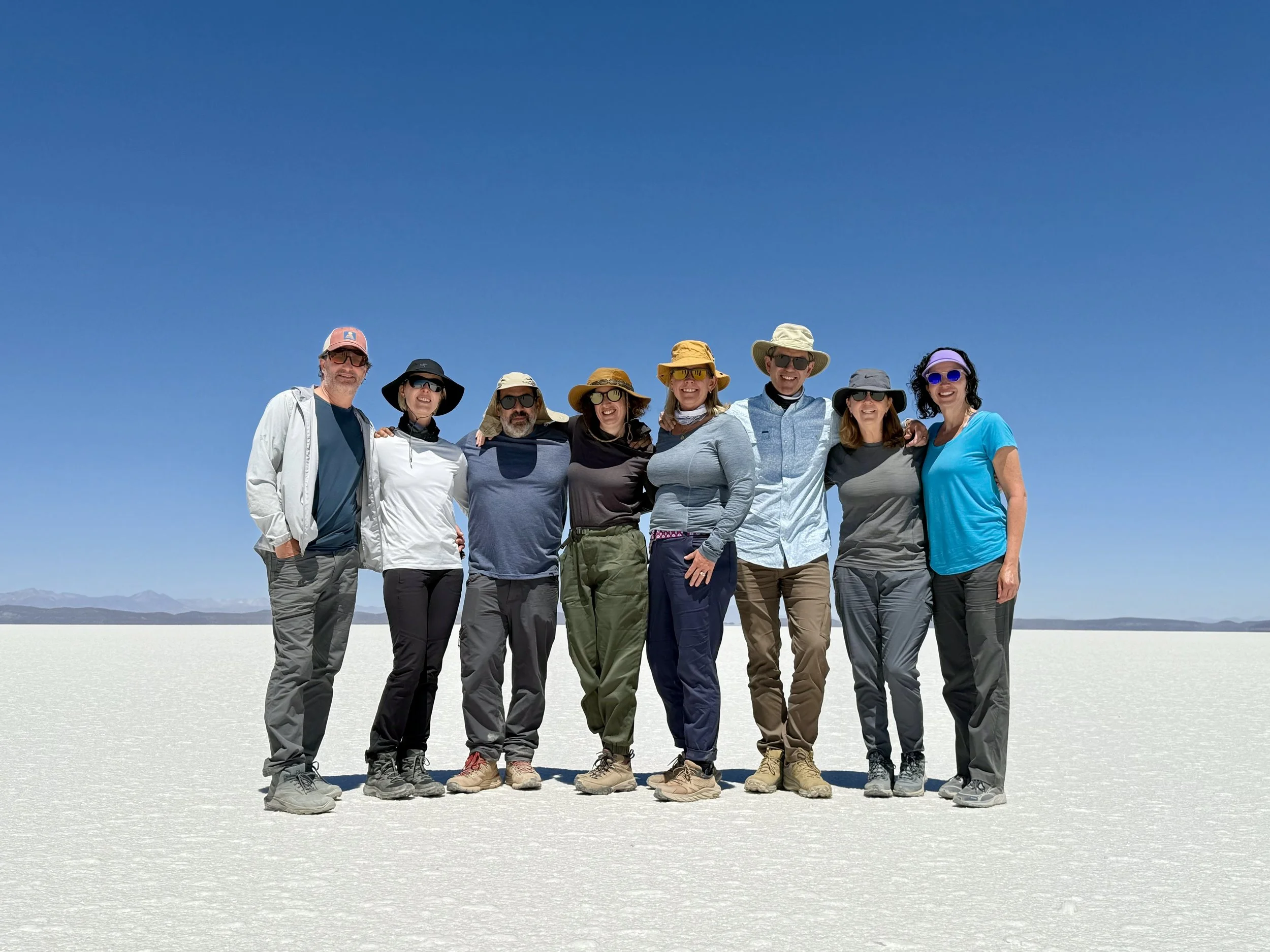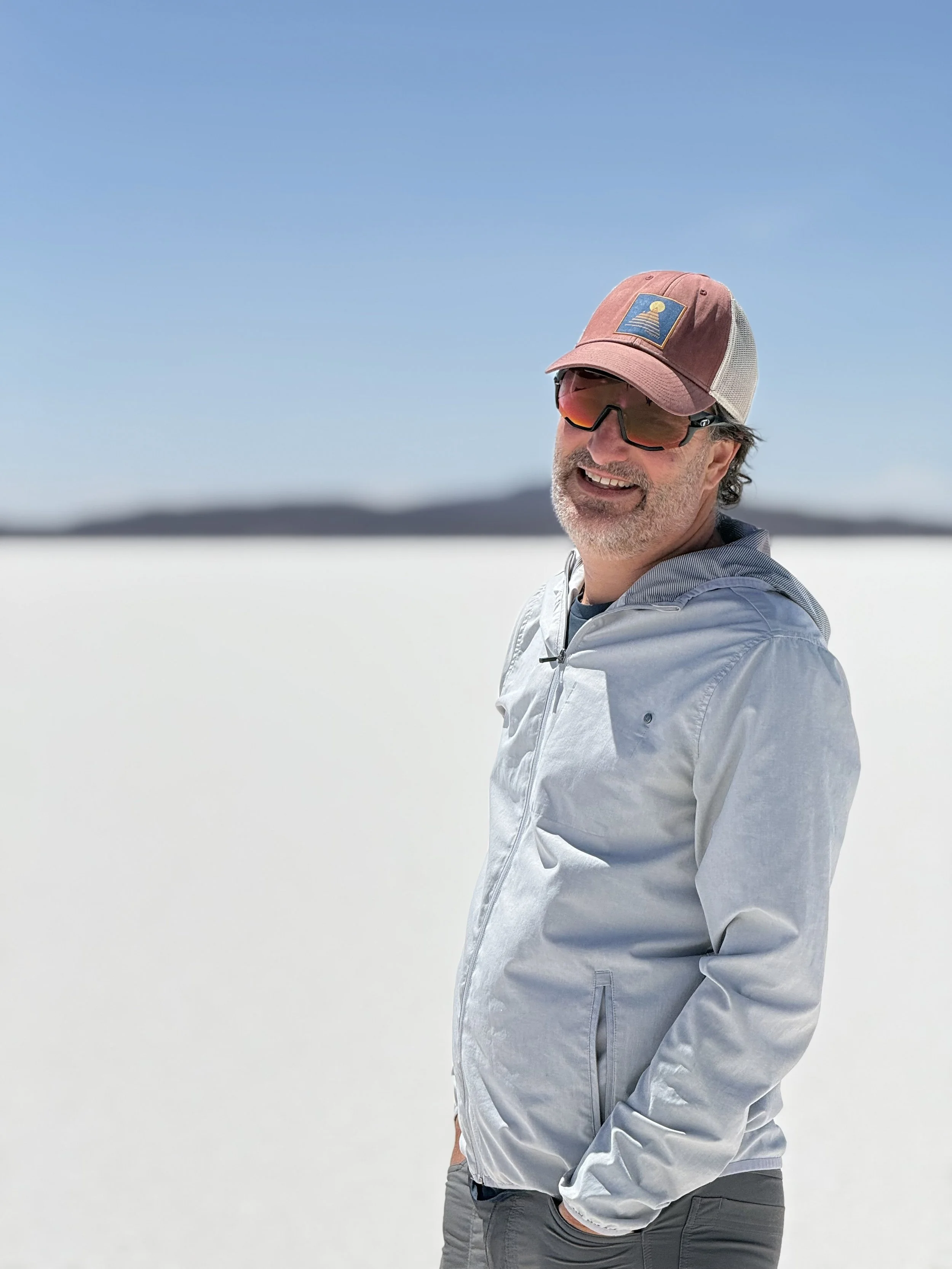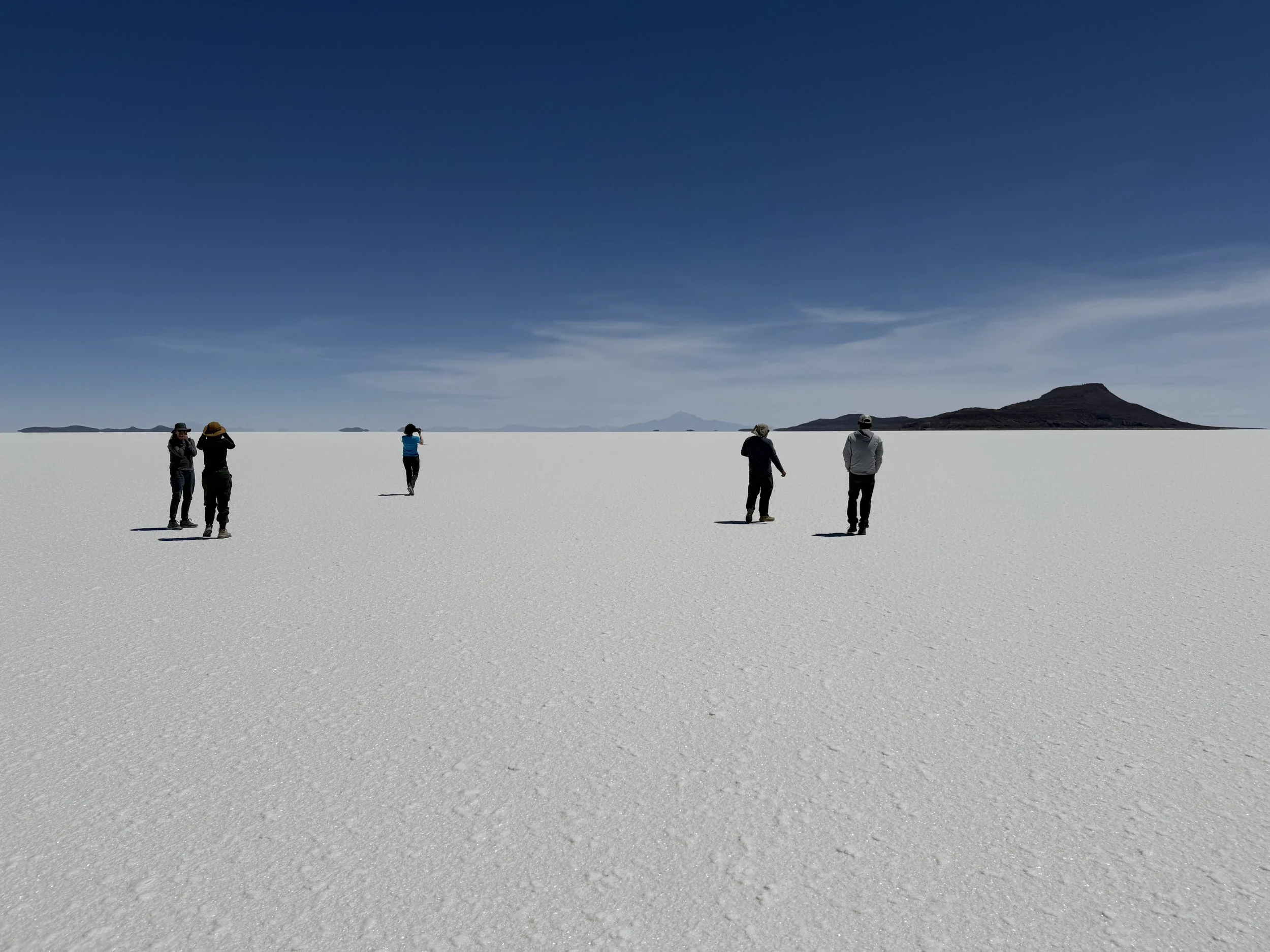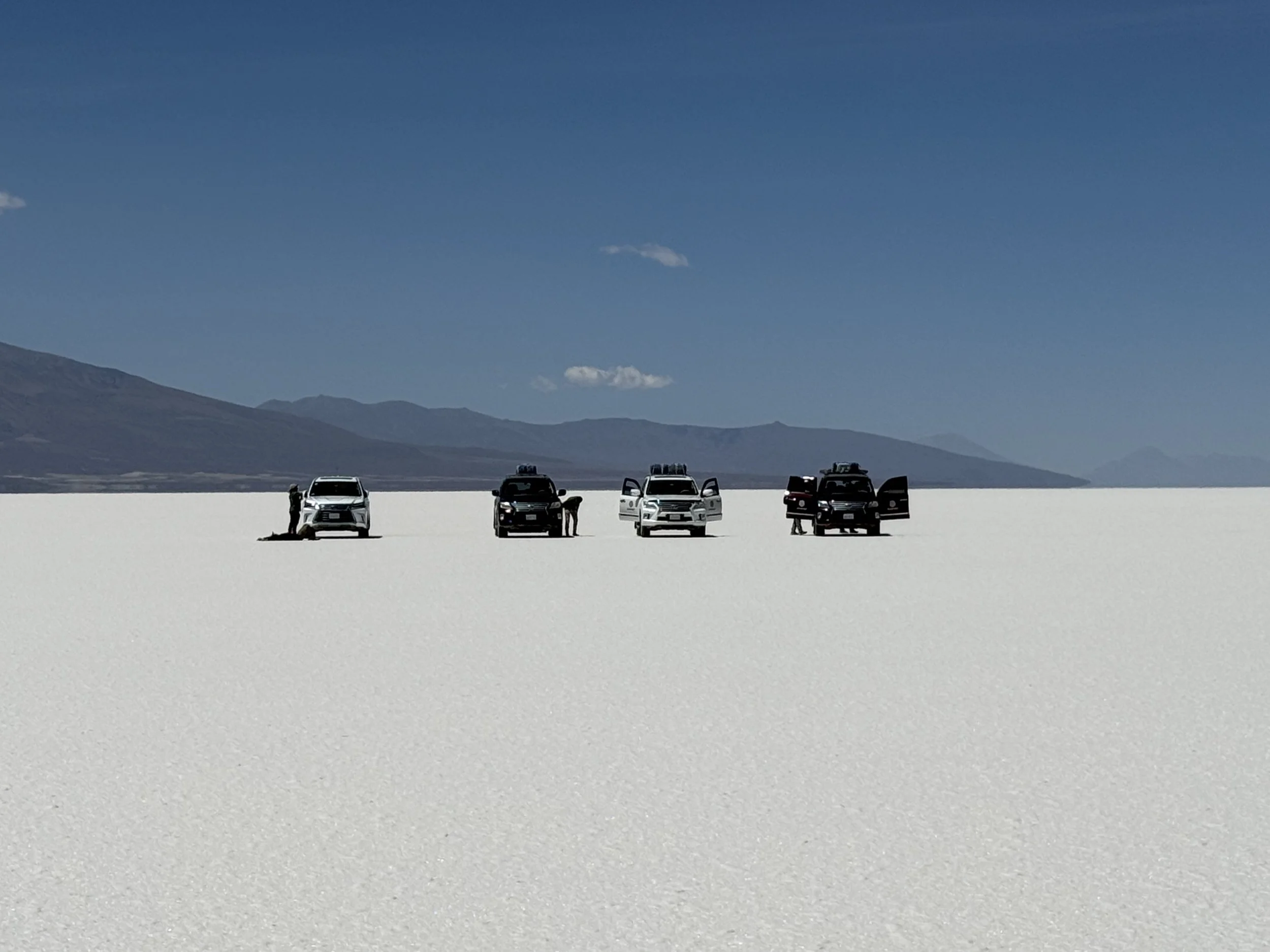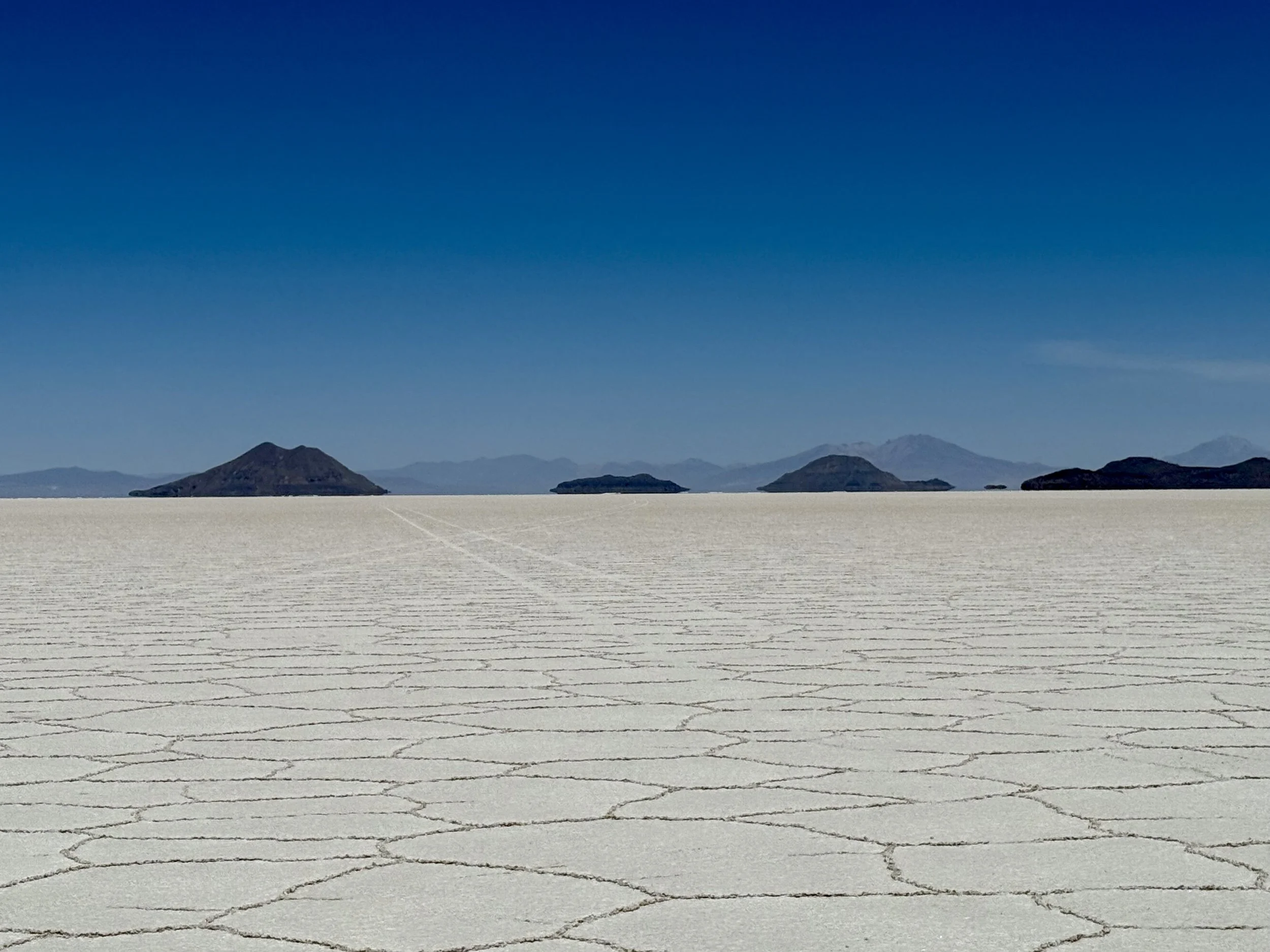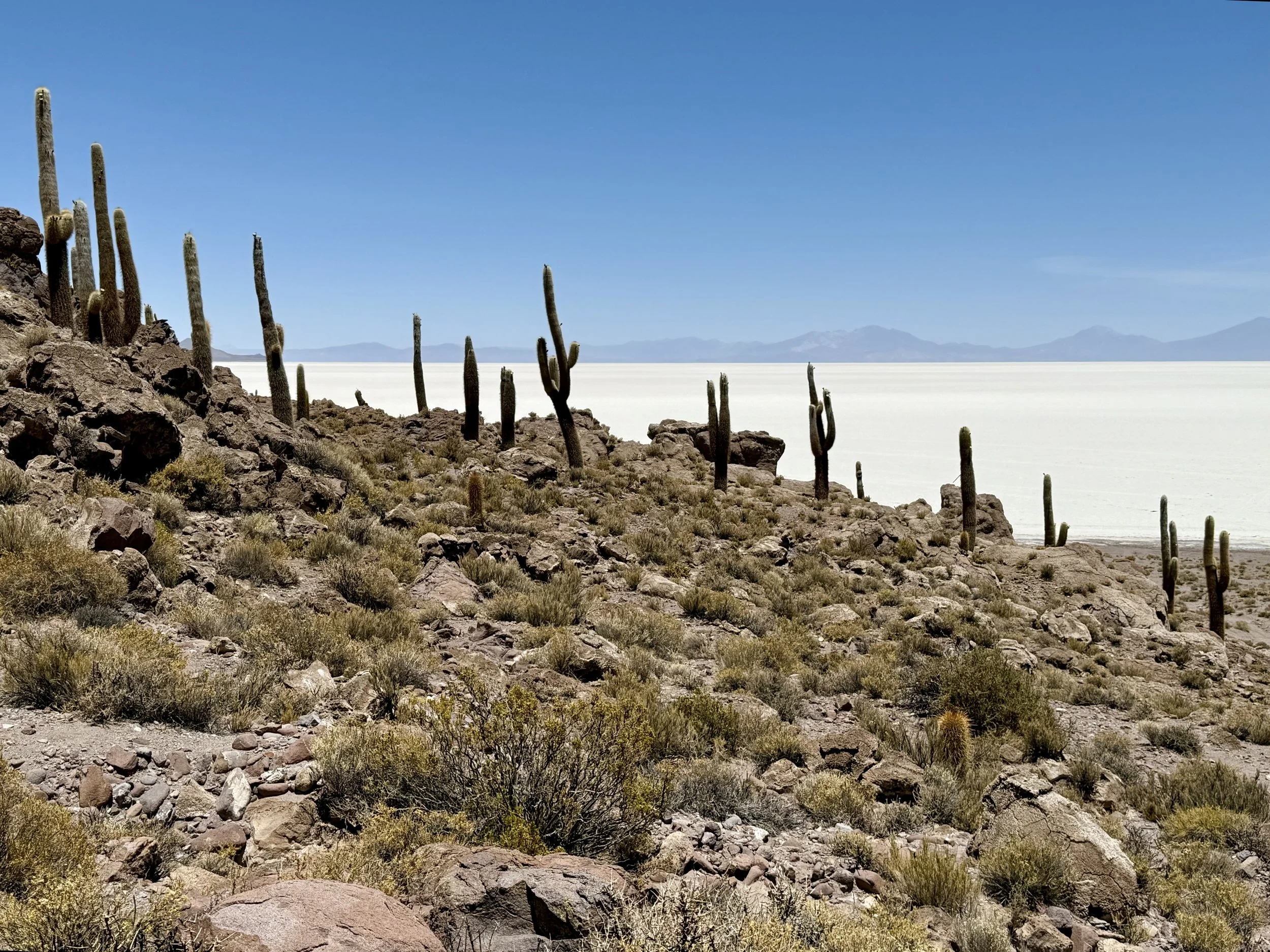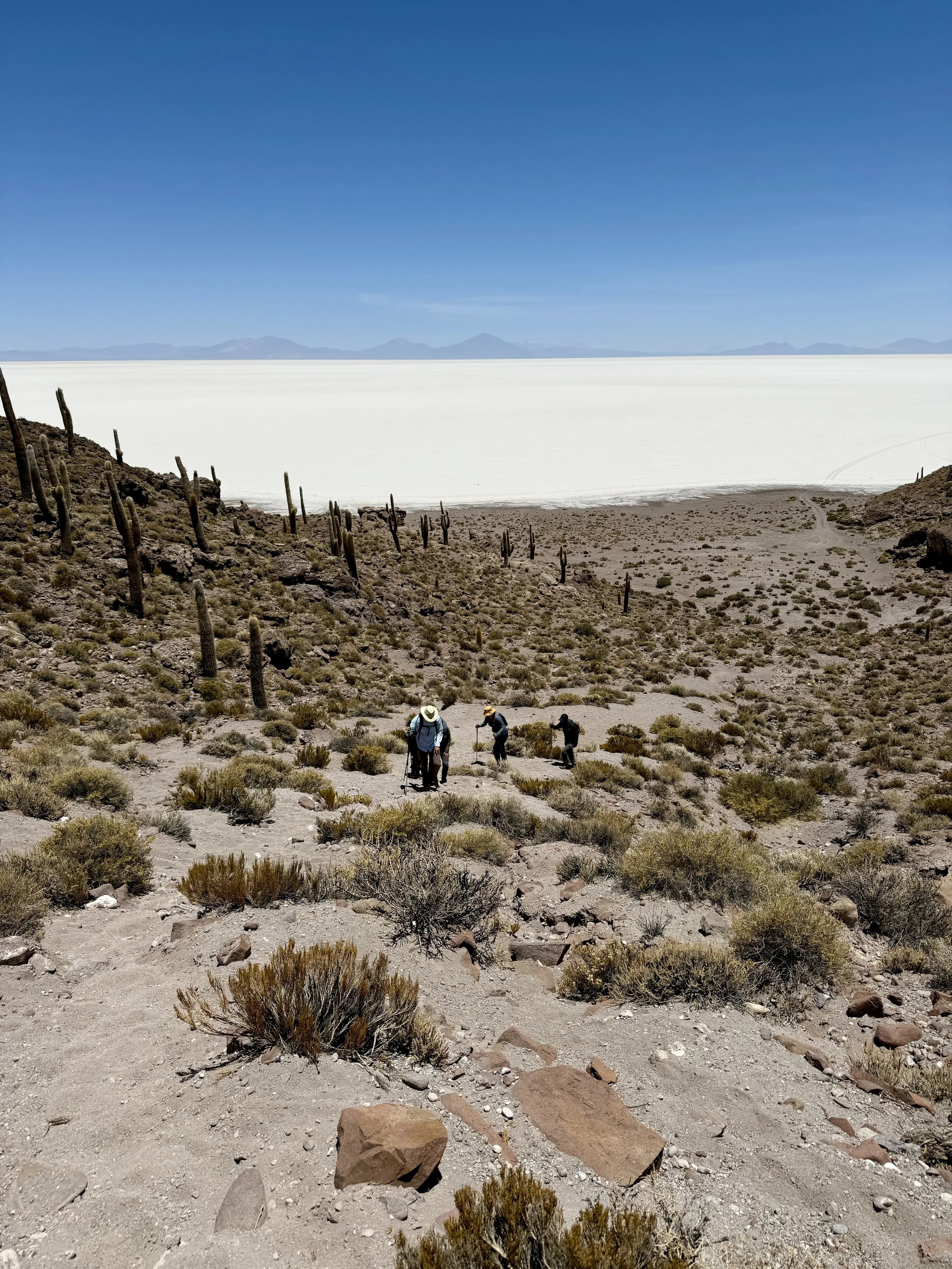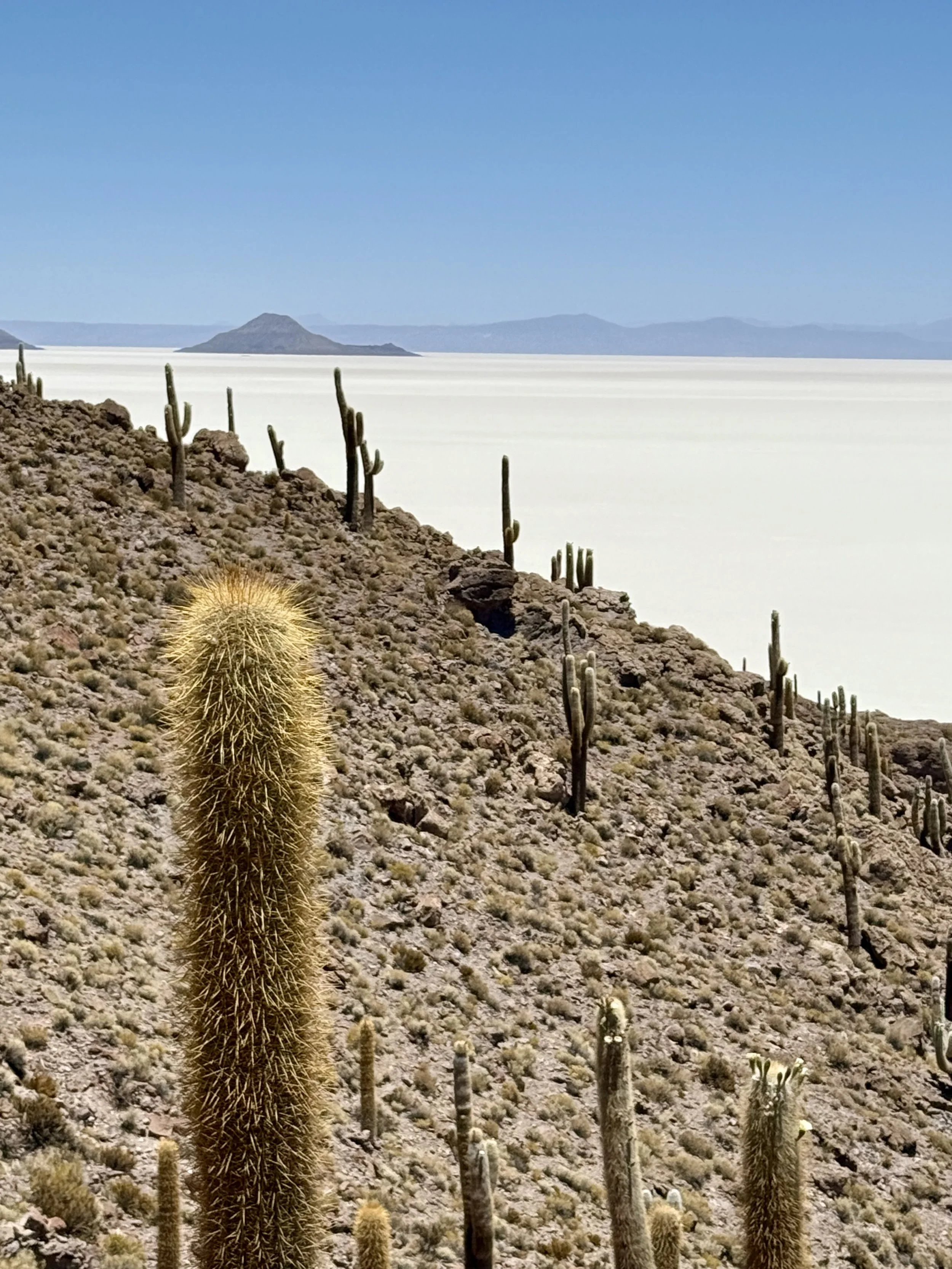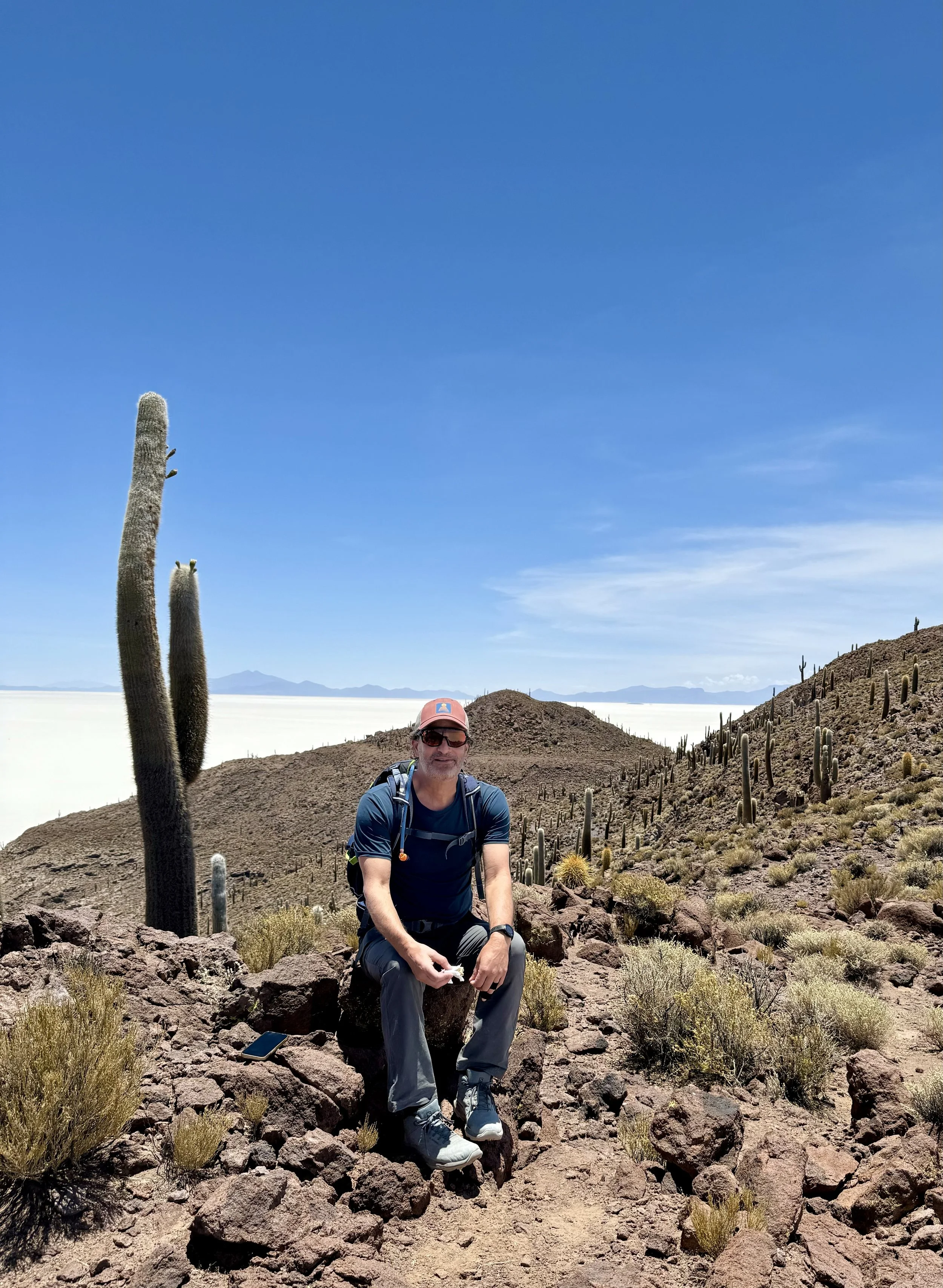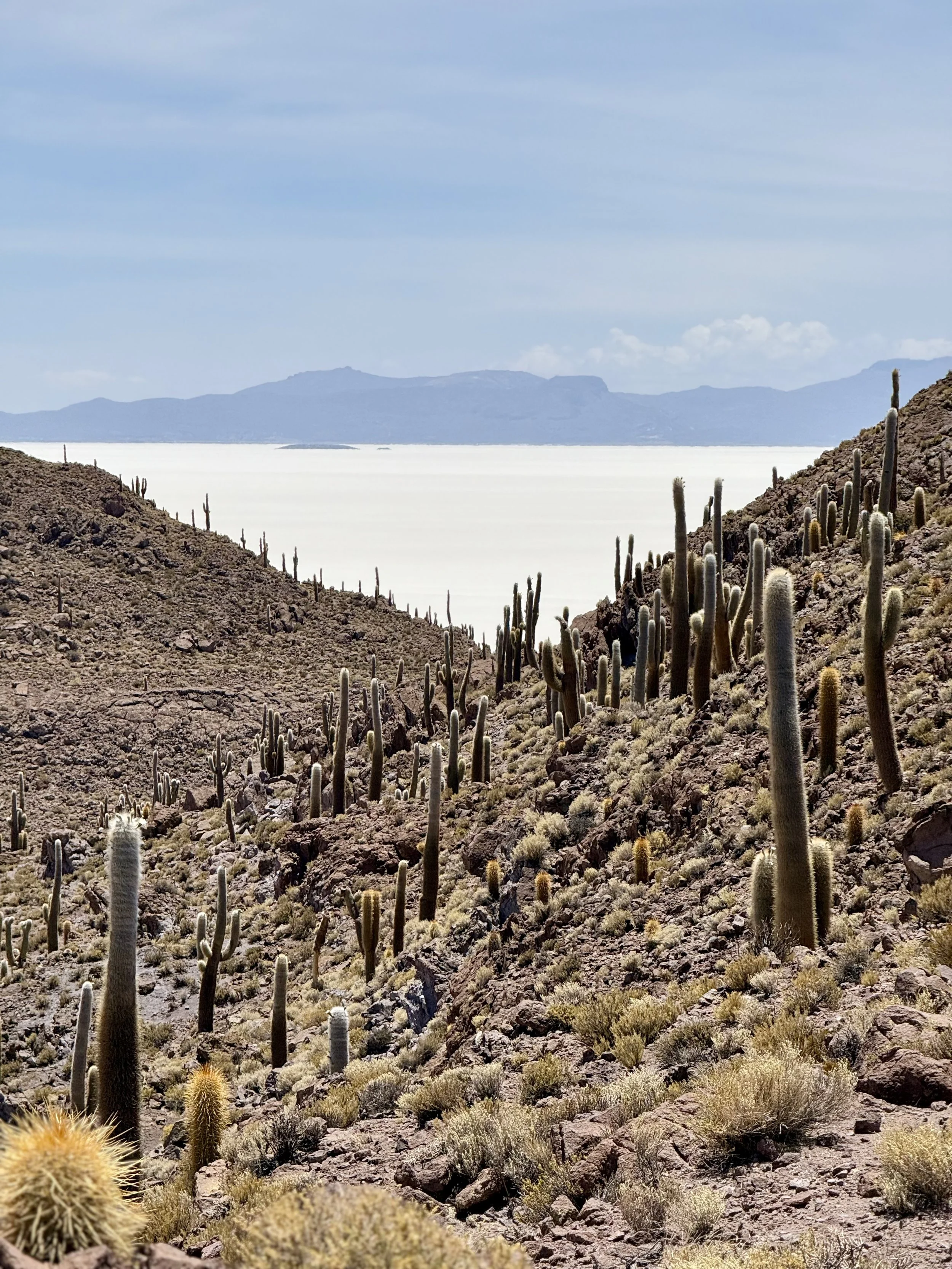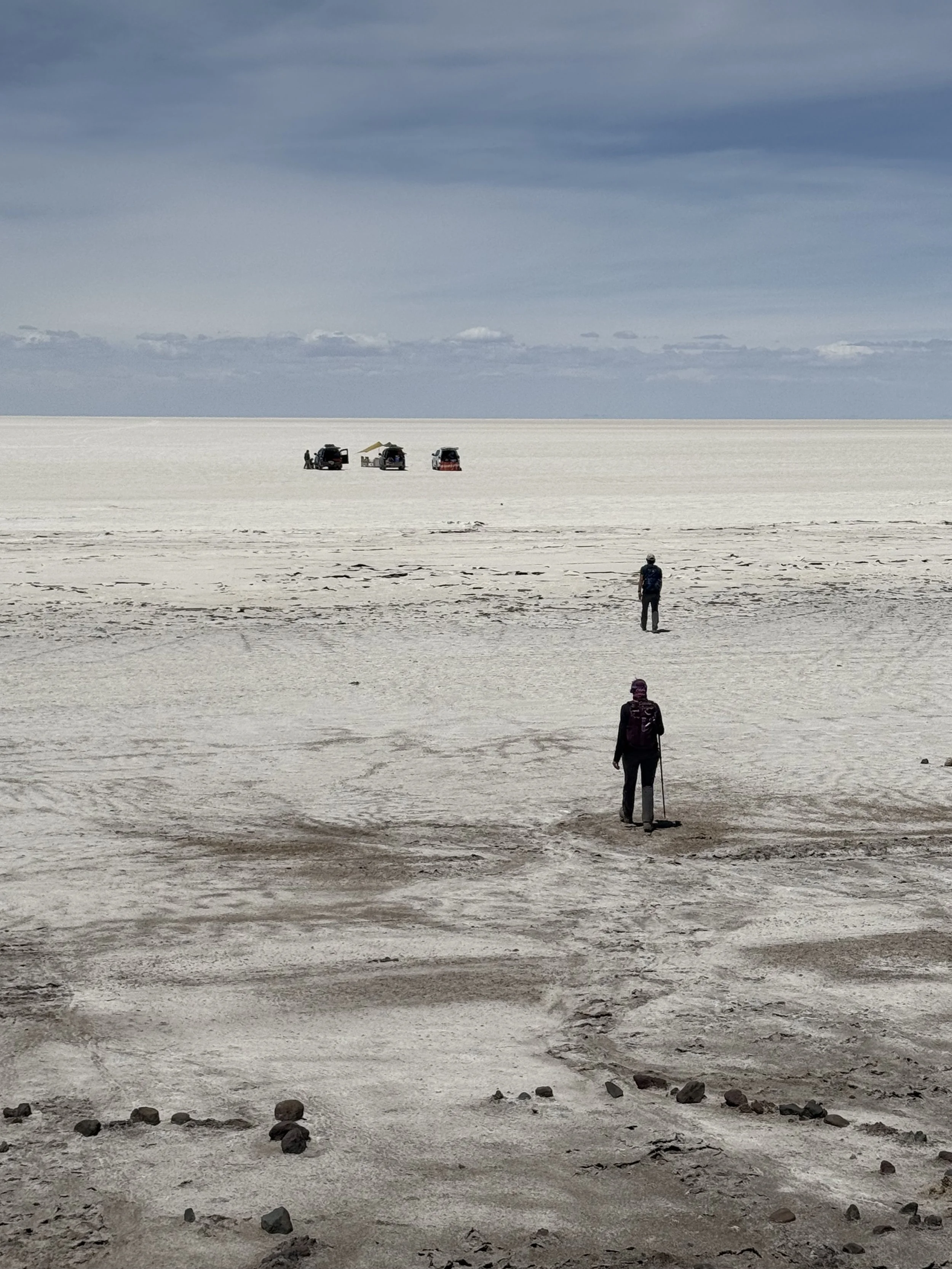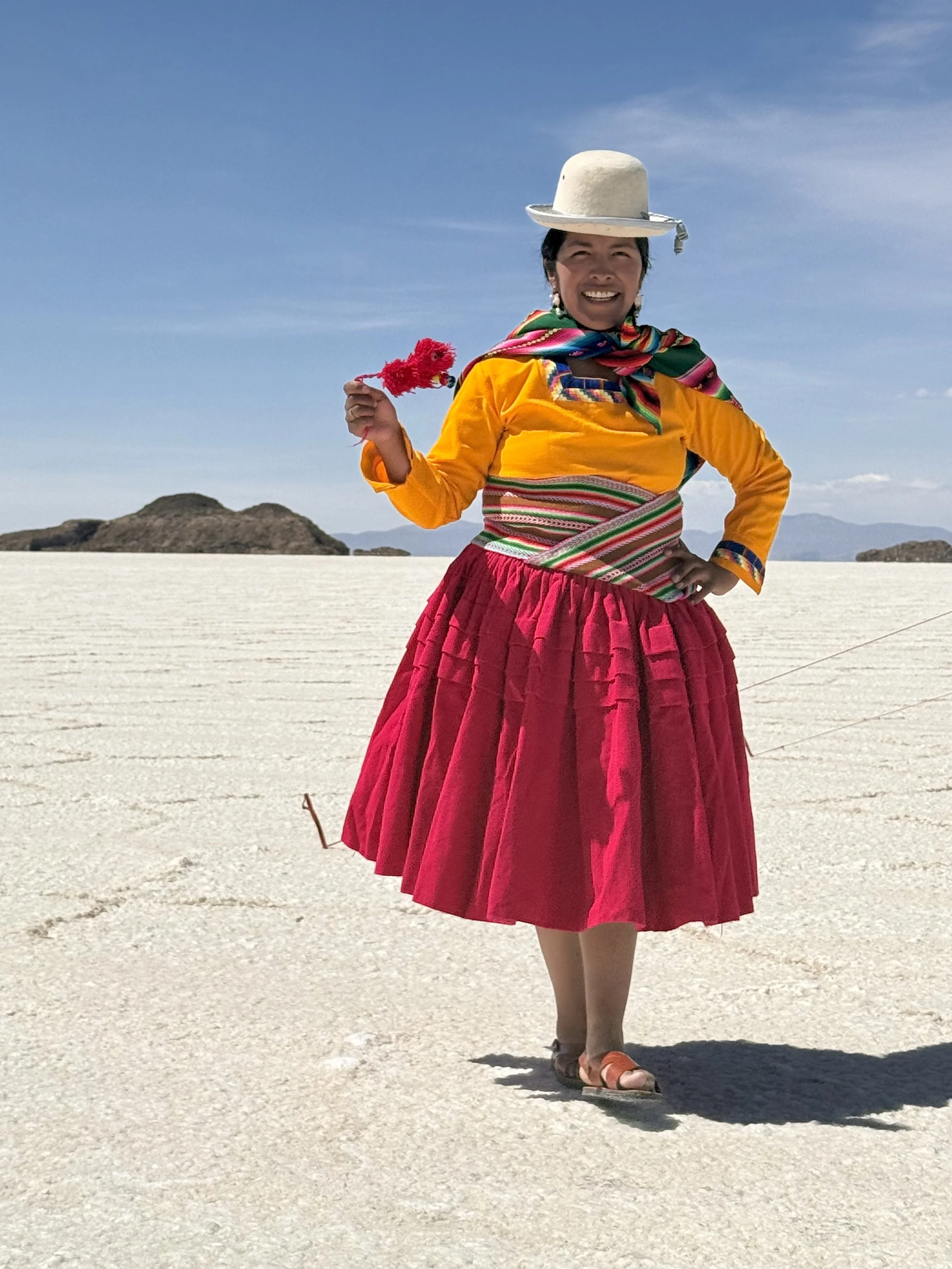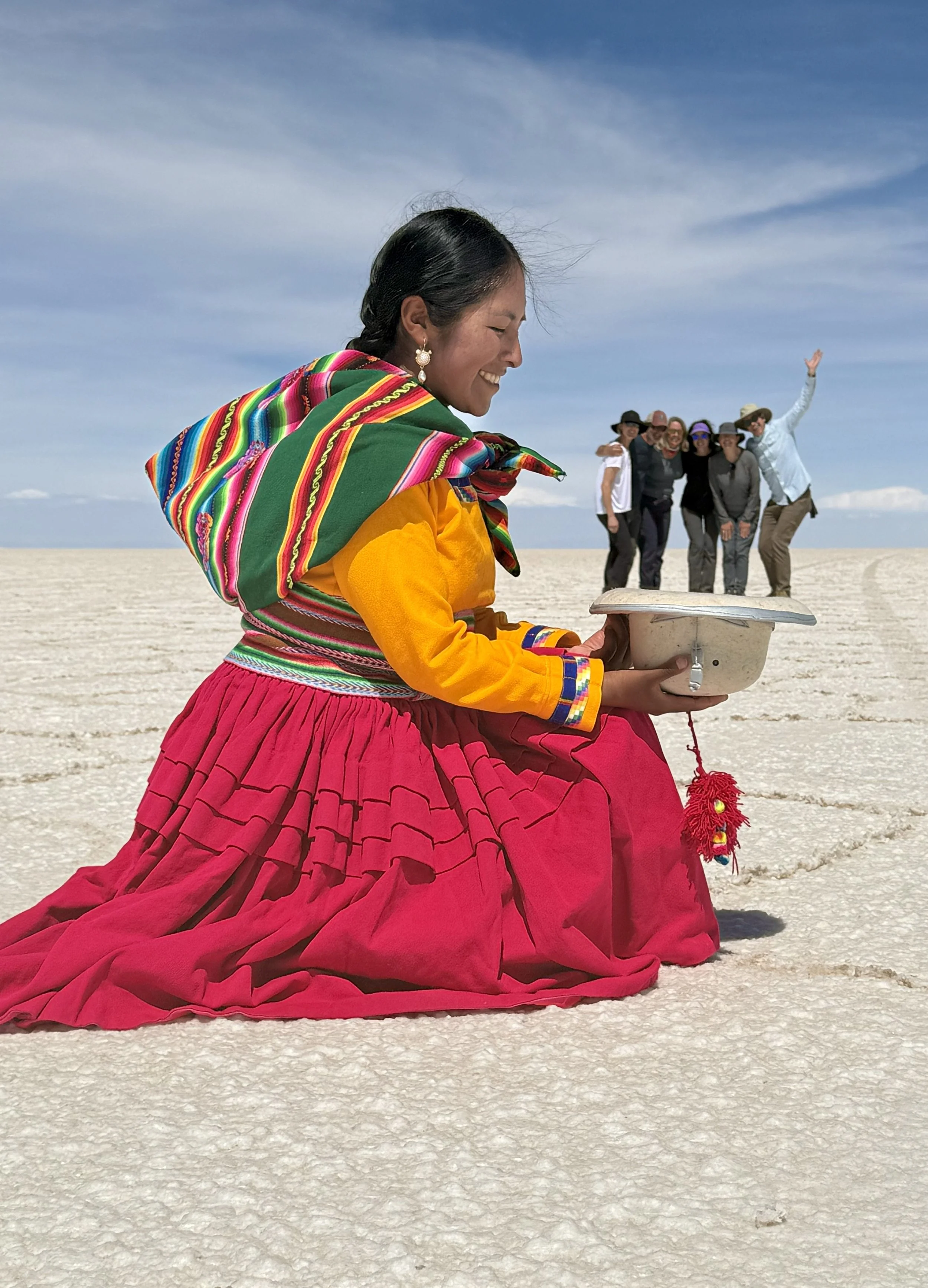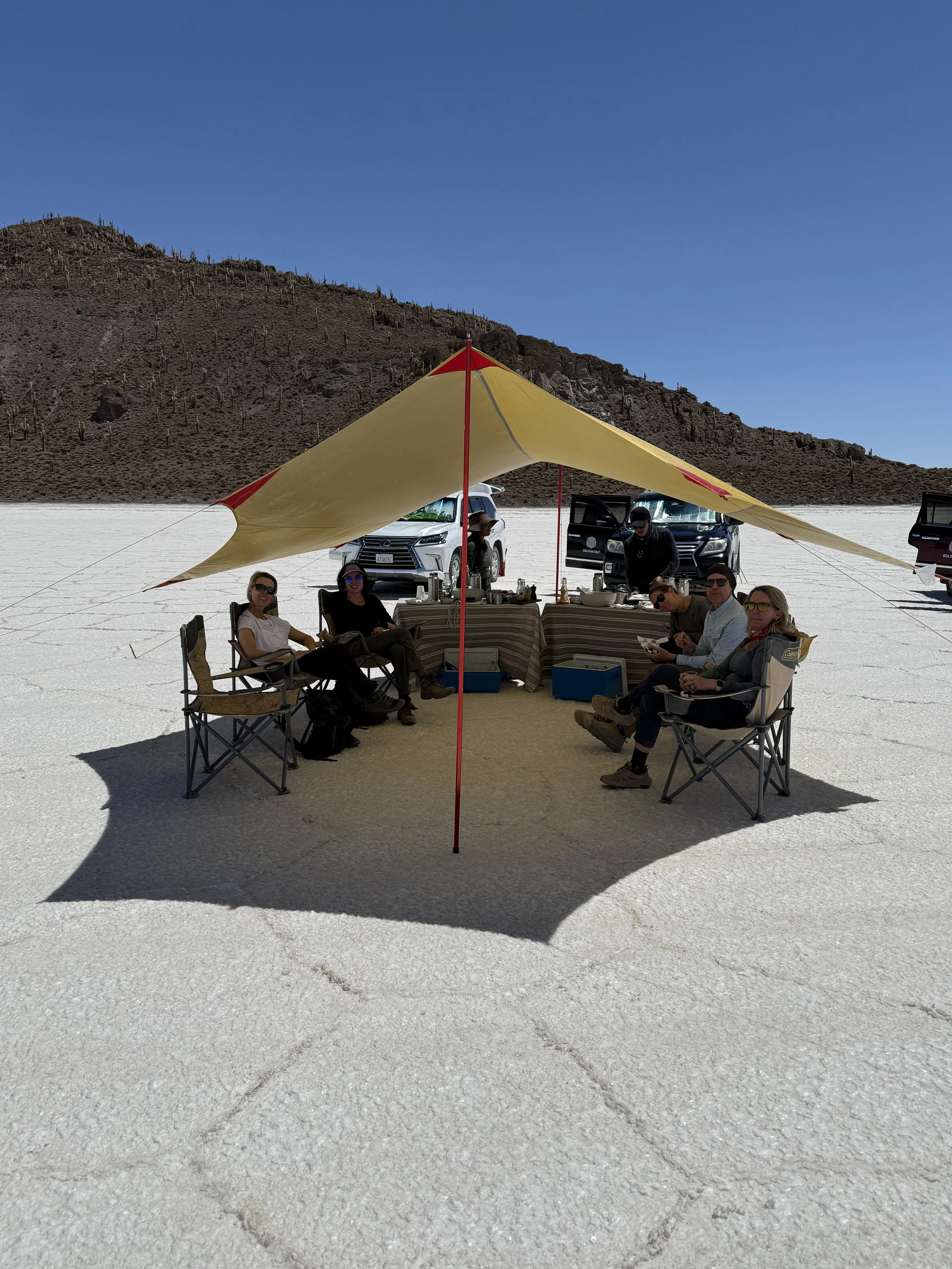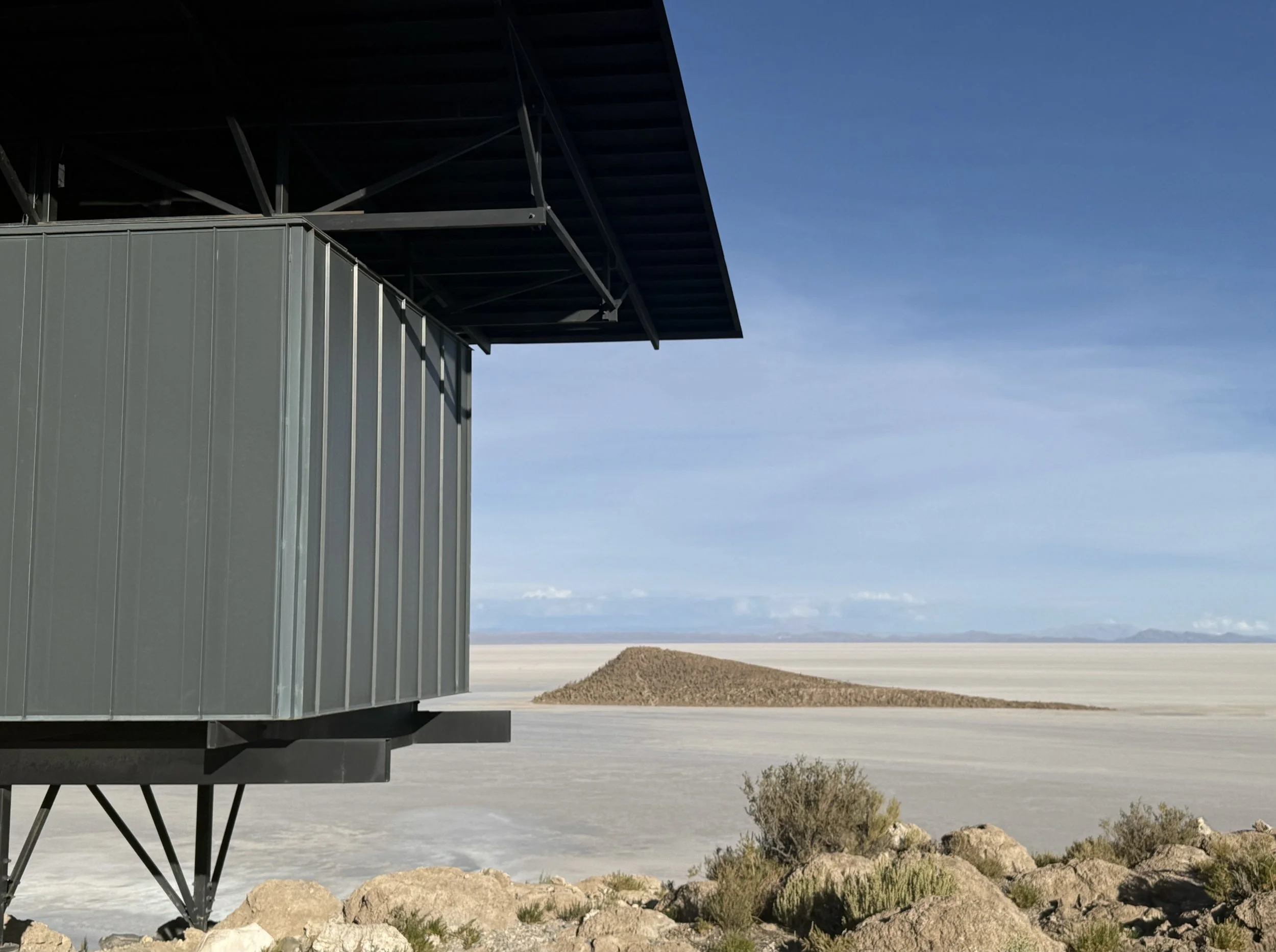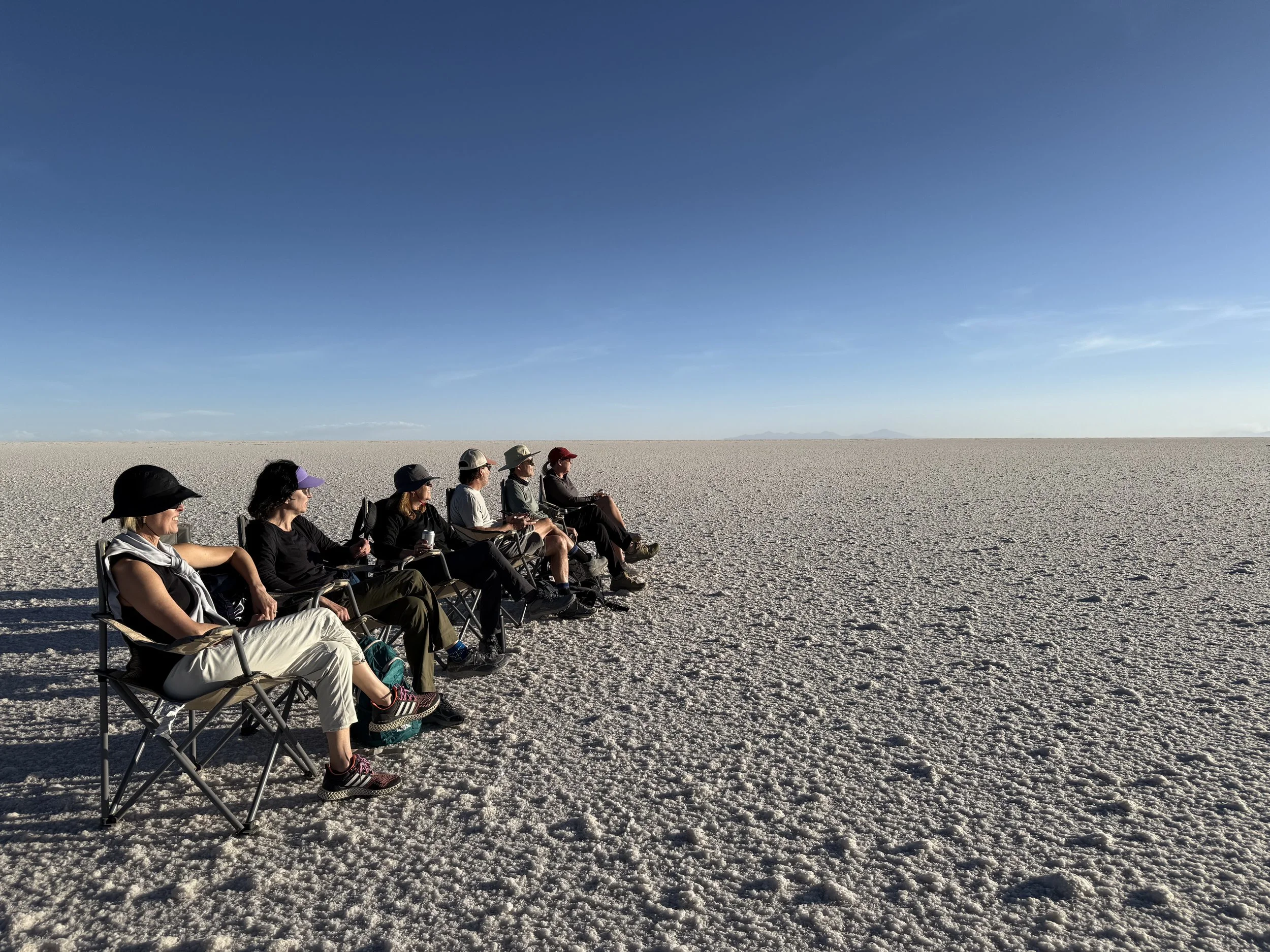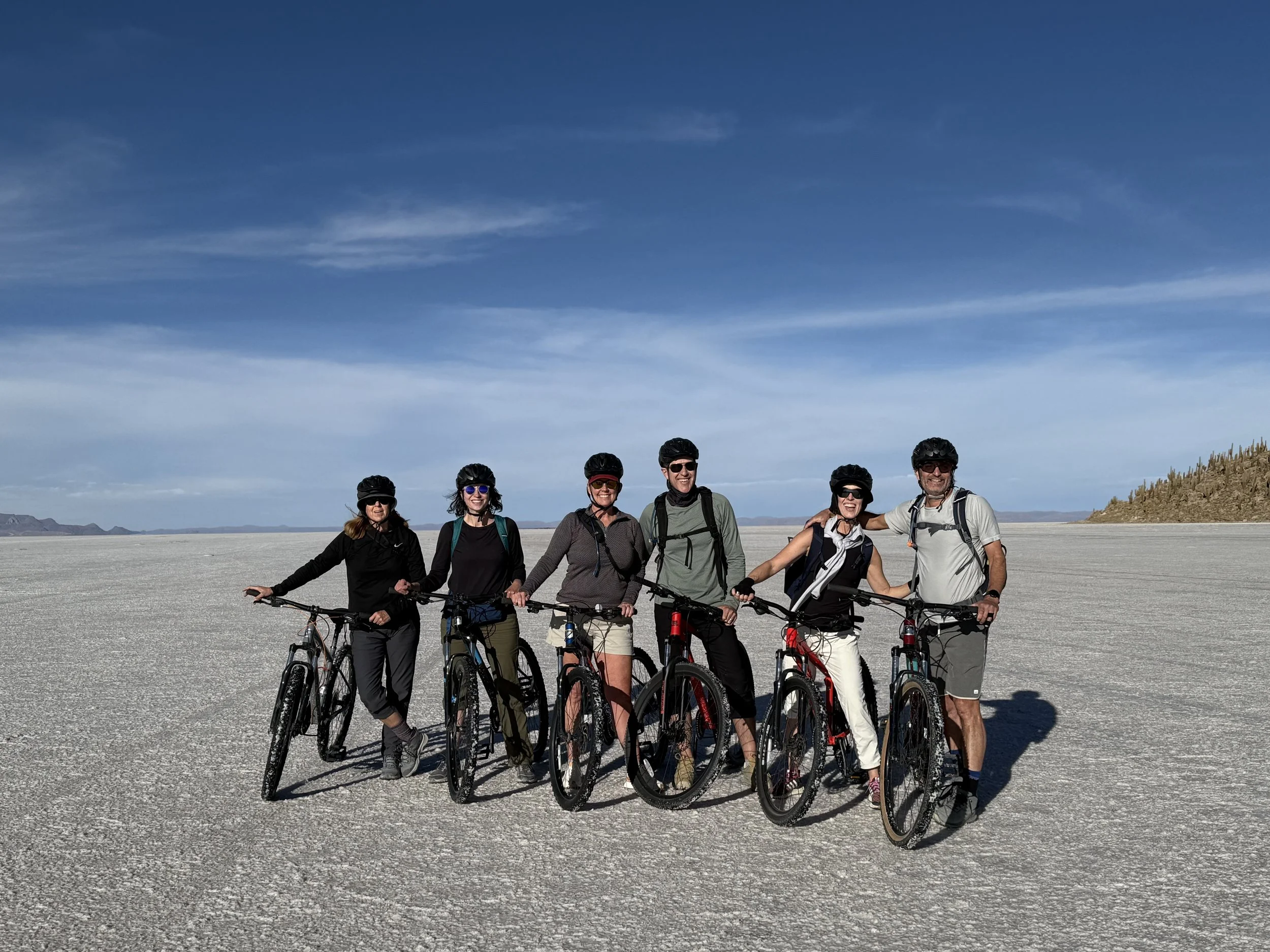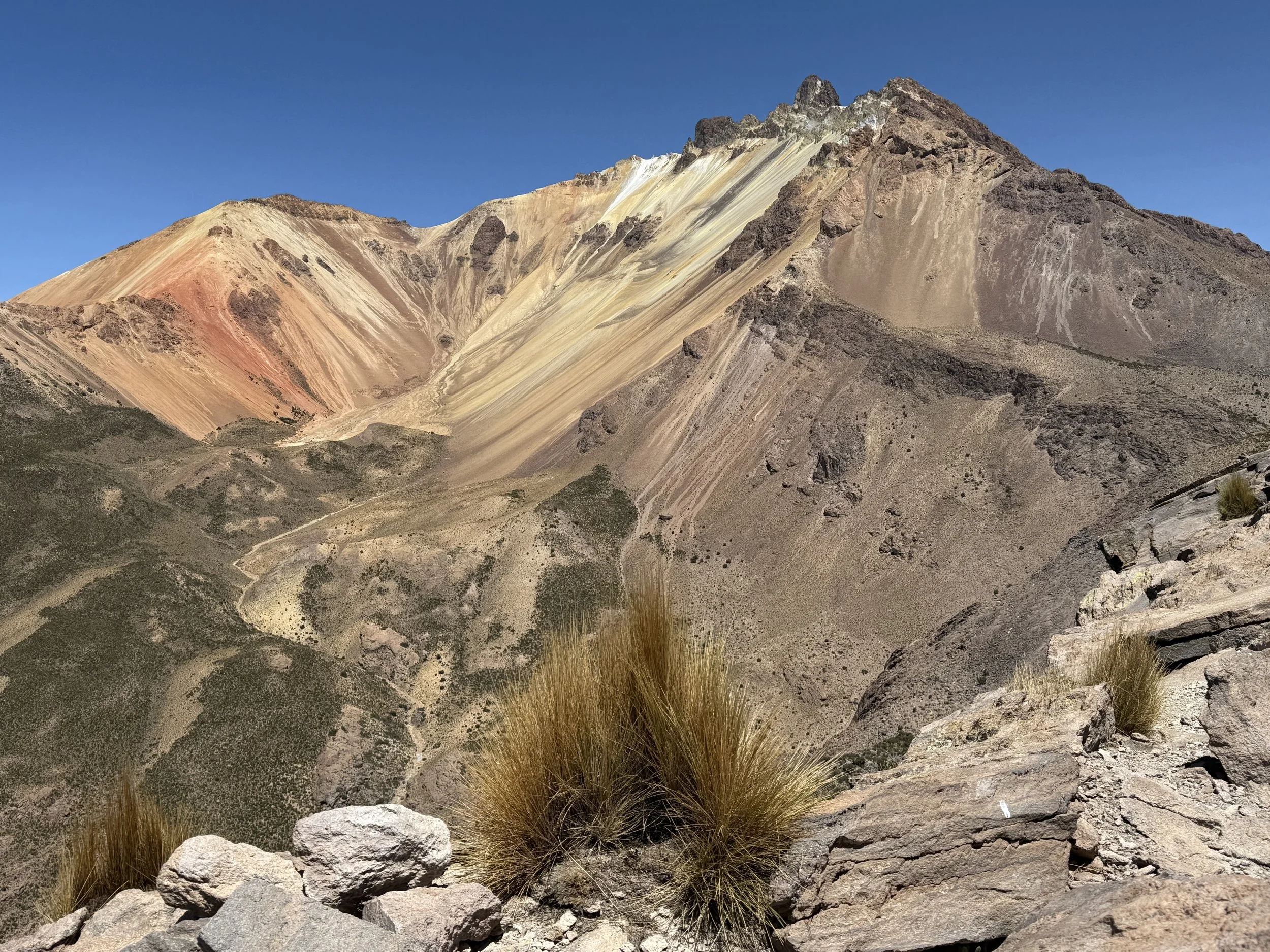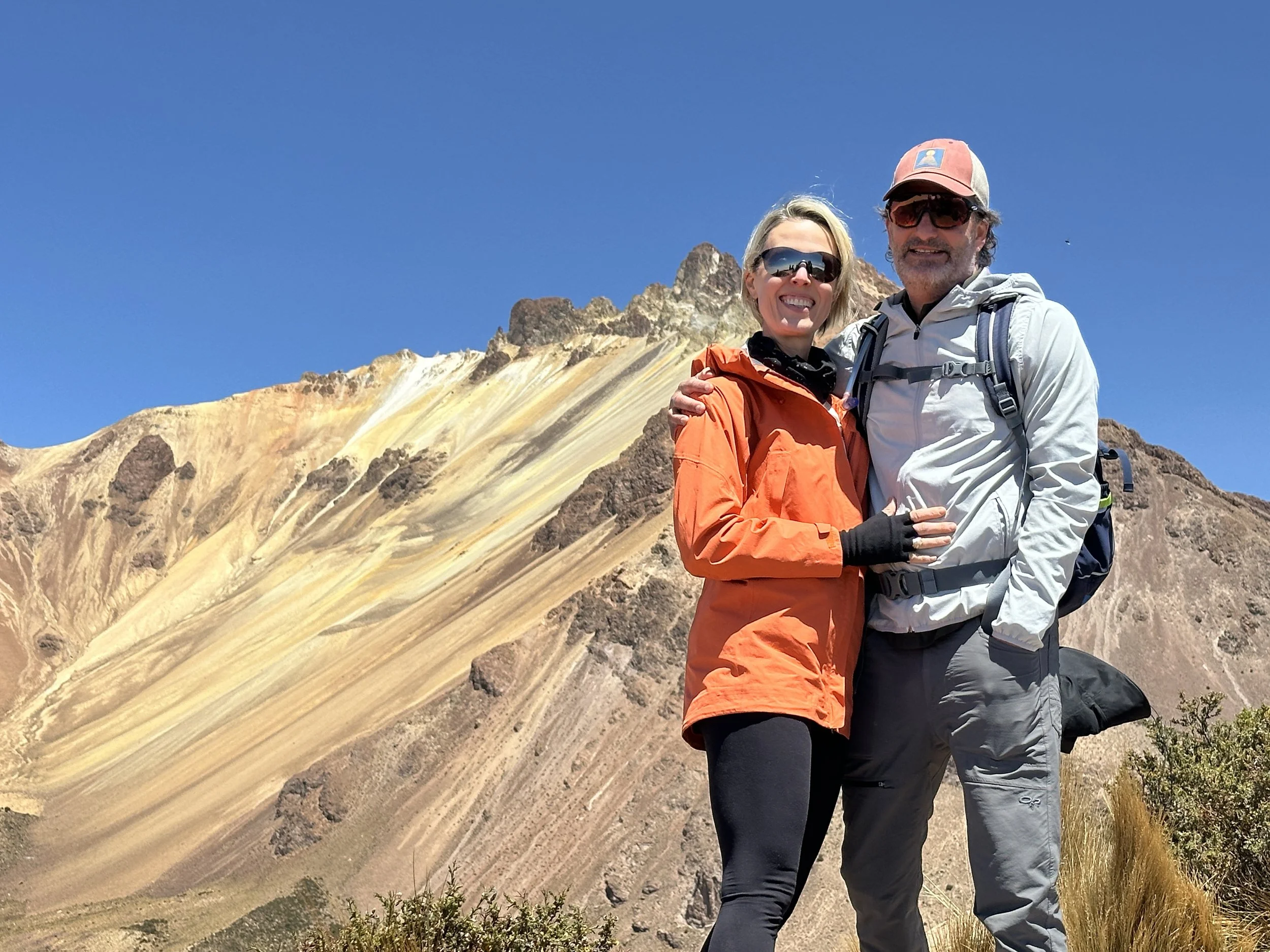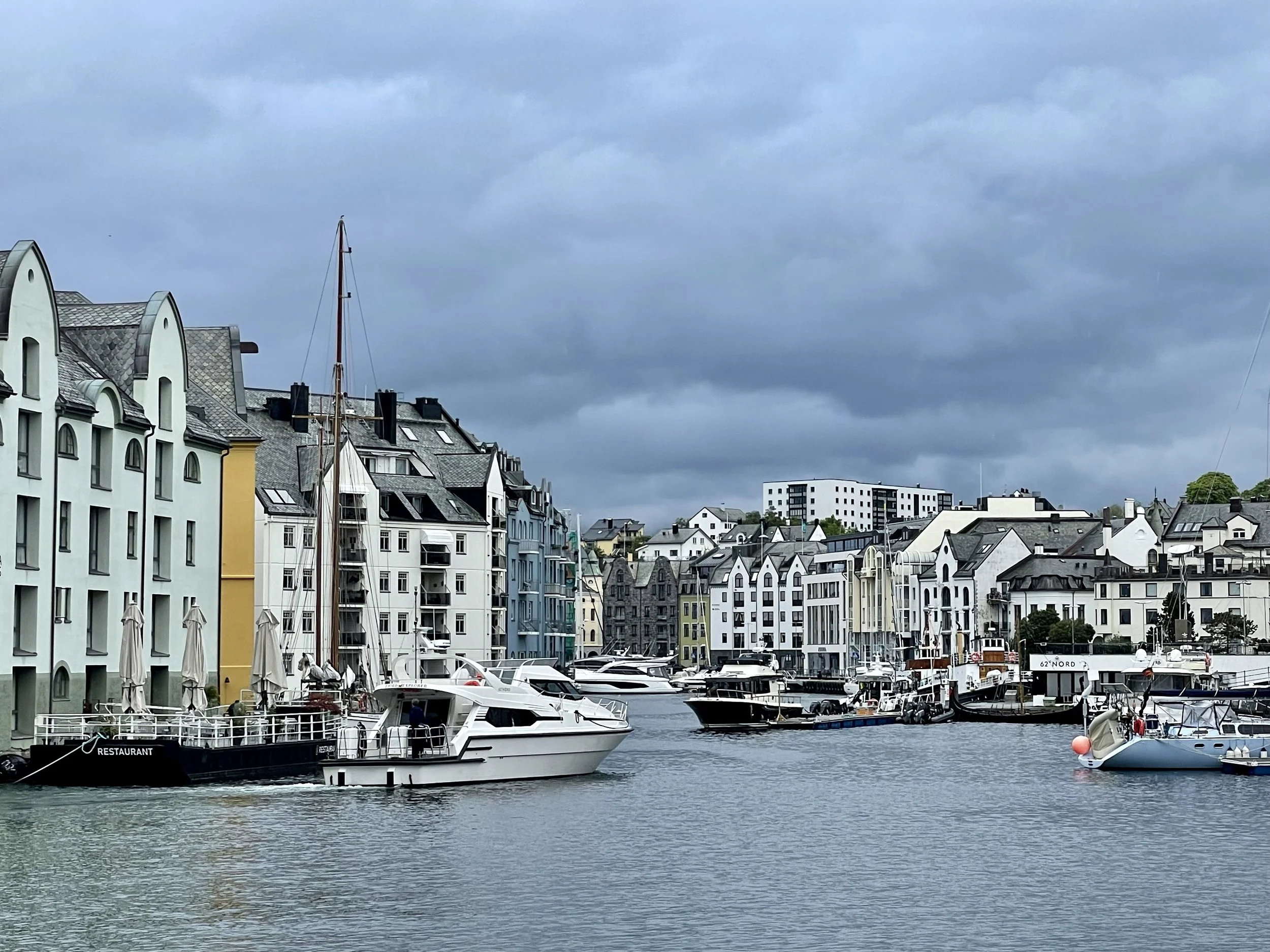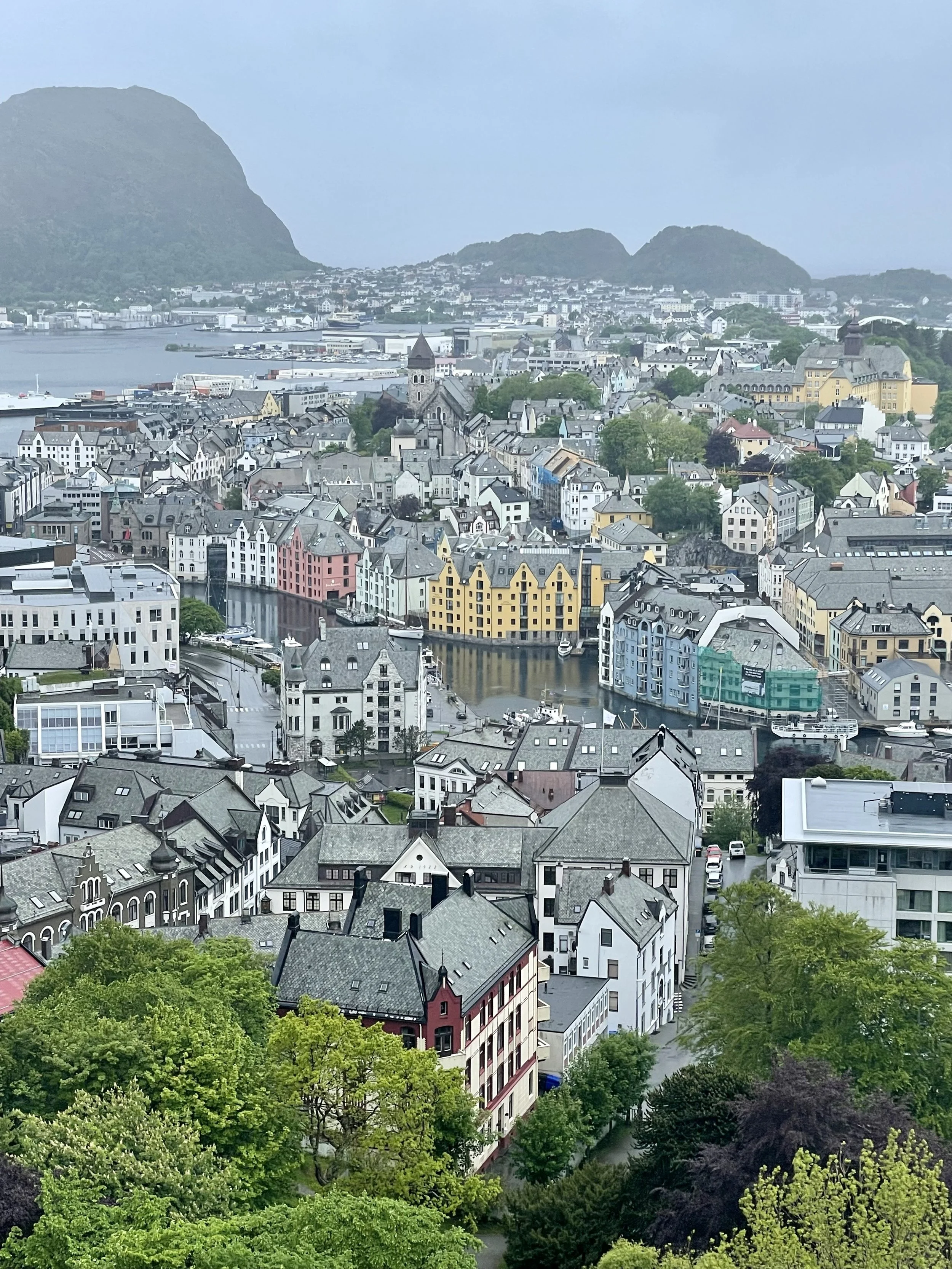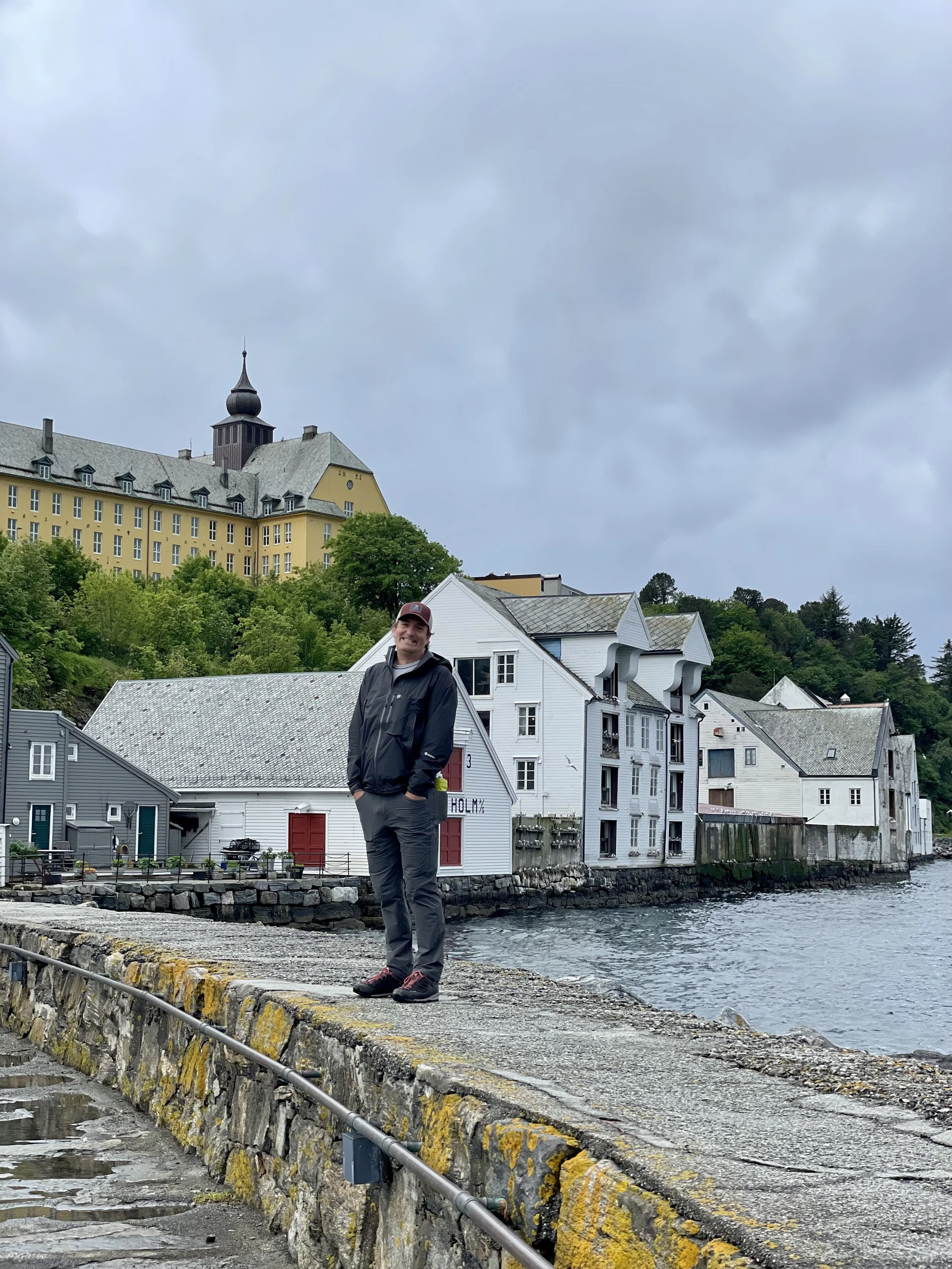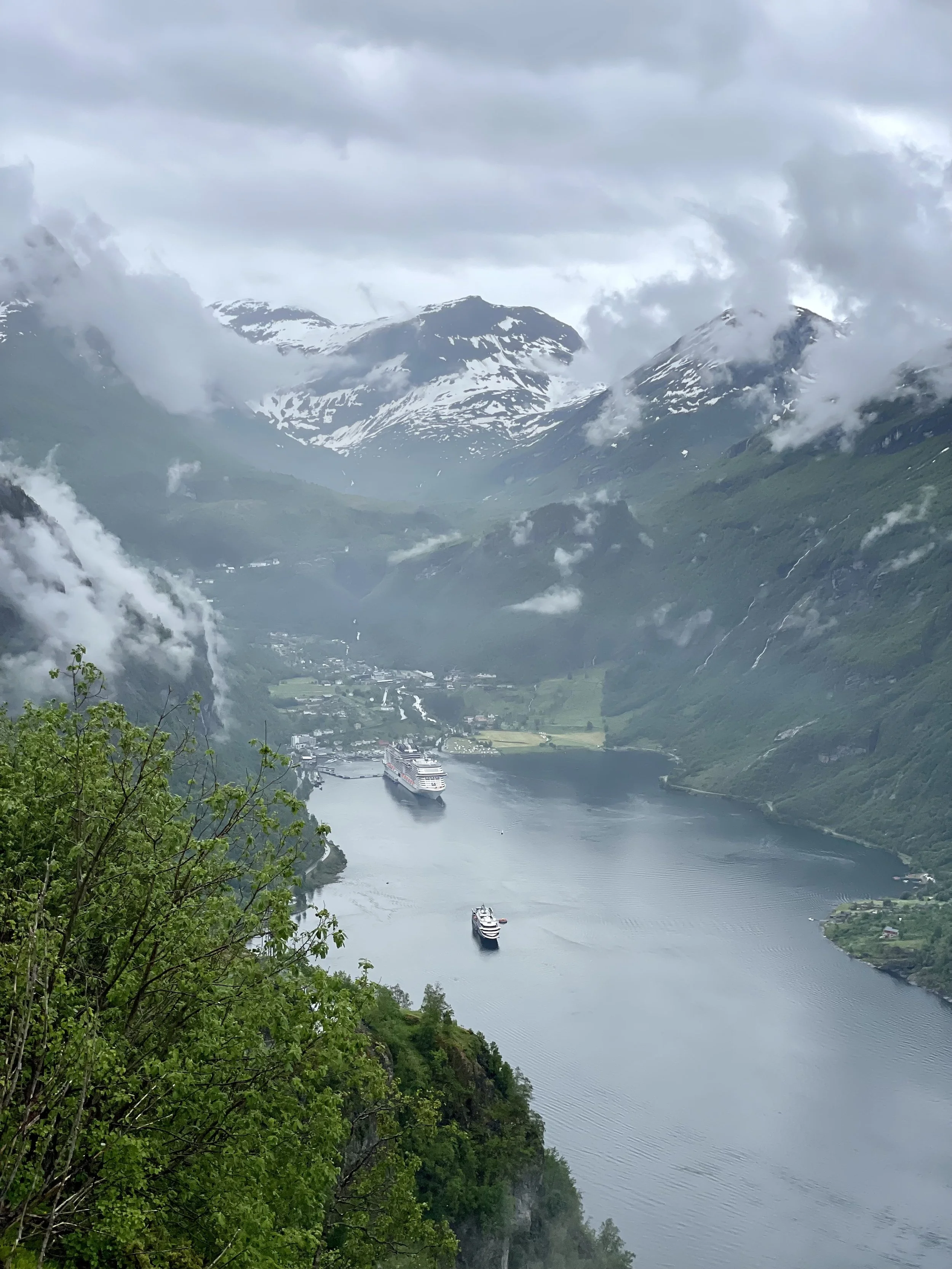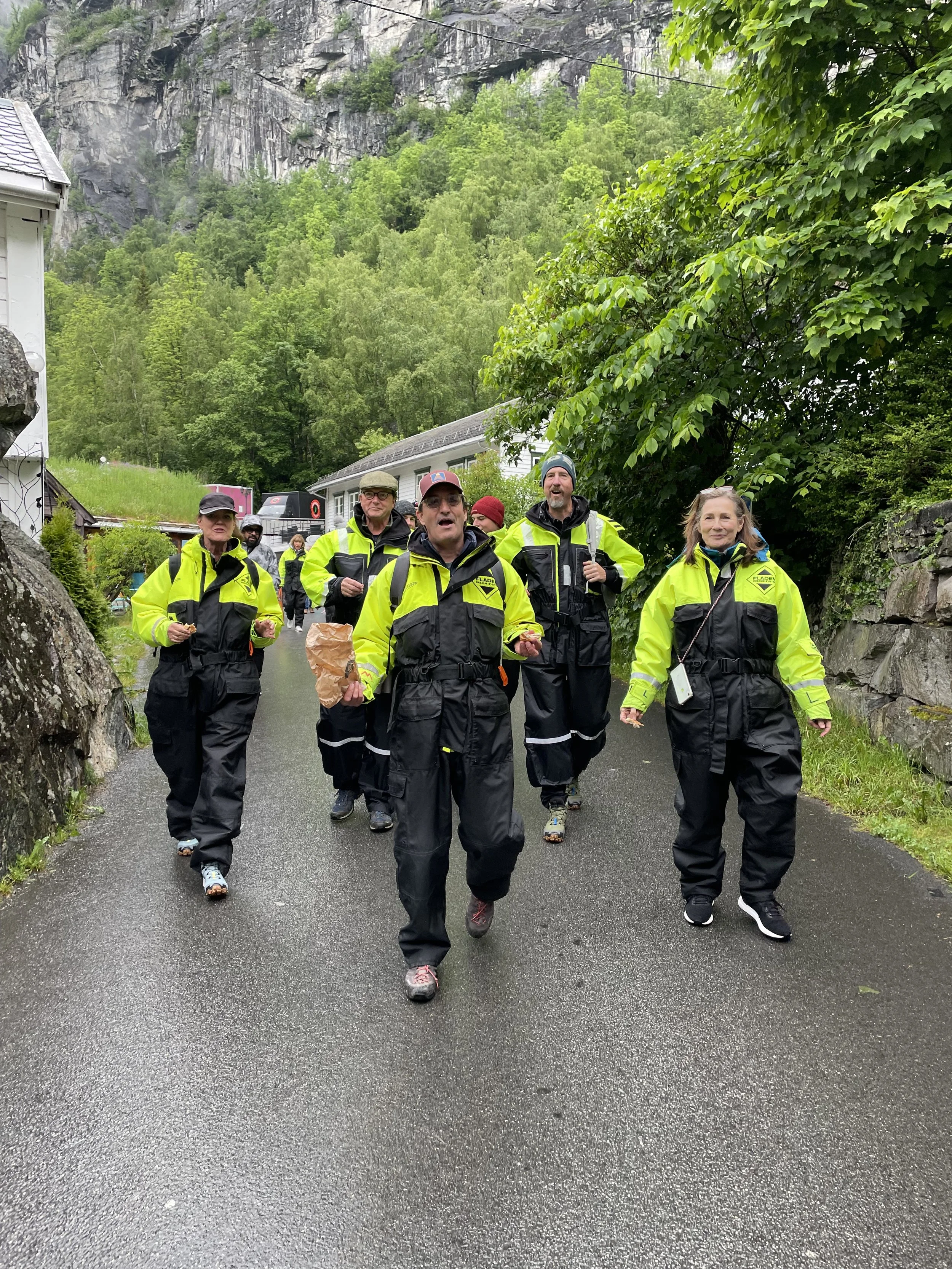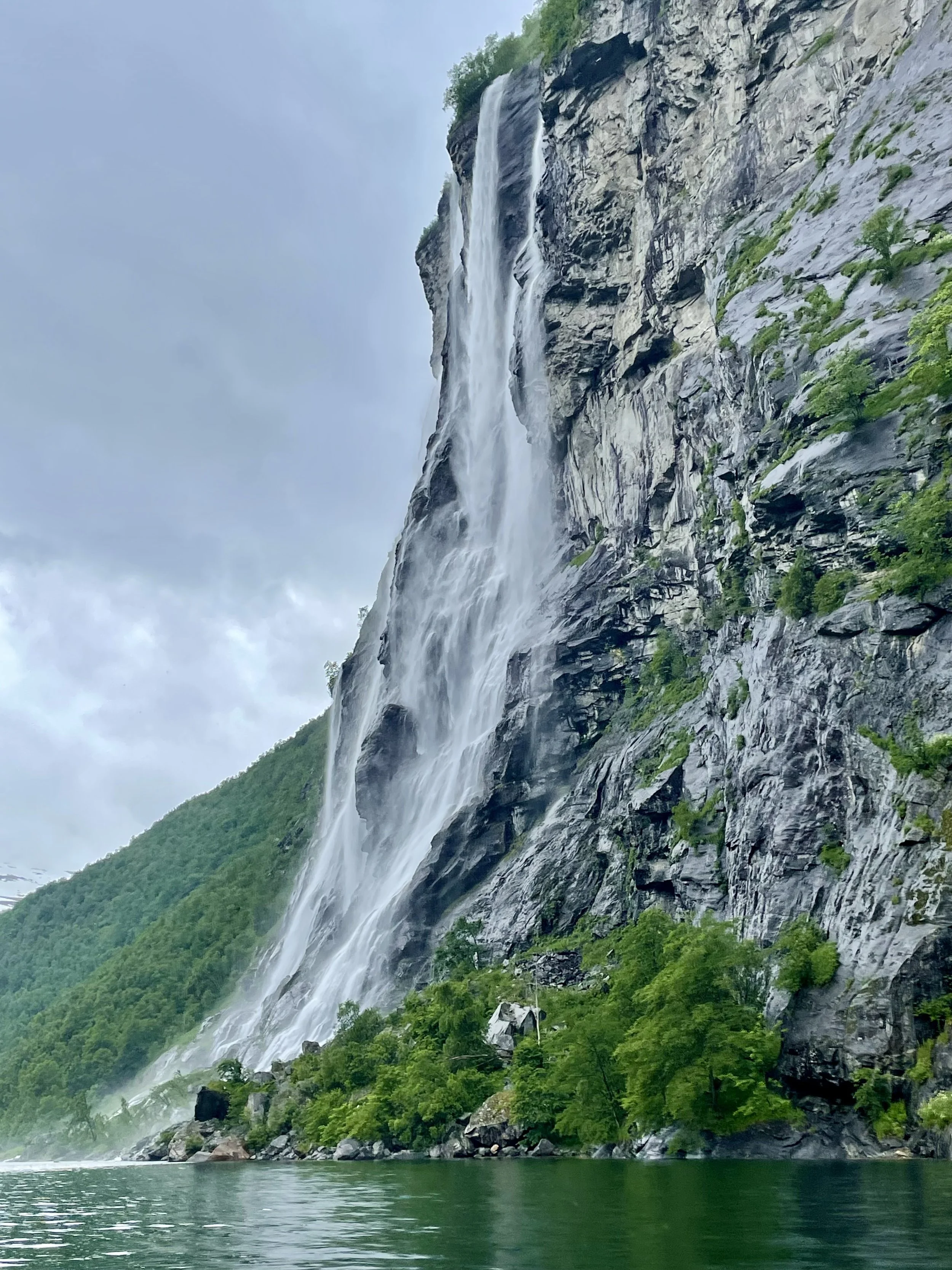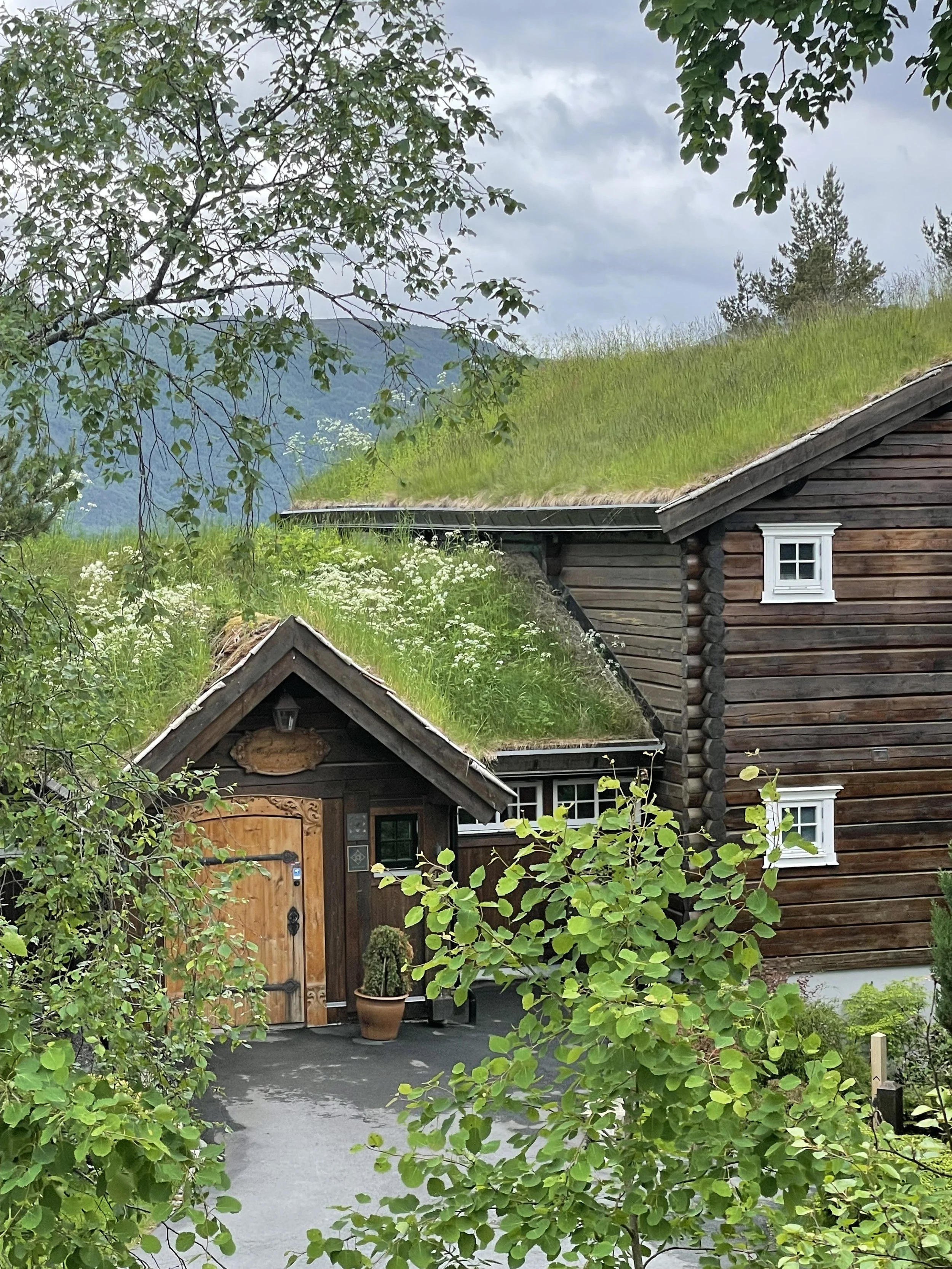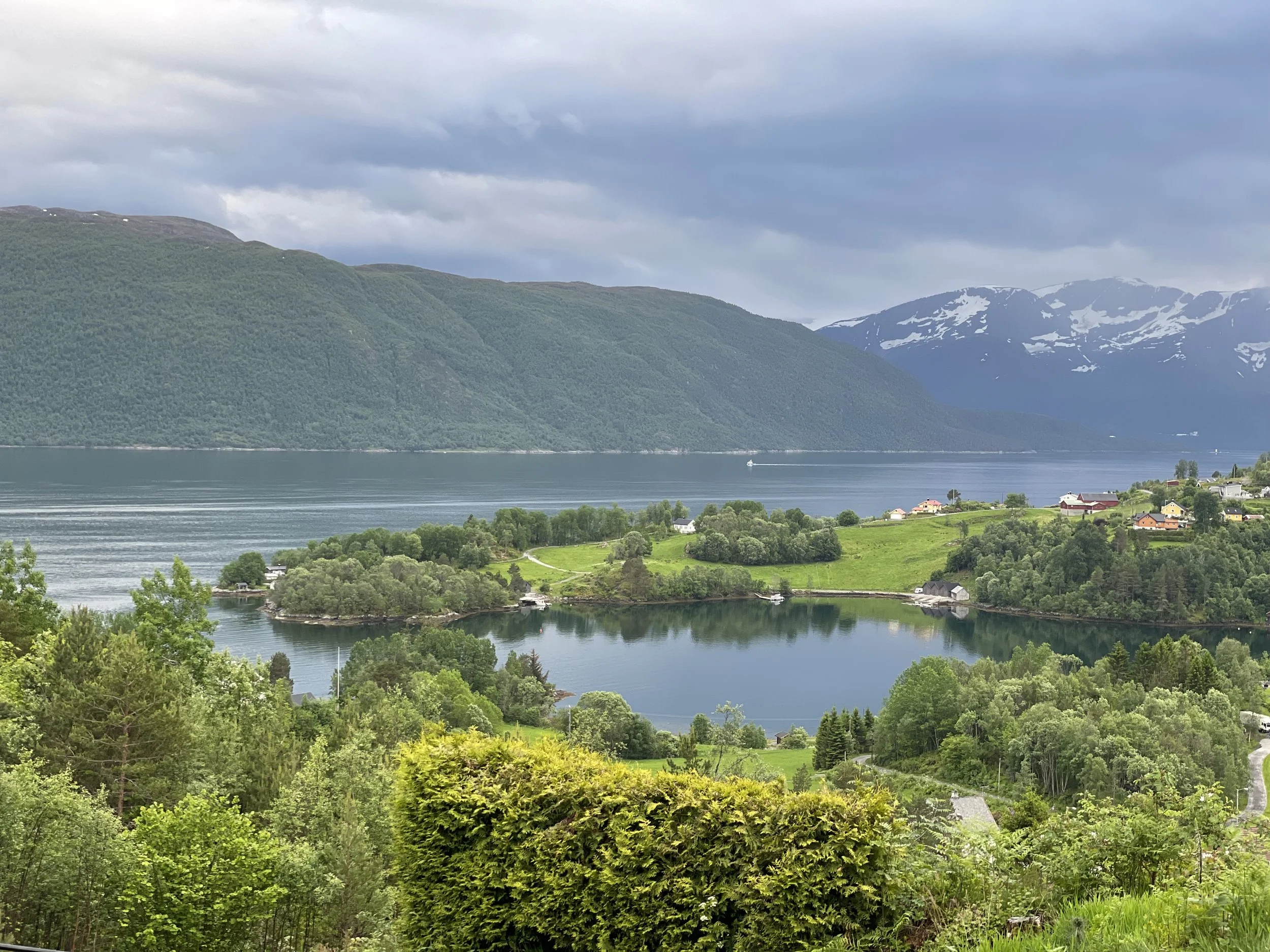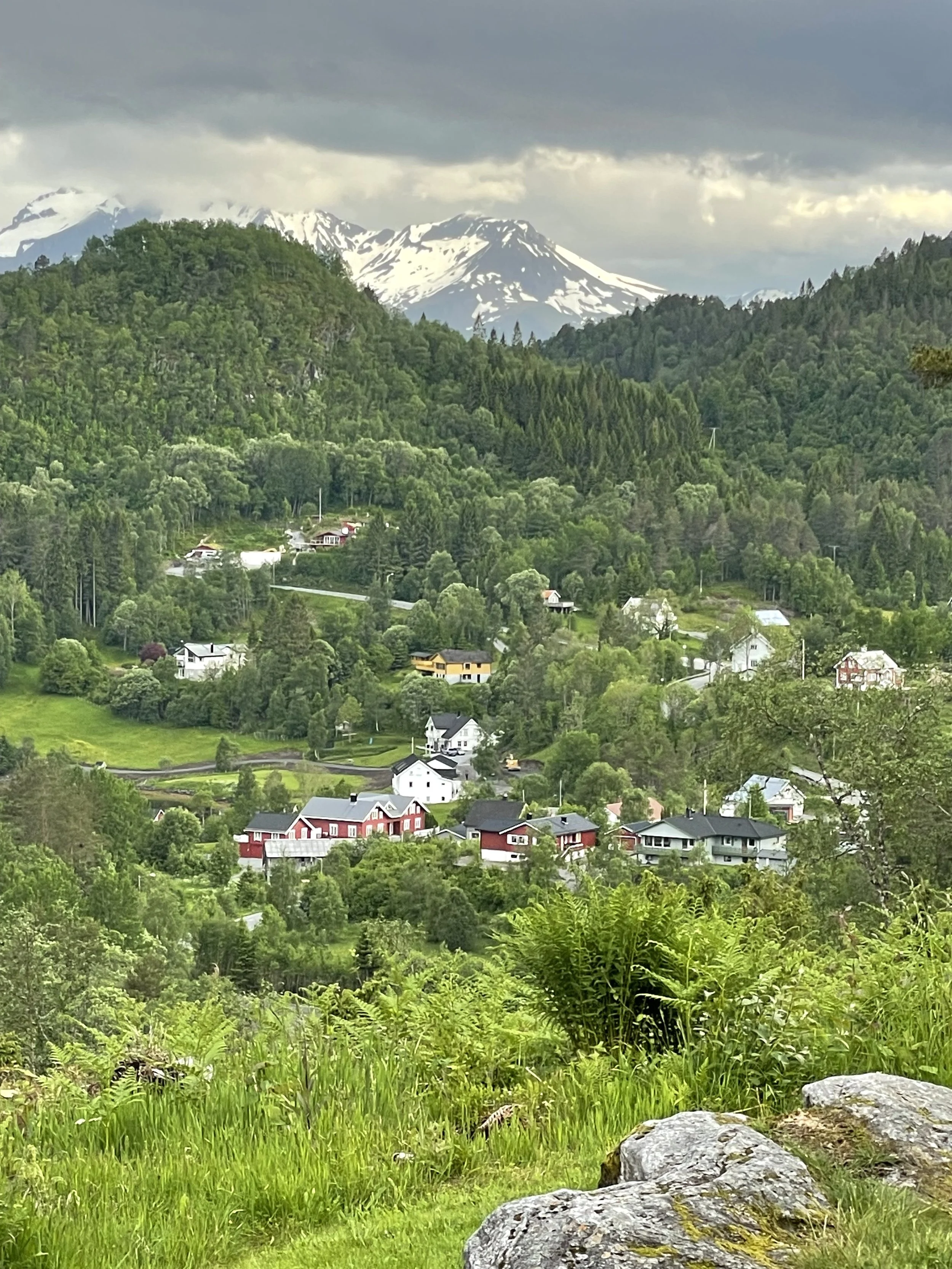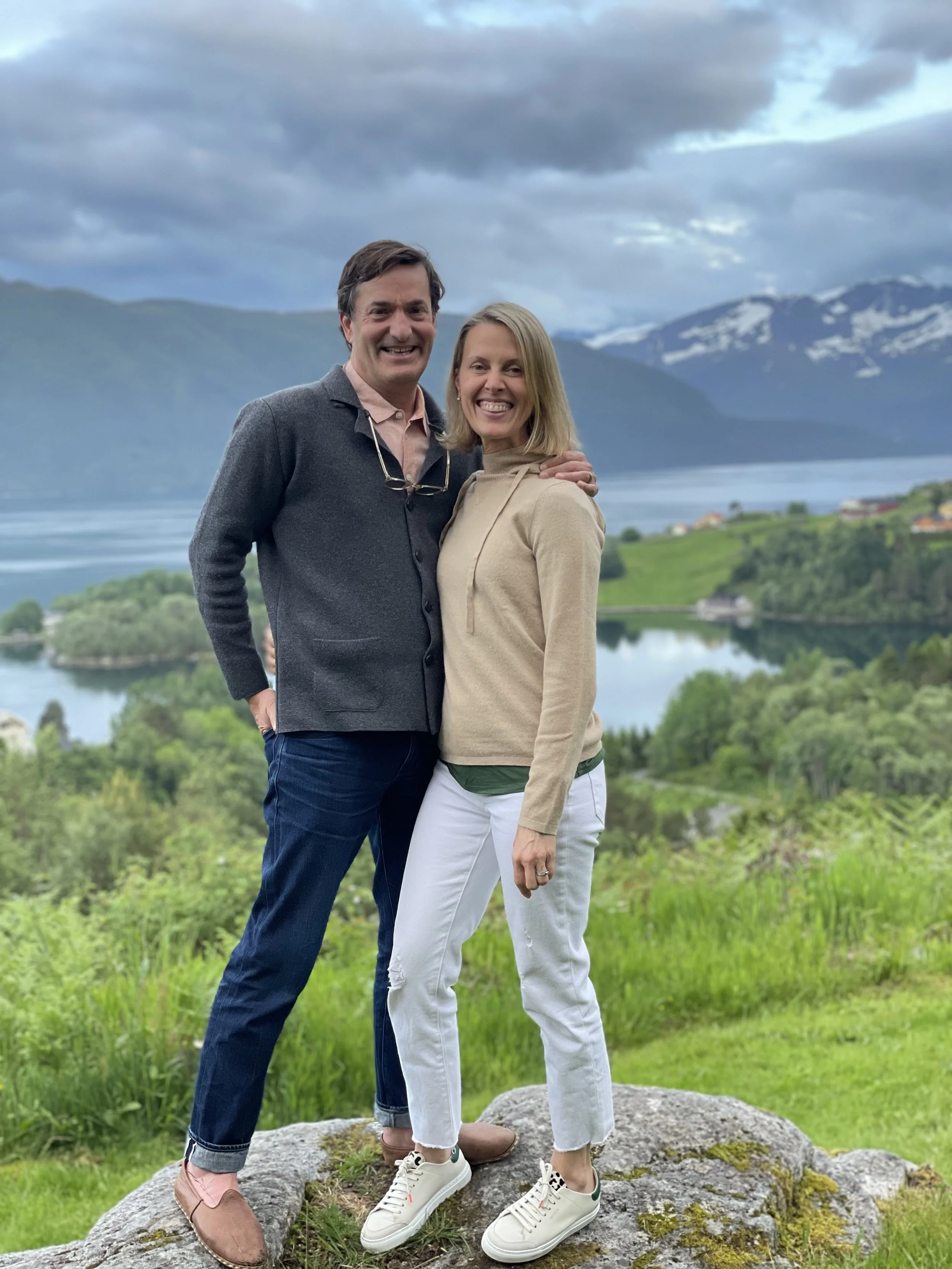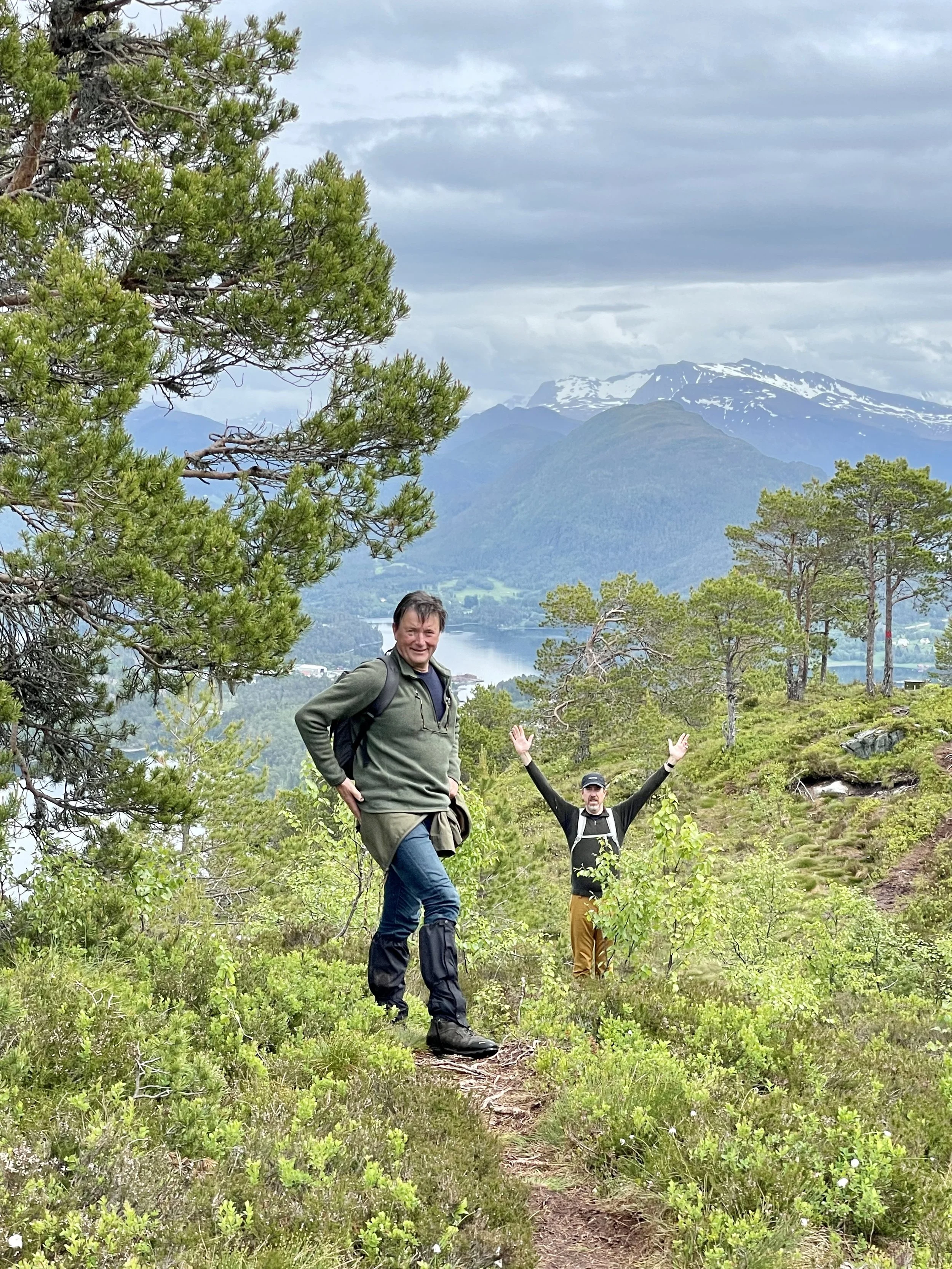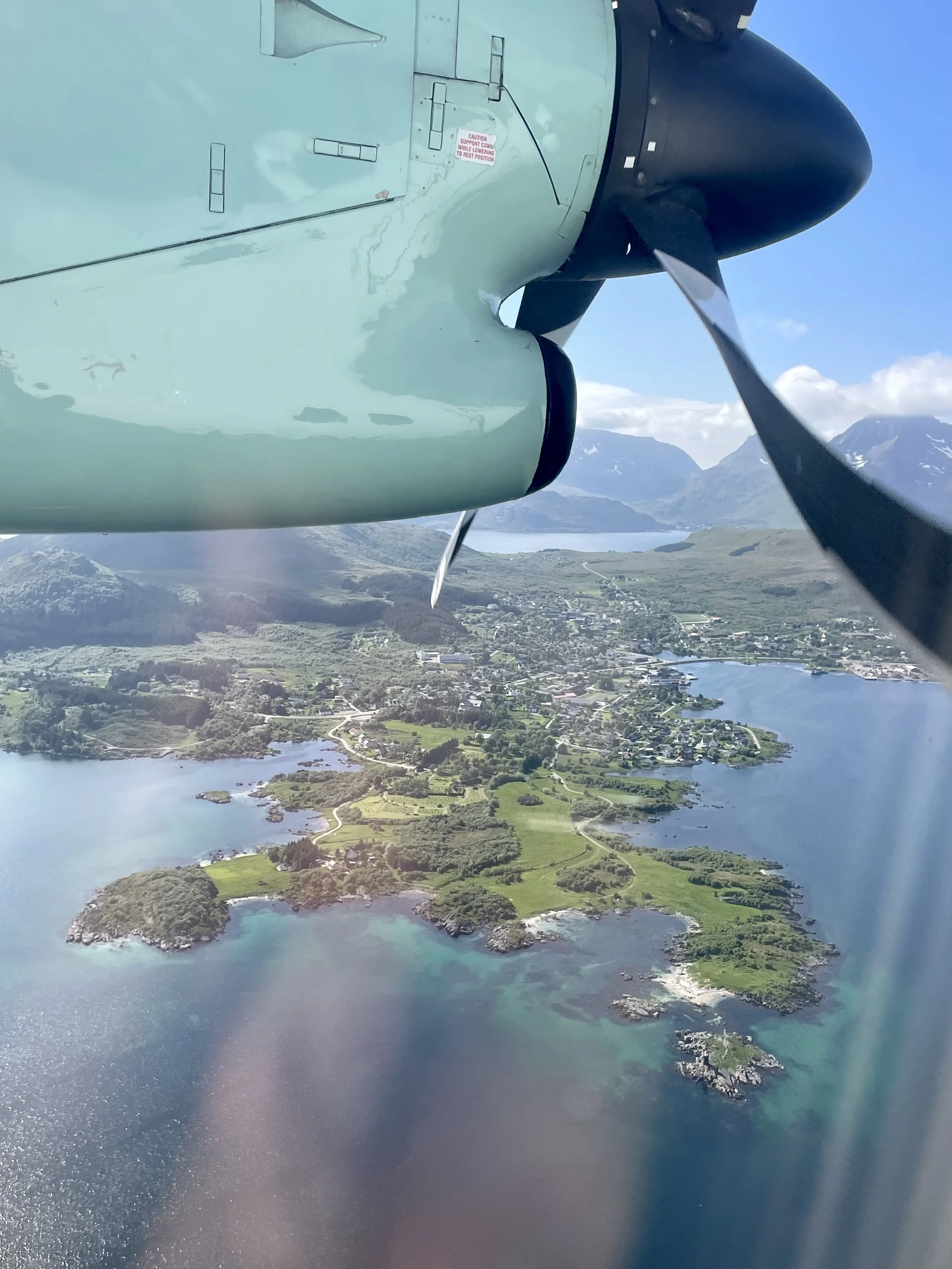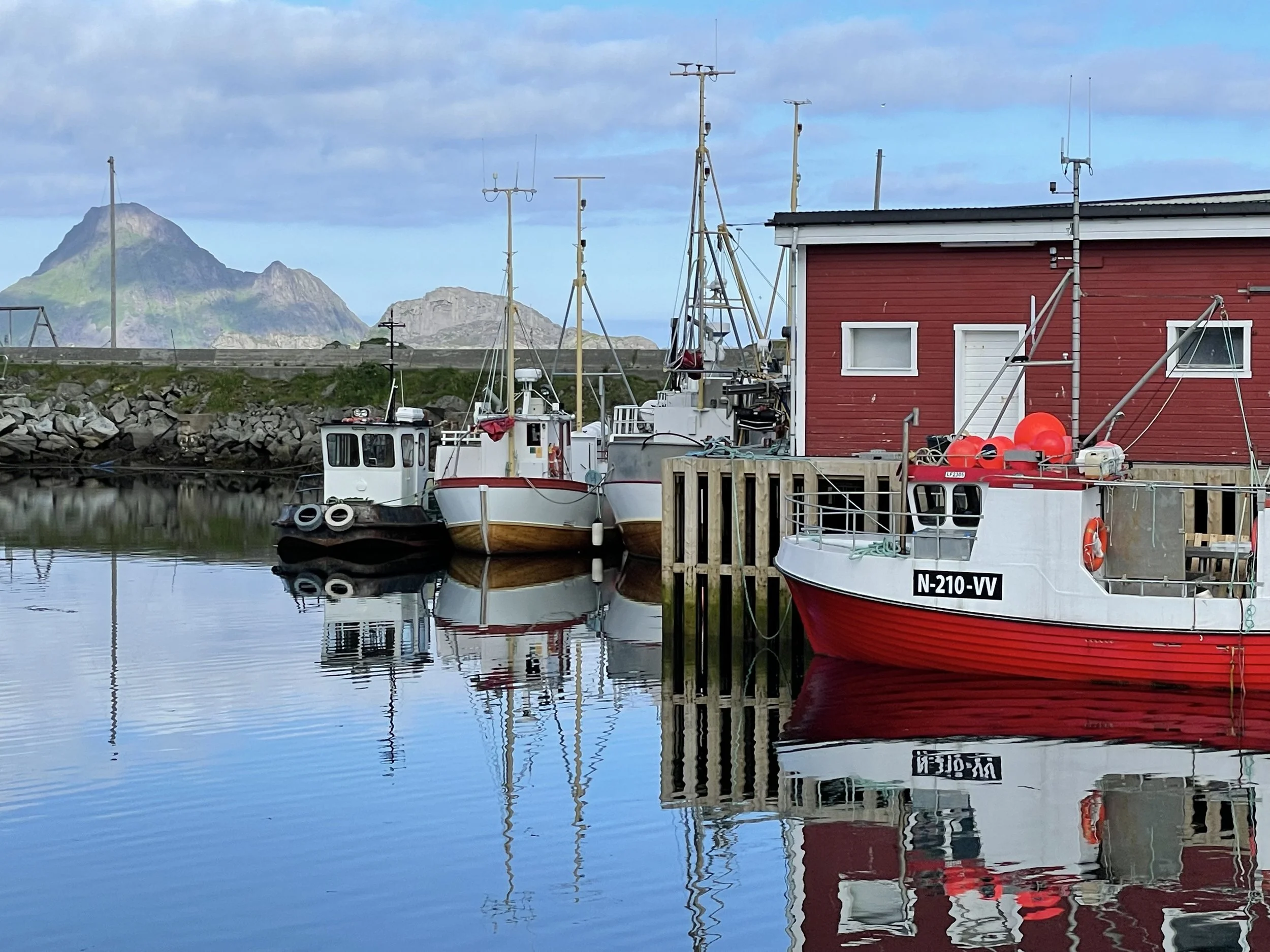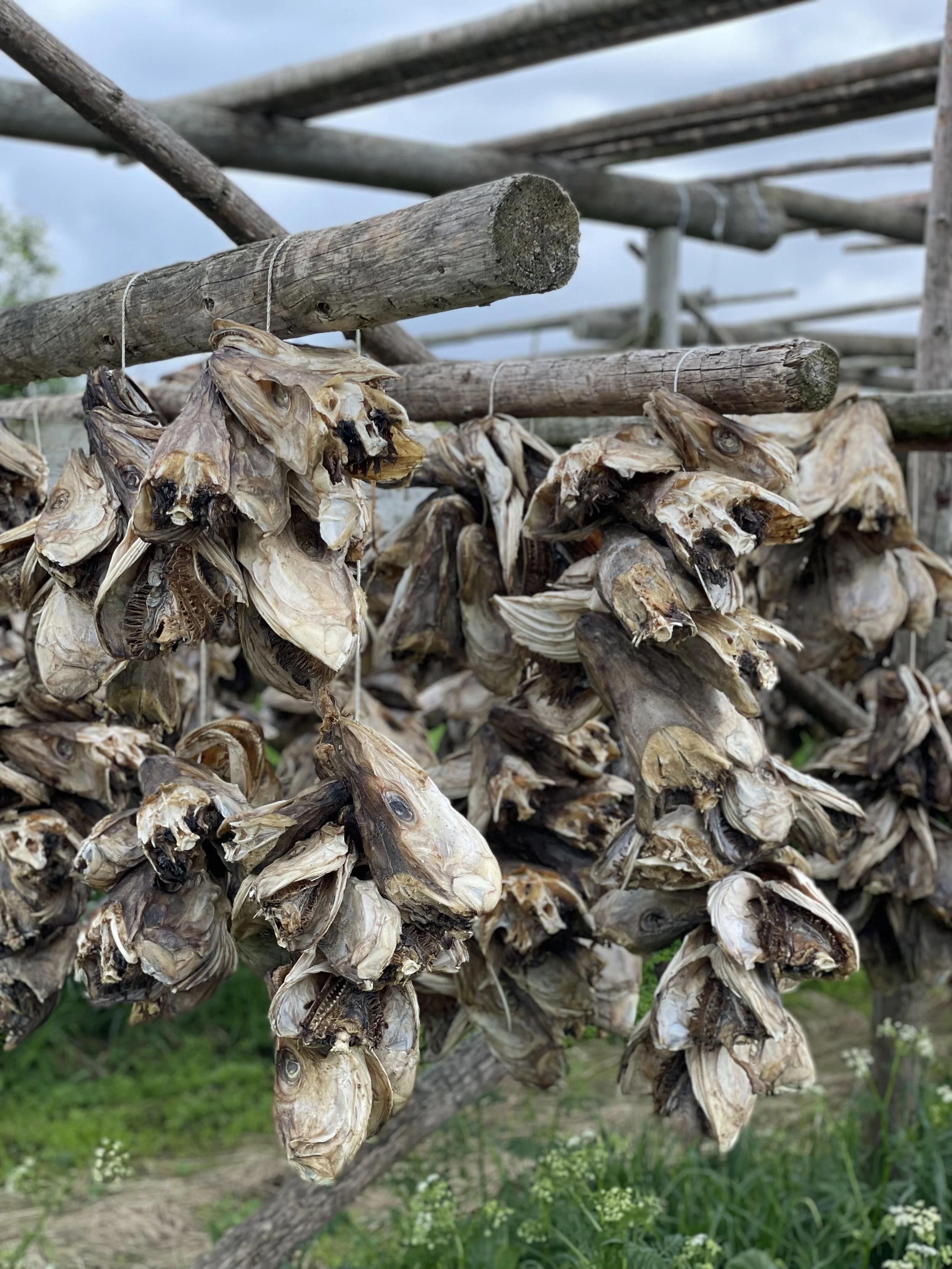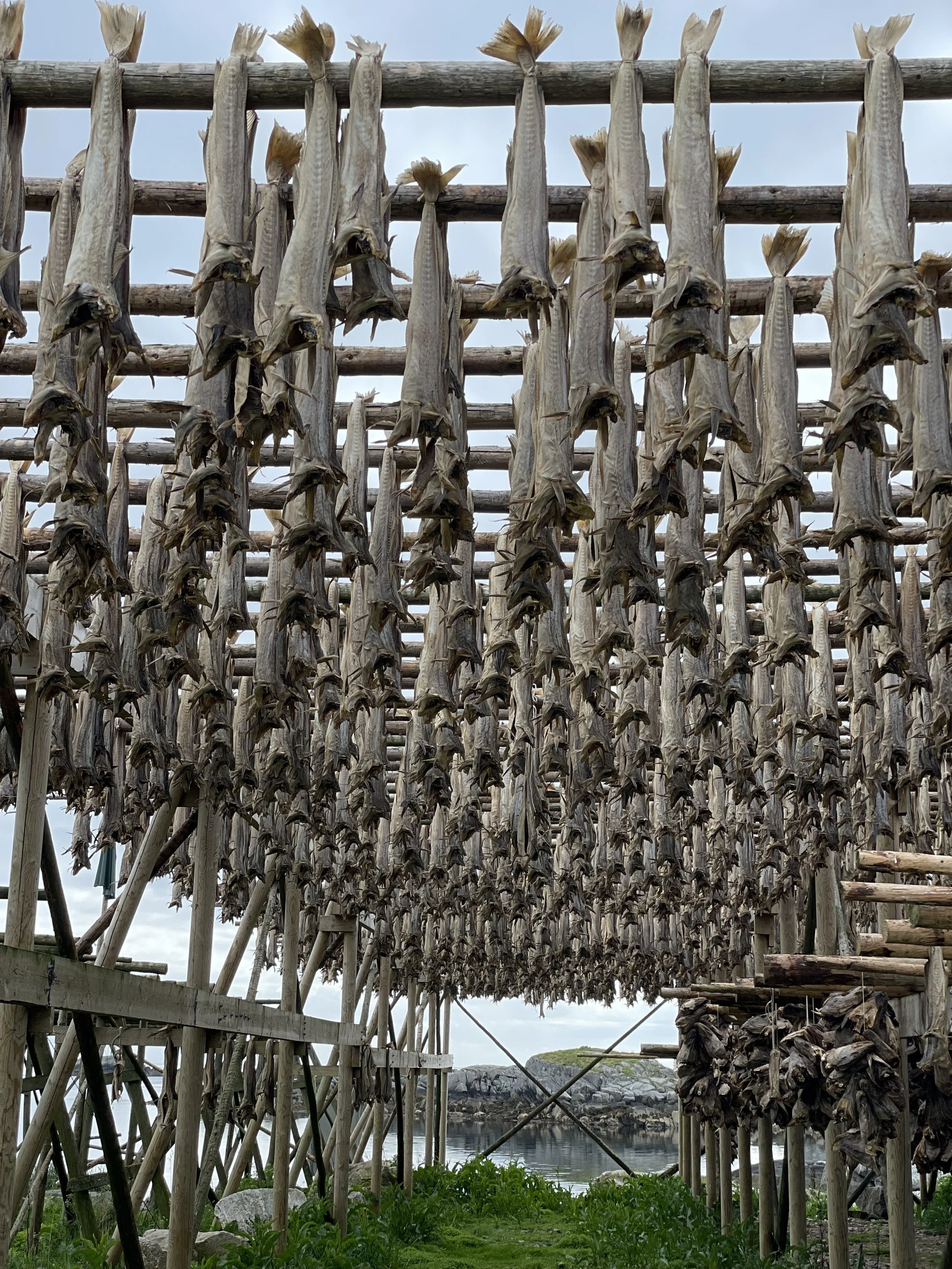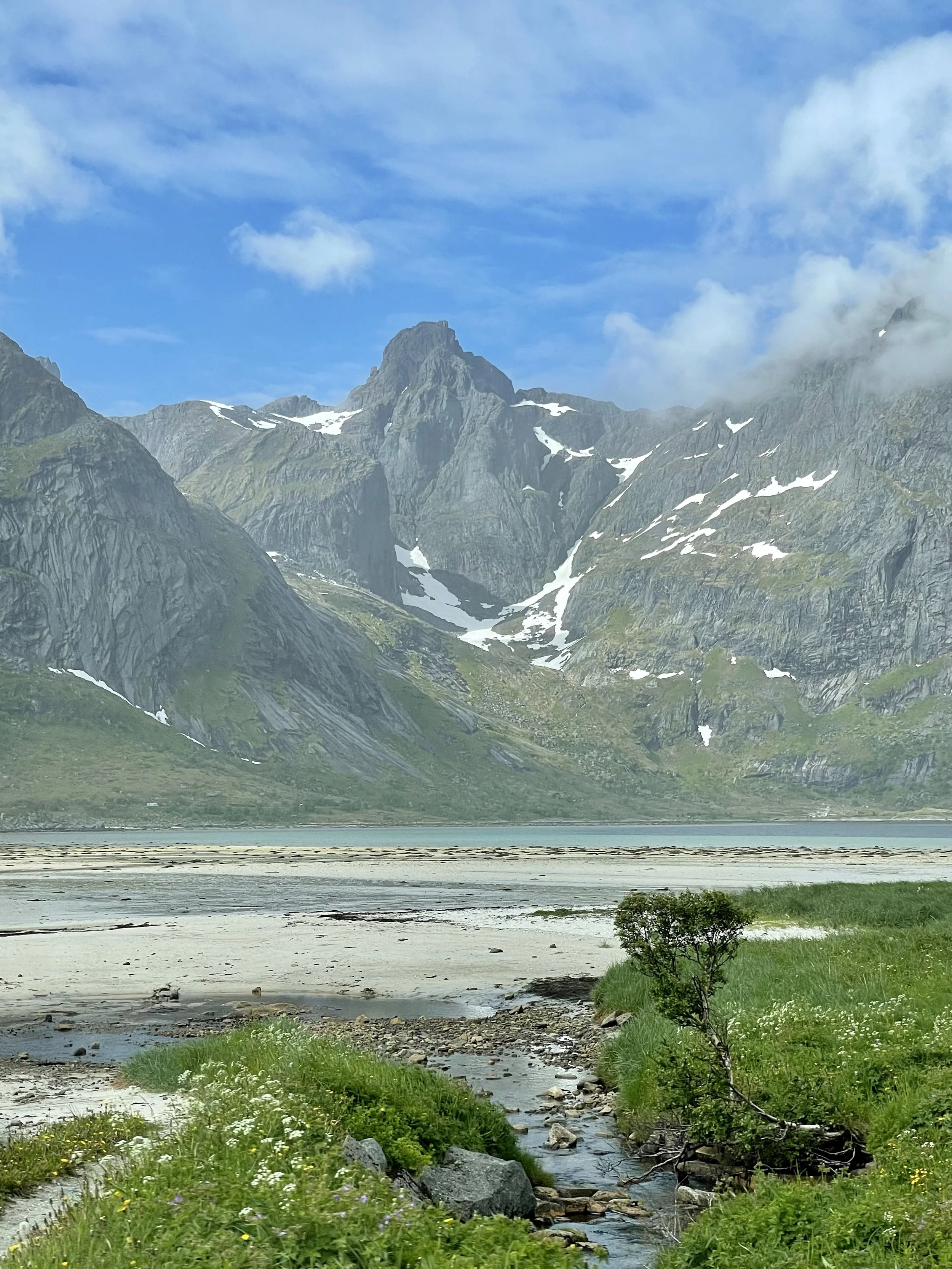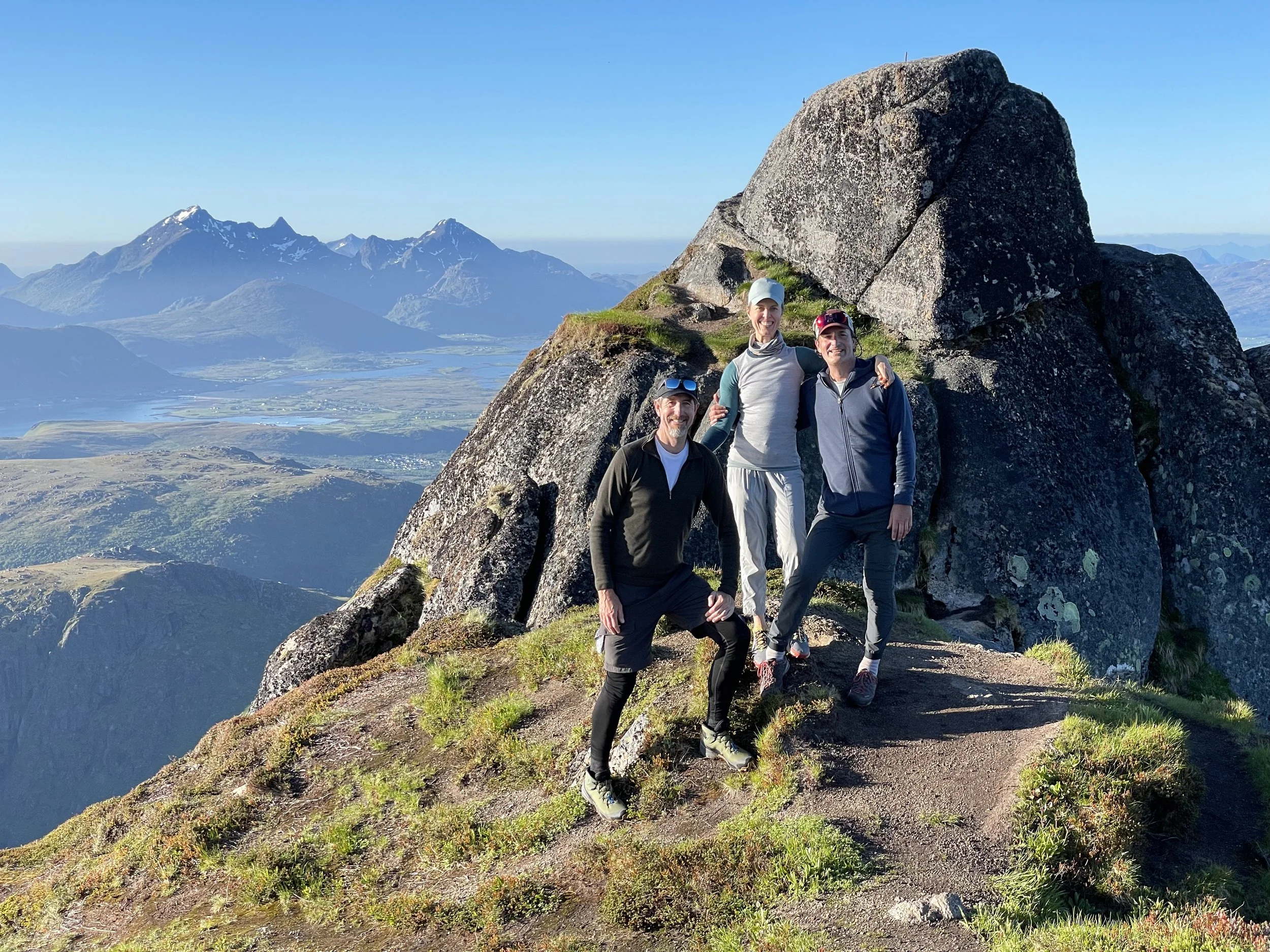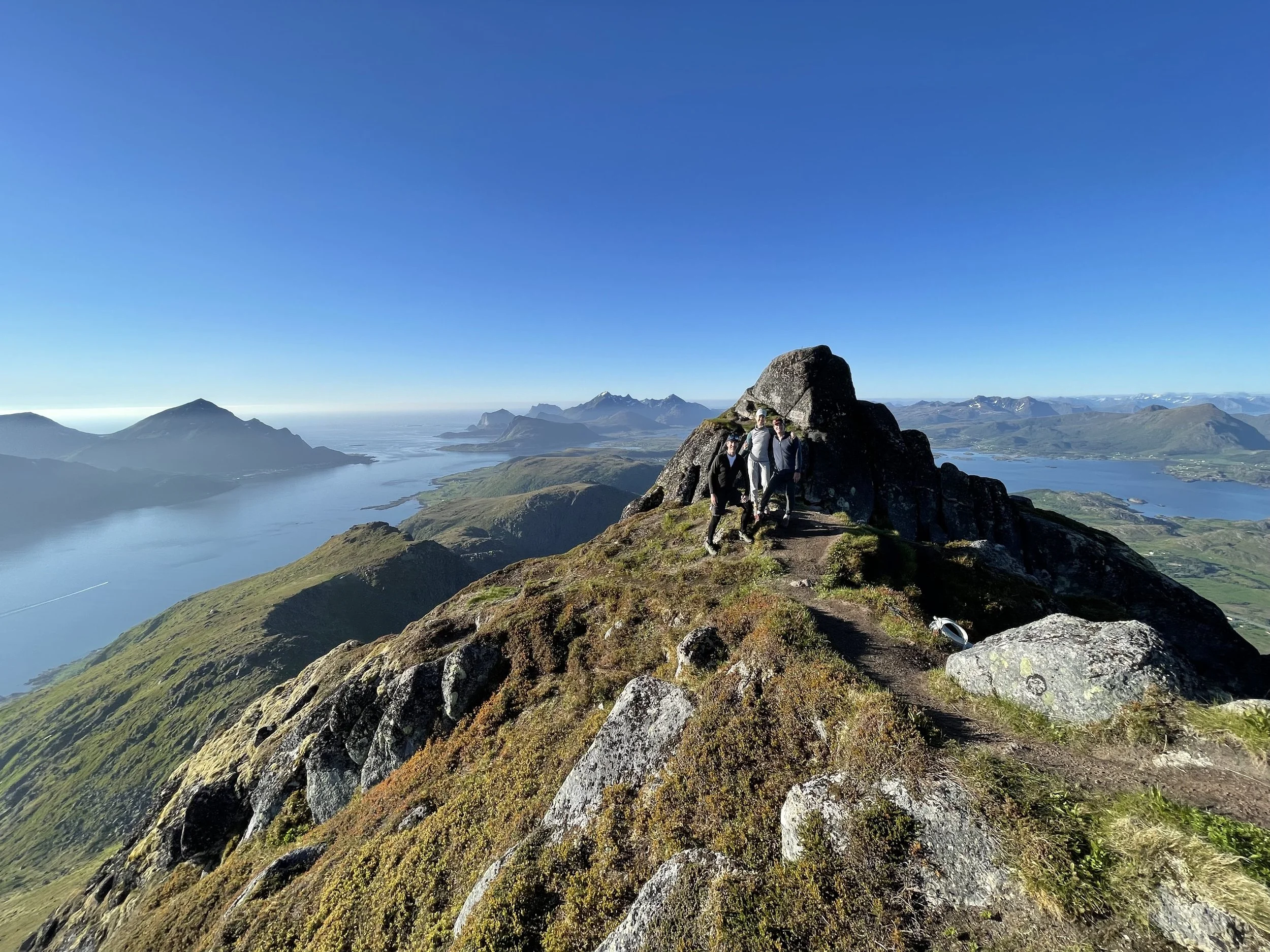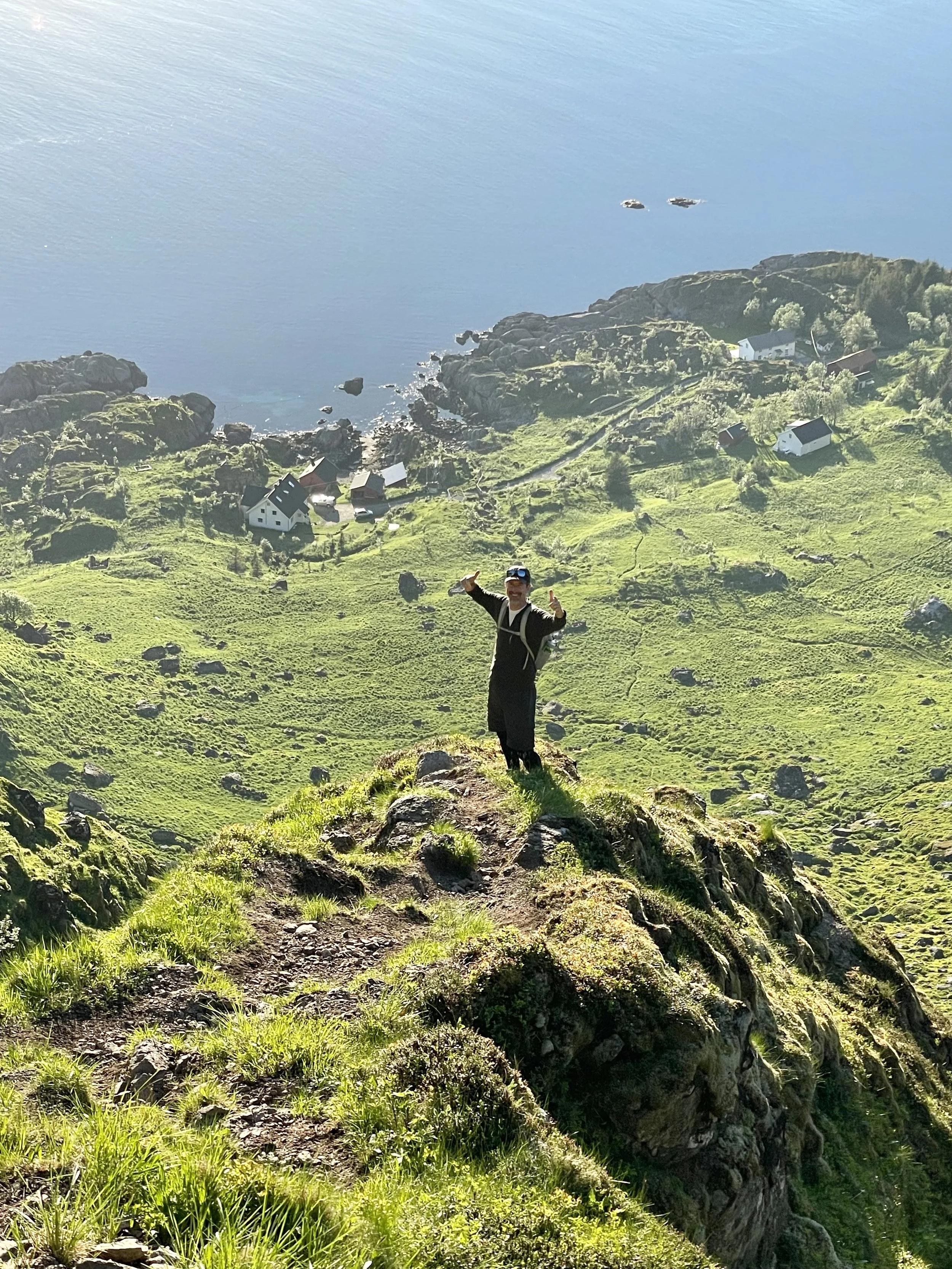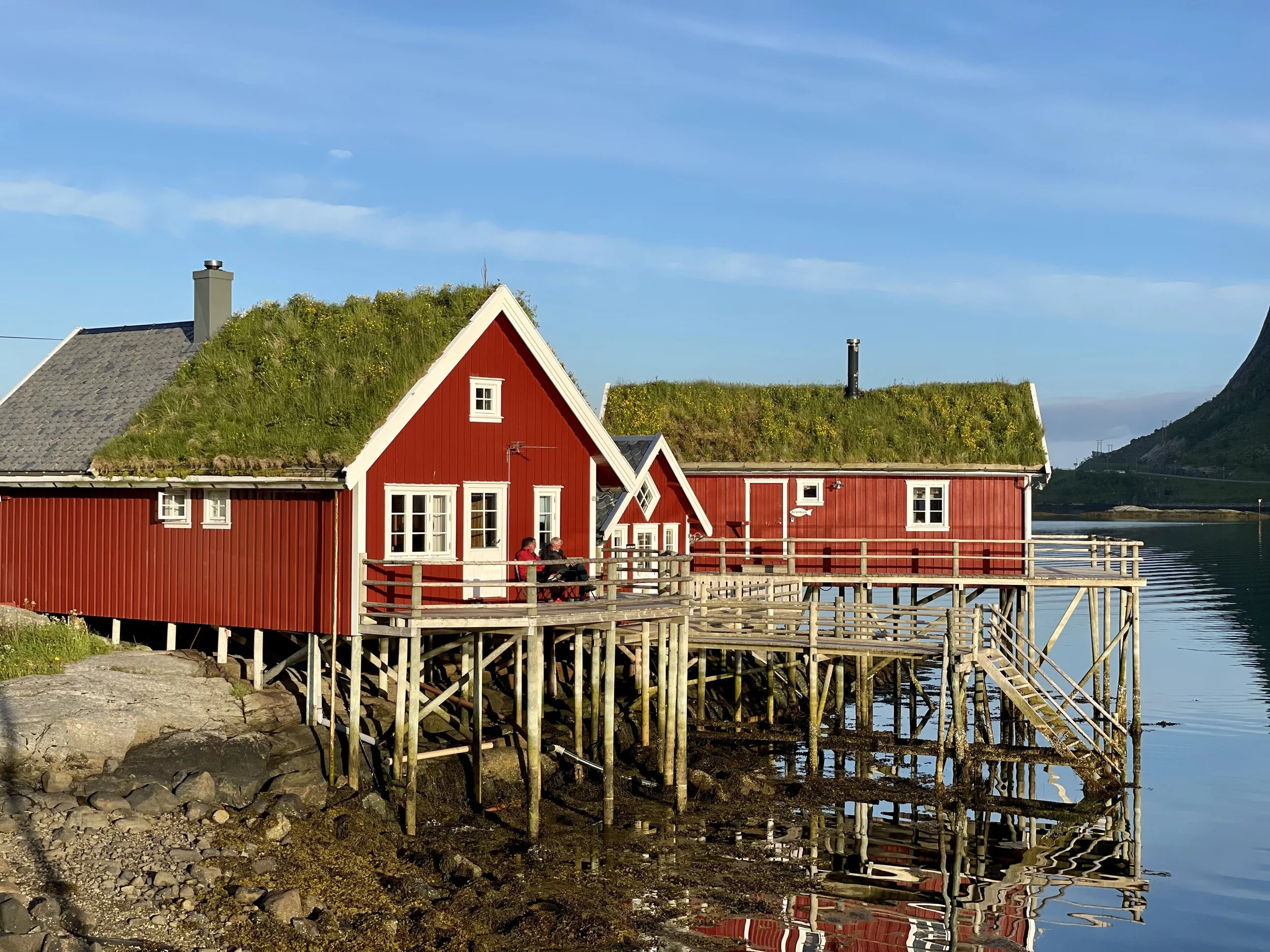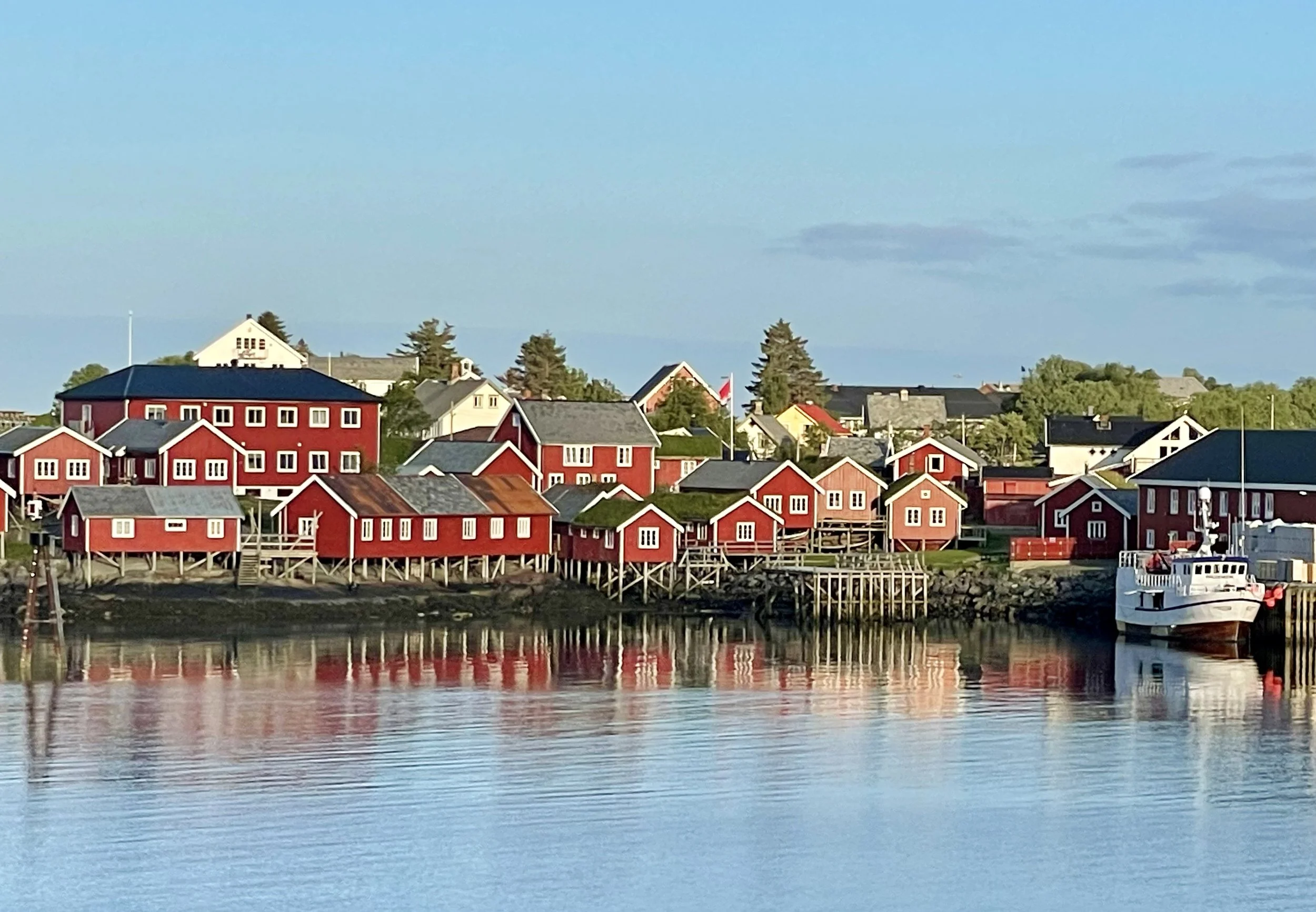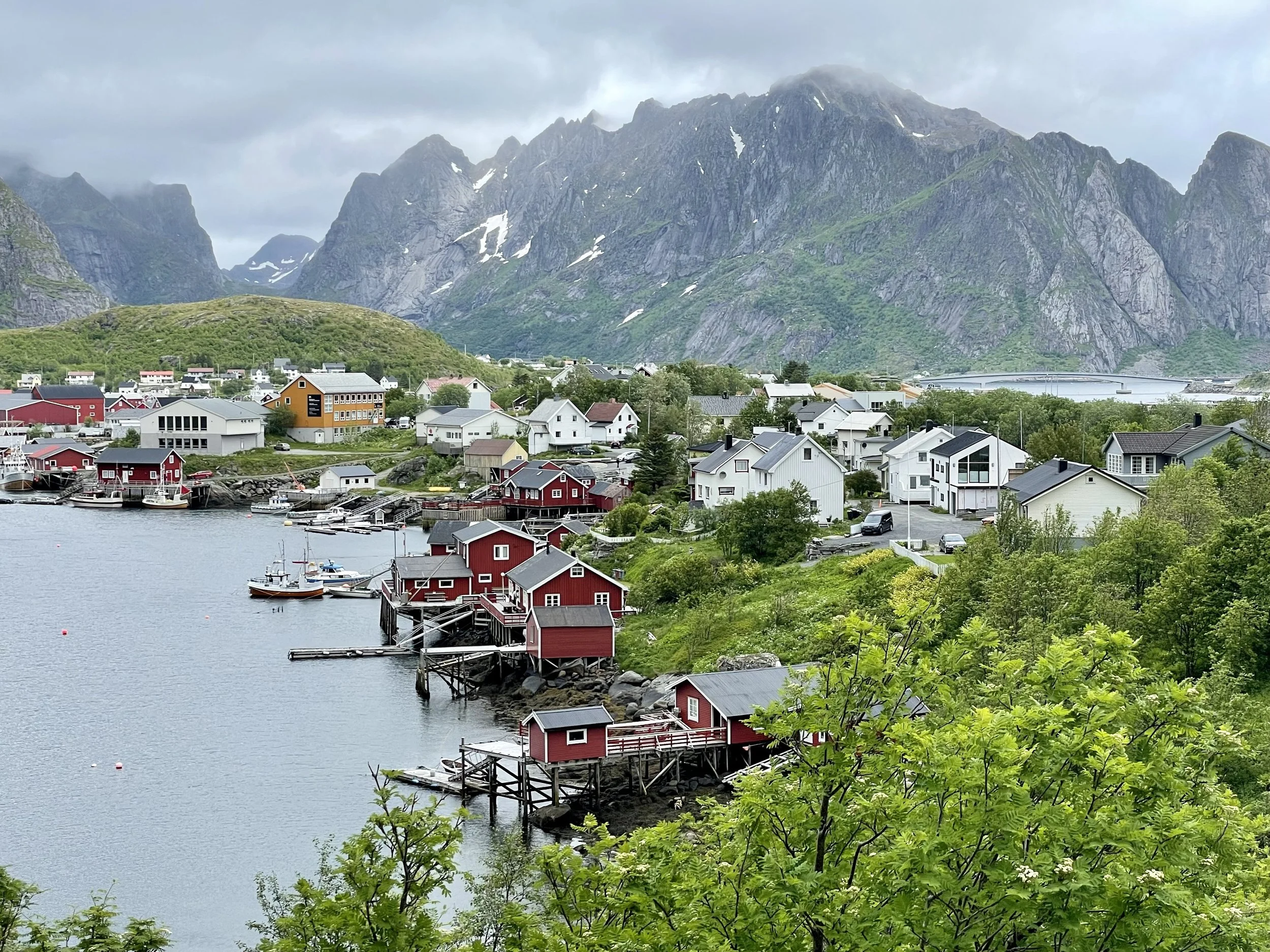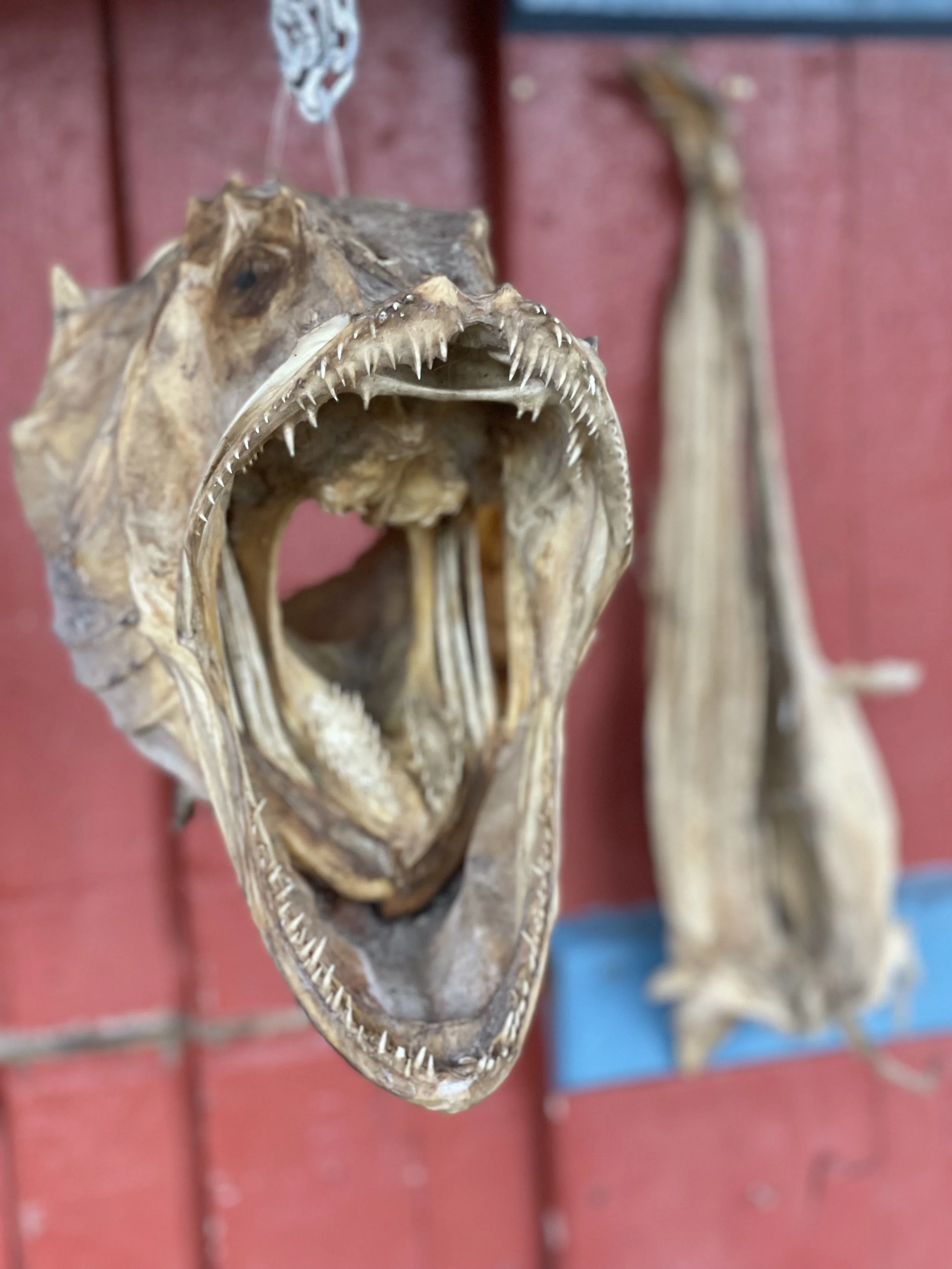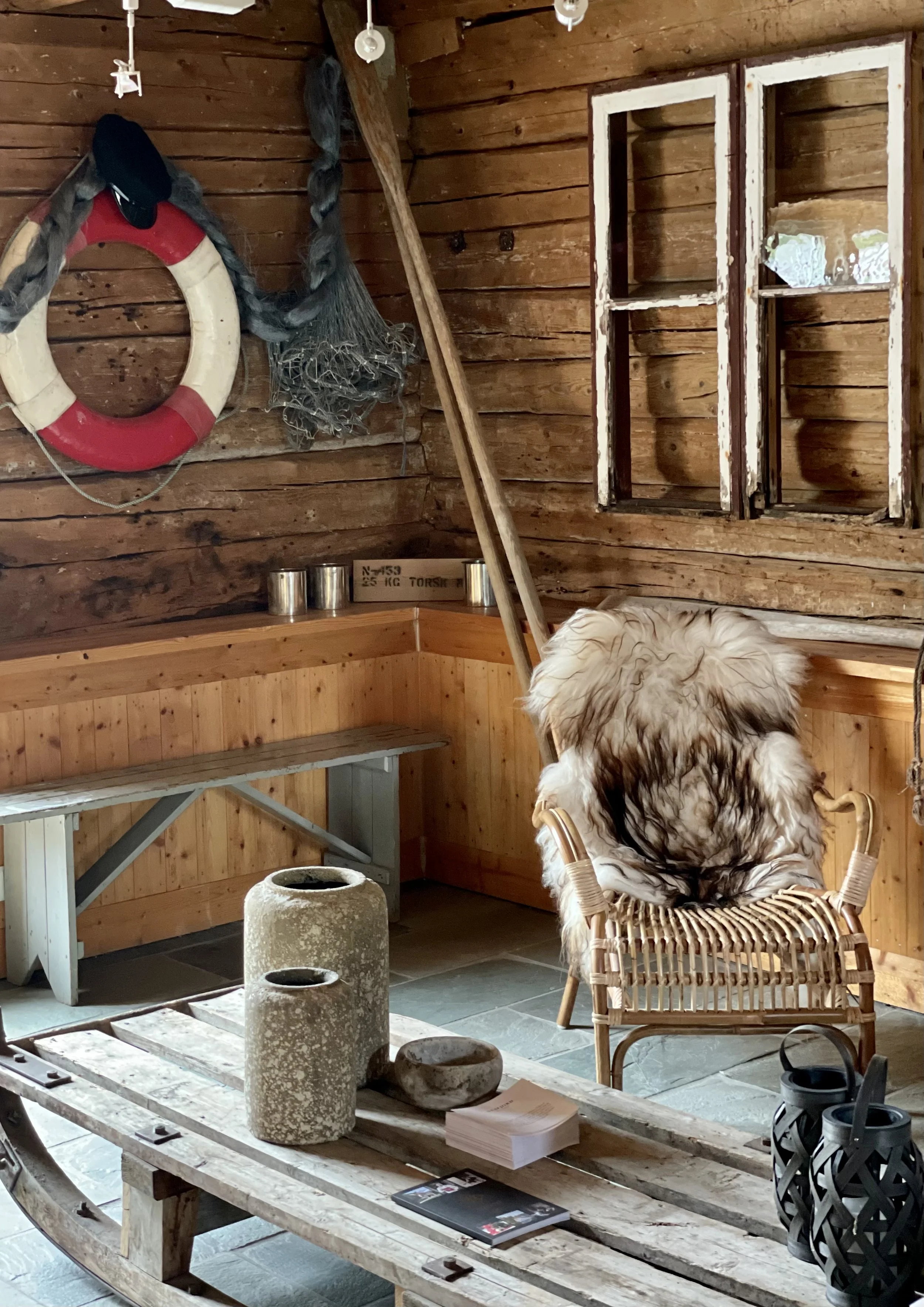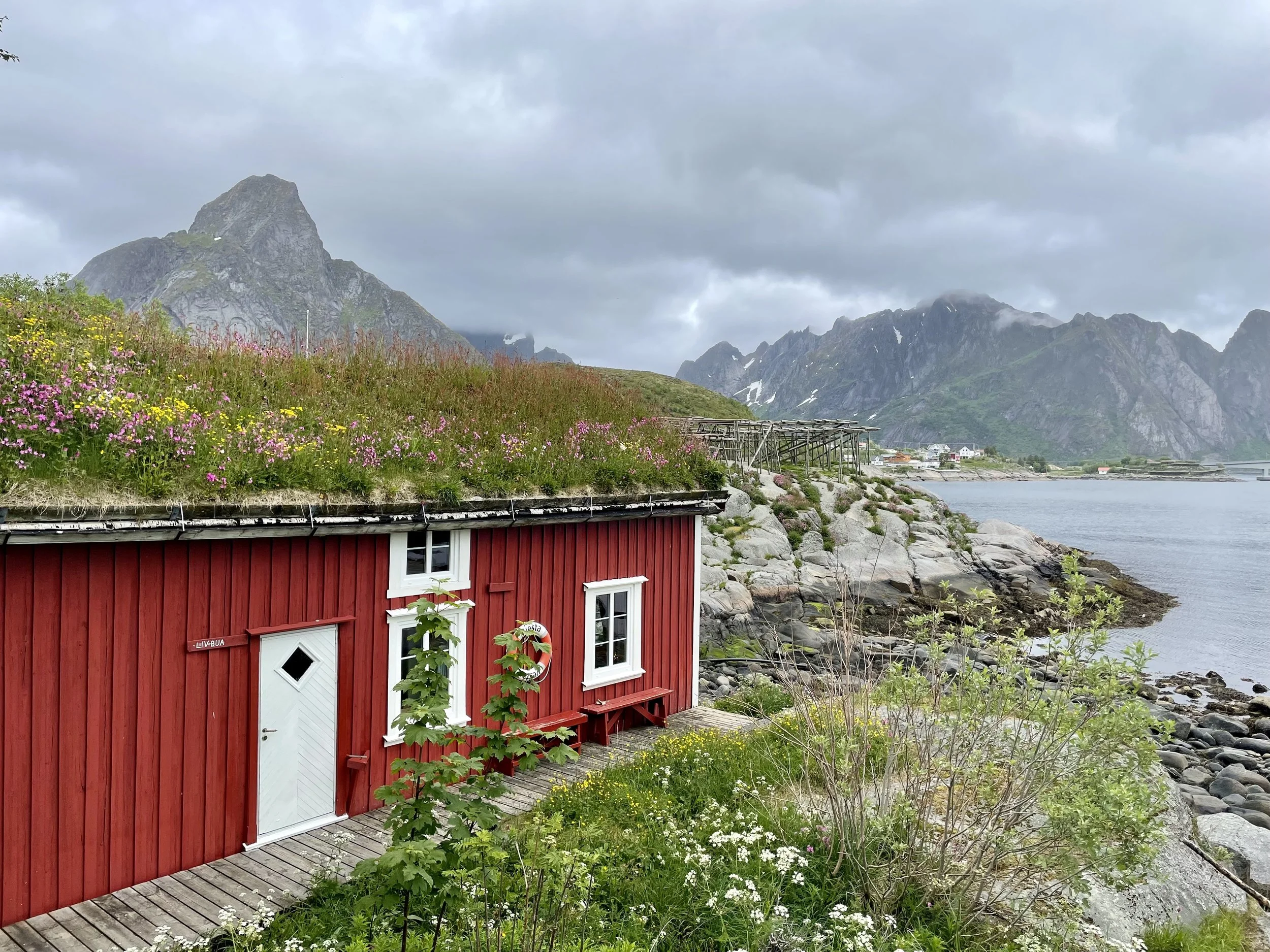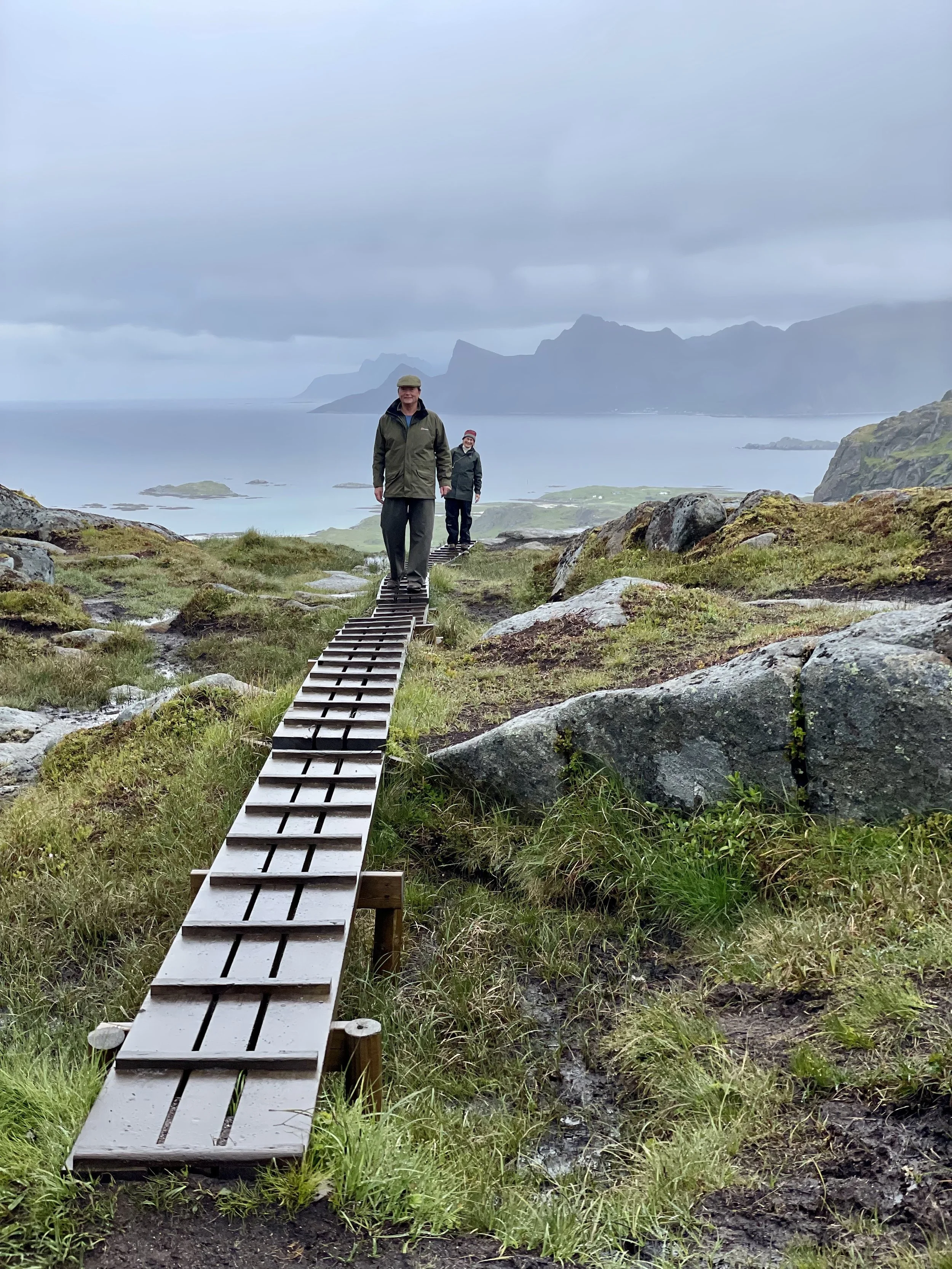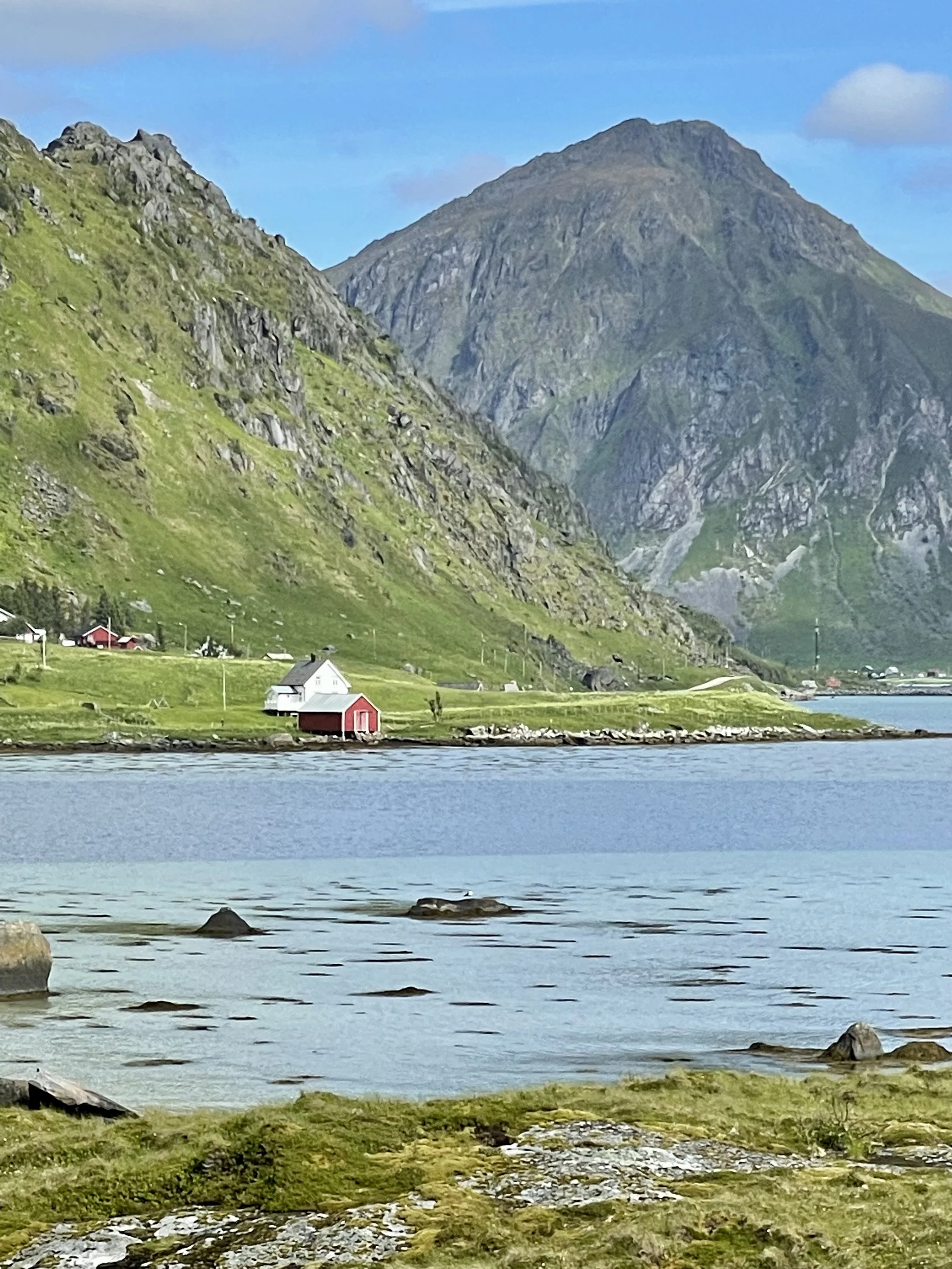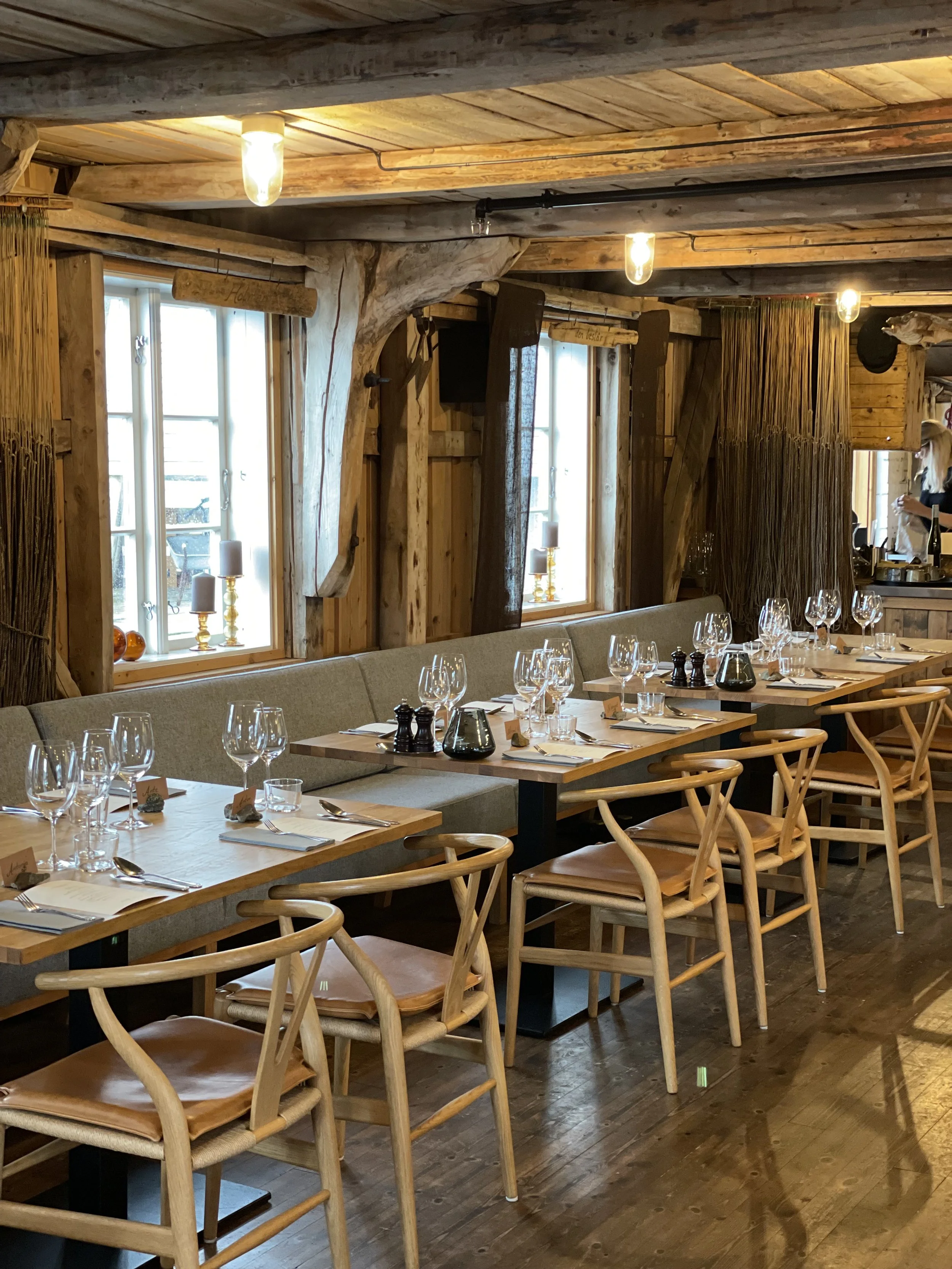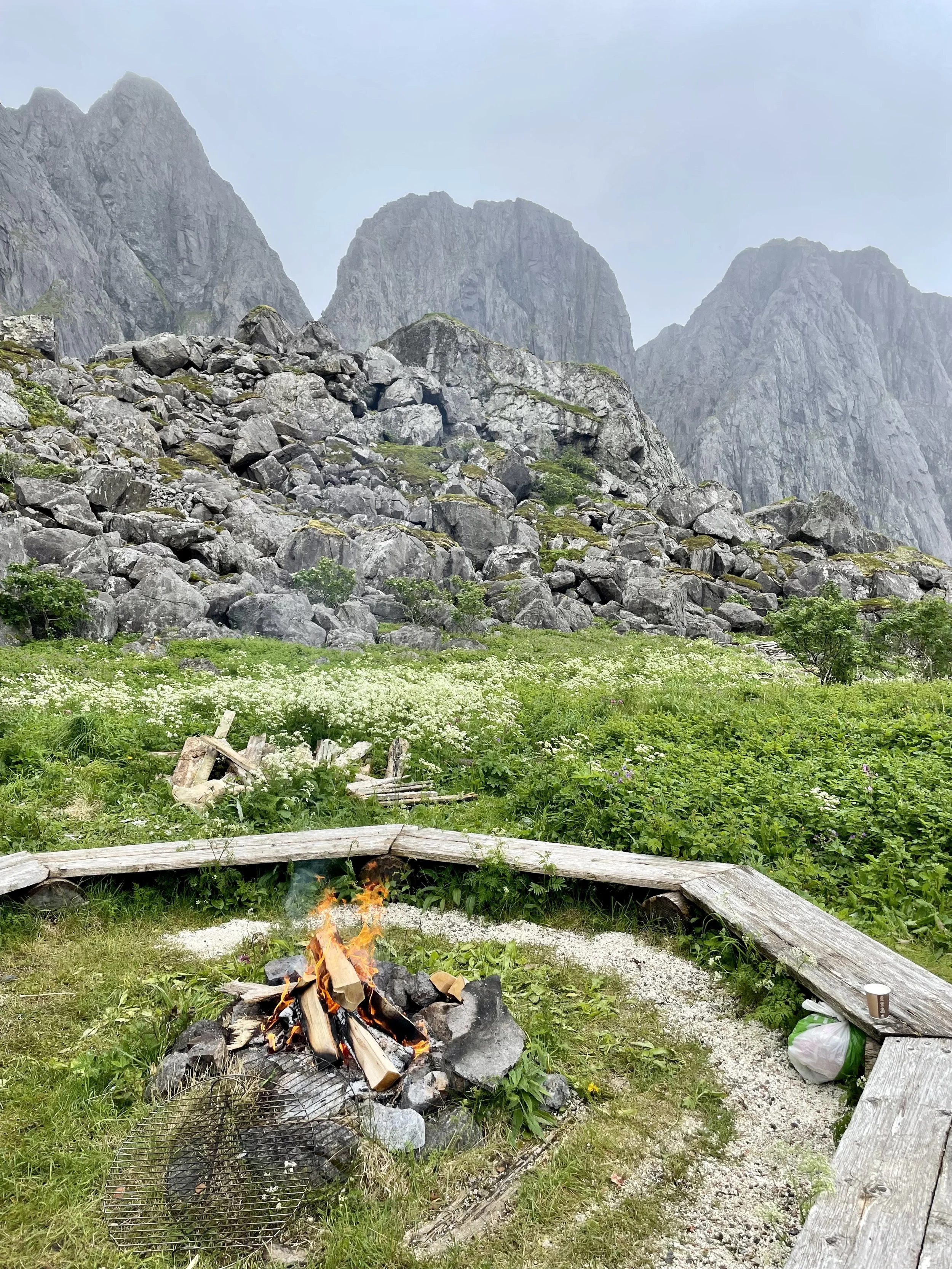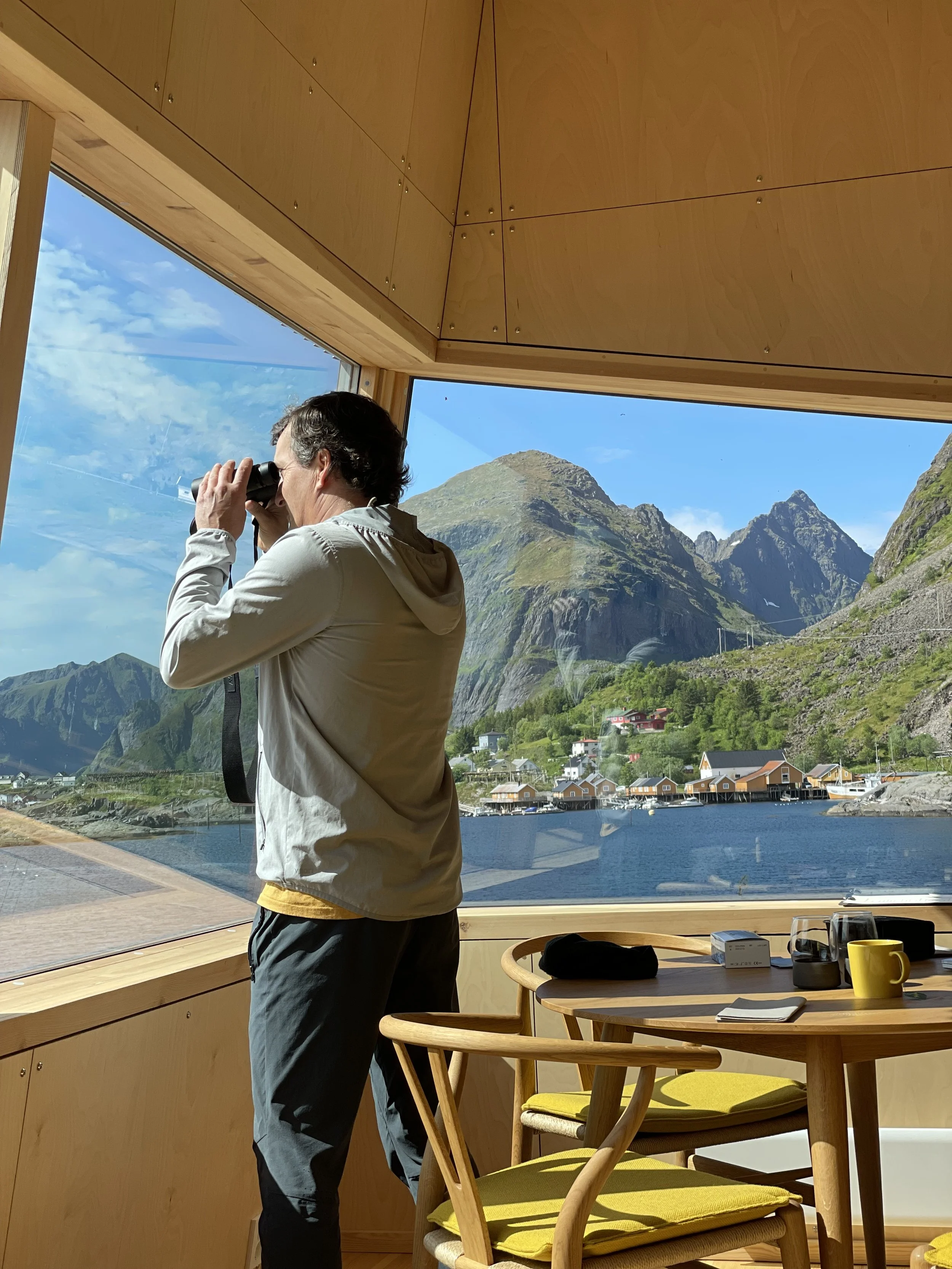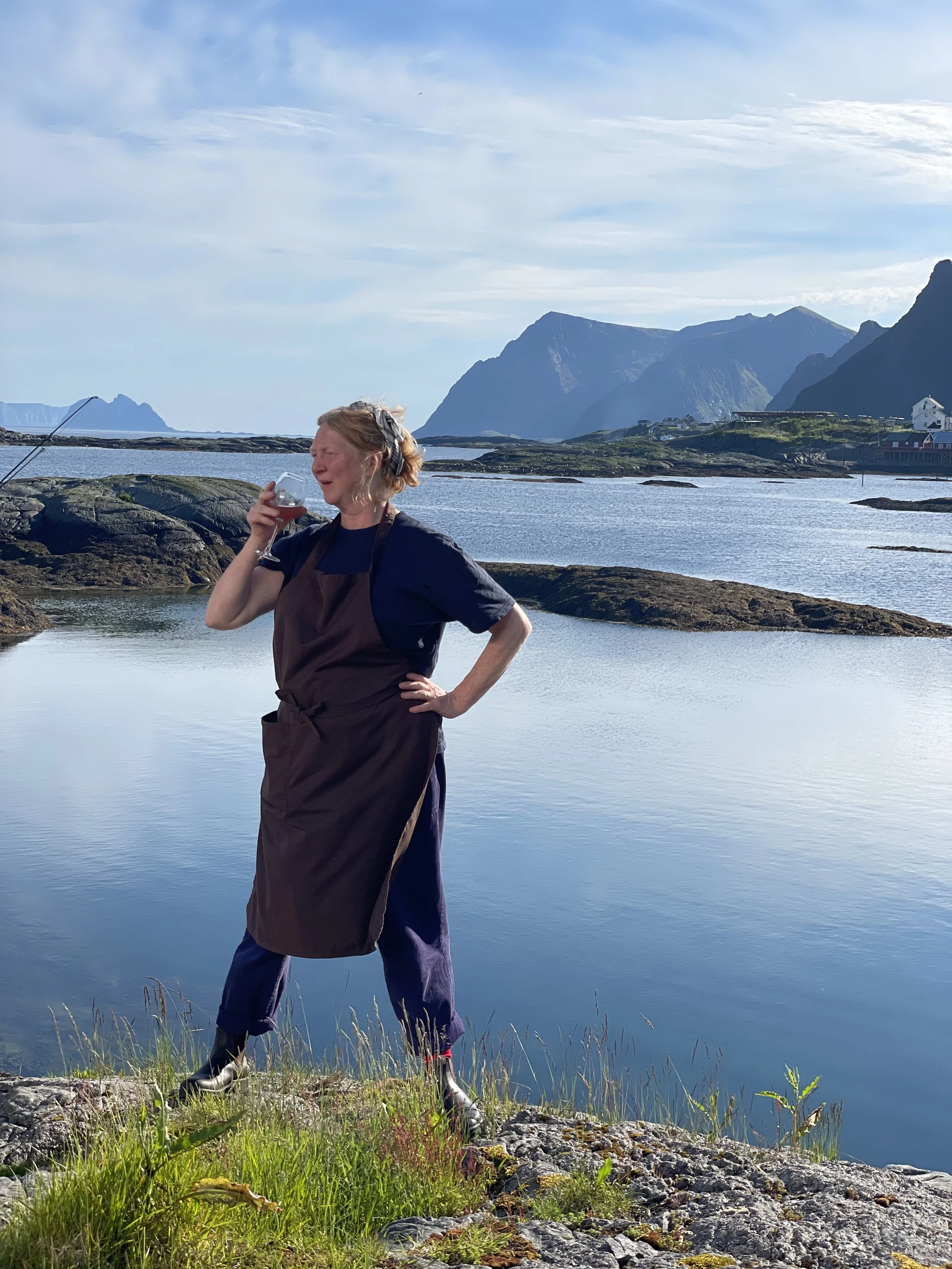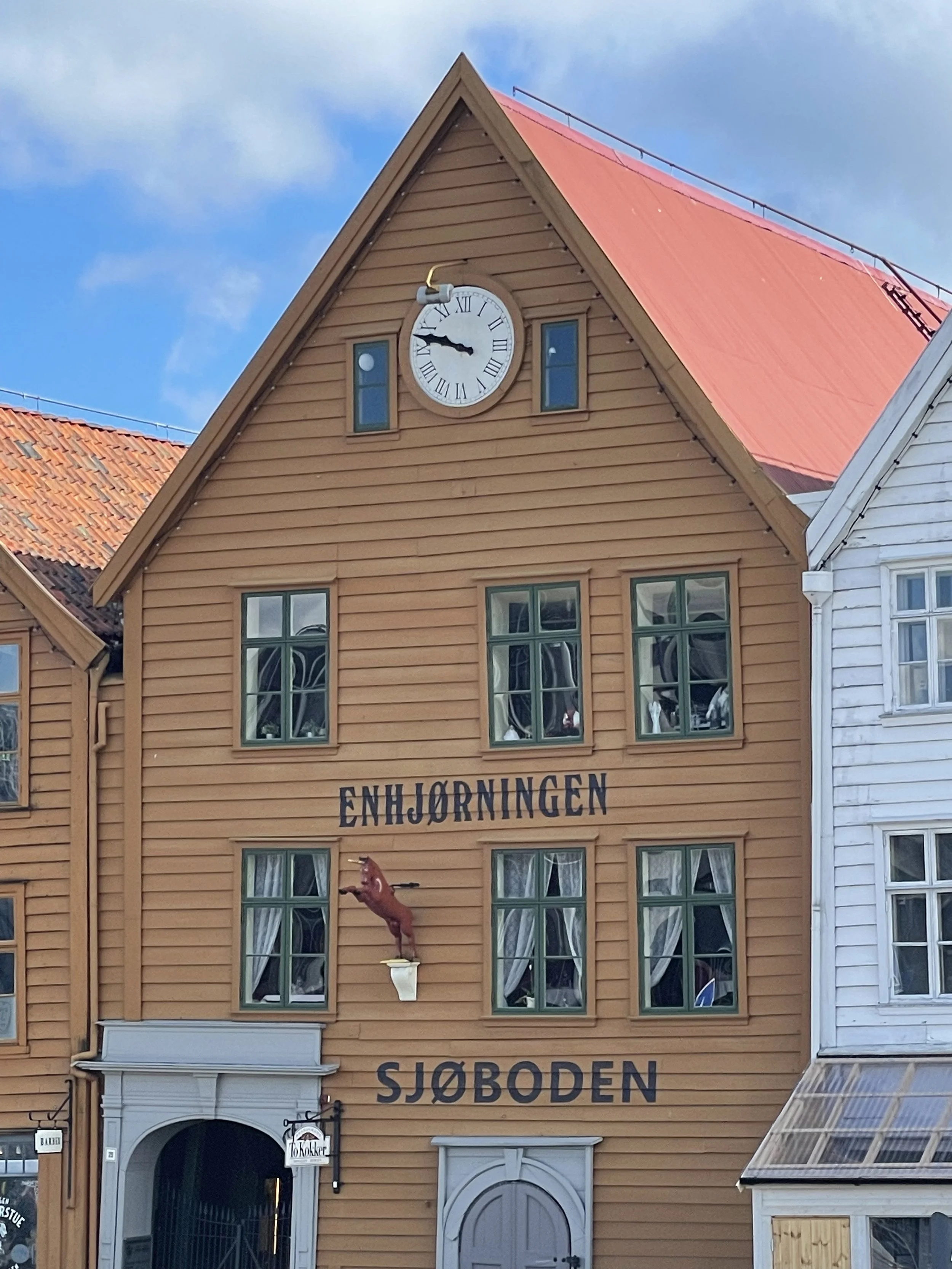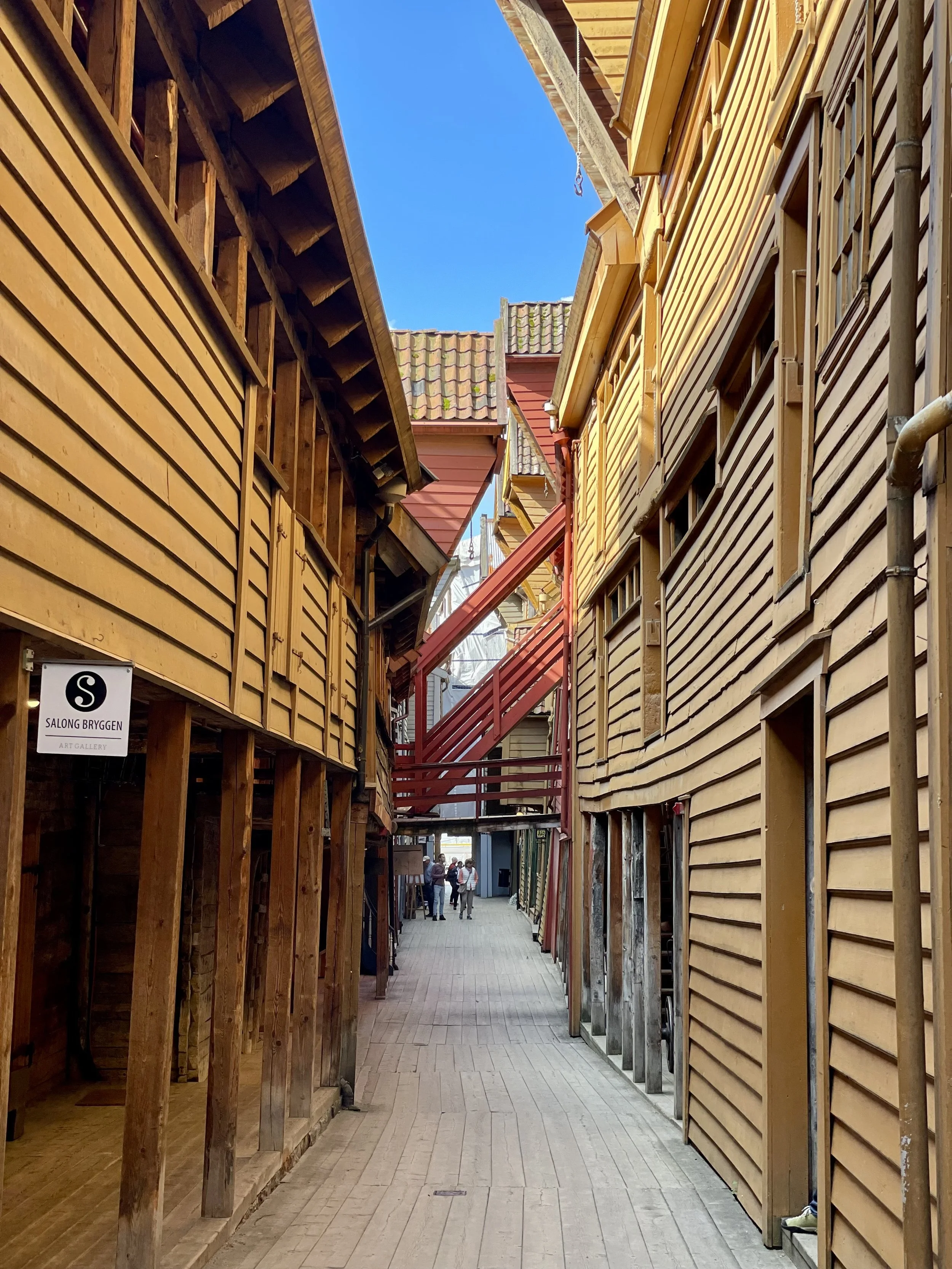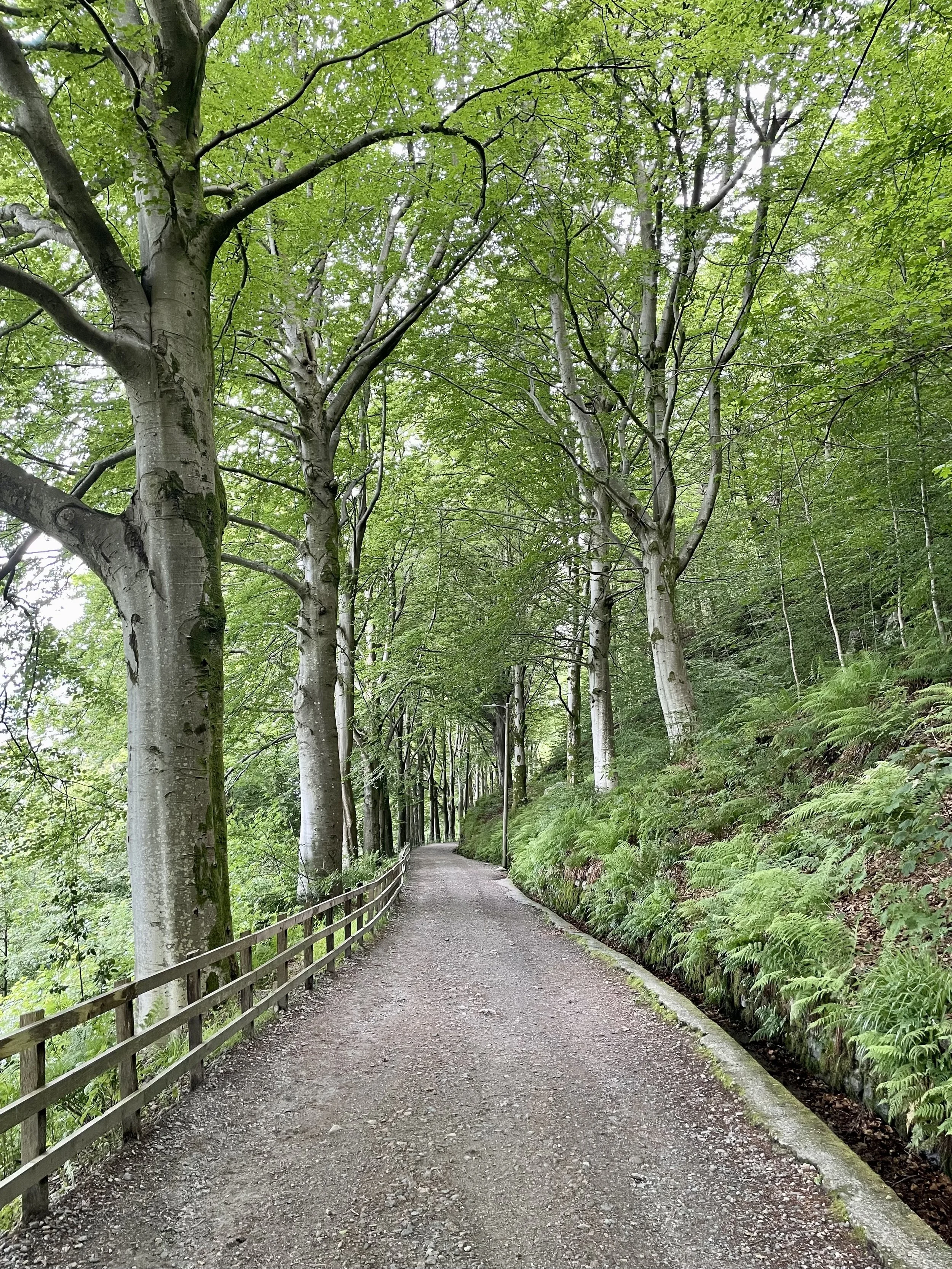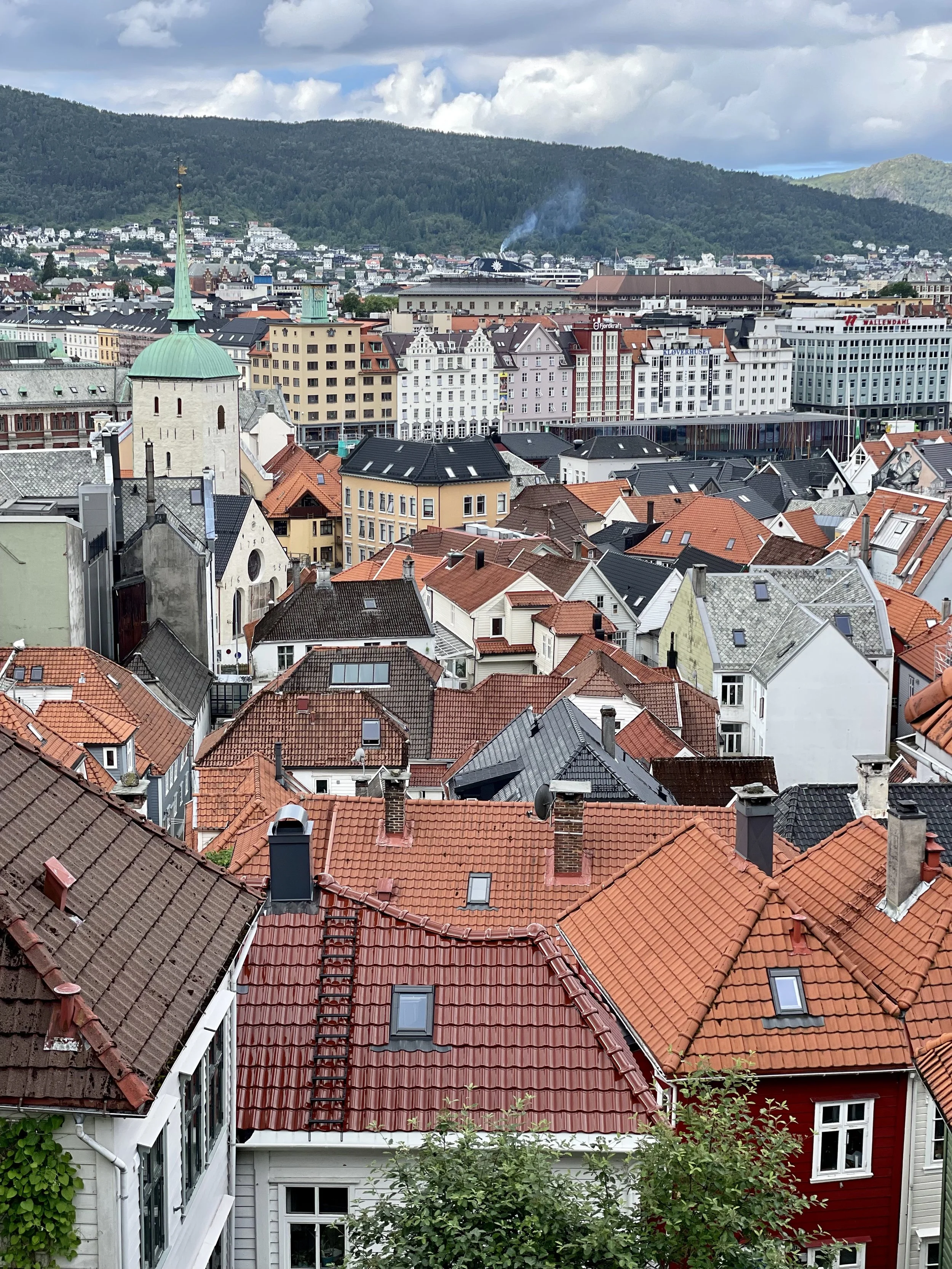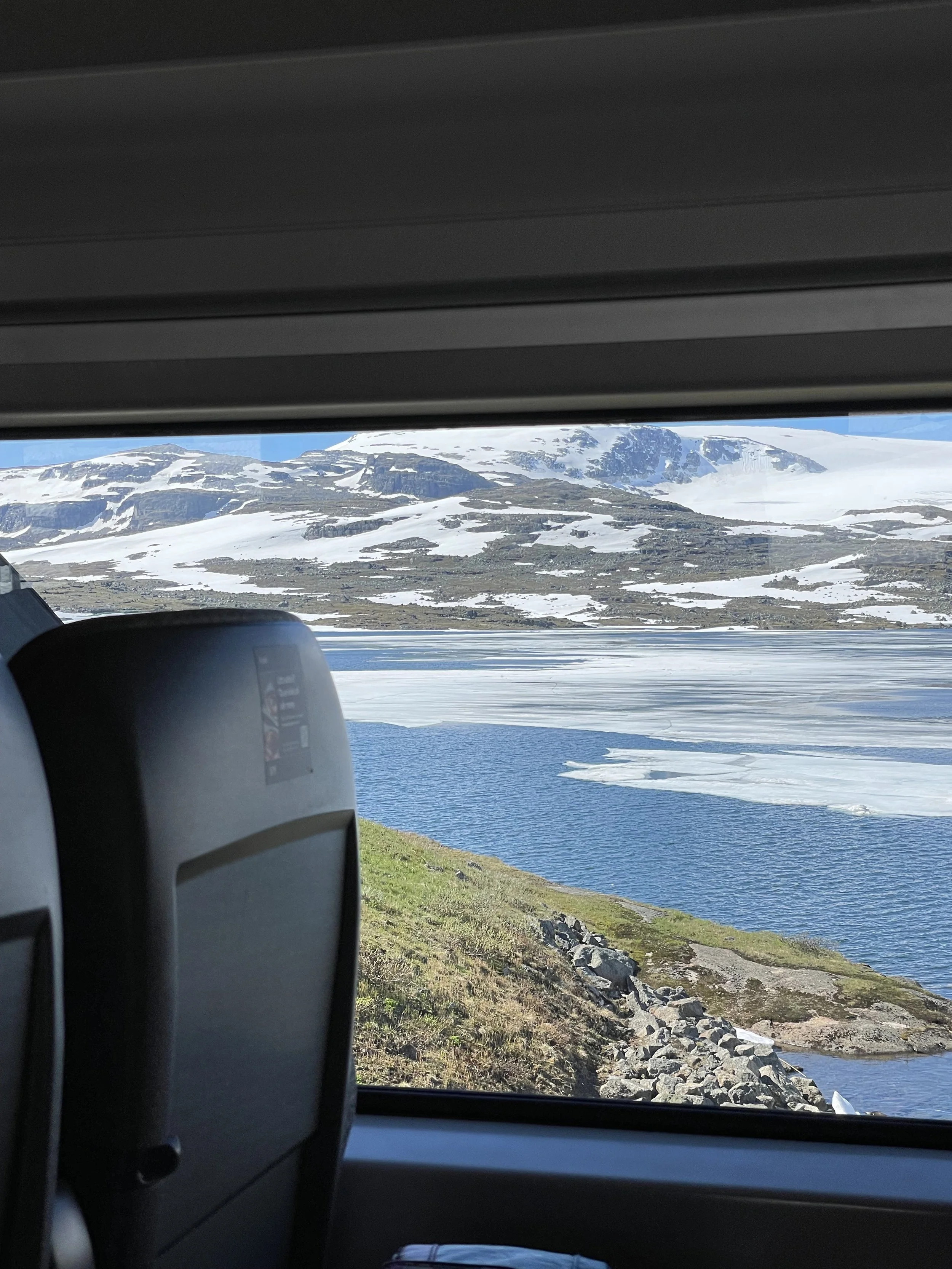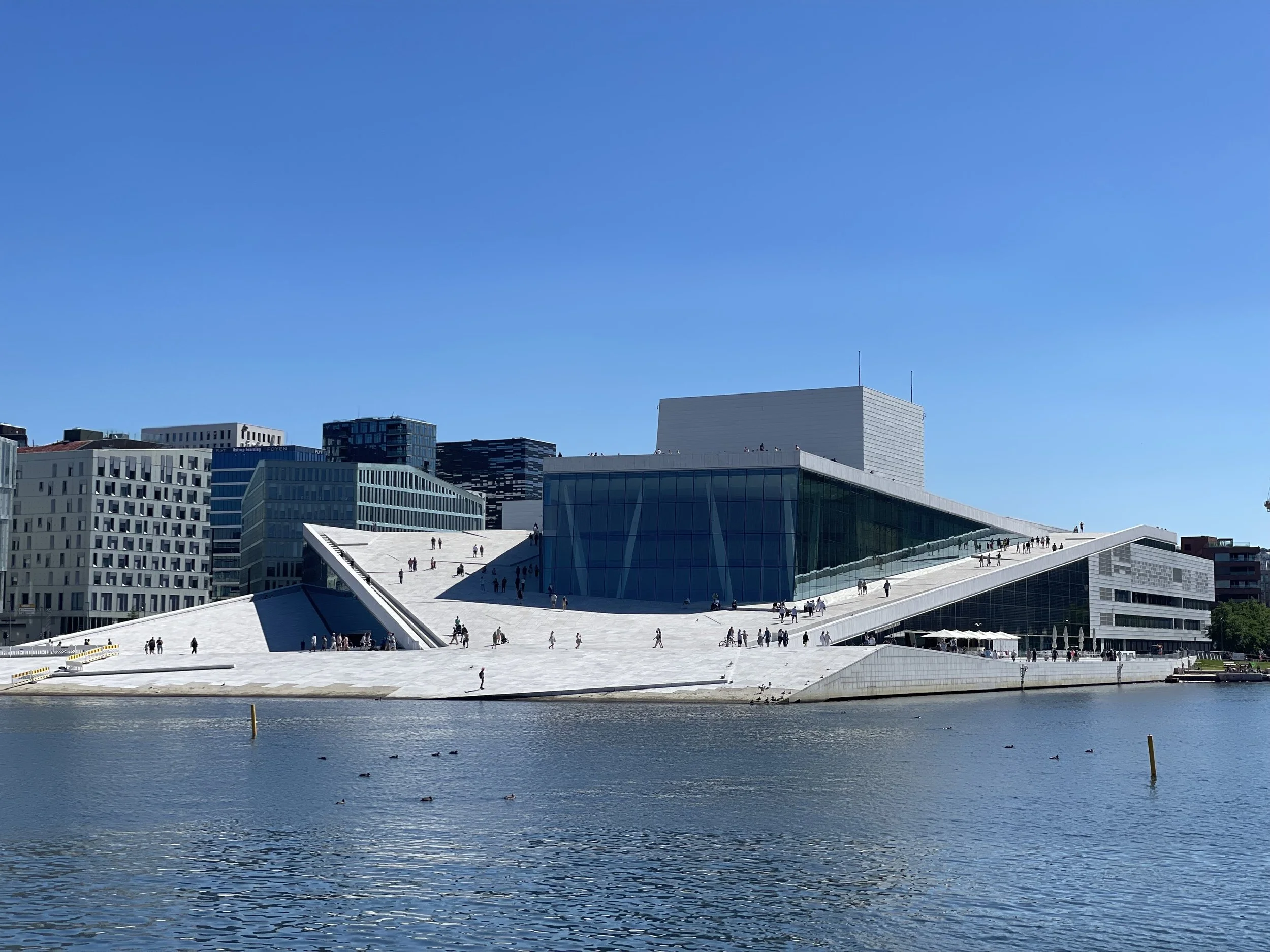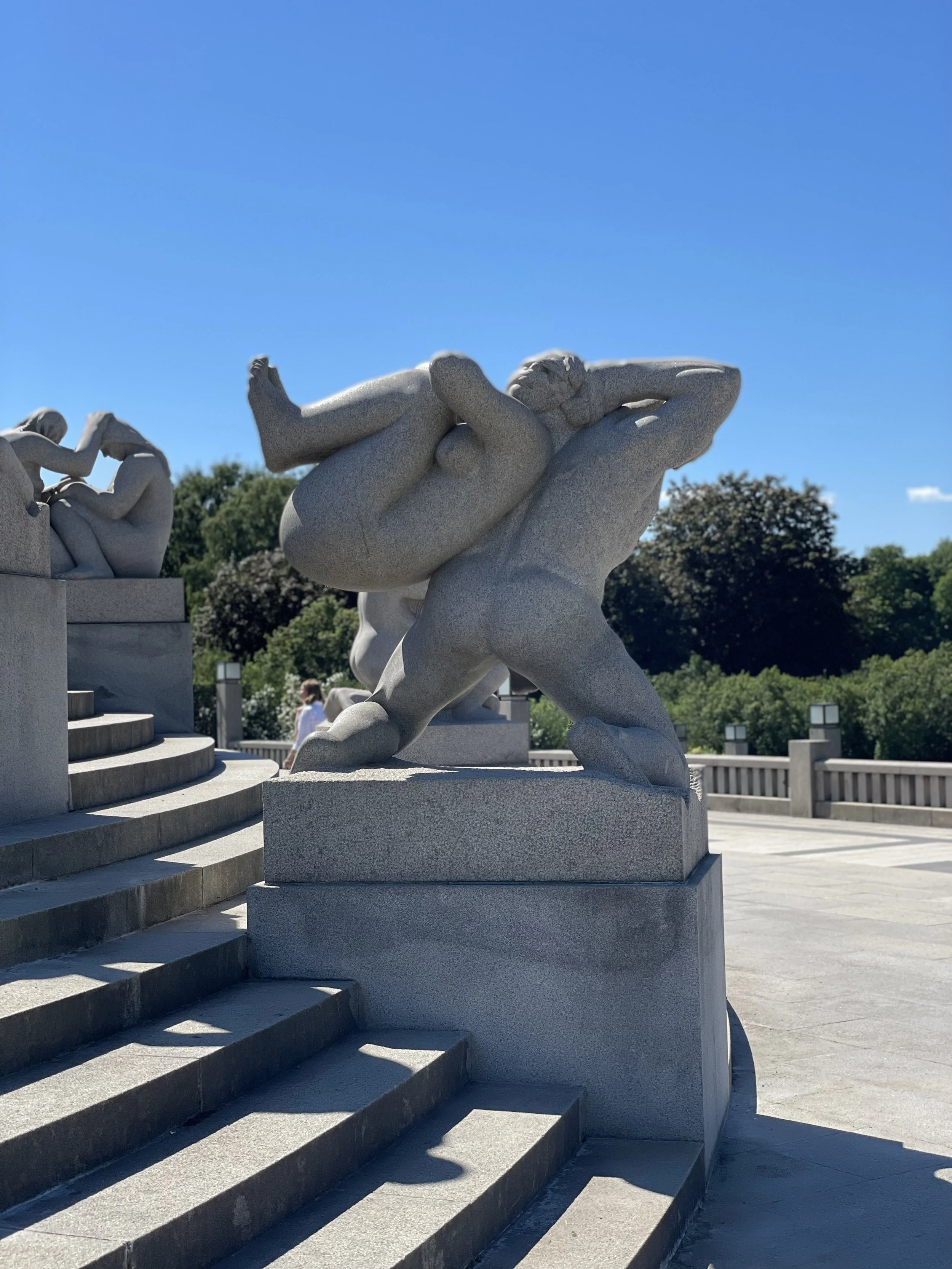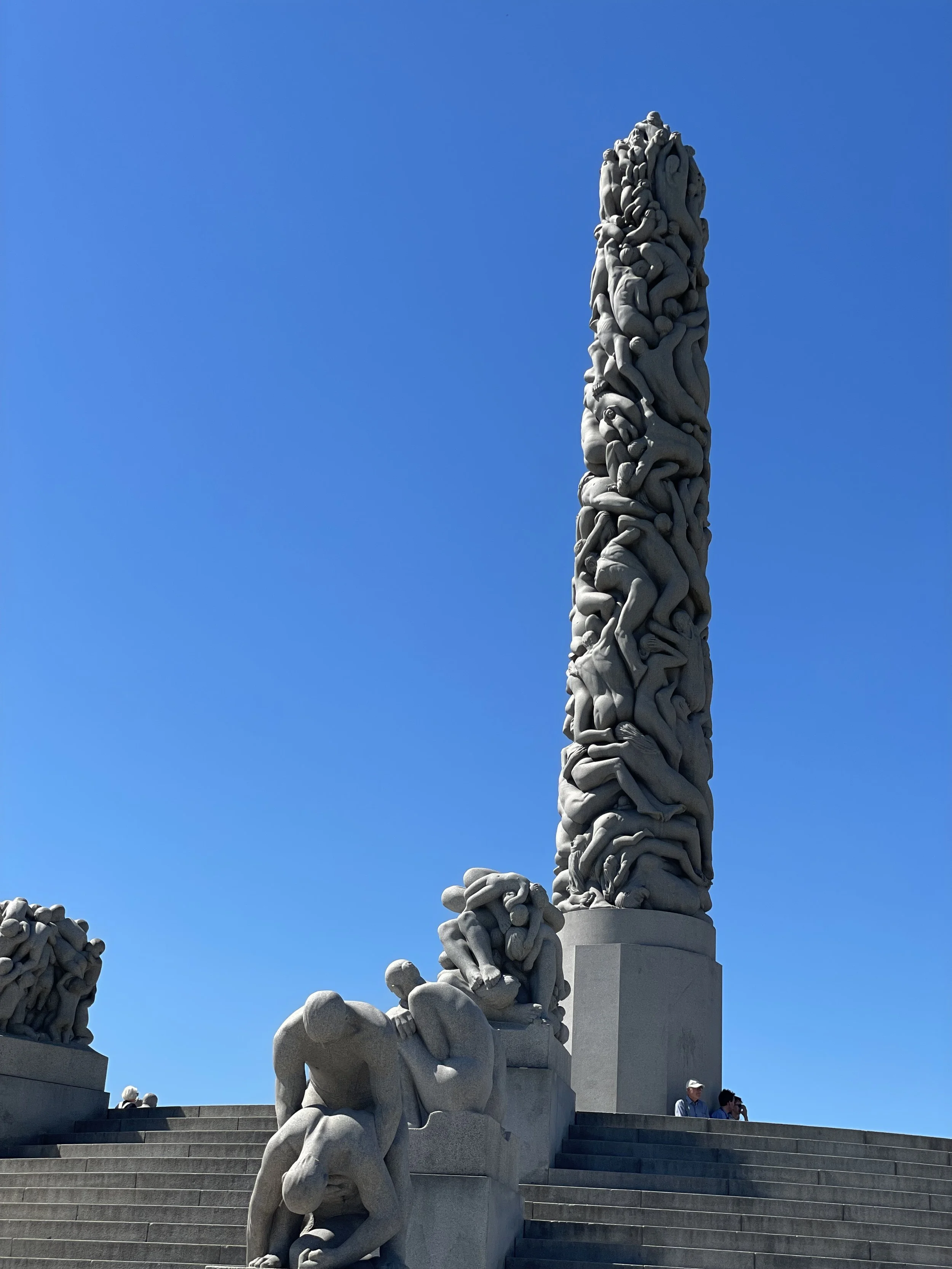A group of friends with my husband and I went on a travesía, the Spanish word for a long crossing or journey through a wide expanse of terrain, that covered over 300 miles of a spectacular high-altitude route between the Atacama desert in Chile and the Uyuni Salt Flats in Bolivia.
The adventure-hotel brand Explora launched this travesía, which makes this notoriously uncomfortable backpacker circuit much more comfortable than it has ever been. We were led over all-dirt roads in pretty new Land Cruisers with padded leather seats and stayed at a series of beautiful lodges, previously unheard of at these altitudes.
That all said, the journey was still physically grueling. The winds were intense, as was the sun, the temperatures drop immensely at night, it was bone dry and that combined with the high altitude makes for a very inhospitable environment if you’re not used to it. And sleeping was a challenge for us all, as it normally is when you are this high above sea level. The logistics were equally wild: food needs to be brought in from hours and hours away, and our cars had to carry four drums of fuel on the roof since there were no gas stations along the way. Travelers typically linger no more than a night or two in this area, but we spent seven nights above 12,000 feet!!
Other than our group, we rarely saw other human beings around, and it felt like we were exploring the surface of another planet. It’s unlike anything I’ve ever seen in my life!
ATACAMA – 3 NIGHTS
San Pedro de Atacama is considered a gateway to the Atacama desert and the Altiplano, and located at just 8,000 feet above sea level, it was our base camp to start getting us acclimated to the altitude. Our guide took us on daily hikes to higher altitudes, to get our bodies more used to it (that combined with Diamox, that we all took to avoid altitude sickness).
The Atacama desert is beautiful, and the colors are out of a painting. This was our second time visiting the Atacama (first time in 2012), and aside from the huge increase in visitors, it was as spectacular as we remembered.
RAMADITAS – 2 NIGHTS
We traveled east into Bolivia at the Hito Cajón Pass for a 146-mile drive to Explora’s Ramaditas Mountain Lodge, a four-room eco-shelter at 13,370 feet. Ramaditas comprises of two long rust color rectangular containers on stilts by the edge of a salt lake - one containing the guest rooms and the other a large common area. The interior of the buildings was luxurious while minimally decorated so it did not detract from what lies beyond its walls – nature - the star of the show!
Along the way we saw incredible landscapes, including Laguna Colorada, which is a red-colored Salt Lake filled with pink flamingos. We also saw a green salt lake and a white one. The different colors are due to the minerals found in each of these lakes. The Sol de Mañana Geysers were another stop, and the views of the Licancabur and Sairecabur volcanoes punctuated the horizon.
The next day we got to go on a full-day hike at YARDANGS. We walked through an area with wetlands until reaching impressive hoodoo-like formations. We got to see many birds, vicuñas and vizcachas along the way. While the hike was relatively flat, at 15,000 feet it was incredibly demanding for us, while rewarding at the same time. The Explora team prepared a beautiful lunch that we got to eat at the end of our hike, while looking at the beautiful landscape we just explored.
CHITUCA – 2 NIGHTS
On our way to Chituca we noticed the transition from a solitary and extensive Andean expanse to a slightly more friendly geography, which allows for some small towns. We could also see a bit more vegetation and actively worked fields, a lot of them being quinoa.
Along the way we crossed the lagoons of the Altiplano (Honda, Char Kota, Hedionda), with different views to the volcanoes. We continued until we got to the Turquiri Lagoon with a large concentration of birds. The flamingos put on quite a spectacle for us and I probably had 400 pictures of them alone!
We walked bordering a grazing wetland for llamas and goats and had lunch in the heights of the Turquiri Lagoon with broad views to the Altiplano.
The Chituca lodge looked exactly like Ramaditas, but the buildings were dark green and it sat at the edge of an expanse of Cardon cacti.
JIRIRA, UYUNI – 3 NIGHTS
It’s otherworldly the moment you arrive at the Slat Flat, with it’s staggering expanse of 4,086 square miles (more than twice the size of Delaware). It’s an ocean of a pink-hued ivory color and so bright that it’s hard to open your eyes without sunglasses. As you walk across it, it definitely feels like you are walking on salt and it cracks a bit like broken glass. It is absolutely stunning!
We stopped at the Pescado Island in the middle of the Salt Flat, a formation with typical Altiplano vegetation, for a hike to its top where we were able to admire the immensity of our surroundings. Once we hiked down, our team had setup a beautiful lunch in the middle of the Salt Flat, and it is one of the most memorable moments for me of this trip.
Our last stop was the Jirira lodge, atop of a hill overlooking the Salt Flat, and also a replica of the past two lodges, but this one in a dark grey color. We went for walks in the area, biked on the Salt Flats and on our last day hiked to the Tunupa Volcano viewpoint to admire all its colors and stunning views. It was a great way to wrap up this wonderful adventure. The next day we flew to La Paz and I will have more on that in a different post.


